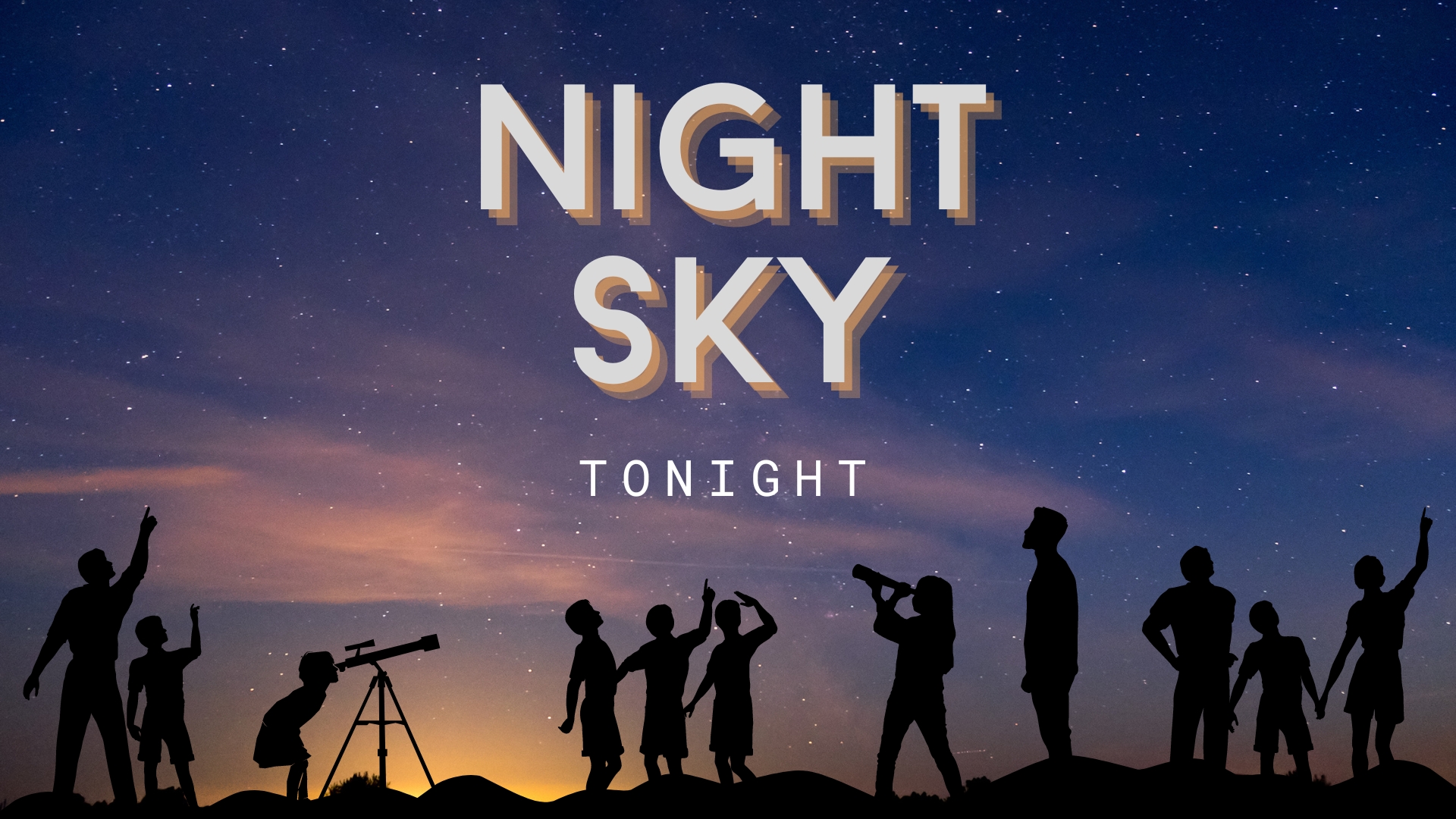
There is so much to see in the night sky tonight, here's what you can look forward to.
A good telescope or pair of binoculars will help you see some of the night sky’s fainter objects. However, the unaided eye is enough to learn its stars and constellations, watch the moon, experience meteor showers and see satellites whizz across the night sky.
Read on to find out what you can see in the night sky tonight, from planetary meet-ups to the ever-changing moon phases, meteor showers and more. Want to look even further ahead? Check out our monthly night sky guide our brightest planets guide also tells you what planets are visible and when this month.
Track the ISS | Starlink satellite train | Moon viewing guide
Sign up for our skywatching newsletter "Night Sky This Week" to discover this week's must-see night sky events, moon phases, and stunning astrophotos.
WEDNESDAY, AUG. 7 — CRESCENT MOON, VENUS AND SPICA (AFTER SUNSET)
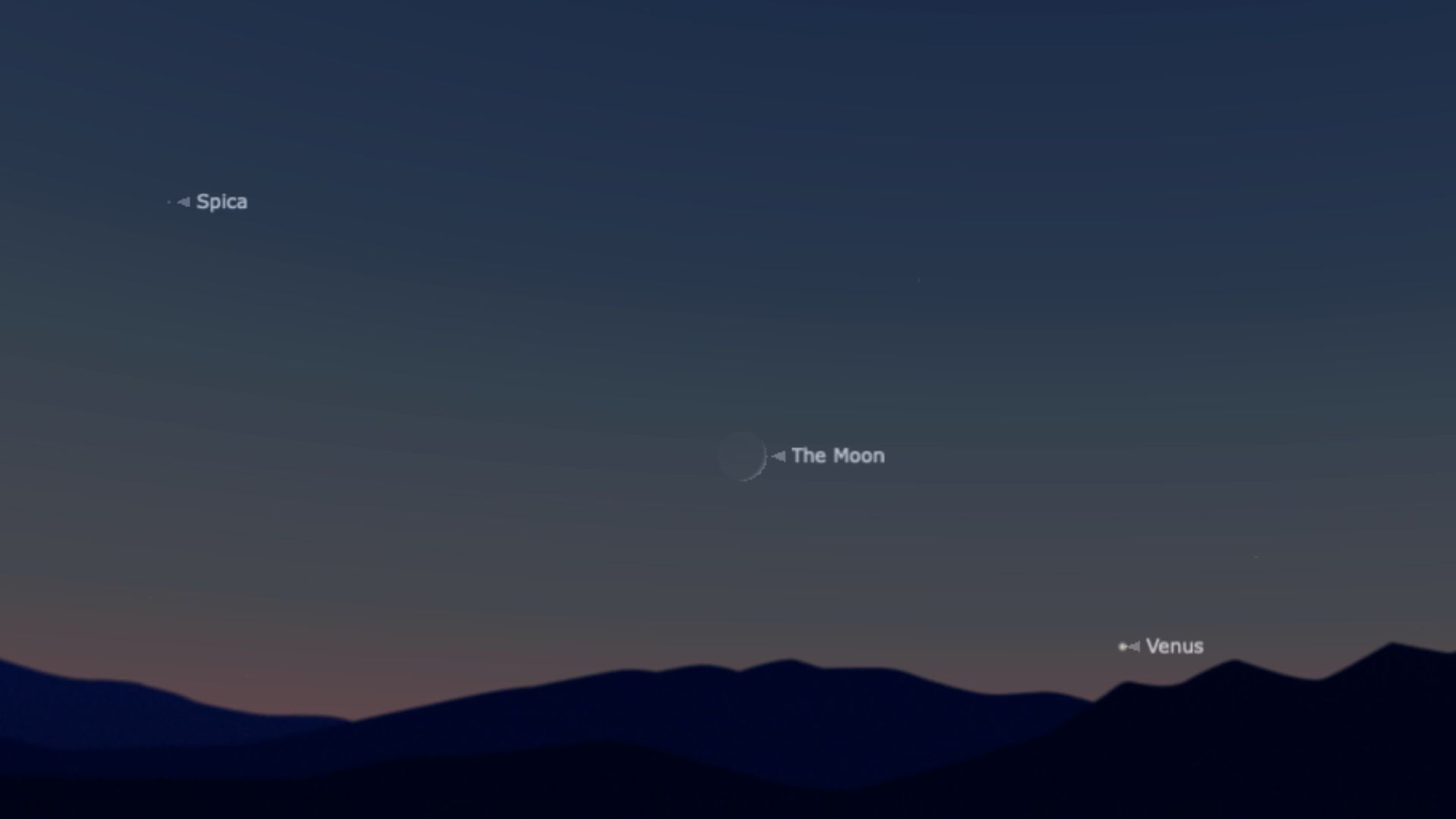
A brighter, more obvious crescent moon will tonight be positioned about halfway between Venus, to its lower right, and bright star Spica, to its upper left. One of the 20 brightest stars in the night sky, Spica is the brightest star in the constellation Virgo. -- Jamie Carter
THURSDAY, AUG. 8 — CRESCENT MOON, VENUS AND SPICA (AFTER SUNSET)

Here's another chance to see the crescent moon dominating the post-sunset evening sky, with Venus shining stubbornly close to the western horizon. Look at the moon's dark left side. Can you make out any details? Since no sunlight shines directly on it, it should be dark, right?
The light you can see is called "Planet-shine," "Earthshine," or "Da Vinci Glow." It's sunlight shining on Earth and reflecting onto the moon. It's easiest to see in a crescent moon a few days old. -- Jamie Carter
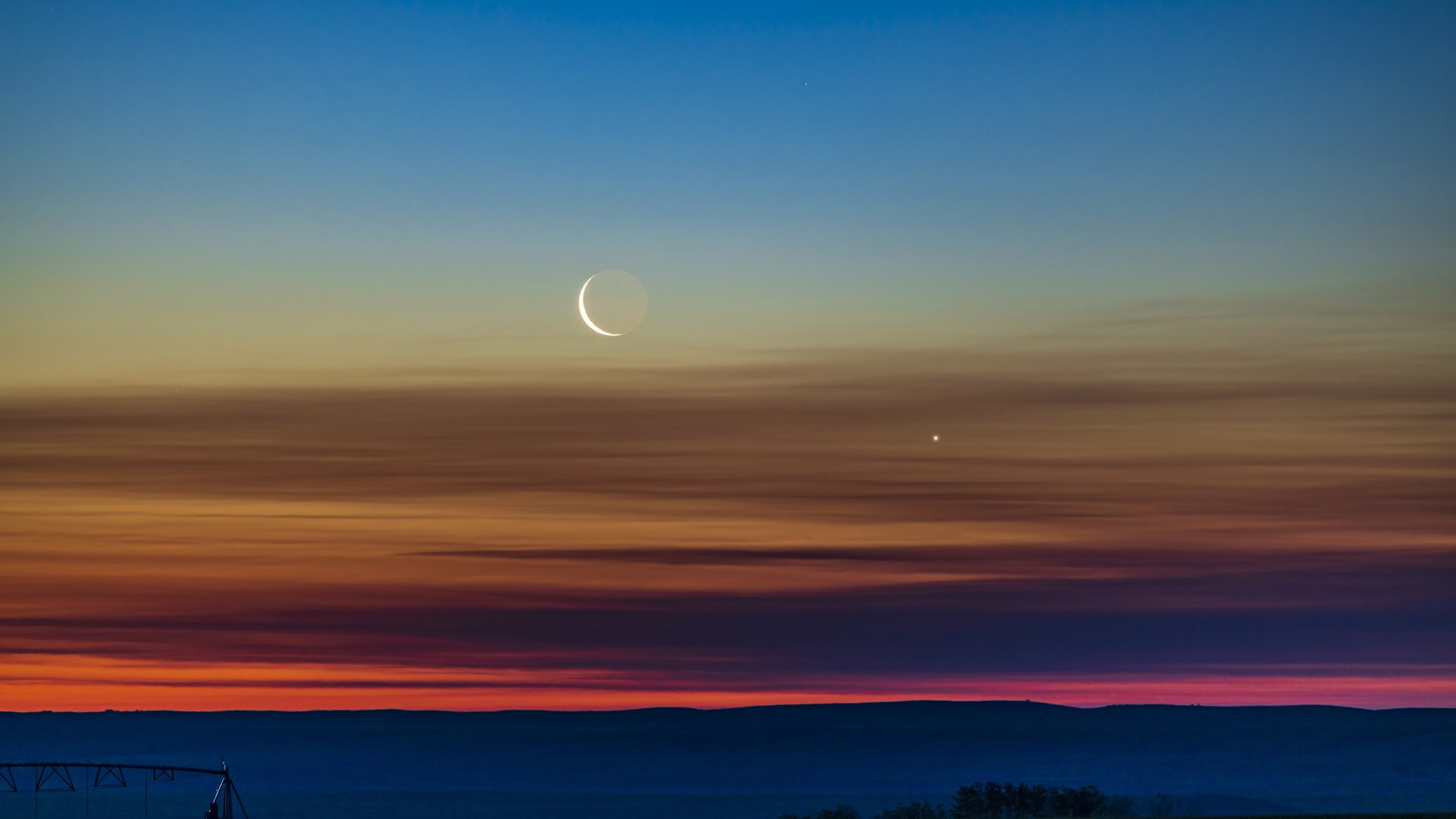
FRIDAY, AUG. 9 — SATURDAY, AUGUST 10 - CRESCENT MOON, SPICA, ANTARES AND THE MILKY WAY (AFTER SUNSET)
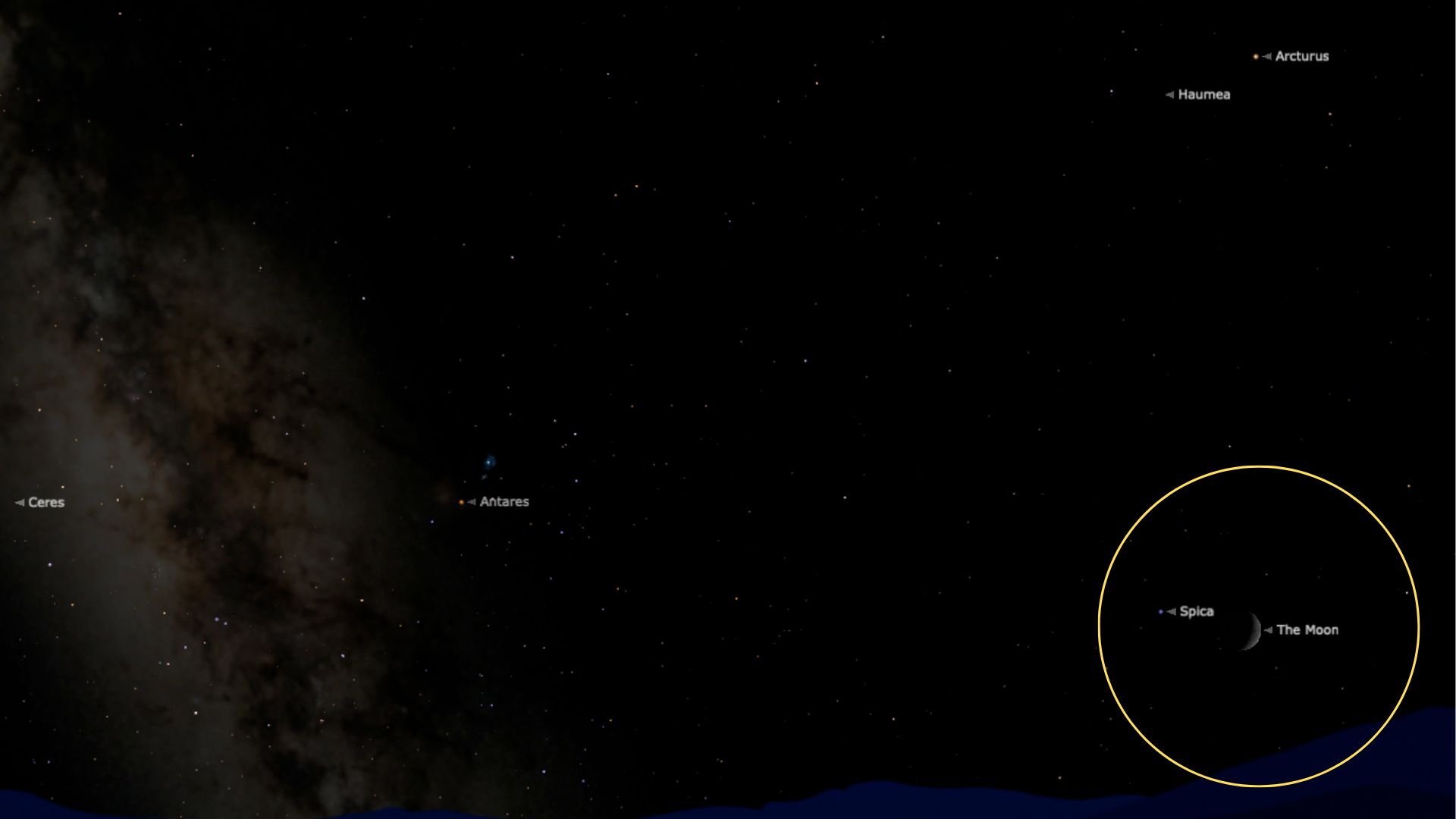
About a quarter of the moon's Earth-facing side is now lit by the sun. Across two nights, it will appear on either side of Spica. Arcturus in the constellation Boötes will appear directly above the pair, while to the south, the Milky Way will rise after dark. However, to see the arc of our galaxy, you'll need to be well away from light pollution. -- Jamie Carter
SUNDAY, AUG. 11 — MONDAY, AUG. 12: PERSEID METEORS PEAK (PRE-DAWN)
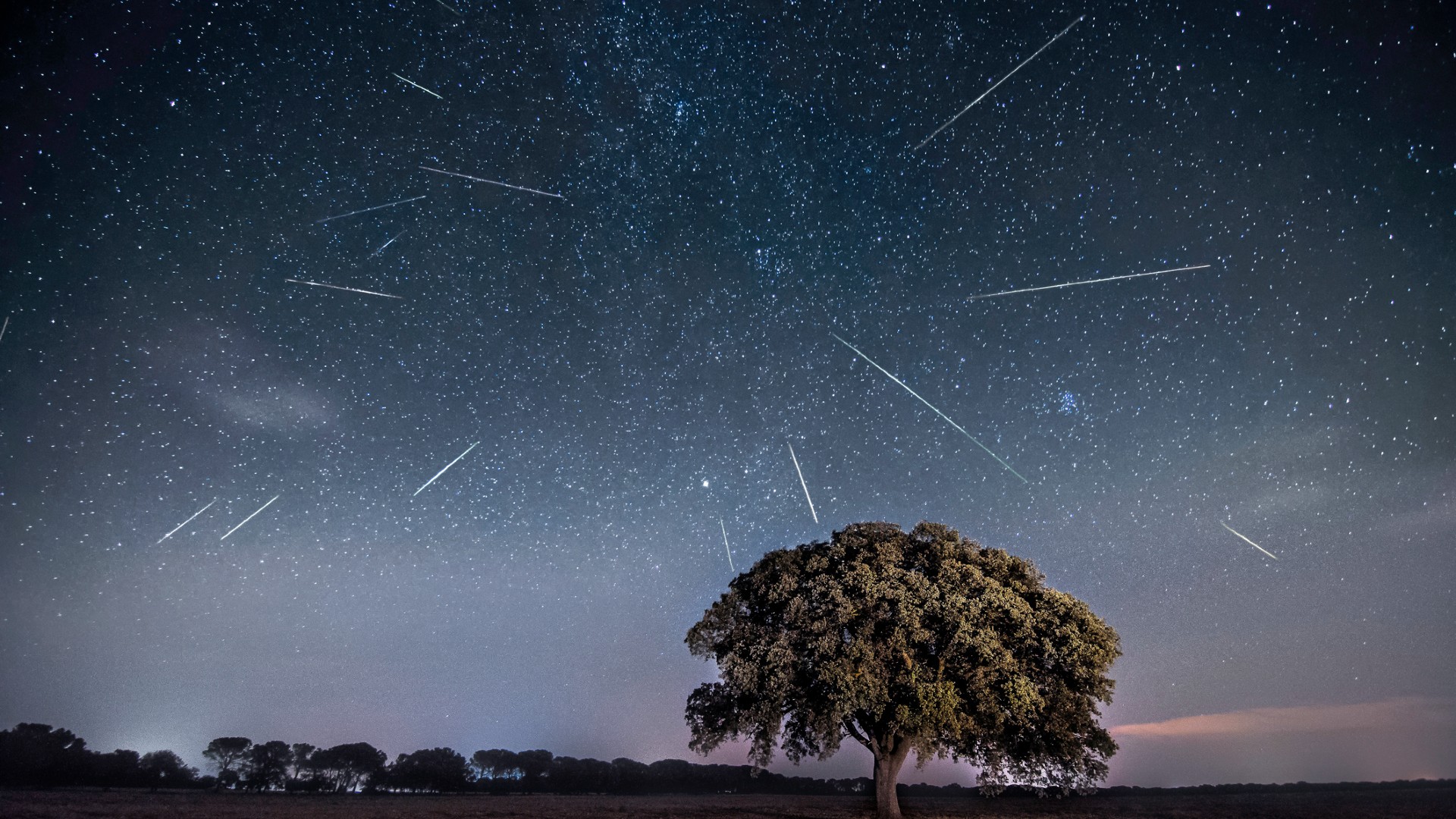
There's no better time to see shooting stars from the northern hemisphere than tonight. At its peak, the annual Perseid meteor shower can produce around 60 meteors per hour visible in the night sky. The radiant point (where the meteors will appear to emanate from) will be the constellation Perseus, which will rise in the northeastern sky around midnight.
Meteor showers can often be marred by strong moonlight, but not so the Perseids this year since the First Quarter Moon will set around midnight. Look skywards during the early hours of Monday for the best chance of shooting stars, though light pollution and the clarity of the sky will make a huge difference. If you can, get away from light pollution — at least 40 miles from a major urban area is wise — but wherever you watch from, make sure you don’t have any artificial lights in your line of sight. Sit back, relax in a lawn chair, keep warm, and take regular breaks. Never look at your smartphone; its white light will ruin your eyes' dark adaption, which takes about 20 minutes to cultivate and just a single second of white light to ruin.
If you cannot look for Perseids in person, you can watch them live online here on Space.com courtesy of the Virtual Telescope Project. The first livestream will begin at 9 p.m. EDT on Aug. 11 (0100 GMT on Aug. 12,) the second will begin at 9 p.m. EDT on Aug. 12 (0100 GMT on Aug. 13) coinciding with the anticipated peak activity of the Perseid meteor shower.
MONDAY, AUG. 12 - PERSEID METEOR SHOWER (OVERNIGHT)
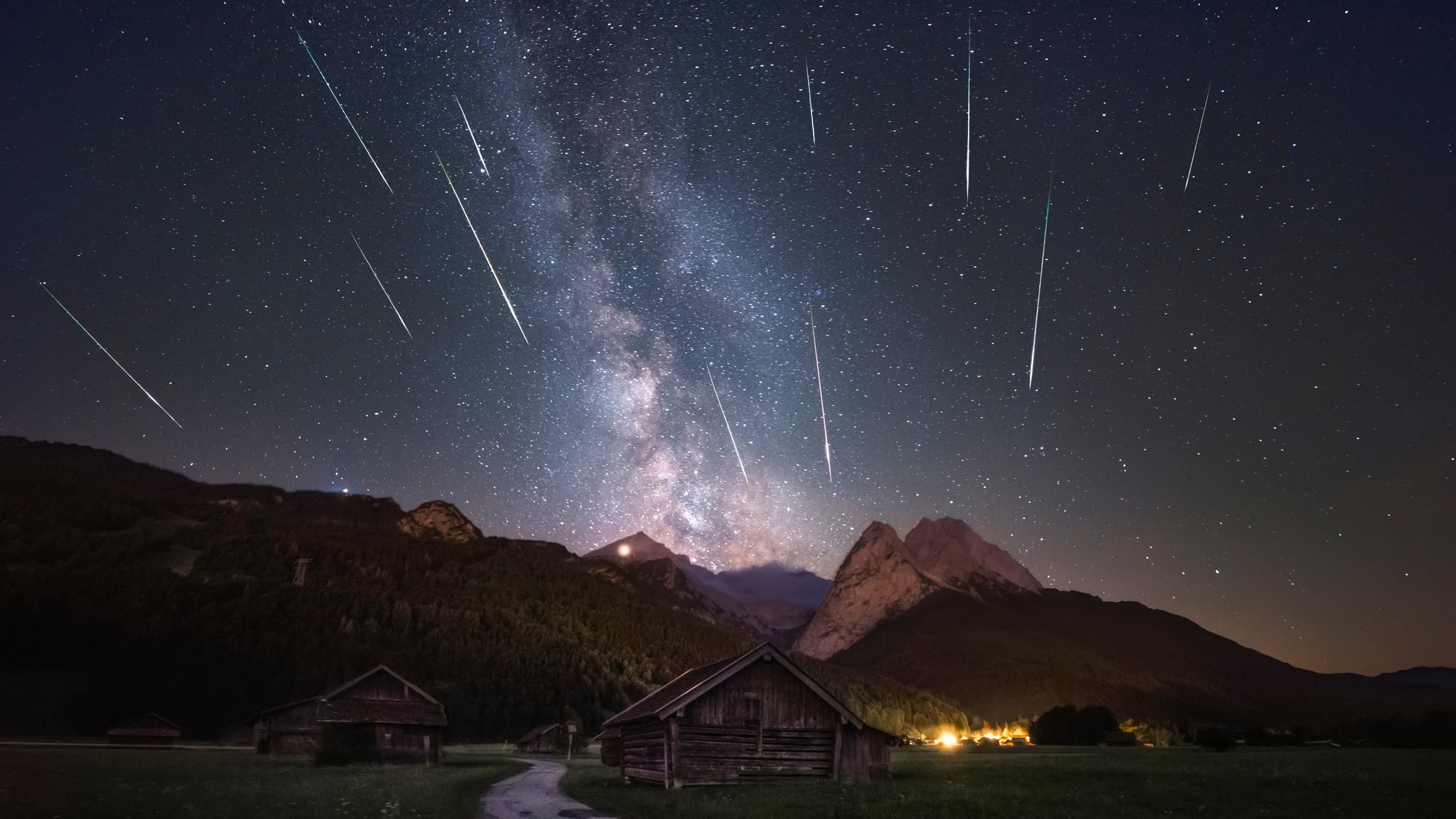
Early this morning, the peak of the annual Perseid meteor shower took place, but don't despair if you missed it because of work or bad weather. Although you won't get another chance to see 50-75 "shooting stars" in an hour — as was possible last night — it will be wise to look skywards late tonight (preferably after midnight early on Tuesday, Aug.13) if skies are clear for the chance of a healthy number of bright meteors. If you can't escape to truly dark skies, keep any artificial lights away from your direct line of sight because there's always a chance of seeing one or two particularly bright "fireballs." The later you look, the higher the shower's radiant in Perseus will be in the northeastern sky. — Jamie Carter
You can also watch the Perseid meteor shower online for free with this livestream hosted by astrophysicist Gianluca Masi of the Virtual Telescope Project. The livestream will begin at 9 p.m. EDT on Aug. 12 (0100 GMT on Aug. 13).
MONDAY, AUG. 12 - FIRST QUARTER MOON (EVENING)
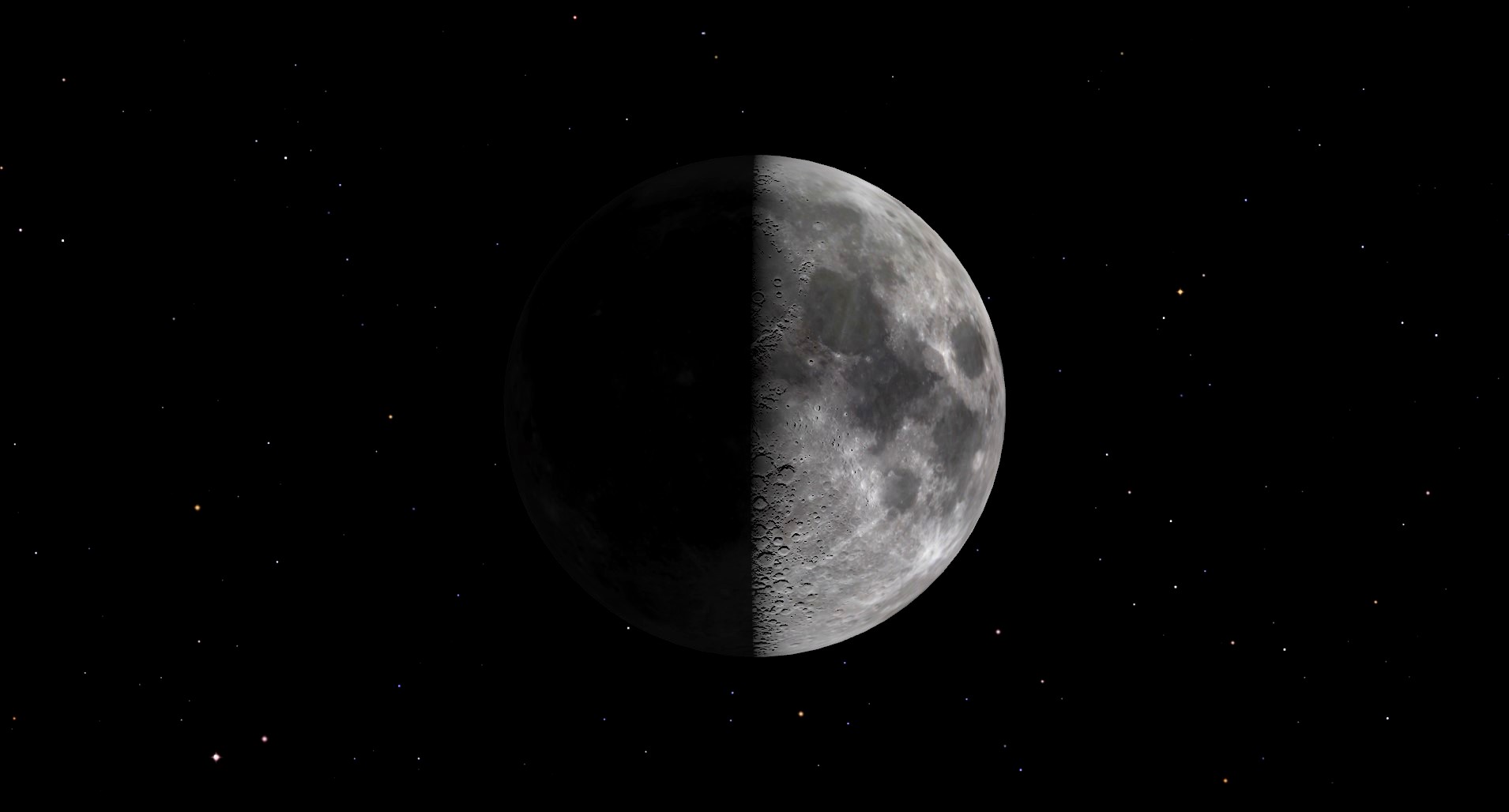
Tonight, the moon's eastern side will appear to be half-lit — its so-called first quarter phase — as it reaches its 90-degree angle away from the sun on its monthly orbit of Earth. Since a first-quarter moon always rises around midday and sets around midnight, it begins to bleach the evening night sky to make it more difficult to see stars (and "shooting stars" from the Perseid meteor shower). It's nevertheless a beautiful sight for the naked eye. — Jamie Carter
TUESDAY, AUG. 13 - MOON AND ANTARES (EVENING)
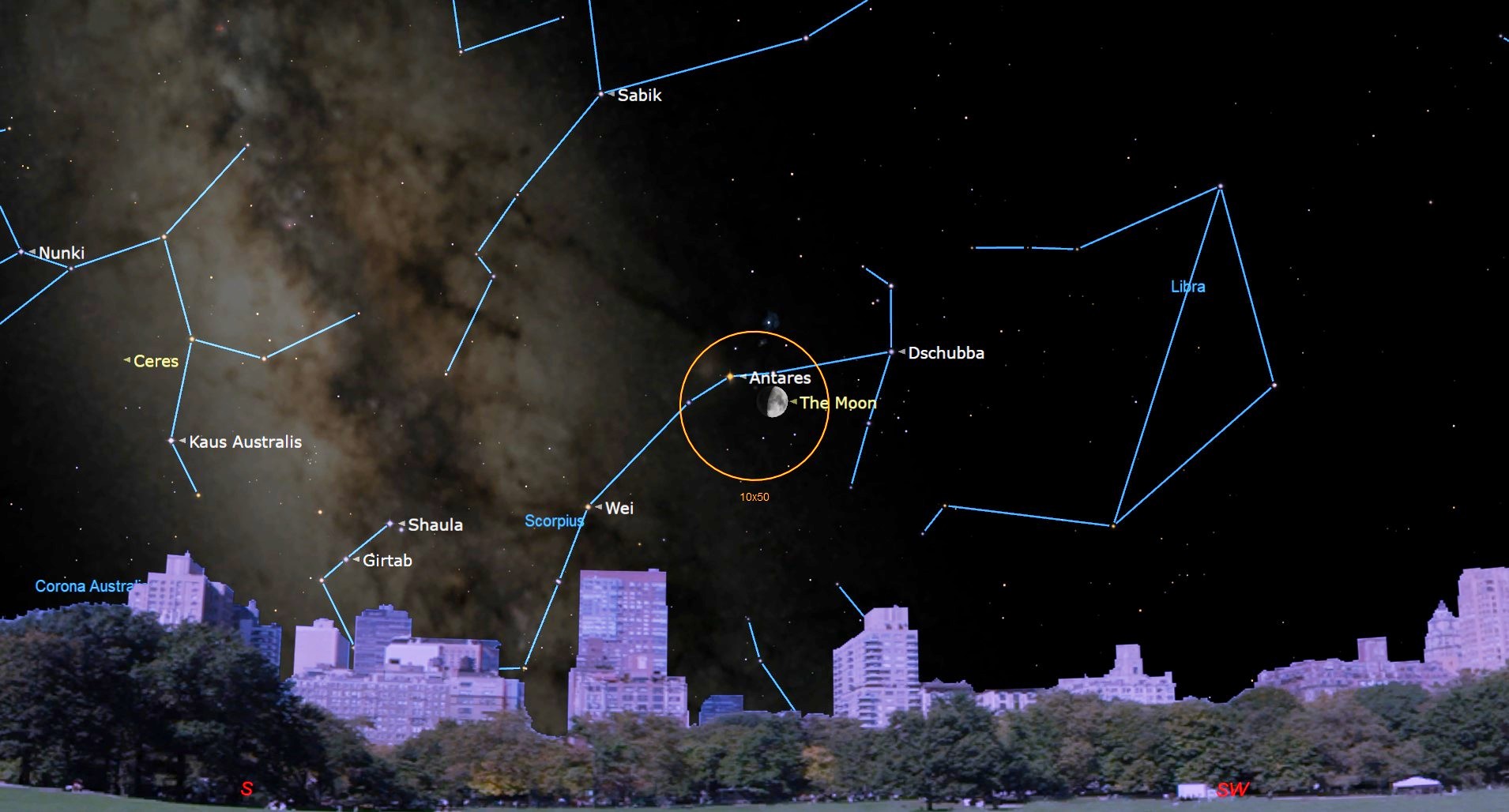
Look to the south immediately after sunset, and you'll see a waxing gibbous moon, now more than half-lit, shining brightly. Look to its upper left, and you may spy Antares, a reddish star now at its best. It's the brightest star in the iconic constellation of Scorpius and about 555 light-years from the solar system. Squint at it, and you'll more easily notice its reddish hue. The later you look, the closer the moon and Antares will be. From the South Pacific, the moon will occult (block) Antares, according to In-The-Sky.org. — Jamie Carter
WEDNESDAY, AUG. 14 - JUPITER AND MARS IN CONJUNCTION (PRE-DAWN)
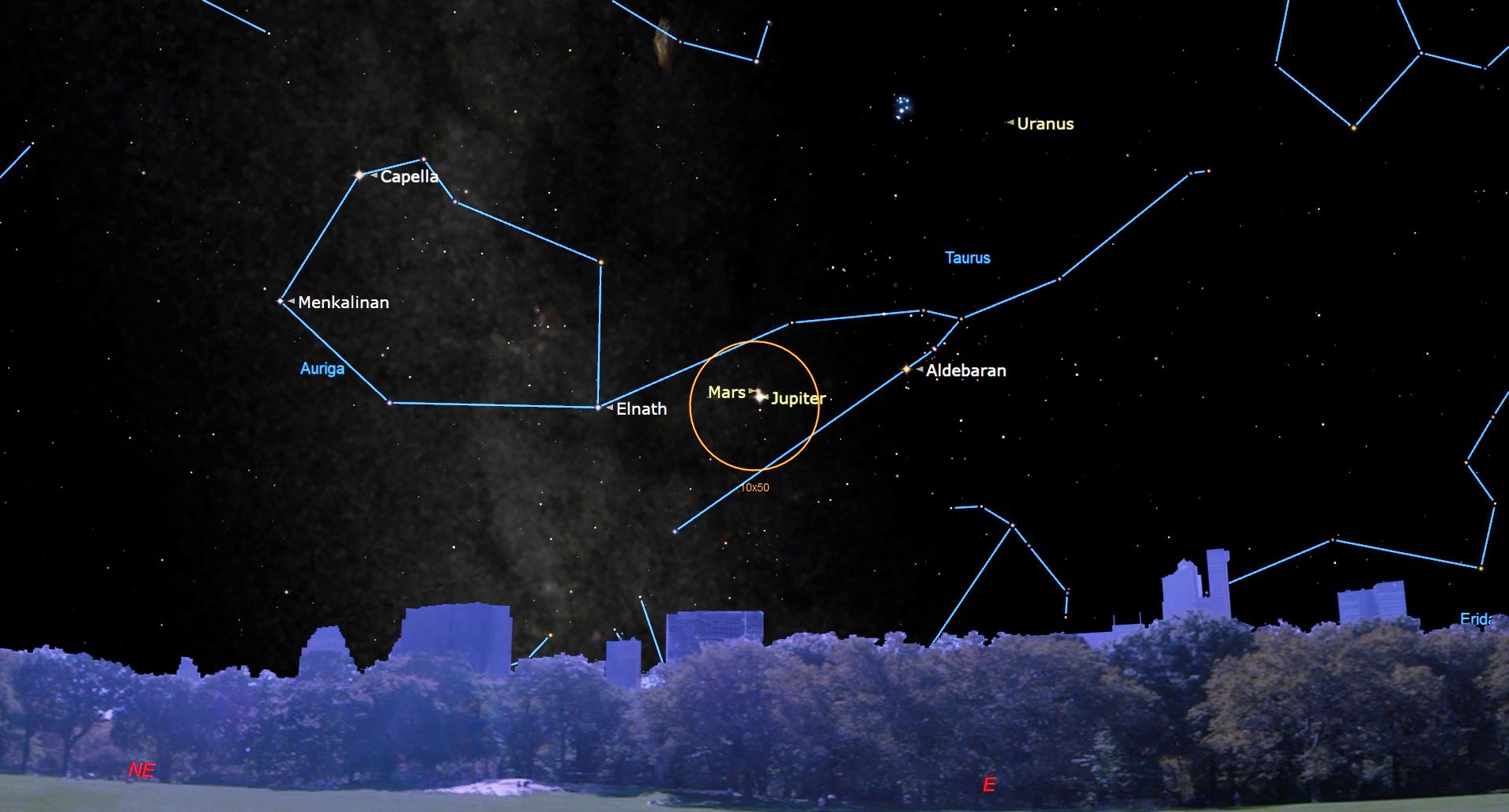
It will be worth getting up early for this, one of the closest conjunctions between planets this year. Visible in the southeast from about 2 a.m. local time until sunrise, Mars and Jupiter will get to just a third of a degree apart (a third of the width of your little finger held at arm's length). However, Jupiter, at magnitude -2.2, will be about 15 times brighter than Mars at magnitude +0.8. Although the two planets will appear at their closest this morning, it will be worth looking at the pair during the mornings before and after for a similar view. — Jamie Carter
WEDNESDAY AUG. 14 - COMPARE THE COLORS OF STARS
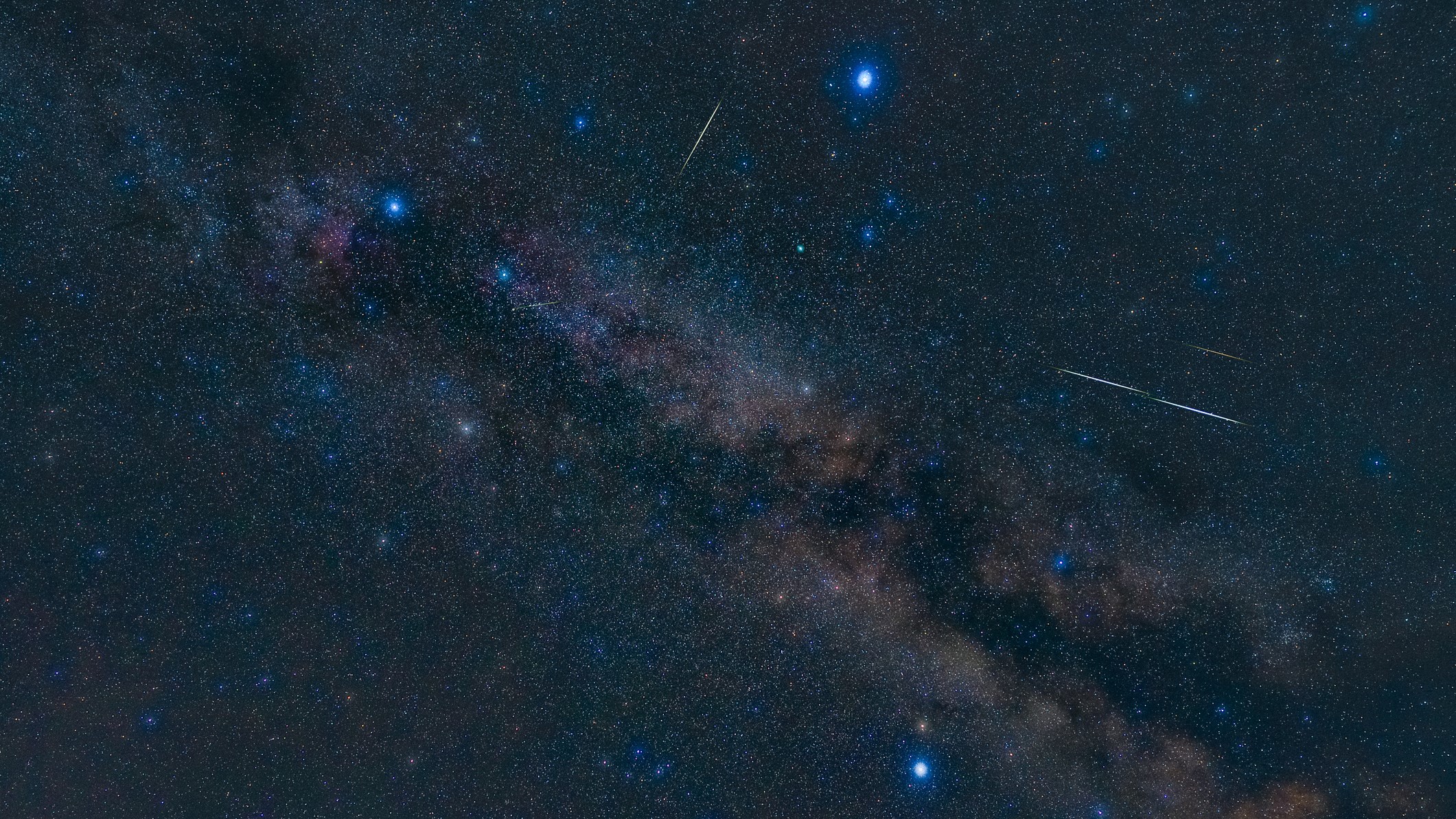
Bright stars in the summer night sky are a great skywatching target for those in the Northern Hemisphere.
If you look at them long enough you should notice that they shine different colors. The color of a star is controlled by the temperature of its photosphere — the outer 'shell' which radiates light.
The colors change blue to white to yellow to orange, as temperature decreases, with the coolest stars appearing red.
The three prominent stars of the Summer Triangle asterism in the eastern sky —Deneb, Vega, and Altair — are A-class stars that appear blue-white to the naked eye, with temperatures ranging from 7,500 to 10,000 Kelvin. In contrast, Arcturus, visible in the western evening sky, is an orange K-class giant star with a temperature of around 4,300 K. Meanwhile, the reddish Antares, the heart of the Scorpius constellation, is an older M-class star with a cooler surface temperature of 3,500 K.
After midnight local time, look for the very bright, yellowish Capella rising in the northeast. You can estimate the temperatures of dimmer stars by comparing their color to these bright reference stars.
THURSDAY AUG. 15: LOOK OUT FOR JUPITER AND MARS

Just after midnight local time, Jupiter and Mars will come up over the east-northeast horizon and will be well-placed for viewing an hour or two later.
Jupiter will shine at magnitude -2.2 and Mars +0.8, but despite their large difference in brightness, the pair will make for an interesting skywatching sight.
The pair will appear very cozy in the night sky, appearing just 20 or so arc minutes apart, meaning you'll be able to fit both planets in the view of a telescope, with low-to-moderate magnification.
FRIDAY, AUG. 16 - LATE AFTERNOON MOON (DAYLIGHT)
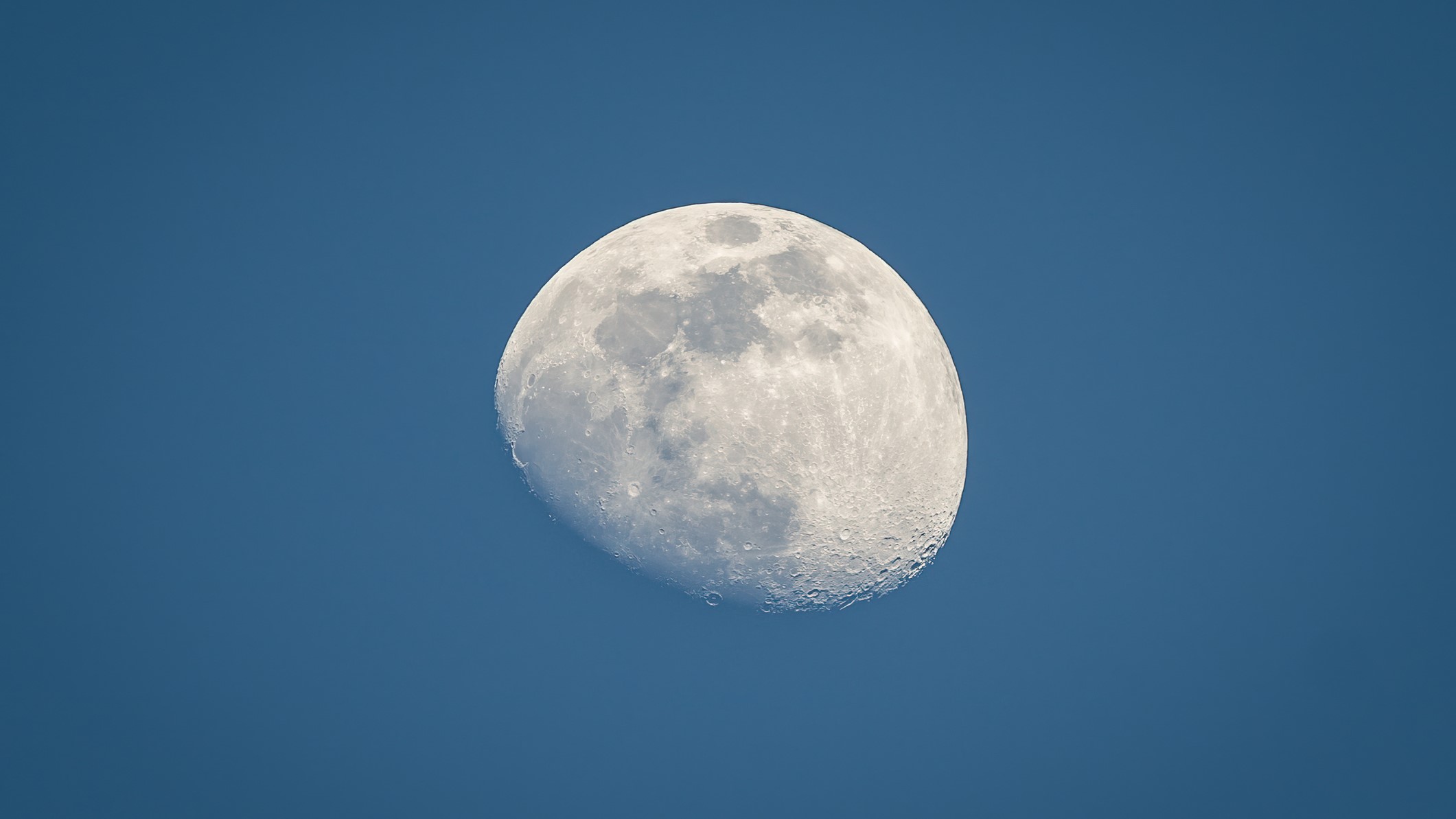
As the moon waxes towards being full next week, it rises earlier and will be easy to see shining brightly after dark, but it's visible many hours before sunset. Today, the moon will rise about 90% and be illuminated in the southeast at about 6:30 p.m. local time. The late-afternoon moon occurs because the moon is orbiting the Earth from west to east, traveling 13 degrees every 24 hours, thus rising around 50 minutes earlier each day. It will be a beautiful sight in a blue sky for a short time and dominate the post-sunset twilight sky. — Jamie Carter
MONDAY, AUG. 19 - FULL STURGEON 'BLUE SUPERMOON'
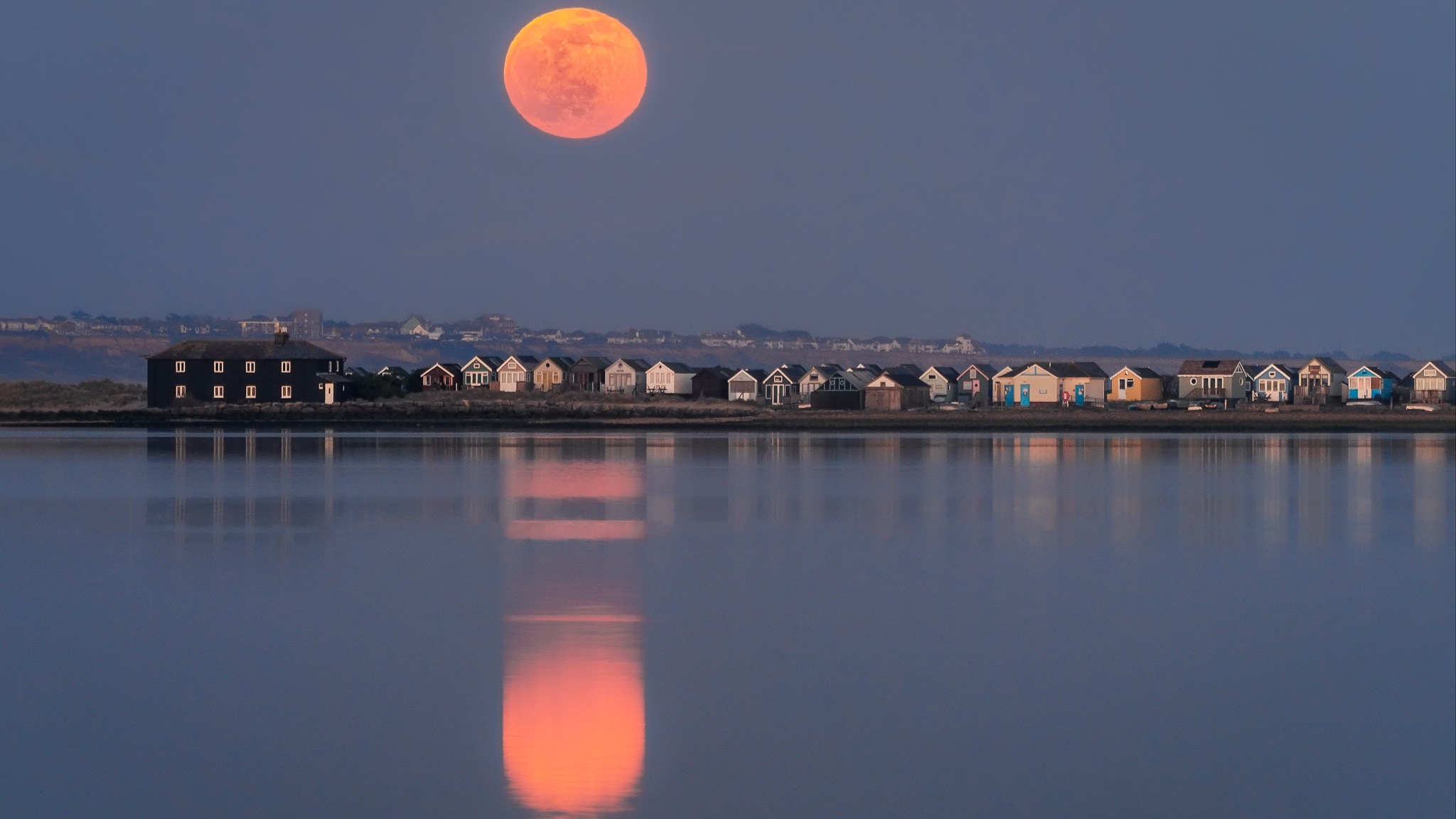
The moon is the easiest target for the naked eye, but when you look at it does make a big difference. Although August's full moon will become officially 100%-lit at 2:26 p.m. EDT, 11:26 a.m. PDT and 18:26 GMT, the time to look at it will be moonrise. It's much easier to look at the moon as it appears on the eastern horizon, draped in subtle orangey light, compared to just 20 minutes later, when it will have risen higher into the sky and become a lot brighter and whiter.
The full moon is always at its most impactful when viewed on the horizon, thanks to the moon illusion. Today's full moon will be slightly bigger than usual because it will be slightly closer to Earth on its elliptical orbital path — hence the name 'supermoon' — though that will be virtually impossible to detect. It will also be a 'Blue Moon' thanks to a calendar quirk; it will be the third of four full moons in the astronomical season of summer. However, at no point will the moon look blue. — Jamie Carter
You can watch the Supermoon Blue Moon rise today in a free livestream starting at 3:30 p.m. EDT (1930 GMT), weather permitting.
TUESDAY, AUG. 20 - MOON AND SATURN (ALL NIGHT)
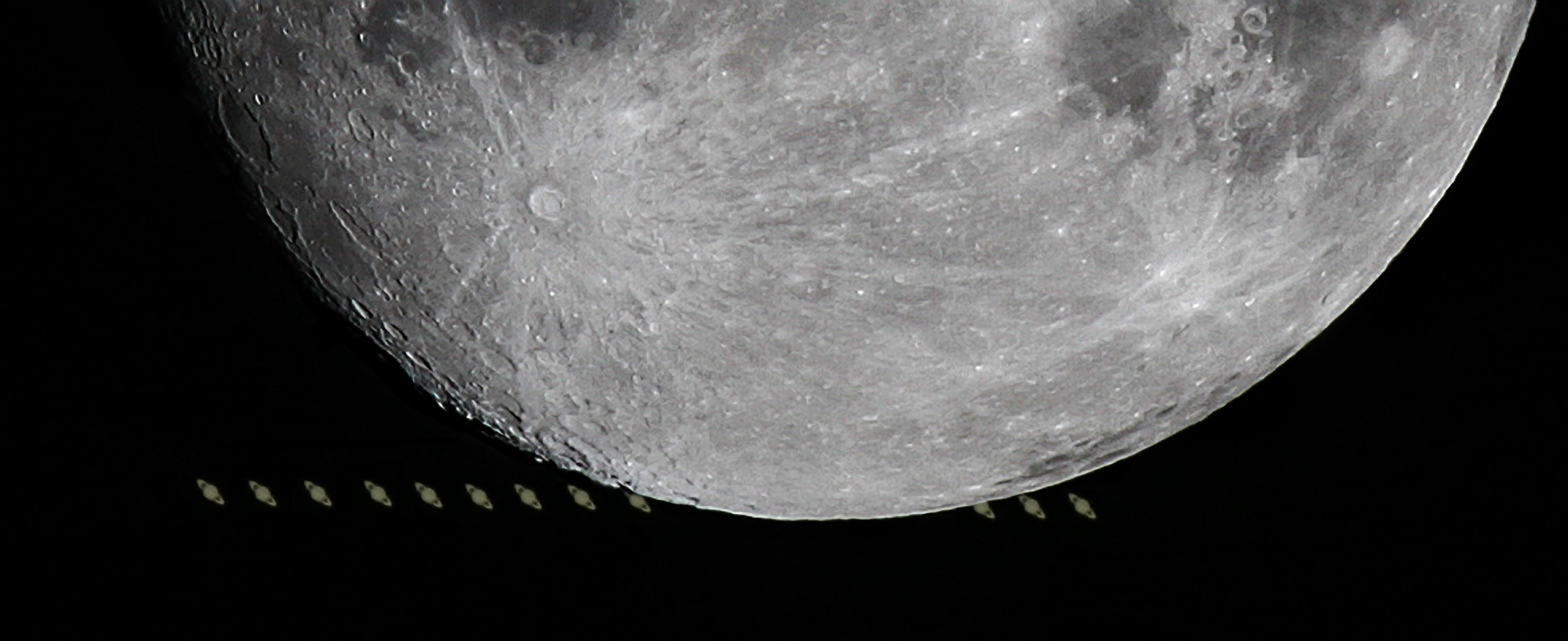
Saturn will reach its annual opposition in just a few weeks when it will be at its biggest and brightest in Earth's sky of the entire year. Tonight there's a preview, when it appears next to an almost full moon. Rising in the east after sunset at about 9:30 p.m. local time, the two will shine together all night. However, it's always impossible to glimpse Saturn's famous ring pattern with the naked eye. You'll need a small telescope for that.
If you rise early in the morning on Aug. 21, wherever you are, you'll see the pretty sight of the moon and Saturn setting together in the southwestern sky before sunrise. However, if you're in parts of Latin America and the Caribbean, Africa and Europe, the moon will pass in front of Saturn, blocking it from view for a short period. Countries with a good view include Brazil, Portugal, Spain, France and the U.K., according to In-The-Sky.org. From the U.K., this lunar occultation will take place from 4:25 to 5:23 a.m. GMT on Aug. 21. — Jamie Carter
WEDNESDAY, AUG. 21 - LOOK FOR HARPALUS CRATER
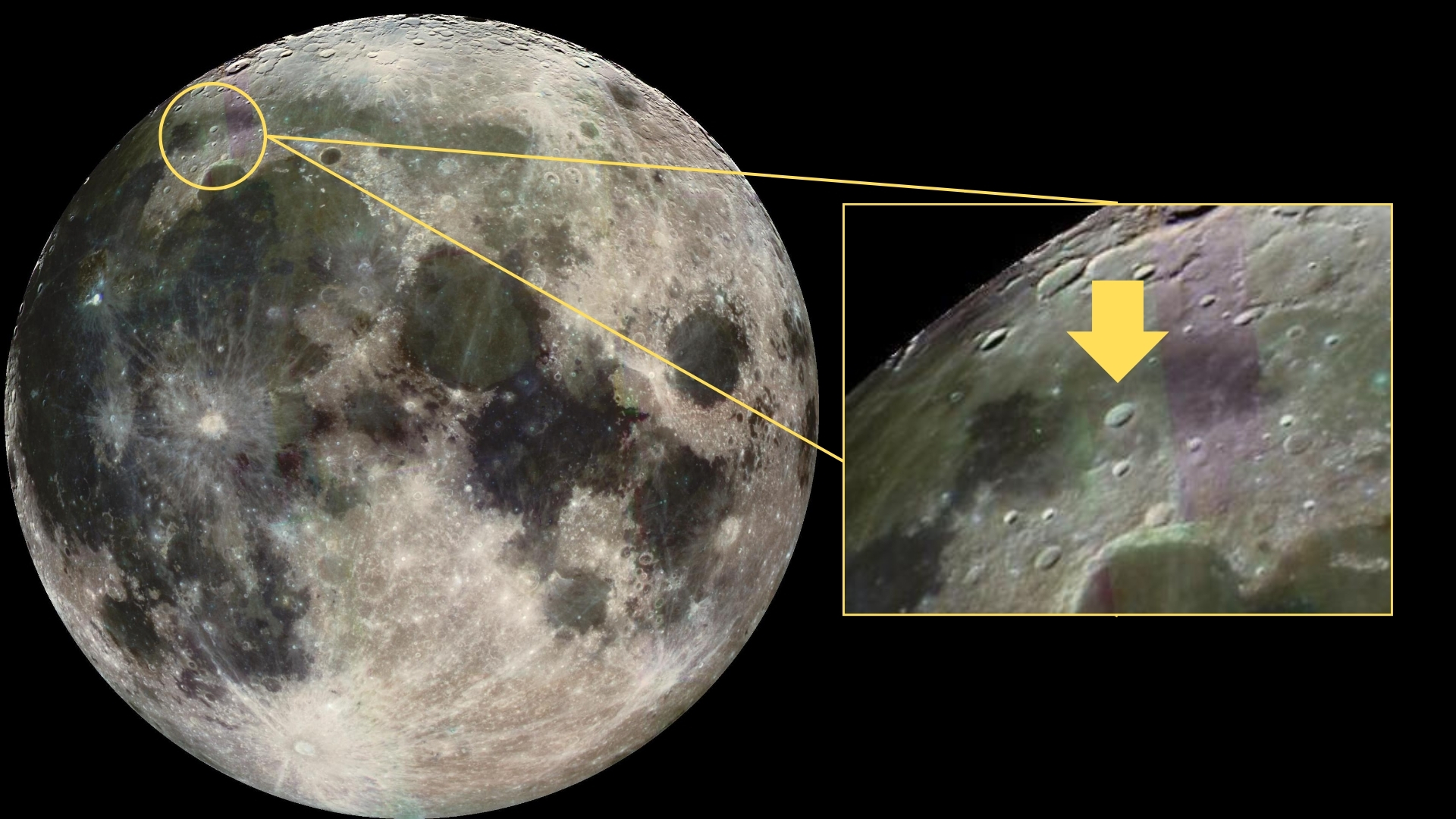
It's not every day you can gaze at the moon and spot a landmark from one of the most iconic sci-fi films. The Harpalus crater served as the rocket landing site in the 1950s movie "Destination Moon."
Due to its close proximity to the lunar north pole, the Harpalus crater is significantly foreshortened when viewed from Earth, often appearing more oval than circular. But the moon's axial wobble, known as libration, occasionally but regularly tilts features close to the edge toward us and then away, letting us get a peek 'around the edge' of the moon.
This month, Harpalus will be well placed for observation as the crater will be tipped slightly toward us. When viewed through a small telescope you'll be able to make out the details on the walls and floor of the 25-mile (40 kilometers) wide crater and even another small crater within it.
The crater remains fully illuminated until Aug. 27, when the terminator (the division between the illuminated and dark hemispheres) will return and plunge the crater back into darkness, by Sept. 5 the crater will be out of view. -- Daisy Dobrijevic
THURSDAY, AUG. 22 - SMALL CONSTELLATIONS ON HIGH
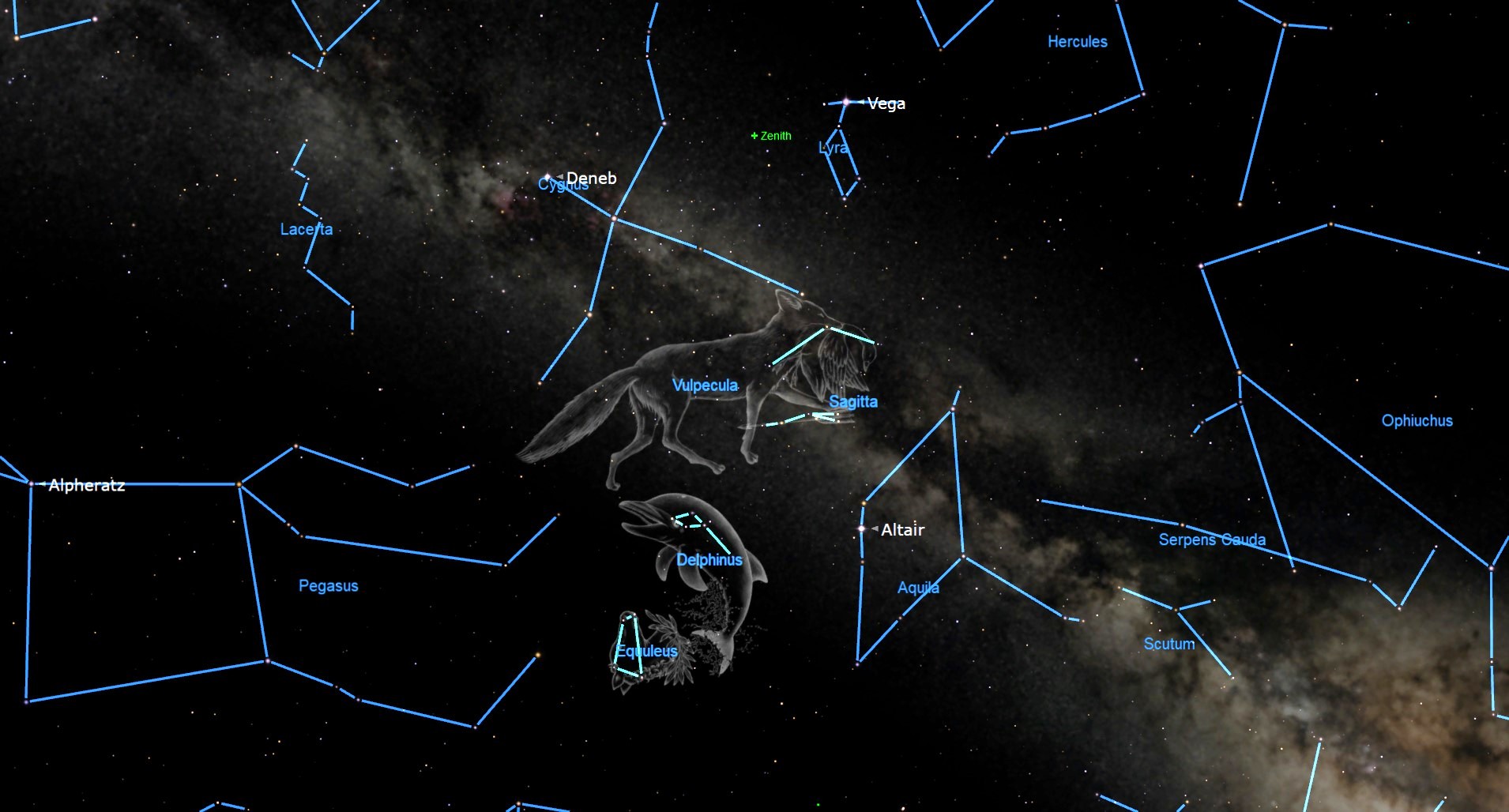
On late August evenings, four small constellations sit high in the southeastern sky below the very bright star Vega. The easiest one to see is Delphinus, the Dolphin, which is composed of four medium-bright stars forming a small elongated diamond connected to a star extending to the lower right (or celestial southwest).
Equuleus, the Little Horse is positioned about a fist's diameter below Delphinus. Diminutive Equuleus is the second to last constellation by size, after Crux, the Southern Cross. Sitting a generous fist's width above Delphinus is the next smallest constellation by area, Sagitta, the Arrow. And sweeping a palm's width higher will bring you to the stars of Vulpecula, the Fox.
Except for the slightly larger fox, each of these small constellations will fit within the field of view of binoculars. The Milky Way passes through Sagitta and Vulpecula, populating them with a variety of deep sky objects. The sky between those two constellations hosts a dark dust lane. -- Chris Vaughan
MONDAY, AUG. 26 - THIRD QUARTER MOON
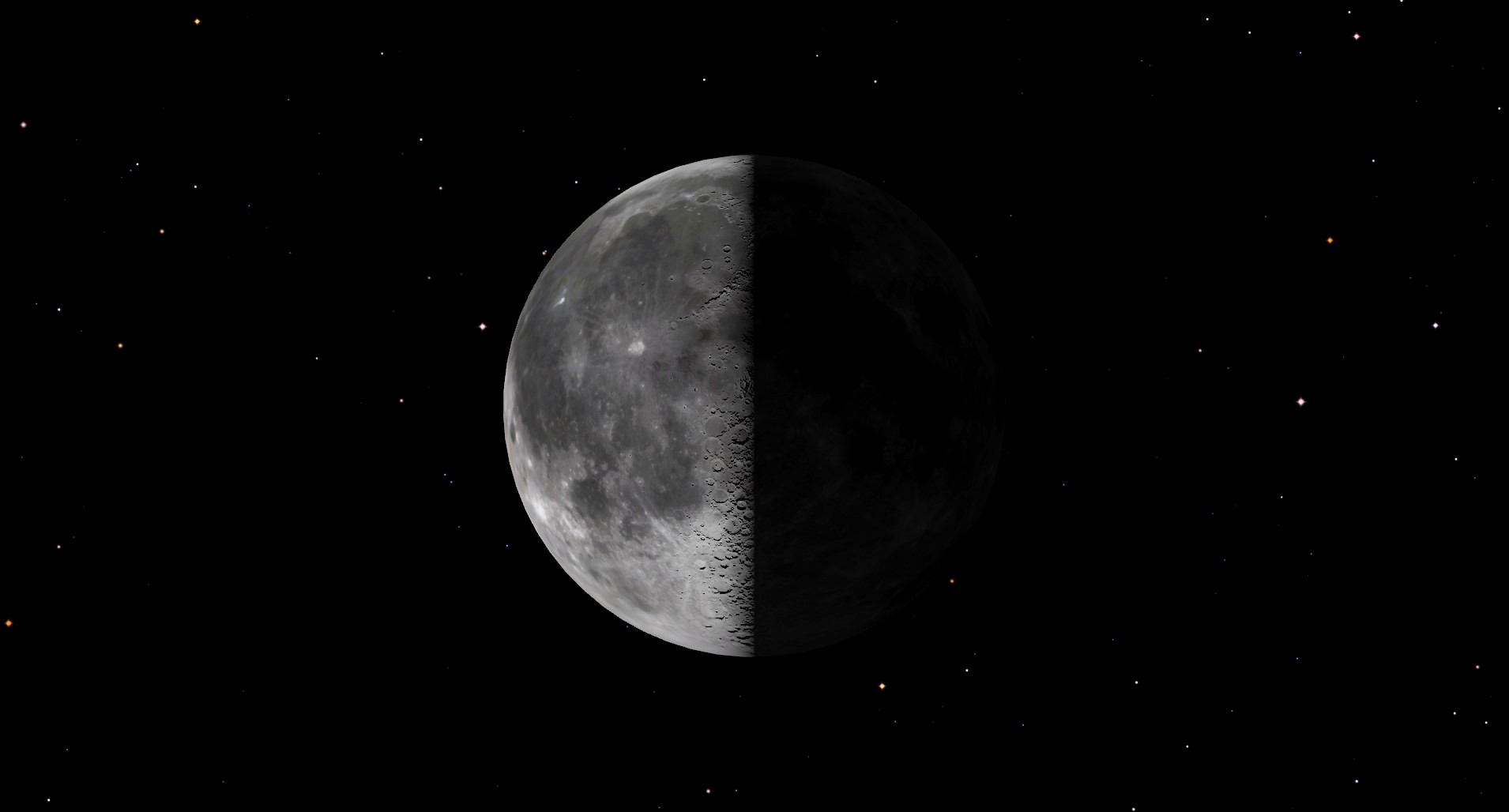
A third (or last) quarter moon looks half-lit and appears around midnight. The sight of it rising in the east late at night can be dramatic. This moon phase is much-loved by naked-eye stargazers precisely because it rises so late, leaving the early evening night sky dark enough to see faint constellations and deep sky targets.
A third-quarter moon always sets in the western daytime sky in the early afternoon. Over the next week, it will shrink to a crescent moon, which will be best seen in the east in the pre-dawn hours towards the end of this week. — Jamie Carter
TUESDAY, AUG. 27 - CRESCENT MOON, JUPITER AND MARS
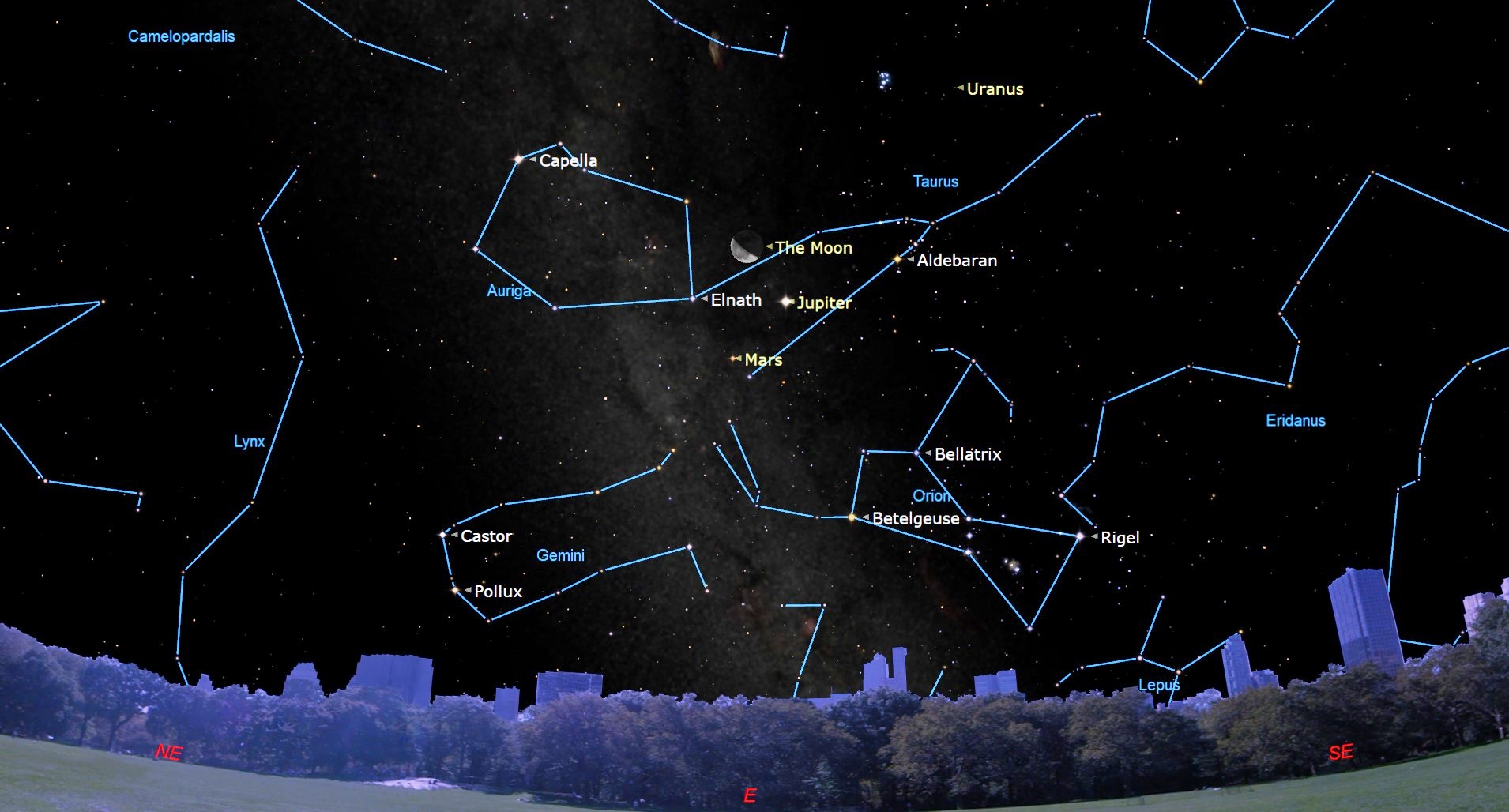
From the wee hours until dawn on Tuesday morning, Aug. 27, the pretty, waning crescent moon will shine above the planets Jupiter and Mars in the eastern sky, setting up a nice widefield photo opportunity. (Image credit: Chris Vaughan/Starry Night)
In the very early hours of this morning, a plump crescent moon will rise in the east above a couple of planets. Directly below will be Jupiter, shining at a magnitude -2.2, followed by Mars at +2. To the right of Jupiter will be Aldebaran, the brightest star in the Taurus constellation, while above all of that will be the sparkling Pleiades open cluster of stars. Look at the same time on Wednesday, Aug. 28, and you'll see a slimmer crescent moon alongside Mars. — Jamie Carter
TUESDAY, AUG. 27: WATCH ALGOL BRIGHTEN
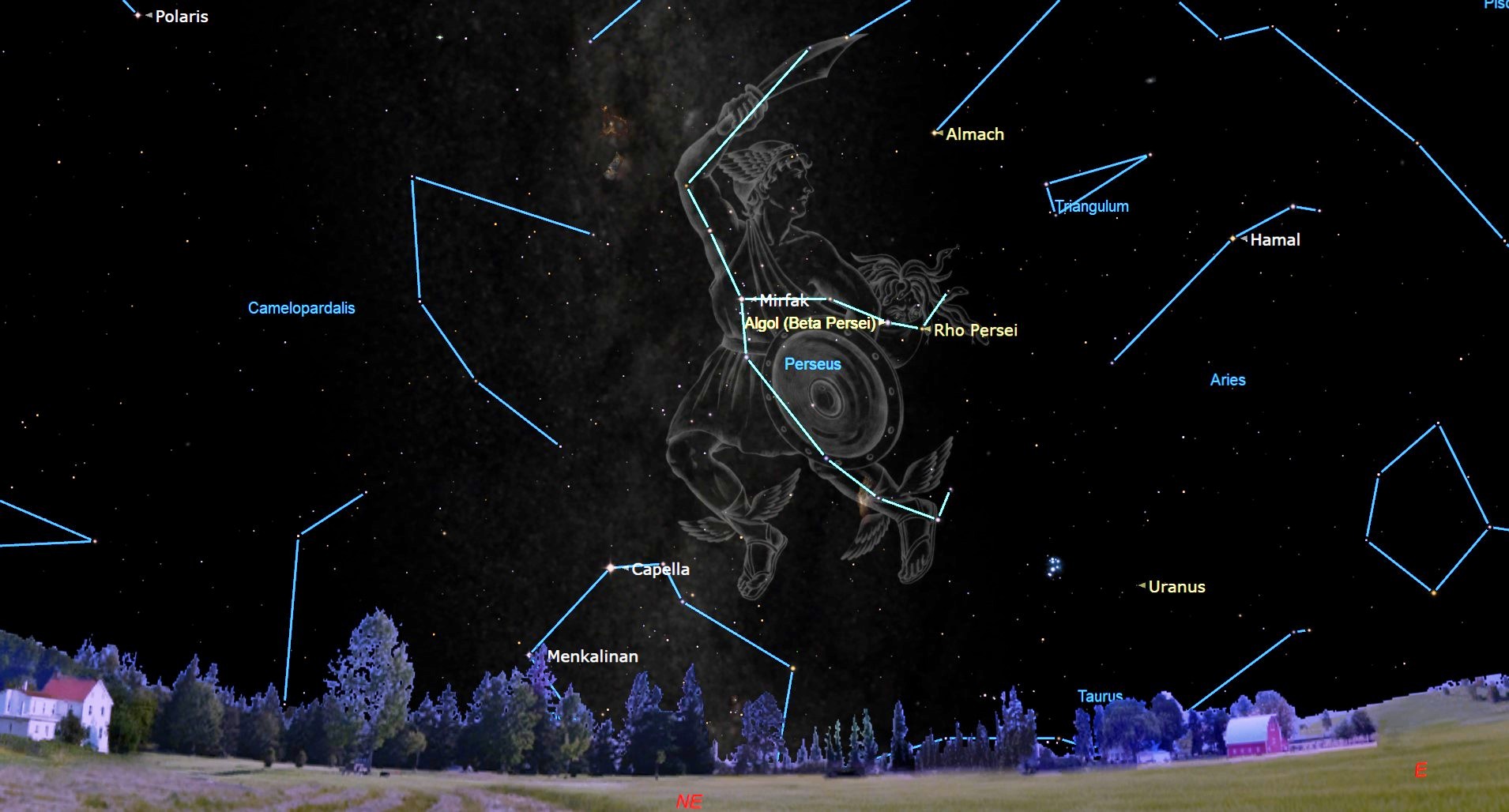
The summer nights are perfect for observing the strange star Algol (or Beta Persei) in the constellation Perseus. It is one of the most easy-to-monitor variable stars.
During a ten-hour period that repeats every 2 days, 20 hours, and 49 minutes, Algol dims noticeably and then re-brightens when a companion star with an orbit nearly edge-on to Earth crosses behind the much brighter main star, reducing the total light output we perceive.
Algol normally shines at magnitude 2.1, similar to the nearby star Almach in Andromeda. But while dimmed to minimum brightness, Algol's magnitude of 3.4 is almost the same as the star Rho Persei (ρ Per), which shines just two finger widths to Algol's lower right (or 2.25 degrees to the celestial south). — Chris Vaughan
WEDNESDAY AUG 28 - CATCH 6 PLANETS ACROSS THE SKY
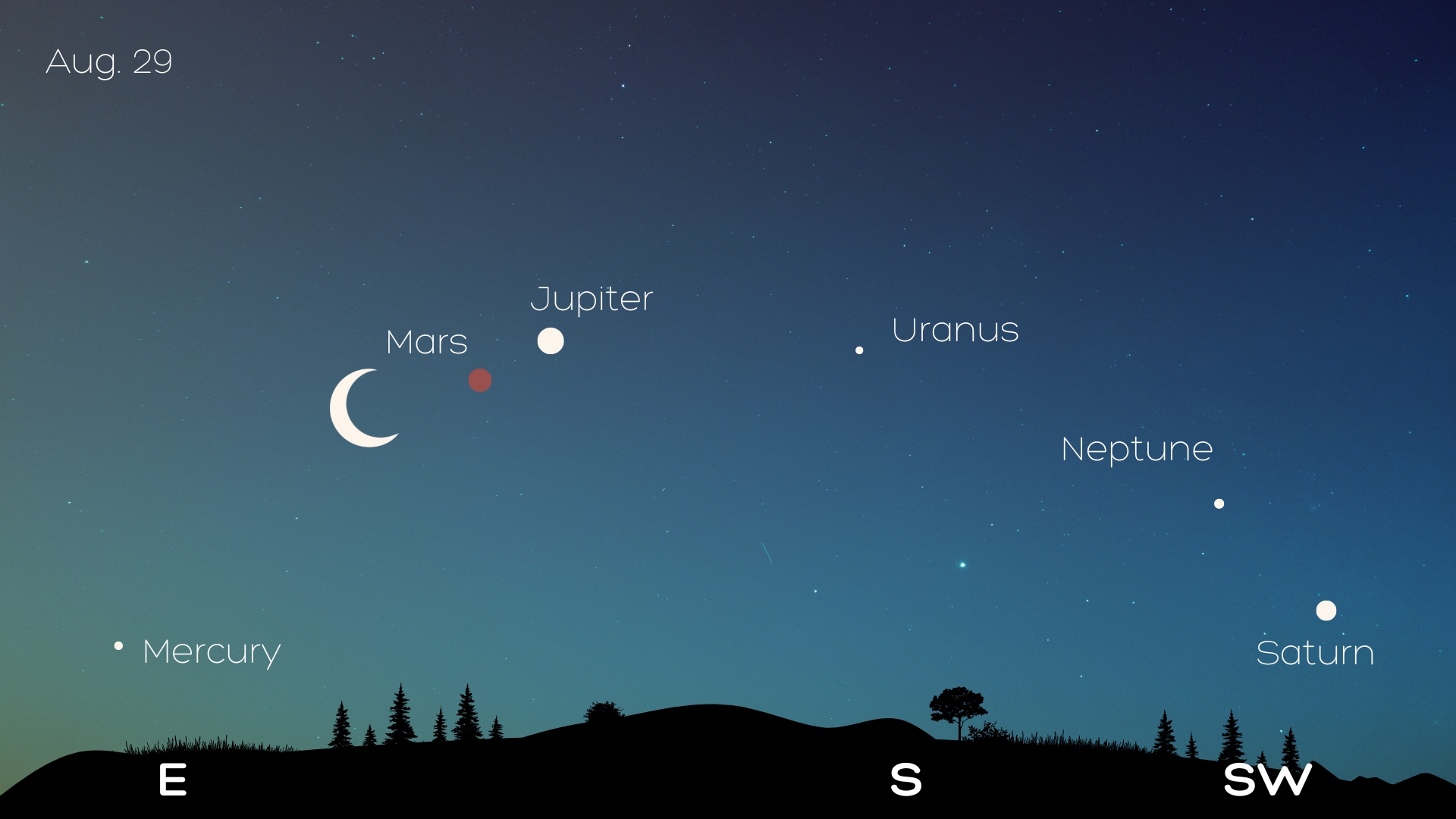
From late August to early September mornings, six planets — Mercury, Mars, Jupiter, Uranus, Neptune and Saturn — will be visible across the morning sky. Looking East. South and West, Mars, Jupiter and Saturn will be relatively easy to spot the other three will be a bit more of a challenge.
You'll need a small telescope or binoculars to see the dimmer planets Uranus and Neptune and Mercury will only appear about 30 minutes or so before sunrise.
You can use a program like Stellarium to discover what is visible in the night sky from your viewing location at a particular time.
FRIDAY, AUG. 30 - CRESCENT MOON AND THE WINTER STARS (PRE-DAWN)
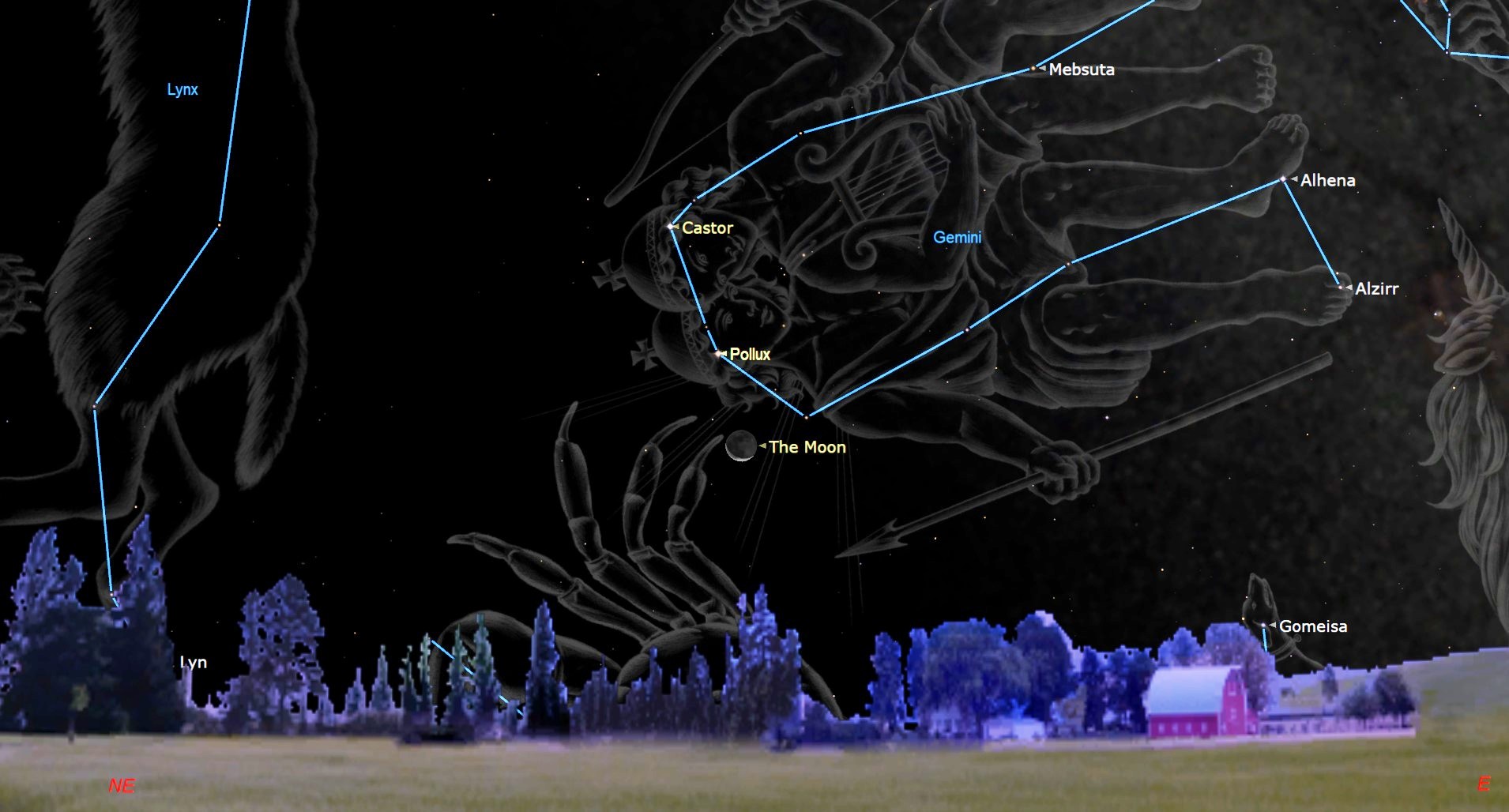
Look to the east for a view on the morning of Aug. 30, of a slim, waning crescent moon in the subtle light of dawn. Just a tenth of its surface will be sun-lit as it glides below two stars, Castor and Pollux, in the constellation Gemini. The top star, Castor, is 51 light-years distant, while the yellowish Pollux, between it and the moon, is 34 light-years away. These "twins" of Gemini are best known as winter evening stars. Look to the right, and you'll see other winter stars, including the three famous stars of Orion's Belt — Mintaka, Alnilam and Alnitak — and ruddy Betelgeuse. This red supergiant will one day go supernova. — Jamie Carter
What to look out for this weekend
SATURDAY, AUG. 31 - AUGURID METEOR SHOWER (PRE-DAWN)
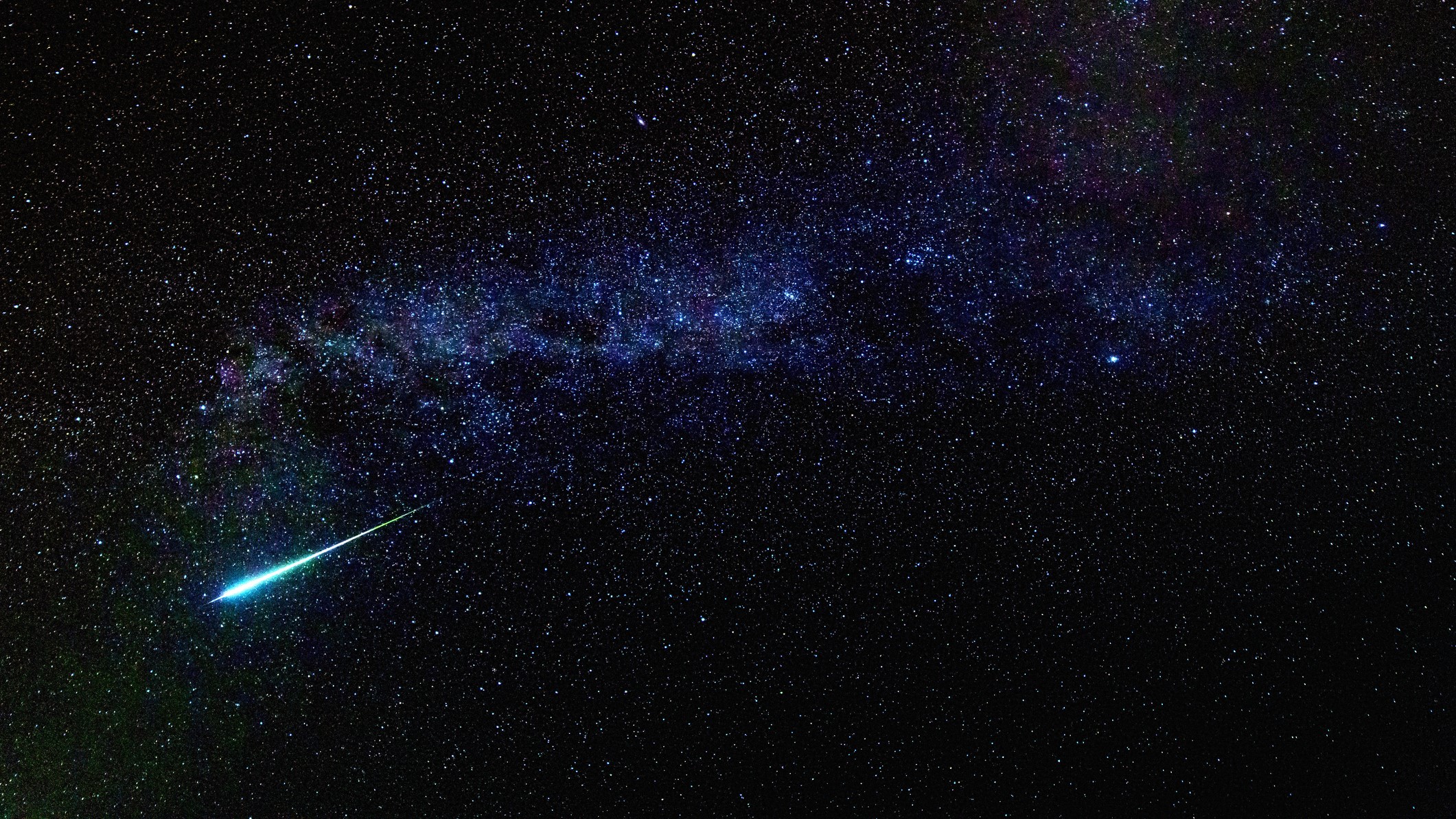
It won't be a spectacular display, but expect about six "shooting stars" per hour as the Aurigid meteor shower peaks tonight. It's named after the Auriga constellation, which will rise in the northeast around midnight and highest just before dawn breaks. It's not worth staying up for per se, but if you're out stargazing in the early hours today, keep an eye out for fast-moving meteors. The Aurigids are active each year from Aug. 28 through Sept. 4.— Jamie Carter
SUNDAY, SEPT. 1 - CRESCENT MOON AND MERCURY (PRE-DAWN)
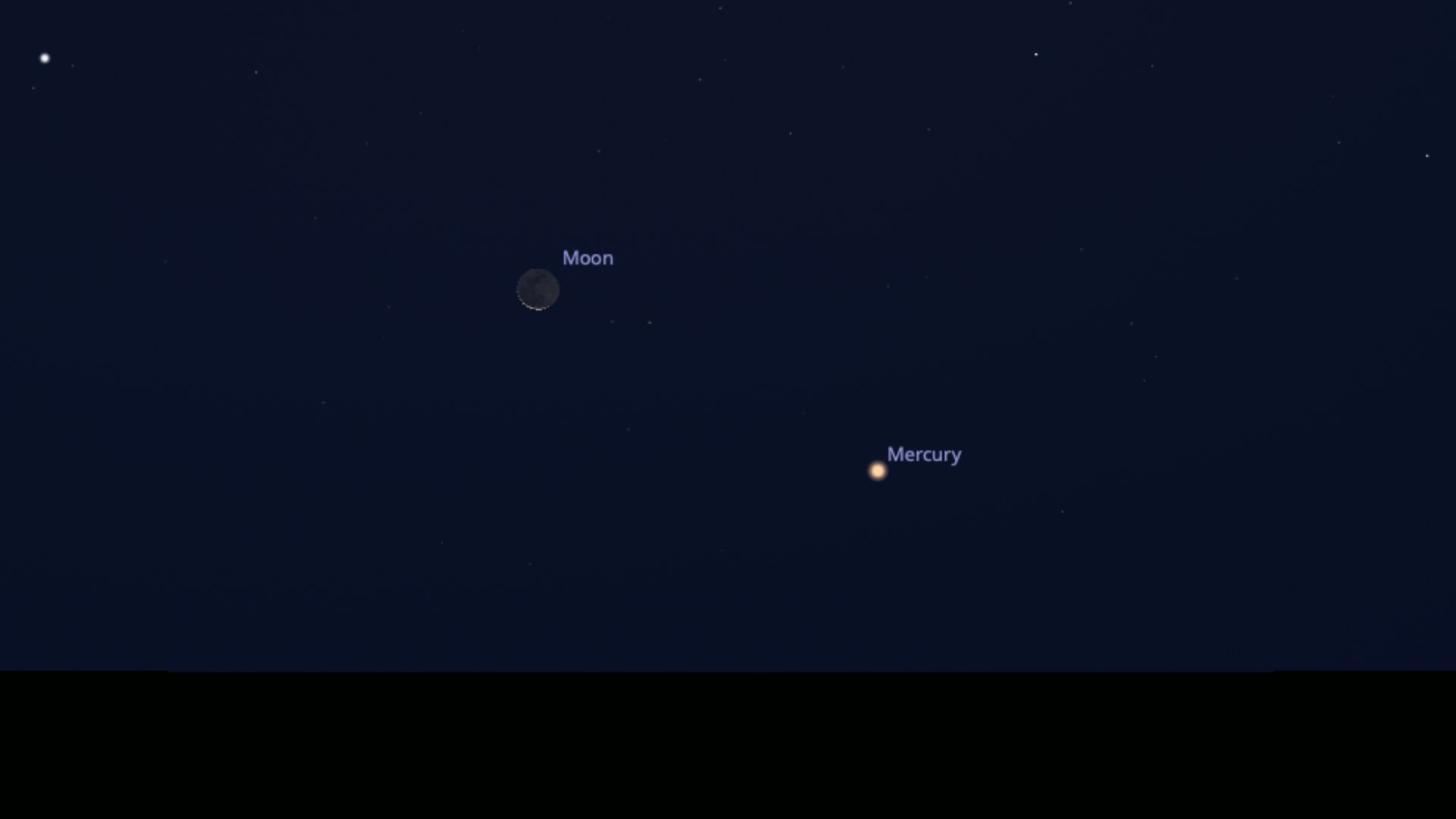
Mercury orbits the sun every 88 days, closer to the sun than Earth, so we see it briefly emerge from the sun's glare only now and again. Today, it will be just below and right from a very slim crescent moon about an hour before sunrise in the pre-dawn sky. It won't be easy to see with the naked eye, but the moon will help you find it. Look out for mesmerizing Earthshine (sunlight is reflected off Earth) on the moon's dark side. — Jamie Carter
MONDAY, SEPT. 2 - FALSE DAWN (PRE-DAWN)

On Monday, Sept. 2, at 9:55 p.m. EDT, the moon will officially reach its new moon phase. It’s impossible to see because it’s roughly between the Earth and the sun, so lost in the latter’s glare (unless there's a solar eclipse, which is precisely what will happen next month when an annular solar eclipse will be seen from the southern hemisphere). That makes it the perfect night to see faint objects in the night sky. If you can get far away from light pollution, September is a great time to see the “false dawn” or zodiacal light, which becomes visible about an hour before sunrise in the eastern sky. It is sunlight scattered off dust in the solar system and is brightest close to the autumnal equinox, which will occur later this month. — Jamie Carter
Related: Wonder at the 'false dawn' of zodiacal light in early autumn
WEDNESDAY, SEPT. 4 - MERCURY (PRE-DAWN)

Mercury, the closest planet to the sun, is rarely seen. Since it orbits so close to our star, it's typically lost in its glare and impossible to see. That changes occasionally when its position in the solar system relative to Earth puts it temporarily high above the horizon on a few successive days. It can only ever be visible from Earth just before sunrise or just after sunset. The former is the case tonight, with Mercury's so-called "greatest western elongation" from the sun (at 18 degrees) placing it just above the eastern horizon about half an hour before sunrise this morning. You'll need a good view low to the eastern horizon, but at magnitude +0.4 the tiny planet is relatively dim — don't expect much more than a red dot. It's worth returning at the same time on Saturday, Sept. 8, when Mercury appears a little higher in the sky. — Jamie Carter
TUESDAY, SEPT. 3 - NORTHERN LIGHTS (AFTER SUNSET)
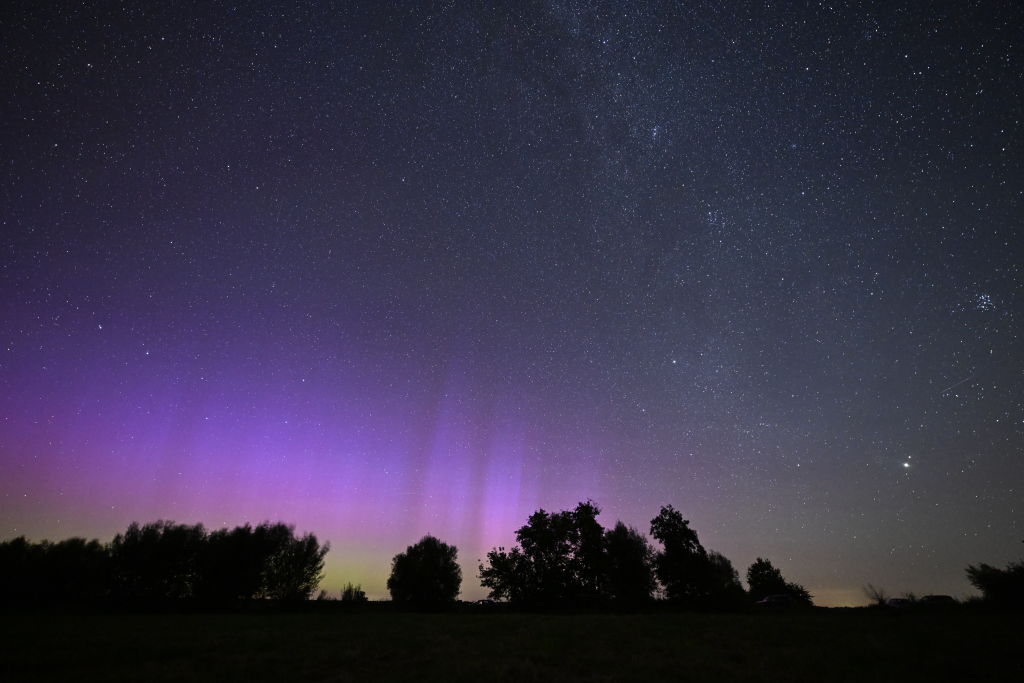
There is no guarantee of northern lights tonight, or any night this month, but something about September makes them more likely and, in theory, more intense. Given that the nights are drawing in in the northern hemisphere, and the moon sets early all this week, it may be a good week to see them at lower latitudes than is typical.
The reason is what's known as the Russell-McPherron Effect. It's a hypothesis from a paper published in 1973 that the tilt of the Earth's axis at the time of equinox (which occurs on Sept. 22) puts it side-on to the sun, meaning Earth's magnetic field is aligned to the solar wind. This means a greater chance of more intense geomagnetic storms, which cause aurora displays.
You'll need to consult the NOAA's Space Weather Prediction Center to see if there's a favorable prediction tonight (a G4 or a G5 geomagnetic storm is what you want if you live in mid-northern latitudes), but aurora hunters often claim that the equinoxes are the best times for beautiful displays. Pay special attention to NOAA's 3-day Forecast and the prediction for the aurora view line for tonight and tomorrow. — Jamie Carter
Related: Aurora season is here: What to expect from the northern lights in 2024/25
WEDNESDAY, SEPT. 4 - YOUNG MOON VISITS VENUS
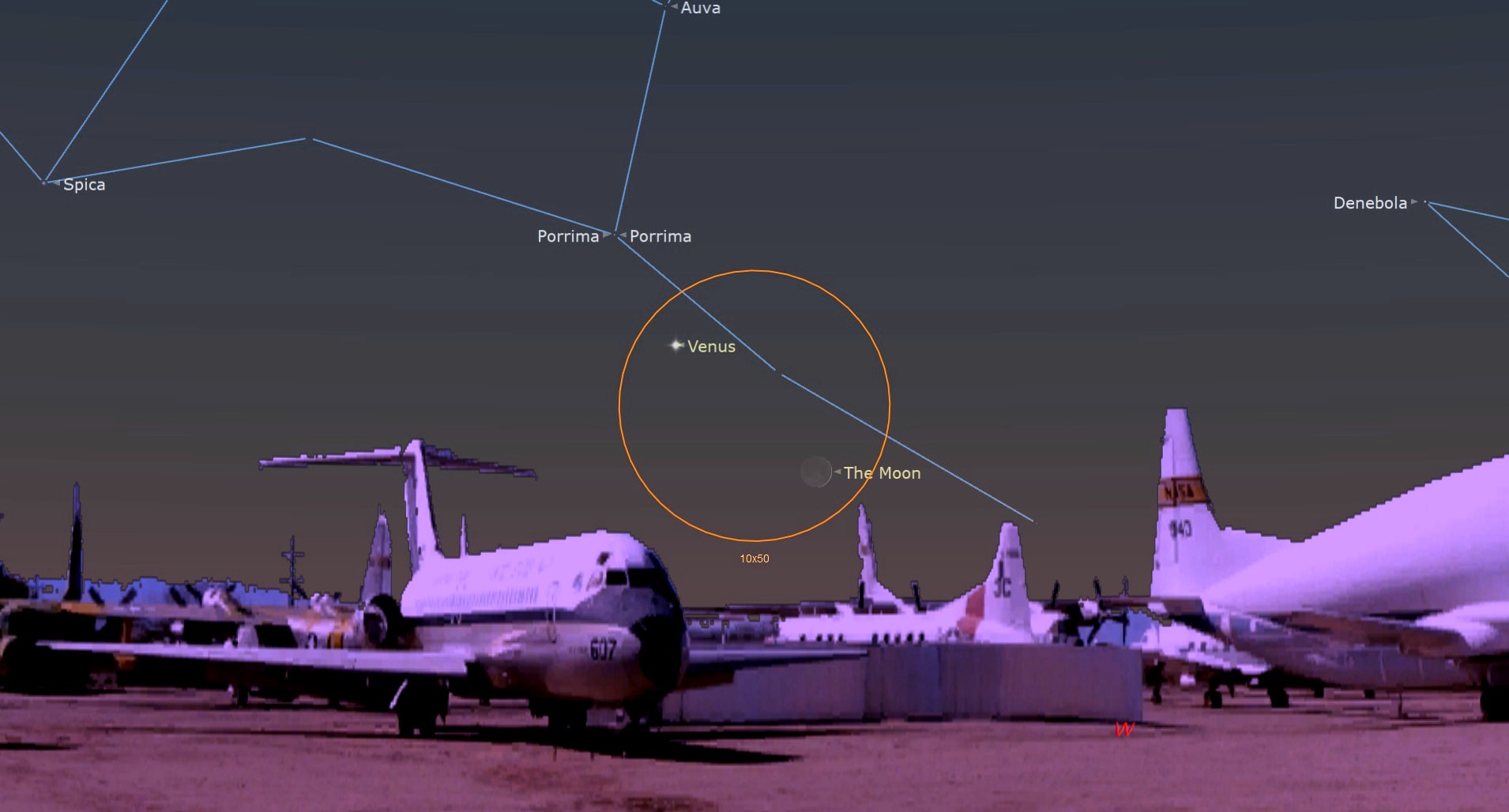
As the sun sets on Wednesday, Sept. 4 the waxing crescent moon will be just above the western horizon near a bright Venus. A very thin crescent moon will be located just several finger-widths to Venus' lower right (to its celestial west) — close enough that both can be seen by binoculars (orange circle in the image above).
Skywatchers viewing the pair from southerly latitudes will be able to see the moon more easily, as the pair will be close to the horizon at sunset for everyone else.
THURSDAY, SEPT. 5 - A CRESCENT MOON AND VENUS (AFTER SUNSET)
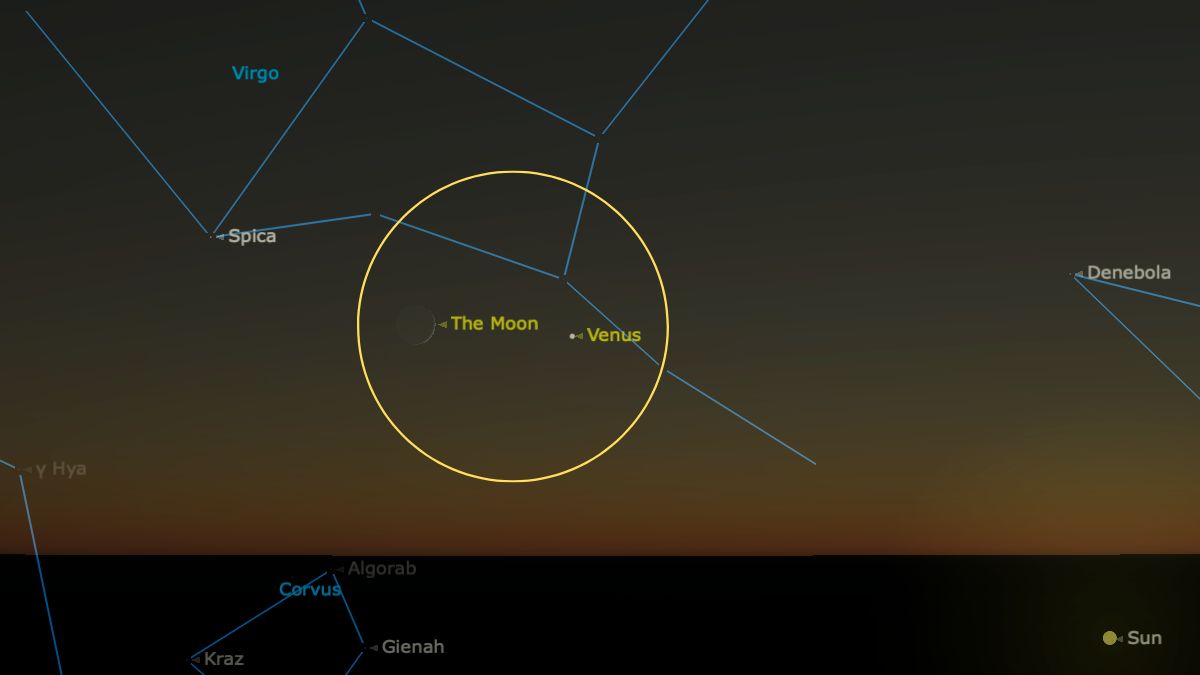
Look west just after sunset for a remarkable sight denied to stargazers since last year. The two brightest objects in the sky aside from the sun — the moon and Venus — will tonight shine about six degrees (the span of your three middle fingers held at arm's length) from each other for a short time after sunset.
You'll need a good view low to the western horizon (try a tall building or observe from a west-facing beach). The crescent moon will be very delicate and may require binoculars. Venus is known as the "Evening Star" in its current apparition because it's visible after sunset. — Jamie Carter
Related: Night sky, September 2024: What you can see tonight [maps]
SEPT. 6 - A CRESCENT MOON AND SPICA (AFTER SUNSET)

Look due west again tonight just after sunset, and with a clear view low to the west-southwest horizon, you'll see a crescent moon a little higher in the sky.
This time, Venus will be farther to the lower right of the crescent moon, close to the horizon. Now around 13% illuminated, it should be possible to see a trace of light on the moon's dark side, opposite the crescent. That's sunlight reflected from Earth onto the moon; it's called "Da Vinci glow," "planet-shine," or "Earthshine."
Look carefully, and you'll see a star to the moon's right. That's Spica in Virgo, one of the brightest stars that the moon appears to frequently pass on its monthly journey around Earth. — Jamie Carter
TUESDAY, SEPT. 10 - MOON AND ANTARES (AFTER SUNSET)
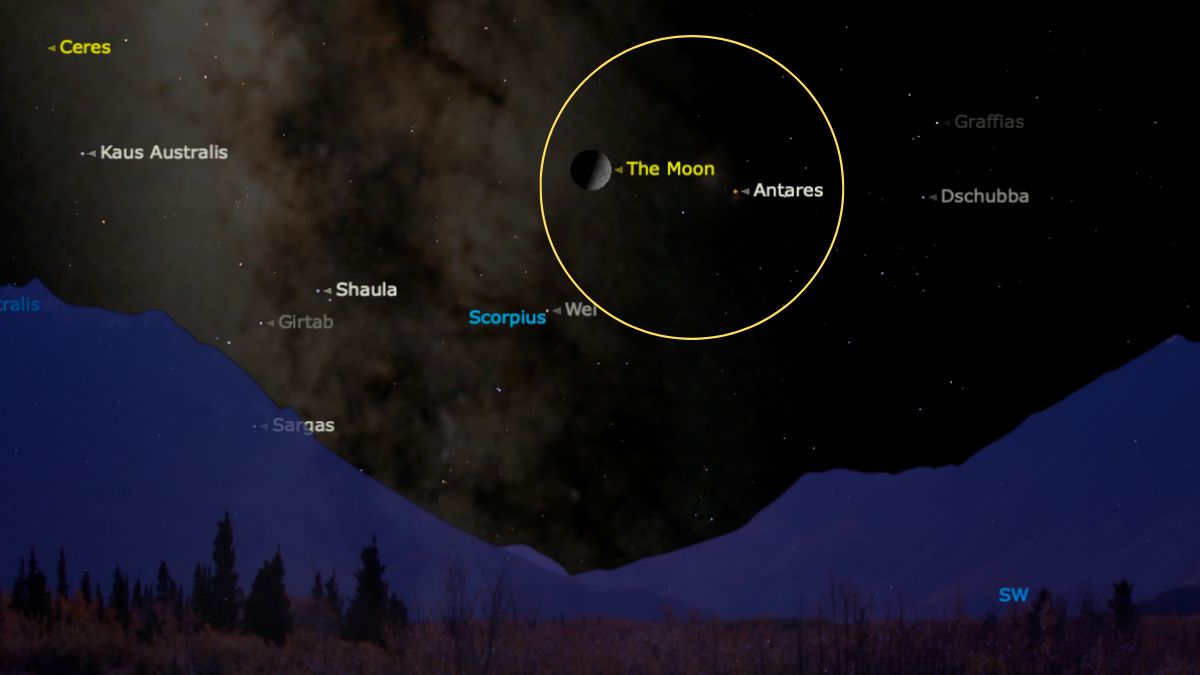
During evening twilight, a half-moon will shine brightly in the south. Look to its right, and you'll see the red supergiant star Antares, the brightest in the constellation Scorpius, one of the 13 zodiac constellations. It's prominent at this time of year from both hemispheres. Look carefully, and you'll notice the reddish-orange color of Antares, a symptom of its relatively low temperature.
Around 604 light-years from Earth, Antares is 700 times the sun's diameter. If it were in the solar system, it would engulf Mercury, Venus, Earth and Mars. Its name means "anti-Ares" or "rival of Mars" because the red planet passes close to it every 26 months. Scorpius is a region of the sky rich in star fields and deep sky objects (such as the Butterfly Cluster (NGC 6405 and Messier 6), Ptolemy's Cluster (NGC 6475 or M7) and M4) because it's near the center of the Milky Way. — Jamie Carter
Read more: Night sky, September 2024: What you can see tonight [maps]
WEDNESDAY, SEPT. 11 - FIRST QUARTER MOON (MIDDAY TO MIDNIGHT)
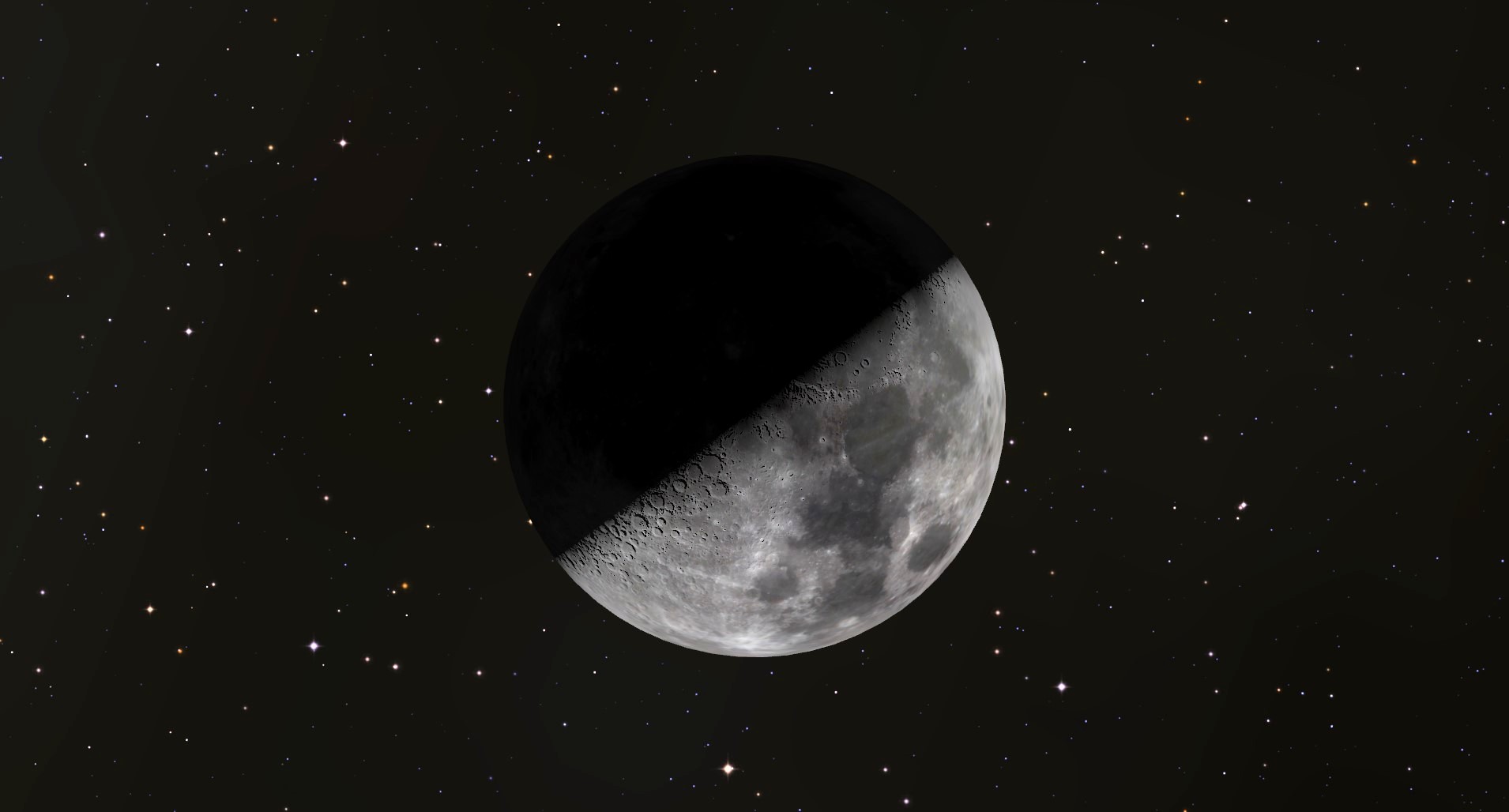
The moon takes 29.5 days to orbit Earth, roughly dividing its journey into four phases. Tonight sees it reach first quarter, which marks the halfway point between a new and full moon.
Rising around midday and setting around midnight, the moon will be precisely 50% illuminated — as seen from Earth — at 2:06 a.m. EDT (0606 GMT). That's because it's at a 90-degree angle from the sun, so only its eastern side will receive sunlight.
It's an excellent naked-eye target for twilight that puts the eastern side of the moon on display.— Jamie Carter
Related: What is the moon phase today? Lunar phases 2024
THURSDAY, SEPT. 12 - MOON IN THE AFTERNOON (DAYTIME)

The week before the full moon is perfect for seeing the moon in the afternoon. It rises in the southeast (as seen from the northern hemisphere) in mid-afternoon. Since it's already reached its first quarter phase, it's now a waxing gibbous moon, which means over half of its visible face is illuminated, and it's waxing towards full.
Since the moon is 400,000 times less bright than the sun, it won't be immediately apparent in a blue sky, but keep looking, and you'll quickly see it with your naked eyes. As the day progresses into the evening, it will rise higher and become more prominent and then dominate the southern sky as twilight takes hold.
FRIDAY, SEPT. 13 - VENUS CLOSE TO SPICA (AFTER SUNSET)
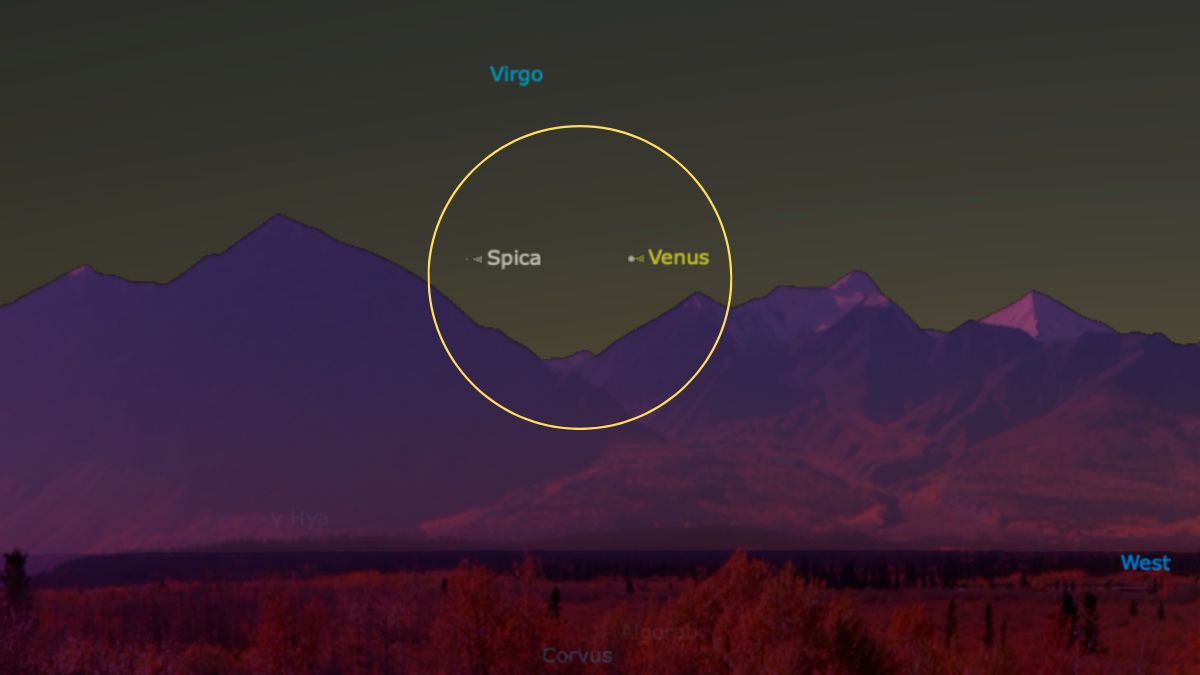
If you've yet to see Venus this year, tonight is an excellent opportunity. The second planet from the sun has been conspicuous by its absence from the evening night sky since 2023 but is now beginning to shine more brightly after sunset just above the west-southwest horizon. After the sun and moon, it's the brightest object in the night sky, shining at magnitude -3.9 tonight.
As a bonus, you'll find another bright object nearby, just a couple of degrees (the span of your two smallest fingers at arm's length) to the left. That's Spica, the brightest star in the constellation of Virgo and the 16th brightest star in the night sky. This bluish-white helium star is about 262 light-years distant and hugely luminous (it's about 2,300 times more luminous than the sun).
Try to catch Venus as the "Evening Star" and Virgo's brightest star quickly after sunset because they will sink soon after.
The sight of Spica is associated with summer in the northern hemisphere, so its disappearance soon after sunset signals that the summer season is about to end, with autumn officially arriving in the northern hemisphere on Sept. 22. — Jamie Carter
MONDAY, SEPT. 16 - SUMMER TRIANGLE AND SUMMER DIAMOND (AFTER SUNSET)
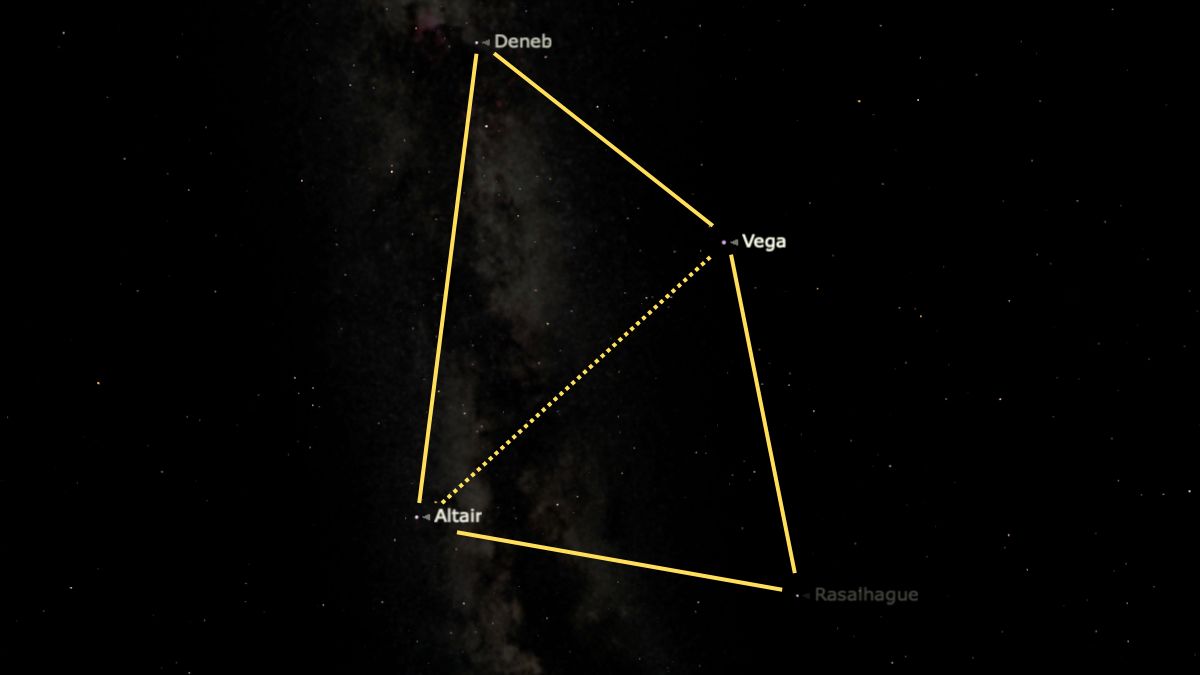
Summer is almost over. How do we know? The Summer Triangle of stars — Deneb, Vega and Altair — and beginning to sink in the west as it gets dark. After riding high all summer, the famous asterism is now looking lop-sided as the night wears on. However, it's got some staying power yet, with tonight offering the chance to make the triangle into a diamond. Face south, and you'll see Altair at the bottom of the triangle, at its tip, with Deneb high up above the east and Vega towards the west. Now make a triangle on the other side of Altair and Vega, with a reasonably bright star called Rasalhague. It's the brightest star in Ophiuchus, a large yet little-known constellation, one of the 13th zodiacal constellations. With Deneb opposite, Rasalhague makes a Summer Diamond shape. — Jamie Carter
TUESDAY, SEPT. 17 - MOON OCCULTS SATURN (PRE-DAWN)
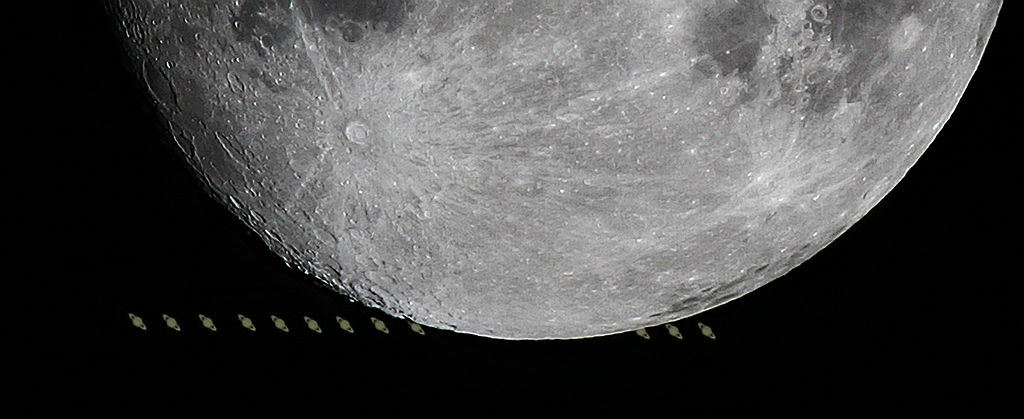
Last month, sky-watchers in Europe saw Saturn occulted — covered up or eclipsed — by the moon. This month, it's the turn of those in North America to watch the ringed planet dramatically disappear for about 45 minutes behind an almost full moon. This lunar occultation of Saturn will take place between 4:08 a.m. and 8:07 a.m. EDT and will be visible along the western United States, Australia, western Canada and north-western Mexico, to name but a few. To see if the occultation is visible from your location, check out IntheSky.org.— Jamie Carter
Related: Astrophotographer captures Saturn vanishing behind the moon in mesmerizing photo.
TUESDAY, SEPT. 17 - FULL 'HARVEST SUPERMOON', A PARTIAL LUNAR ECLIPSE AND VENUS (AFTER SUNSET)
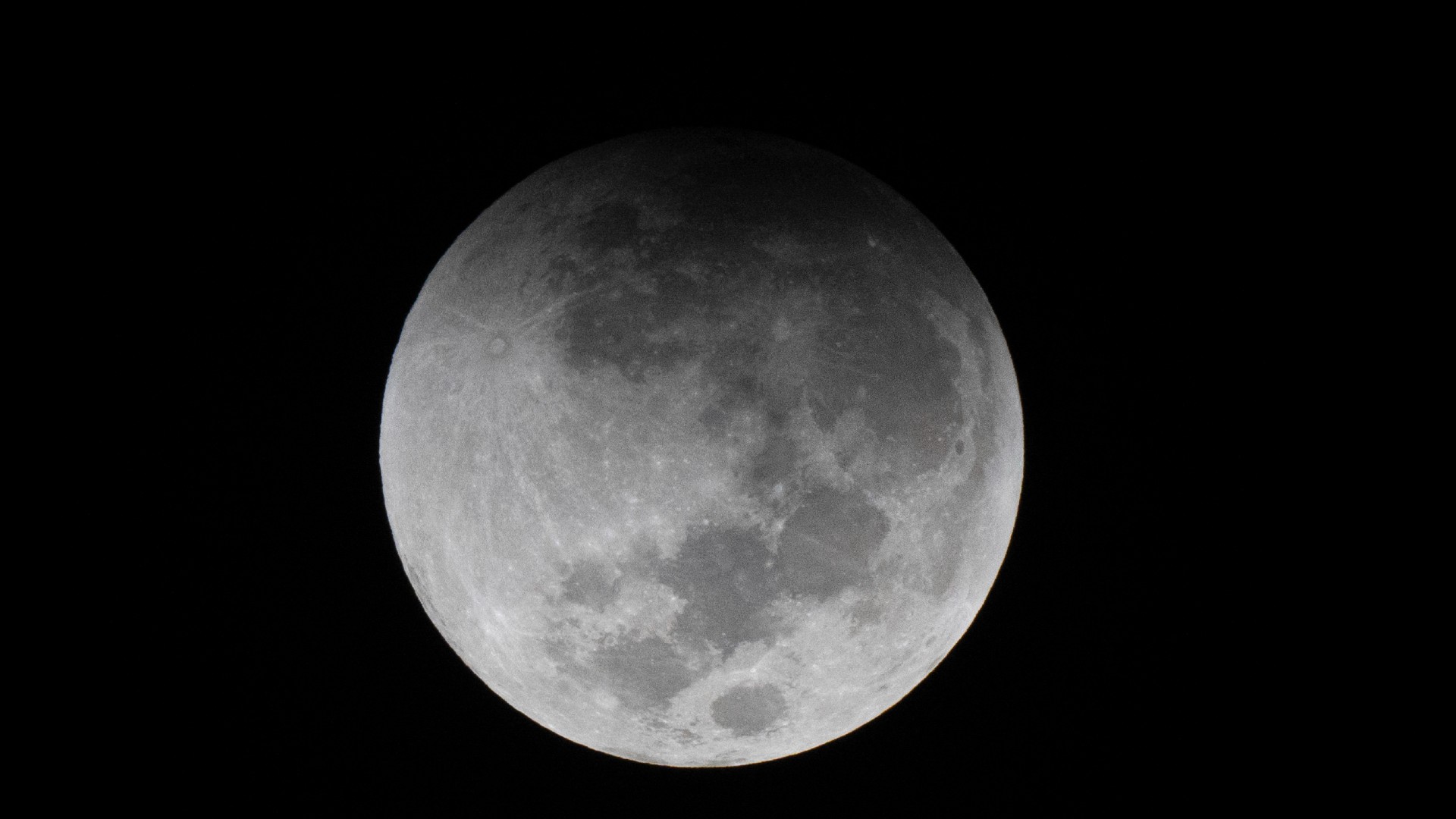
The Earth partially eclipsing the second-largest supermoon of the year may seem like a terrific double-header not to miss, but it's set to be a slightly underwhelming event. Although the moon turns full at 10:34 p.m. EDT, that's not when to look. Instead, look east at moonrise to make the best of the moon illusion, the human brain's strong tendency for the moon to appear larger than it is when it's just coming over the horizon. This phenomenon will explain why the rising "Harvest Moon" will look full rather than because it's a supermoon, which, although it places it closer to Earth than on average, will make no discernable difference to its visible size. For the proof, go look at the full moon once it's risen higher —it won't look any different from any other. As a bonus, on the other side of the sky at moonrise, bright Venus will shine close to Spica.
Later in the evening, a partial lunar eclipse will occur. It will see only a small slither of the moon's edge (just 8.4%) recede into Earth's central shadow, with the best time to view it 10:12-11:15 p.m. EDT (3:12-4:15 a.m. GMT on Wednesday, Sept. 18). However, it's also fun to watch the Earth's fuzzier penumbral shadow travel across the moon. You can get a full schedule for your location on Timeanddate.
Wherever you watch the full "supermoon" rise from today, watch for Saturn to its upper-right. — Jamie Carter
Read more: Don't miss the Harvest Moon Supermoon lunar eclipse tonight! Here's what to expect
Editor's note: If you are unable to watch the lunar eclipse in person you can watch all the action unfold online here on Space.com. We have rounded up several lunar eclipse livestreams that are showing the Super Harvest Moon on Sept. 17.
WEDNESDAY, SEPT. 18 - A TRUE 'HARVEST SUPERMOON' (PRE-DAWN)
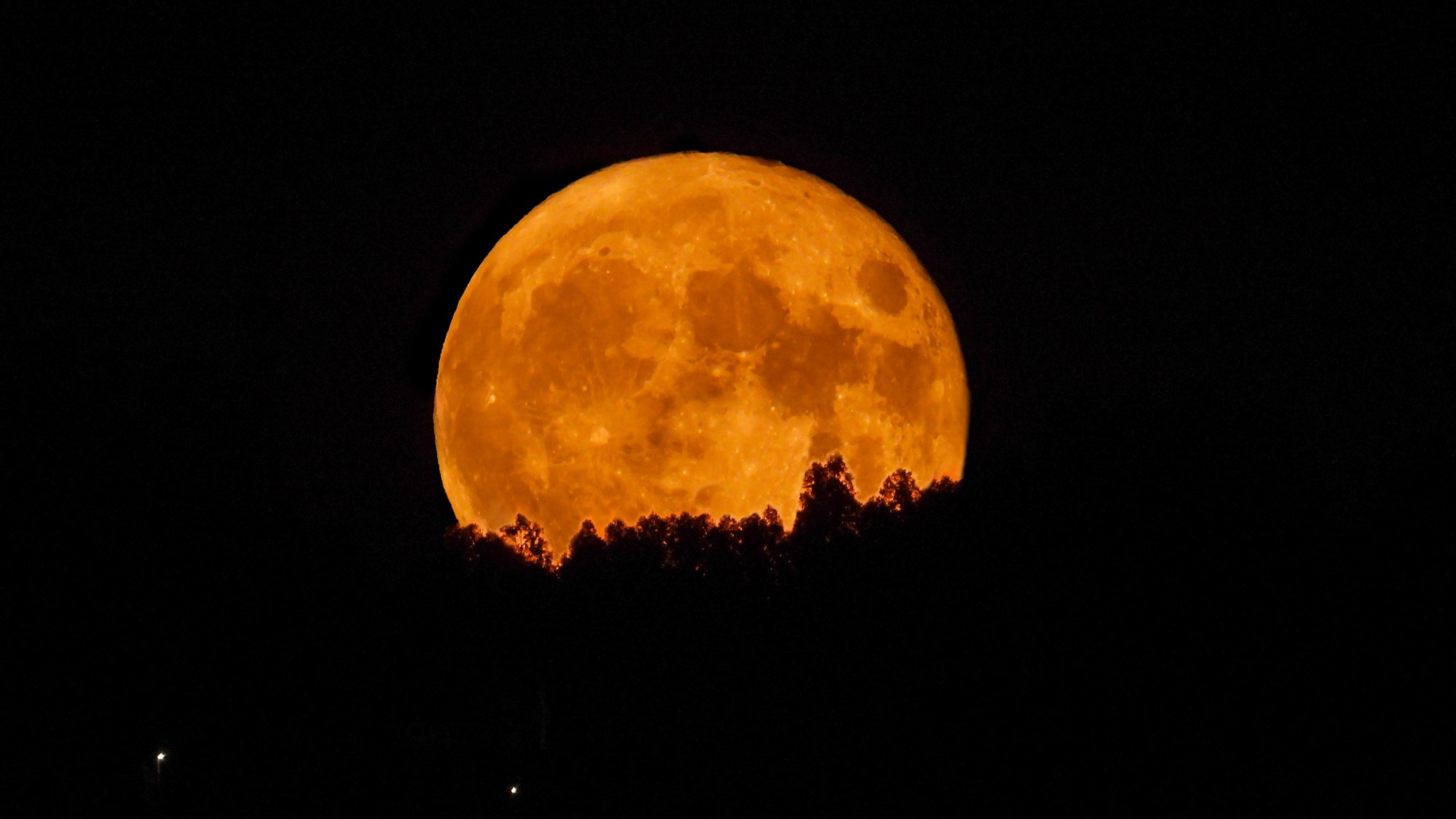
Although it was yesterday that the "supermoon" was celebrated, it's early this morning that the moon reaches perigee — its closest point to Earth on its slightly elliptical monthly orbital path. It reached that point at 8:26 a.m. EDT today. So, if you catch it close to moonset where you are, you'll see the true "supermoon." However, it won't be quite full — see its slightly ragged lower-right edge (as seen from the northern hemisphere). Come back at moonrise later today and you'll see an almost full moon with a slightly more ragged top-right edge. — Jamie Carter
THURSDAY, SEPT. 19 - THE NORTHERN CROSS
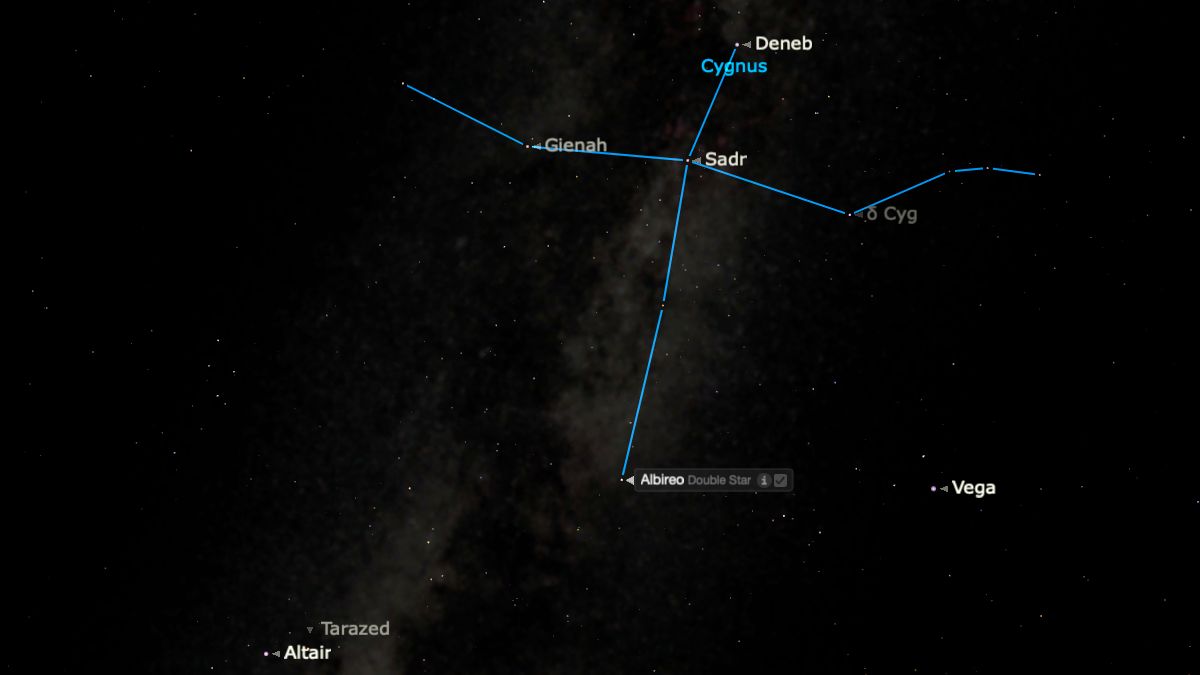
The Southern Cross is a fabulous sight for those in the Southern Hemisphere, but did you know there's also a Northern Cross? It's more commonly known as the constellation Cygnus, the swan, though it looks much more like a cross than a bird to most eyes. Face southeast tonight anytime after dark, and you should be able to pick out Deneb, a bright star and one of the corners of the famous Summer Triangle asterism. Return to Debeb, and you'll see three stars close to it within the Summer Triangle and another single star in the middle of the Summer Triangle, called Albireo. Put them together, and you have the head of a swan (Albireo) with the wings behind or, more obviously, a simple cross. — Jamie Carter
What to look for this weekend
FRIDAY, SEPT. 20 - FOMALHAUT (ALL NIGHT)
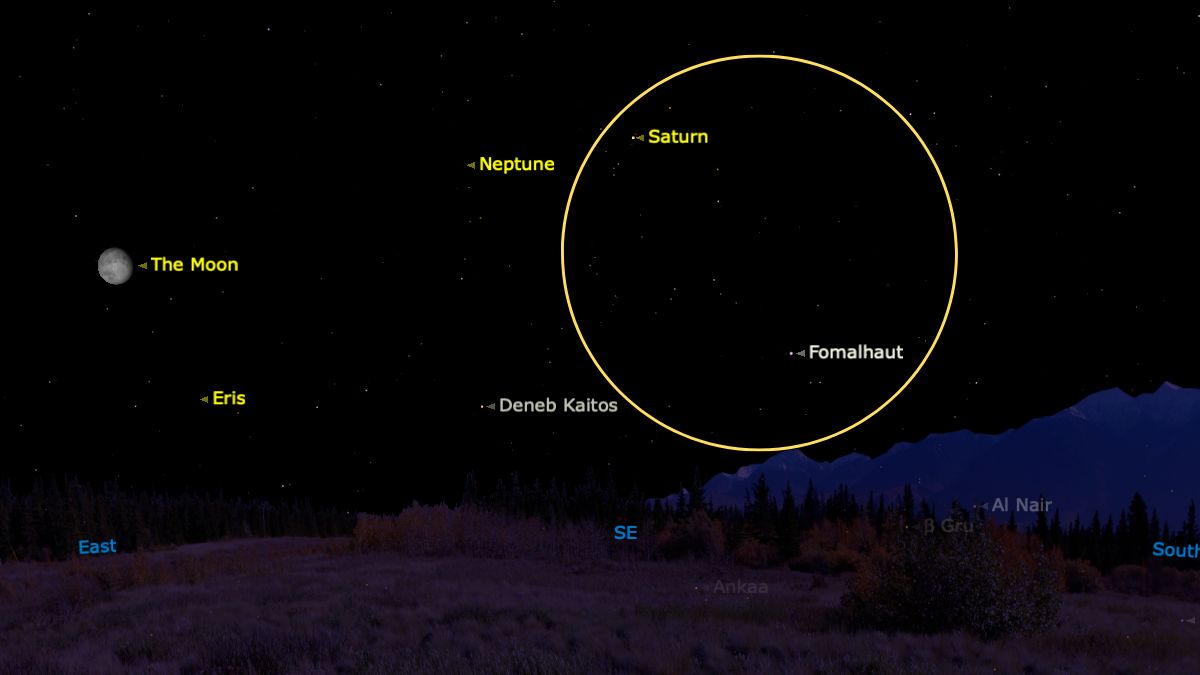
September is the perfect month to look for Fomalhaut, the "autumn star," from mid-northern latitudes. It's the 18th brightest star in the night sky, but one generally associated with the southern hemisphere. Those observing from about 40 degrees north and below can see it this month just above due south, below Saturn. It's in the constellation Piscis Austrinus, the southern fish, just 25 light-years away from the solar system. — Jamie Carter
Related: Fomalhaut: 'Eye of Sauron' With A 'Zombie Planet'
SATURDAY, SEPT. 21 - GREAT SQUARE OF PEGASUS (AFTER SUNSET)
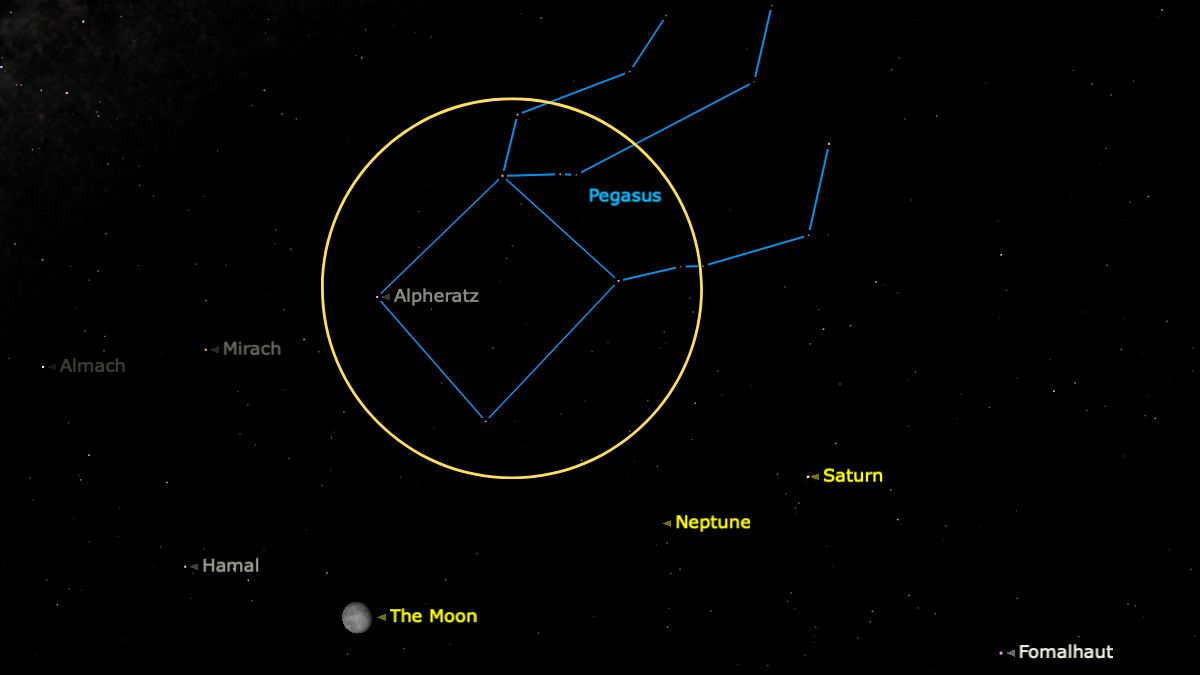
After it gets dark tonight — and any night this month — look to the east, and you'll quickly find four stars that appear to make a square (albeit on its side, so looking more like a diamond). It will be just to the right of the W-shaped constellation Cassiopeia.
The corner four stars — Scheat, Alpheratz, Markab and Algenib — make up the Great Square in the constellation of Pegasus. It's likely more prominent than you might expect, and it's hard to ignore after you've found it. Its rise in the east signals the coming of autumn, which begins tomorrow. — Jamie Carter
SUNDAY, SEPT. 22 - MOON AND THE PLEIADES ON THE EQUINOX (PRE-DAWN)
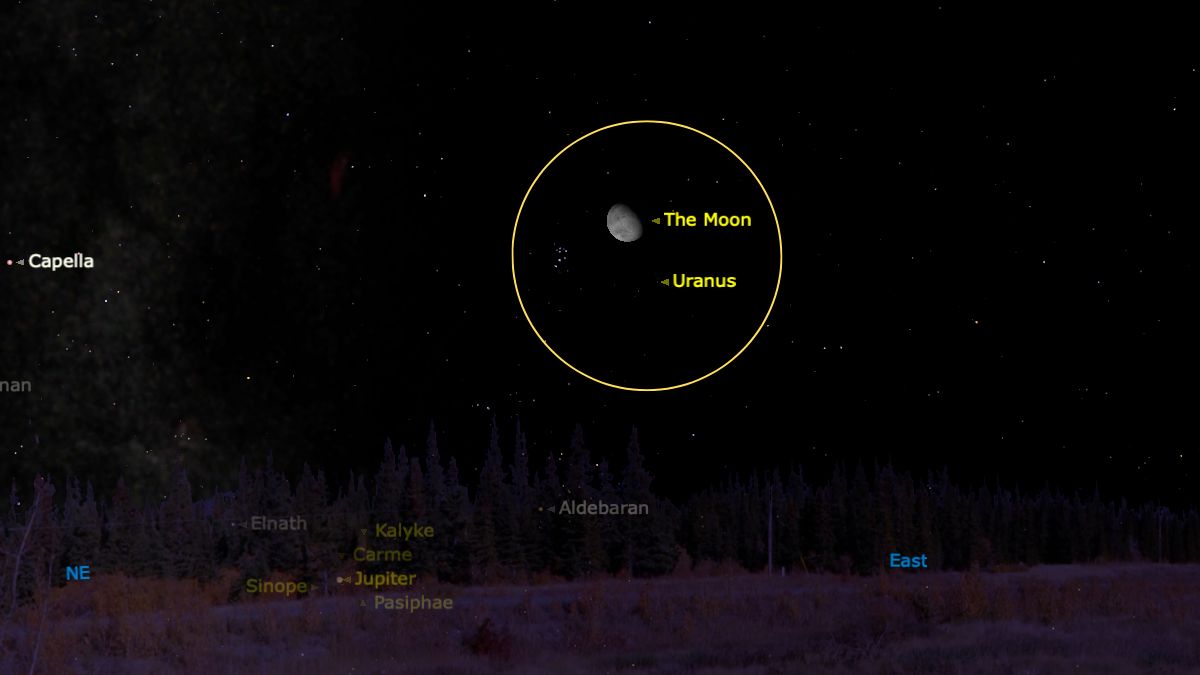
It's not something you can see, but today at 7:44 a.m. EDT is equinox, meaning equal night in Latin. It means roughly 12 hours of day and 12 hours of night worldwide (although that technically occurs on Sept. 26 for 40 degrees latitude). It's a landmark moment of the year for stargazers and amateur astronomers in the northern hemisphere because there will finally be more darkness than daylight.
However, today's real attraction is the close pass of the 75%-illuminated waning gibbous moon and the Pleiades. There will be just 0.2 degrees between the two at 5:17 a.m. EDT. Uranus will be just below but too dim to see with the naked eye. — Jamie Carter
Read more: See the moon meet up with the Seven Sisters of the Pleiades this weekend
MONDAY, SEPT. 23 - LAST CHANCE FOR THE MILKY WAY (ALL NIGHT)

With the moon rising late at night, there's one last window of moonless dark skies to see the Milky Way while it's still prominent. Now sinking into the southwestern horizon, it's still an incredible sight if you can escape light pollution. You should get a fantastic view any night for the rest of this month. Come October, however, it will be lost in the horizon haze, not returning to view until April. — Jamie Carter
TUESDAY, SEPT. 24 - LAST QUARTER MOON (ALL NIGHT)
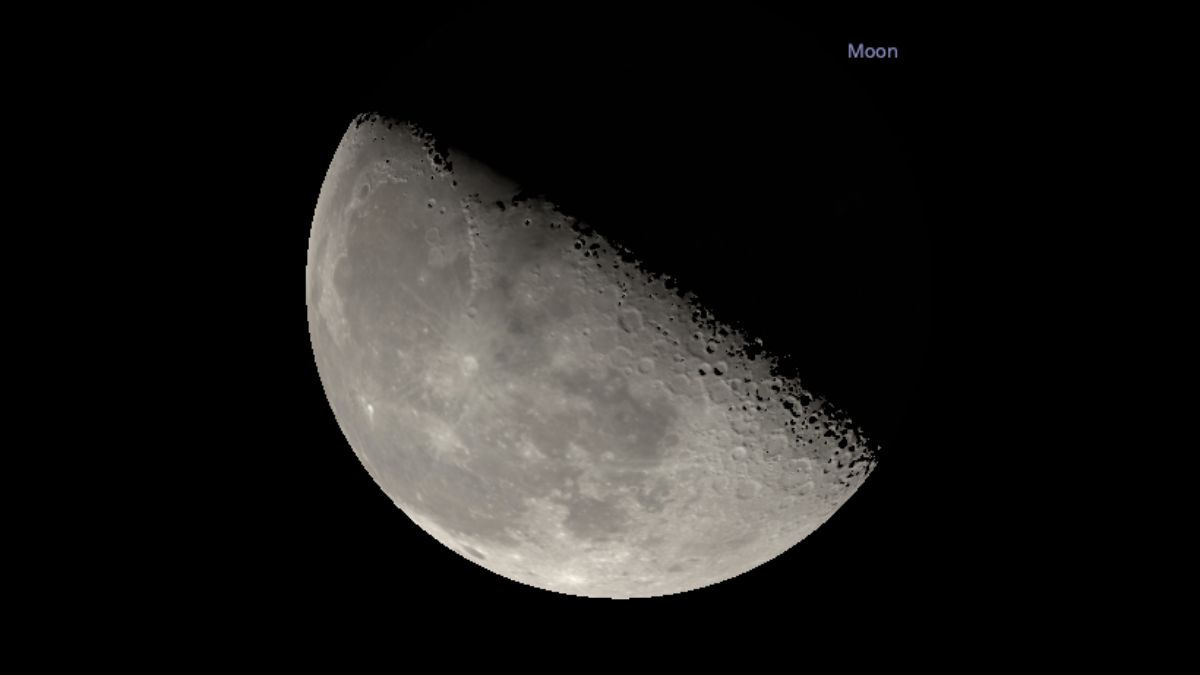
The moon will rise half-lit in the east at midnight tonight, as seen from Earth. That's because it reaches the Last Quarter (also called the Third Quarter), which marks the completion of three-quarters of its monthly journey around the sun. That moment officially comes at 2:50 p.m. EDT when the moon is below the horizon for those in North America.
Its left-hand half will be illuminated, as observed from the northern hemisphere. It will set in the west around midday on Wednesday, Sept. 25. — Jamie Carter
WEDNESDAY, SEPT. 25 - A PREVIEW OF THE WINTER NIGHT SKY (PRE-DAWN/AFTER SUNSET/ALL NIGHT)
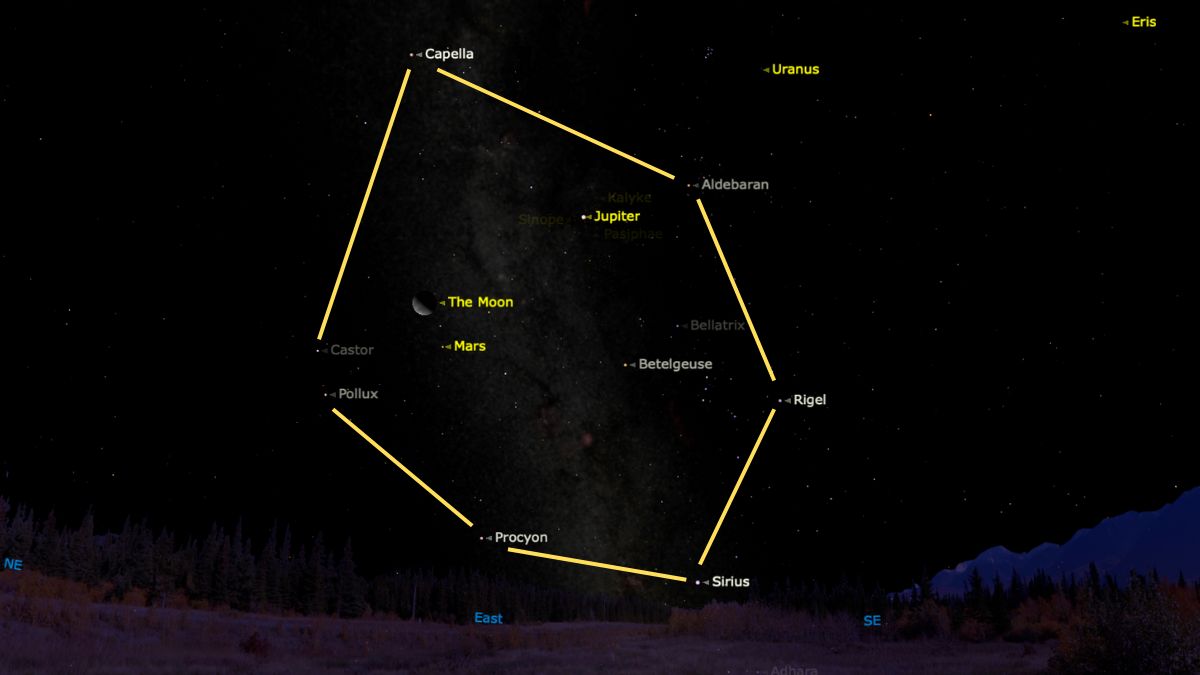
Few people realize that the stars rise four minutes earlier each night, returning to where they are precisely 23 hours and 56 minutes later. This is what astronomers call a sidereal day, and over a month, it means stars rise two hours earlier. Today that means you can effectively go stargazing at 4:00 a.m. on Sept. 25, look east, and see the same sky as you would see at 10:00 p.m. in December.
You'll see some of the brightest stars in the night sky in the famous winter constellations: Rigel and Betelgeuse in Orion (as well as Orion's belt rising on its side), Aldebaran in Taurus, Capella in Auriga, Pollux and Castor in Gemini, Procyon in Canis Minor and Sirius in Canis Major.
With Betelgeuse at the center, you can trace-put the stars to make a vast shape known variously as the Great Hexagon, also known as the Winter Hexagon and Winter Circle.
As a bonus, you'll find Jupiter above Betelgeuse and Mars to its left, about four degrees (the span of your three middle fingers at arm's length) from a waning crescent moon.— Jamie Carter
Related: How to see the 'Great Hexagon' of bright winter stars
THURSDAY, SEPT. 26 - MOON AND POLLUX
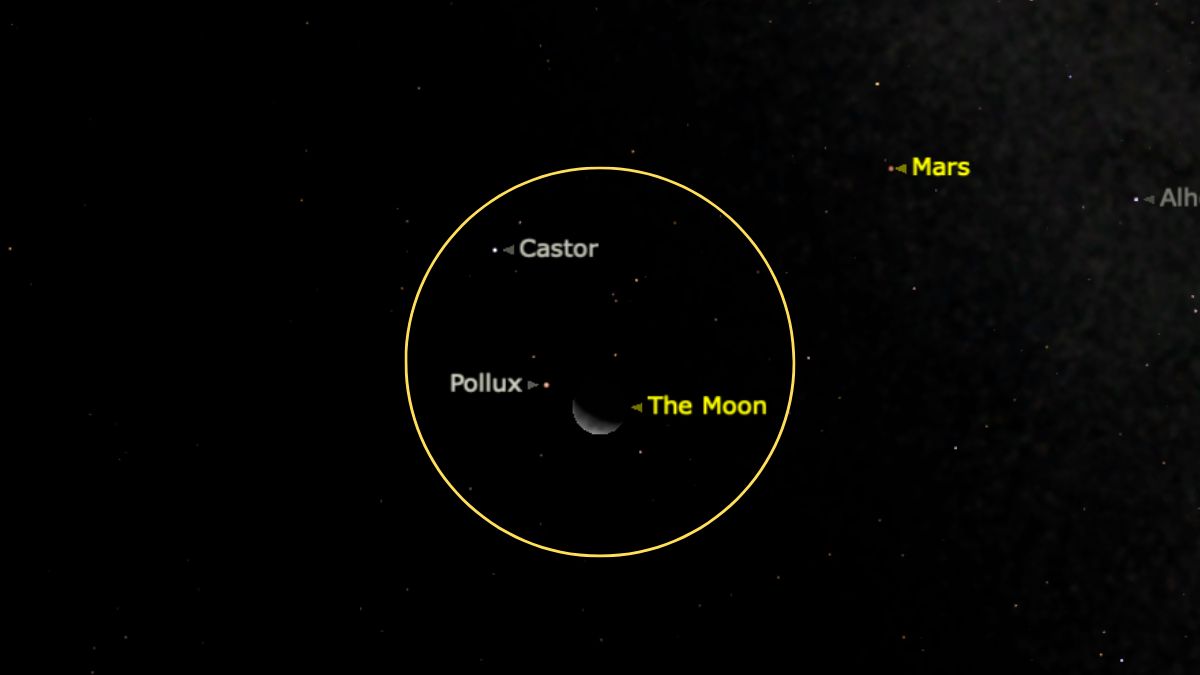
Pollux is the brightest star in the constellation Gemini and one of the most colorful in Earth's sky. It's also one of the closest bright stars at just 34 light years. This morning it will shine just 1.6 degrees from the waning gibbous moon (about the width of your pinky finger at arm's length), about a third of which will be illuminated tonight. — Jamie Carter
FRIDAY, SEPT. 27 - COMET TSHUCHINSHAN-ATLAS (PRE-DAWN)
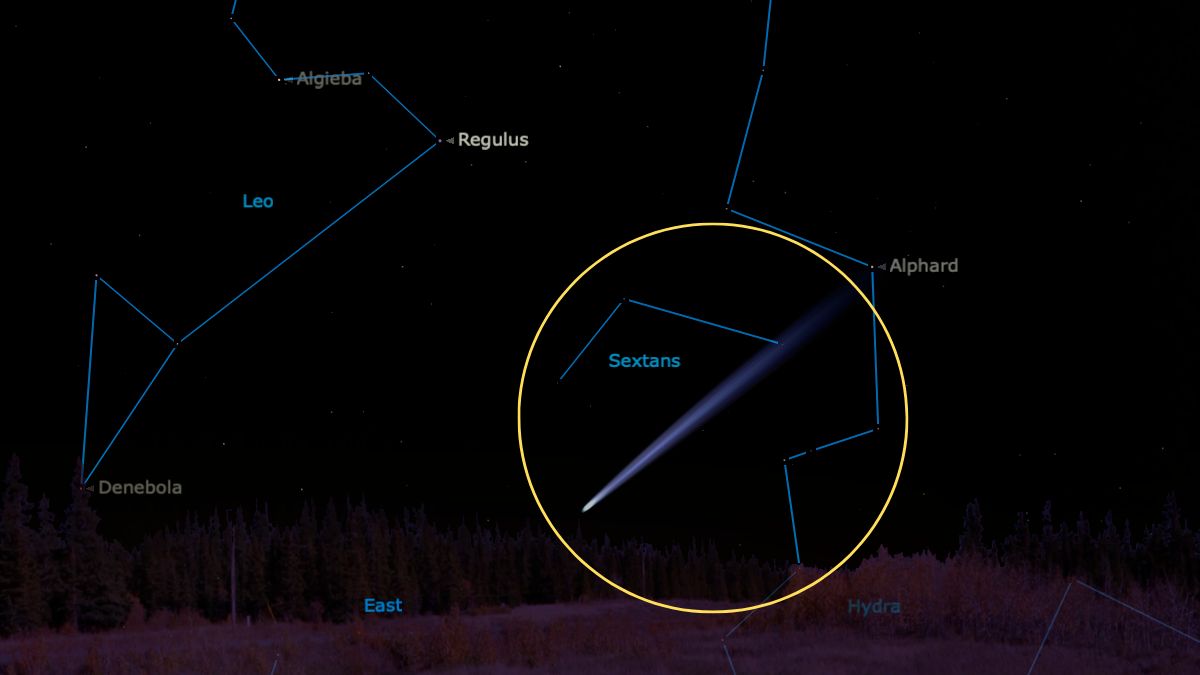
Early Friday morning, we could see the first opportunity for sky-watchers in the northern hemisphere to glimpse Comet C/2023 A3 (Tsuchinshan-ATLAS). It arrives today at perihelion — its closest point to the sun — as it gets to within 36 million miles (58 million km) of our star. That means it should reach peak brightness. Comets are fickle and hard to predict, but it's possible it could be visible to the naked eye. To see if that prediction comes true, be outside looking east-southeast an hour before sunrise. — Jamie Carter
FOR THE WEEKEND AHEAD
SATURDAY, SEPT. 28 - COMET TSHUCHINSHAN-ATLAS (PRE-DAWN)
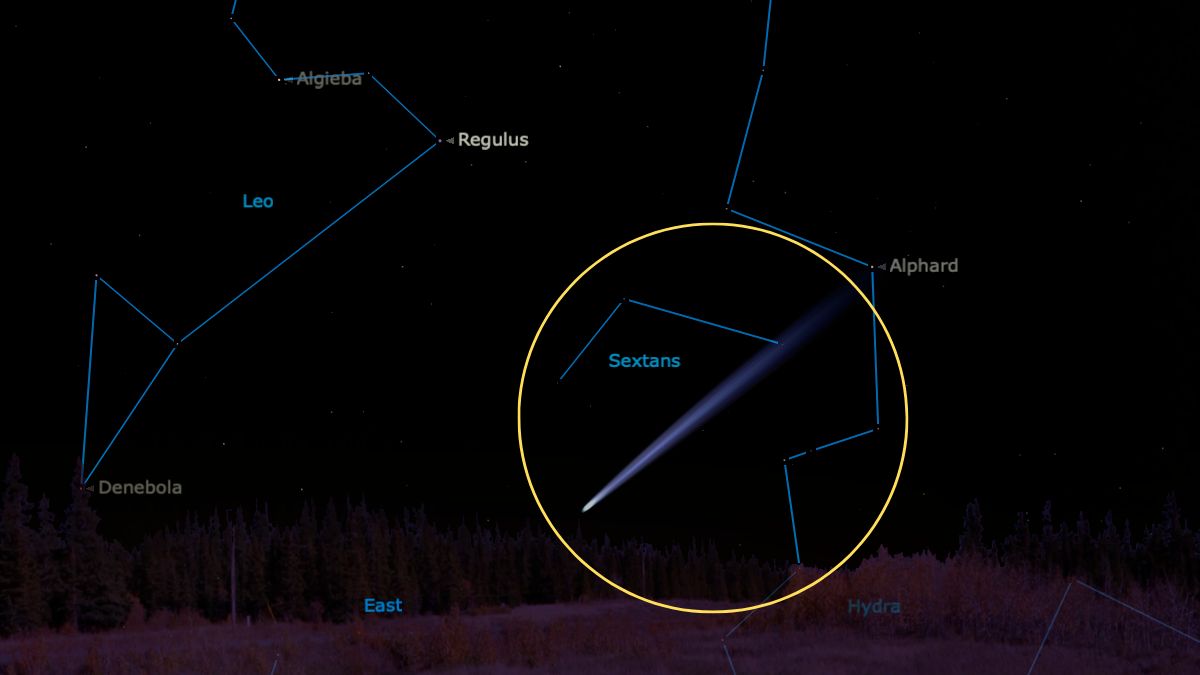
If you're up for an early start to the weekend, this morning presents another great chance to try for a naked-eye view of Comet C/2023 A3 (Tsuchinshan-ATLAS). That said, given the fickle of comets, it may be wise to have a pair of the best binoculars or one of the best telescopes to give yourself the best chance. Also, check out how to photograph comets, our best cameras for astrophotography and the best lenses for astrophotography. — Jamie Carter
SUNDAY, SEPT. 29 - COMET TSHUCHINSHAN-ATLAS (PRE-DAWN)
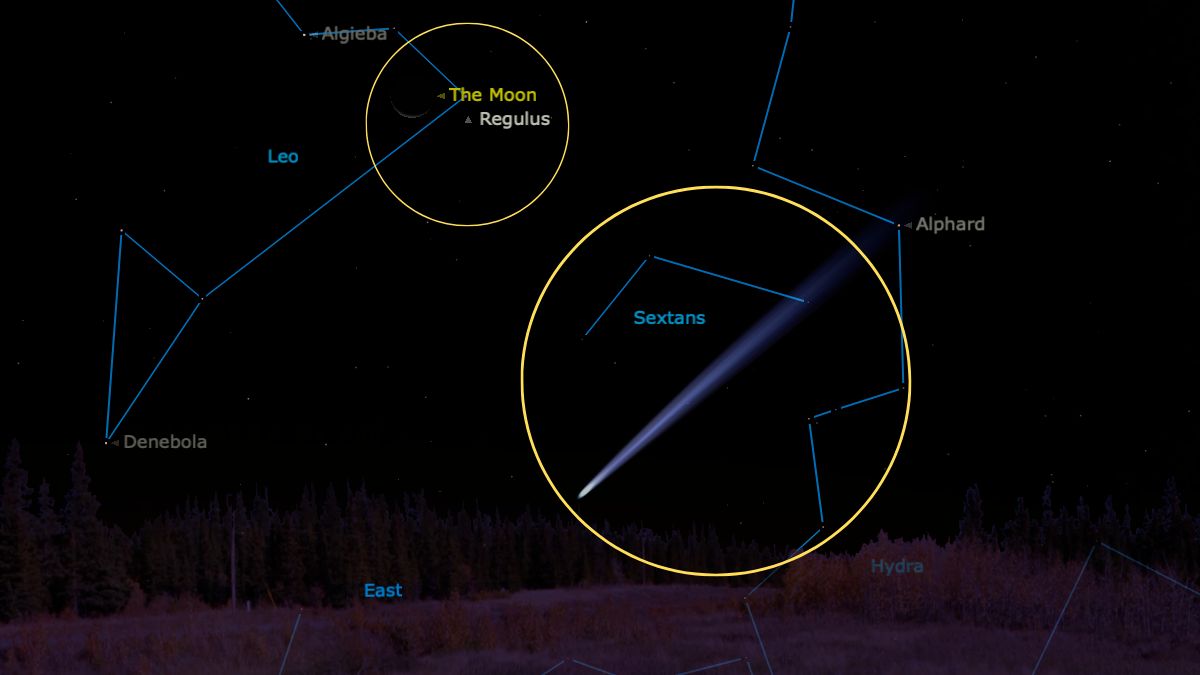
MONDAY, SEPT. 30: COMET A3 (TSUCHINSAN-ATLAS) (PRE-DAWN)
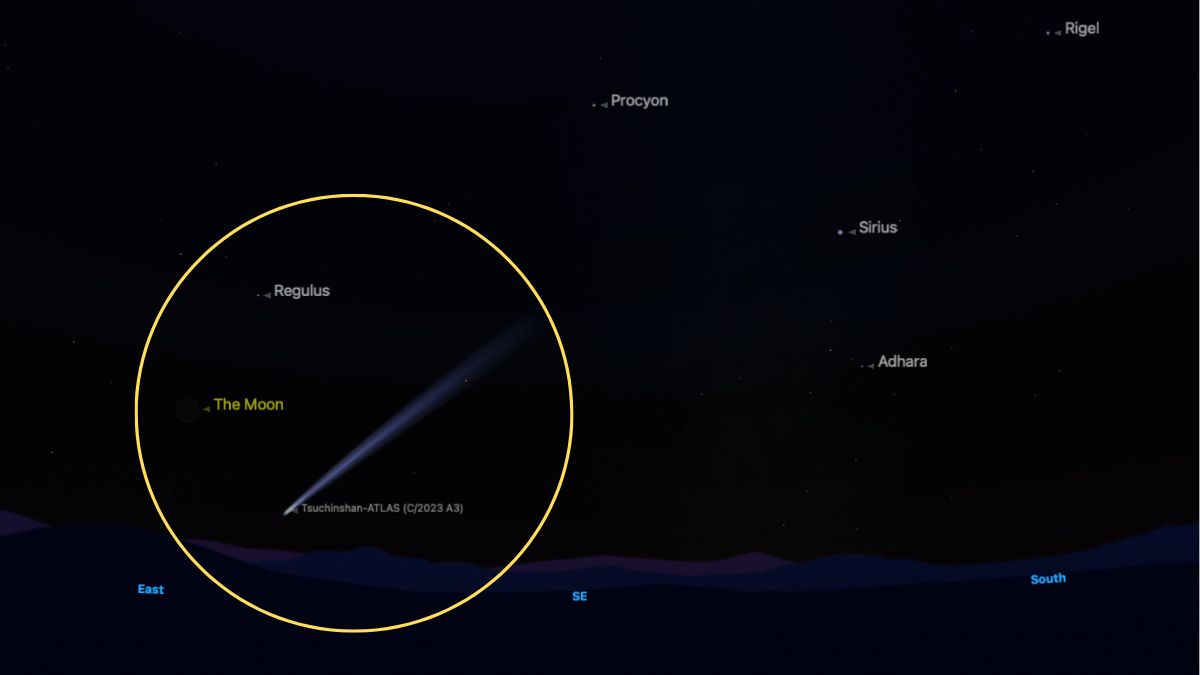
Here's a chance for sky-watchers in the northern hemisphere to glimpse Comet C/2023 A3 Tsuchinshan-ATLAS before it disappears for a few weeks. Now, three days after its perihelion — its closest point to the sun — it may be getting less bright and tougher to see before sunrise as it retreats into the sun's glare. Look east-southeast an hour before sunrise. — Jamie Carter
TUESDAY, OCT. 1: COMET A3 (TSUCHINSAN-ATLAS) (PRE-DAWN)
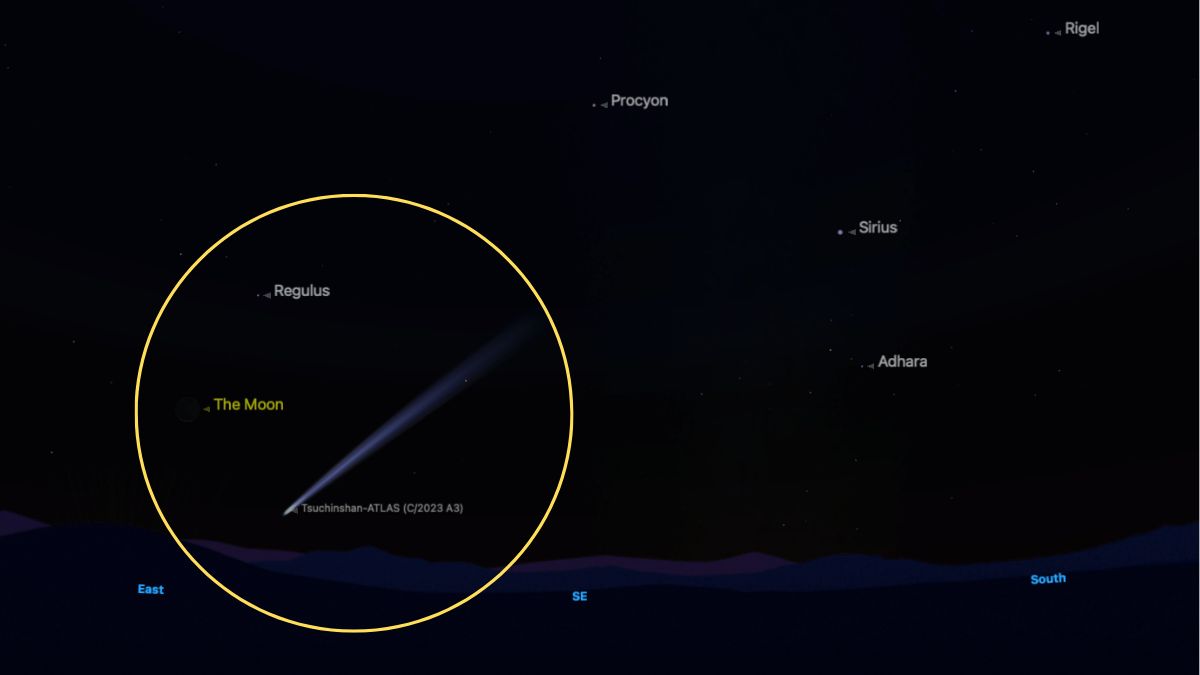
Here's one last chance for those in the northern hemisphere to try for a naked-eye view of Comet C/2023 A3 Tsuchinshan Atlas before it's only visible to those in equatorial regions for a few mornings. If you're having trouble finding it in the horizon haze, consider using a pair of binoculars or a telescope to give you a better chance. If you want a souvenir shot, see how to photograph comets, the best cameras for astrophotography and the best lenses for astrophotography. — Jamie Carter
WEDNESDAY, OCT. 2: 'RING OF FIRE' ANNULAR SOLAR ECLIPSE

Did you see the total solar eclipse on April 8? Here's the follow-up. There are at least two solar eclipses yearly, but not all are total. What happens today is an annular solar eclipse, where the new moon passes directly in front of the sun but doesn't cover it completely. Since the moon will be farther from Earth than on April 8, its disk will be too small to completely cover the sun, creating instead a "ring of fire."
To see the ring today, you'll need to be within a narrow 165 miles (267 kilometers) wide path stretching 8,800 miles (14,163 kilometers) across the Pacific Ocean, South America (the Patagonia region of southern Chile and Argentina) and the South Atlantic Ocean. It's a sparsely populated area, home to just 175,000 people. Most eclipse chasers are headed to Easter Island (Rapa Nui, a remote island 2,200 miles (3,540 km) west of Chile. Much of South America will see a partial solar eclipse. Everyone, whether in the path or not, will need to wear solar eclipse glasses or use solar filters on telescopes and binoculars to observe the event safely. — Jamie Carter
Editor's note: You can keep up with all the solar eclipse action with our solar eclipse live blog. We will also be streaming the eclipse live on Space.com.
THURSDAY, OCT. 3: MILKY WAY (AFTER SUNSET)

The Milky Way is always visible in the night sky, but it's only prominent between April and October in the Northern Hemisphere. This week is a good time to get a last look at the bright star fields of Sagittarius and Scorpius. You must be in a dark sky destination, such as a Dark Sky Place or anywhere that looks dark on a light pollution map. Look south as soon as it gets completely dark. You'll see the Milky Way's center, its brightest section, close to the horizon, with a stream of stars thinning out as it arcs high above your head through Cassiopeia, a constellation of five stars shaped like the letter W. You just saw the Perseus Arm of the Milky Way. — Jamie Carter
NIGHT SKY: FRIDAY, SATURDAY AND SUNDAY
FRIDAY, OCT. 4: GO 'ARC TO ARCTURUS' (AFTER SUNSET)
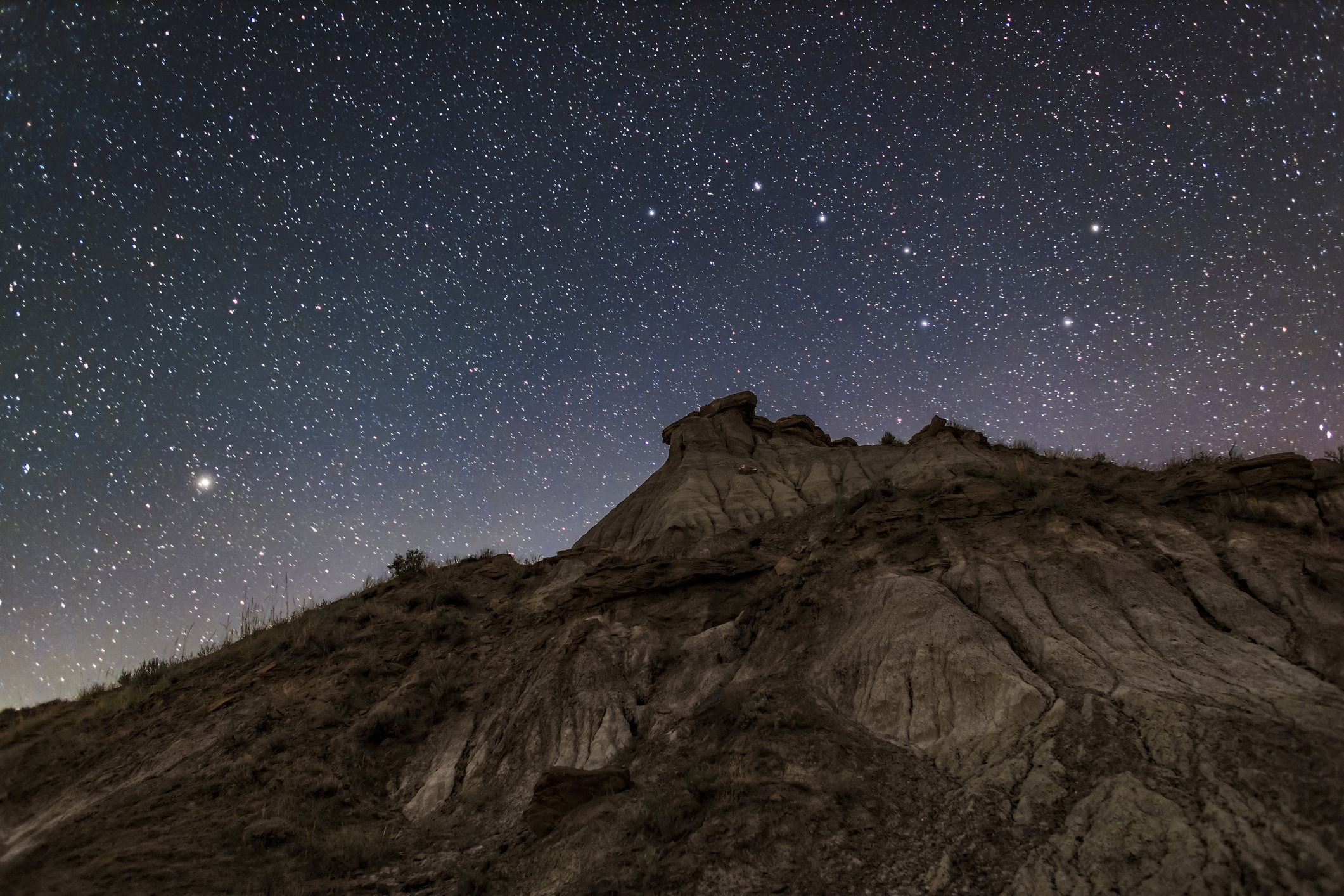
Here's a famous star-hop that will work well this month but be nearly impossible by November. Face north-northwest when it gets completely dark, and you'll see the familiar shape of the Big Dipper, its seven stars shaped like a bowl (on the right) and a handle(on the left). Follow the curve of its handle and keep going, and you'll reach Arcturus, which is low above the western horizon. About two hours after sunset, Arcturus will set, and the Big Dipper will be dead on the northern horizon. — Jamie Carter
SATURDAY, OCT. 5: CRESCENT MOON AND VENUS (AFTER SUNSET)
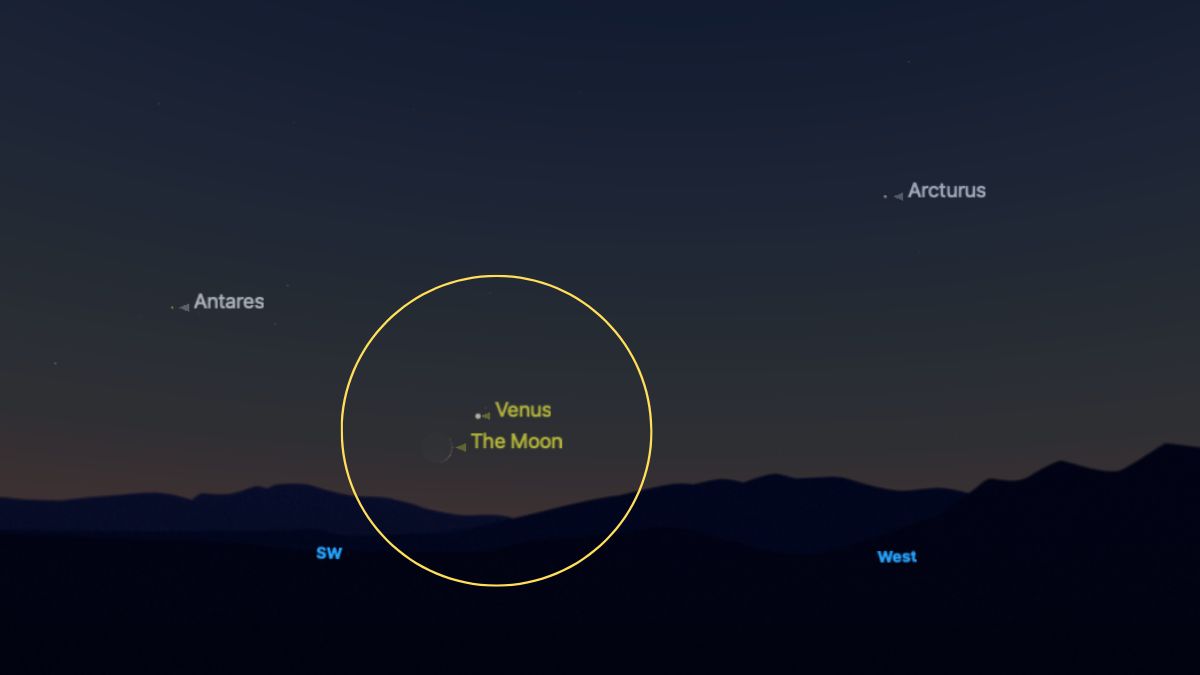
A delicate crescent moon beside Venus is one of the sky's most beautiful sights and one of October's sky-watching highlights. It's on offer to anyone who looks southwest in a clear sky immediately after sunset tonight, where a delicate 9%-lit waxing crescent moon will shine very low on the horizon just below and left of the planet. They'll be about four degrees apart, the span of your three middle fingers at arm's length. Venus will likely be easier to see. — Jamie Carter
SUNDAY, OCT. 6: CRESCENT MOON AND VENUS (AFTER SUNSET)
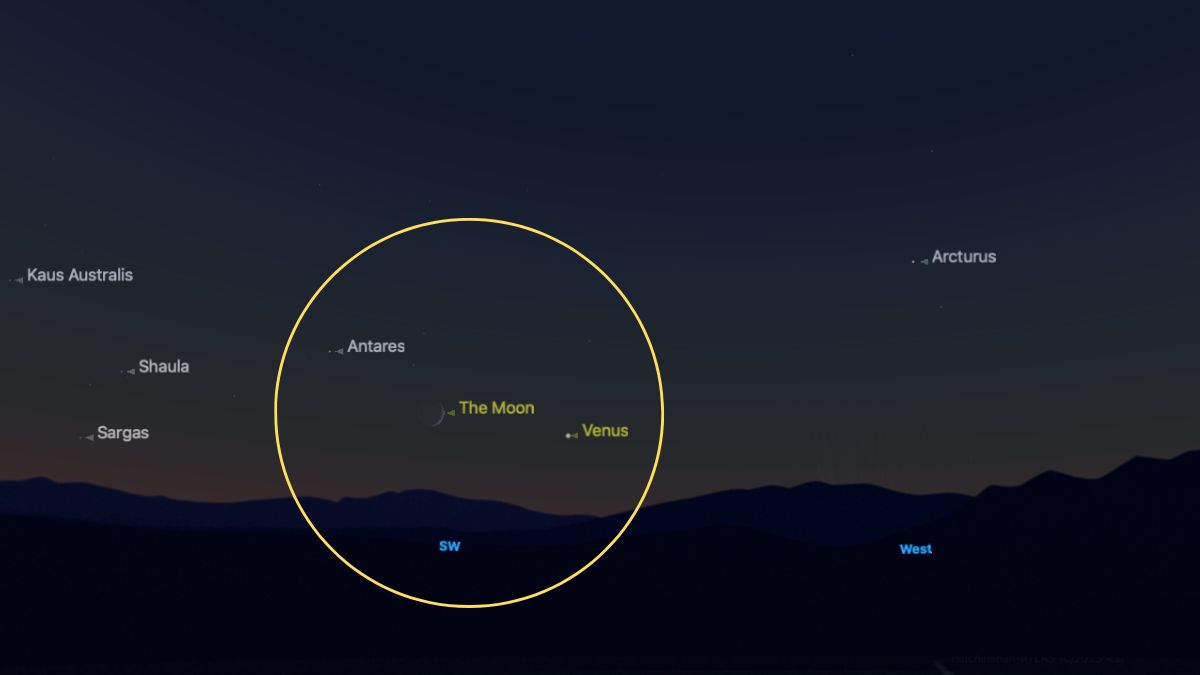
Although the moon has moved another 27th of its journey around Earth, it's still a slim crescent and remains very close to Venus. Tonight, the 15%-lit waxing crescent will shine to the left of Venus and will likely be easier to see than last night. You'll also see "Earthshine" on the moon's dark limb — sunlight reflected from Earth's oceans and ice caps. — Jamie Carter
MONDAY, OCT. 7: DRACONIDS METEOR SHOWER AND CRESCENT MOON AND ANTARES (AFTER SUNSET)
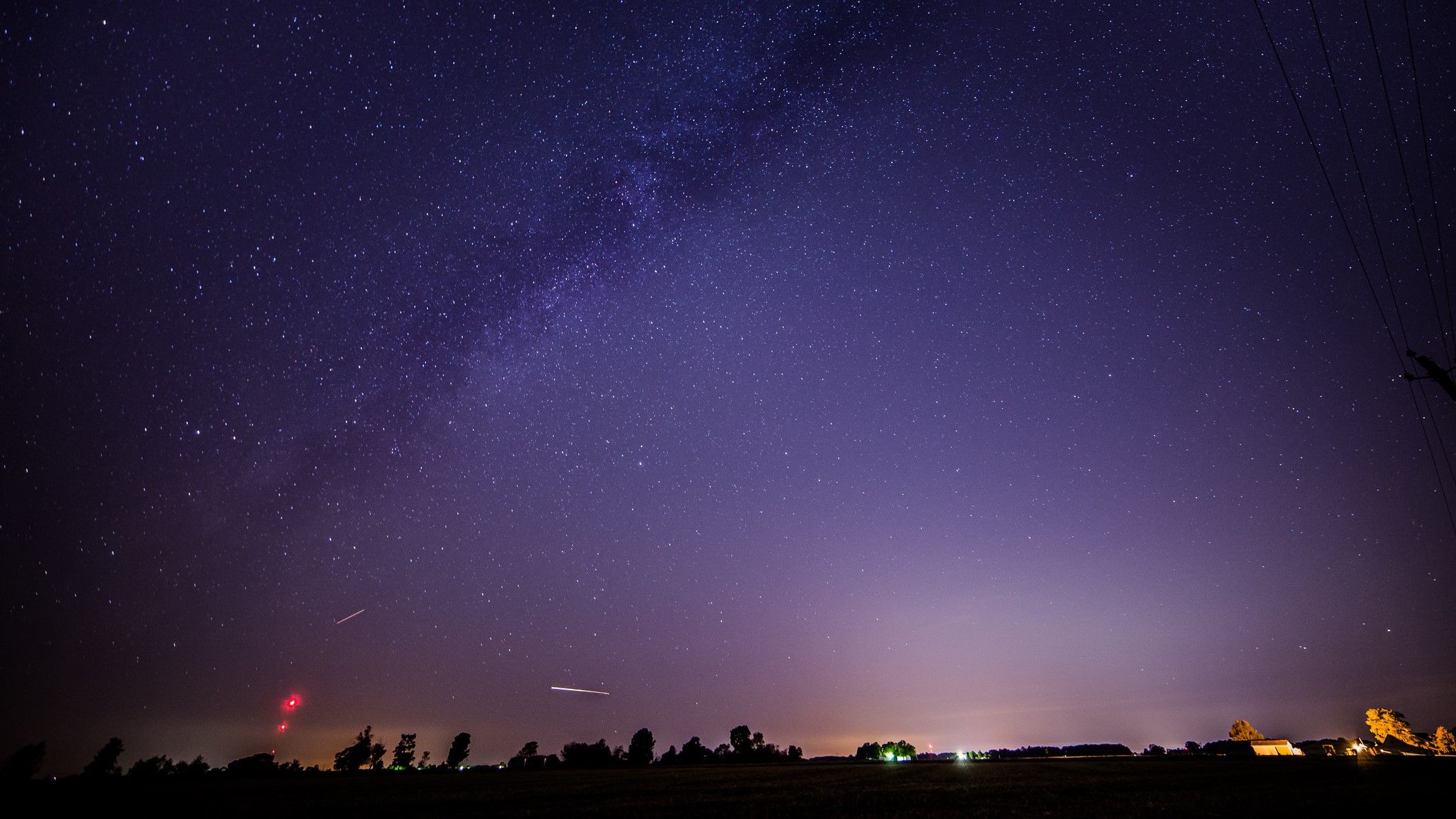
Oct. 7's Draconid meteor shower will appear to travel from the northern sky, close to the Big Dipper. (Image credit: Haitong Yu via Getty Images)
Hope for clear skies to the north today. If you're in the northern hemisphere, arguably the year's most convenient meteor shower, the Draconids, will peak. Rates of "shooting stars" tend to peak when the course constellation is highest in the sky, typically after midnight. However, since Draco is circumpolar (appearing to rotate around Polaris, the North Star), it's always visible, so you may see some as soon as it gets dark. As twilight fades, don't forget to look to the southwest, where a now 23%-lit waxing crescent moon will shine just a couple of degrees from Antares in Scorpius. — Jamie Carter
THURSDAY, OCT. 10: FIRST QUARTER MOON
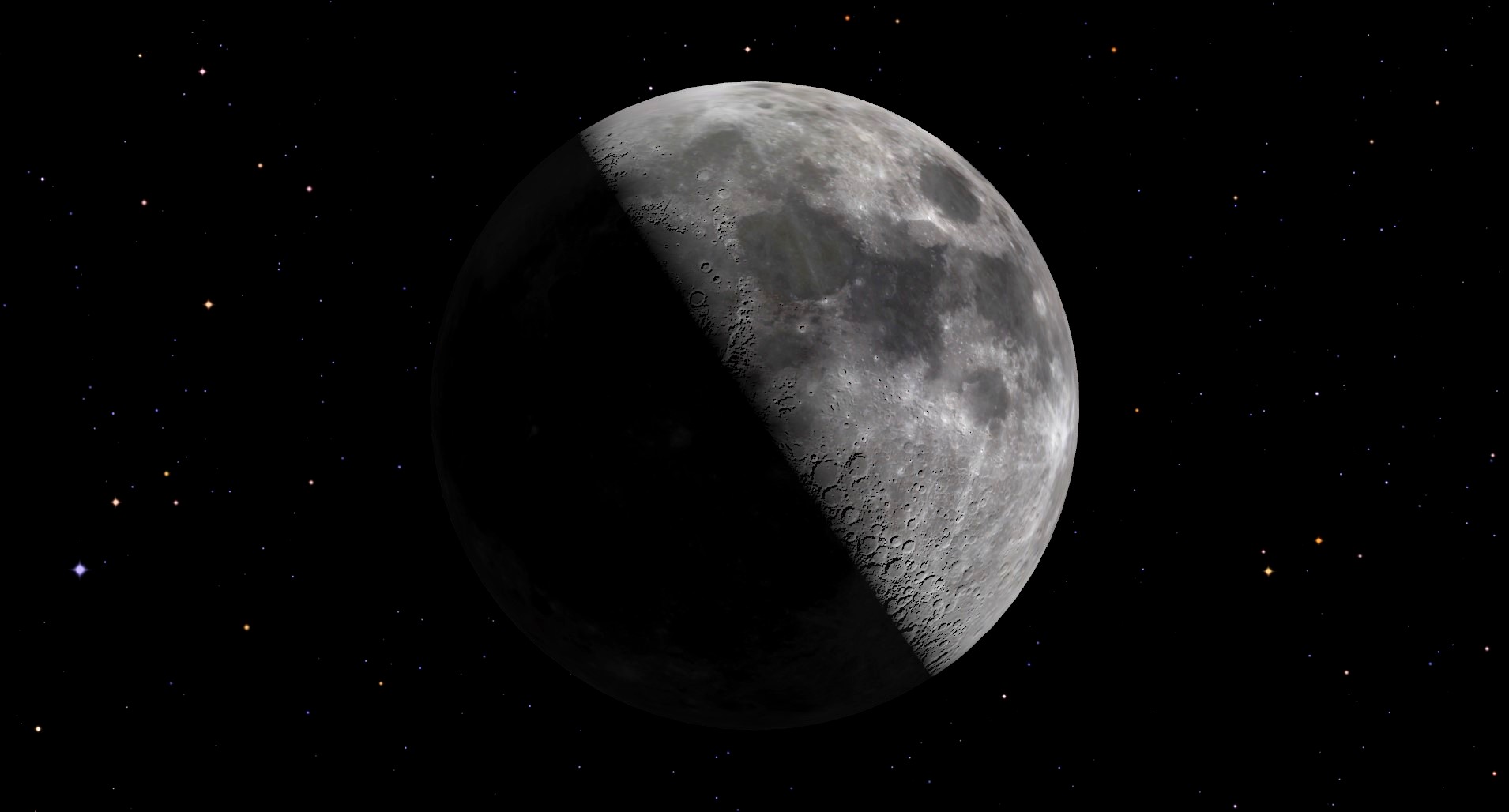
The name of today's phase of the moon is rather misleading. At first quarter, the moon appears half-lit — as it always is — with only one side illuminated as seen from Earth. Earth's perspective is everything when it comes to the moon. It's tidally locked to Earth, so it always shows the same face and rotates only once with respect to the sun in each orbit. Where you are on Earth with respect to the equator affects what a first-quarter moon looks like; from the northern hemisphere, the moon's right-hand side is lit, while from the southern hemisphere, it's the left-hand side. Either way, the first quarter moon is when the night skies begin to get brightly lit by moonlight in the early evenings, making stargazing trickier. — Jamie Carter
FRIDAY, OCT. 11: SUMMER TRIANGLE POINTS AT THE MOON (AFTER SUNSET)
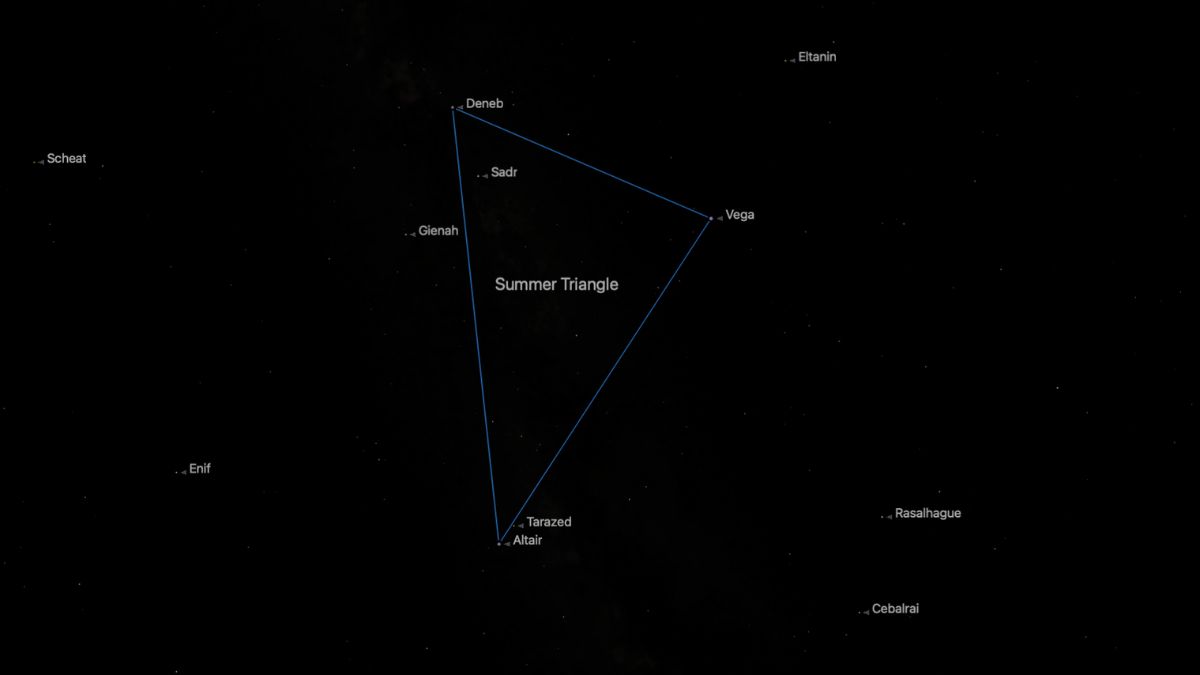
After dark on Oct. 11, look for the Summer Triangle high in the sky above the moon. (Image credit: Starry Night/Jamie Carter)
The most famous shape from July through fall is the Summer Triangle, a vast asterism with three bright stars — Vega, Deneb and Altair — making its corners. It's on the wane by now, but it's still prominent. After dark tonight, it will be visible high above the southwest, appearing to point like an arrowhead at the now 63%-lit waxing gibbous moon in the south. — Jamie Carter
SUNDAY, OCT. 13: COMET TSUCHINSAN-ATLAS (AFTER SUNSET)
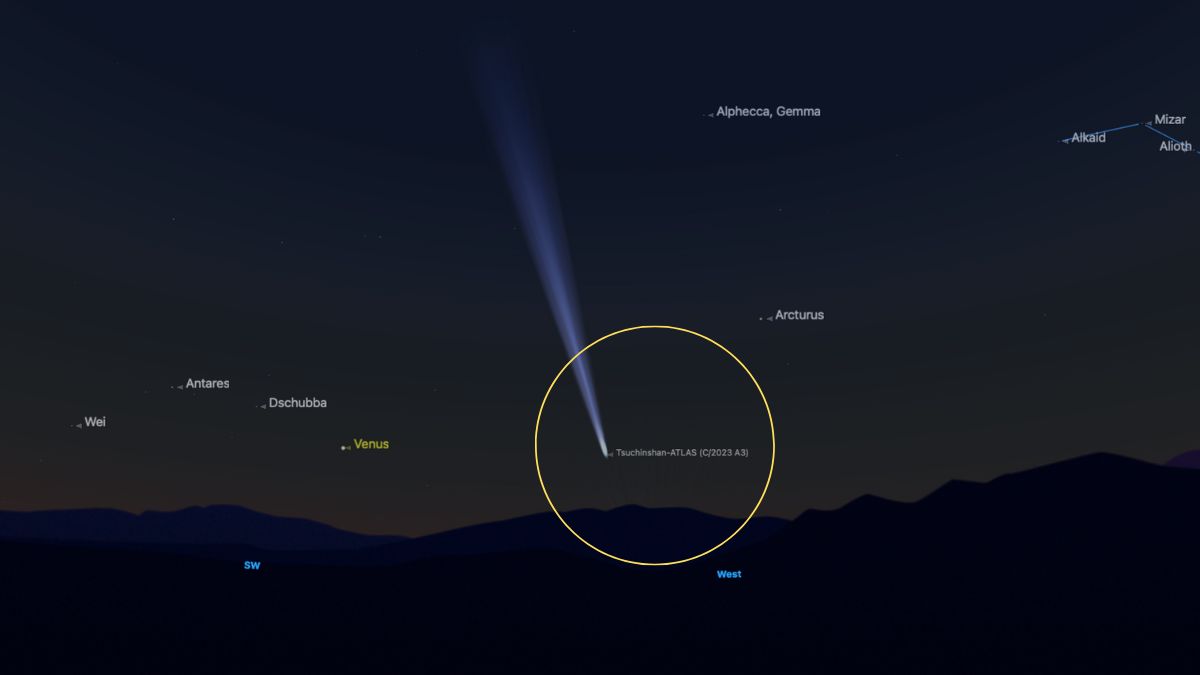
Look again to the western sky after dark to have another slight chance of seeing Comet C/2023 A3 (Tsuchinshan-ATLAS) and its tail, either with your naked eyes or using a pair of binoculars or a telescope to give you a better chance. Today, we also see the opening of the launch window for NASA's EscaPADE mission to Mars, which will launch on the debut flight of Blue Origin's New Glenn rocket. — Jamie Carter
MONDAY, OCT. 14: WAXING GIBBOUS MOON AND SATURN (AFTER SUNSET)
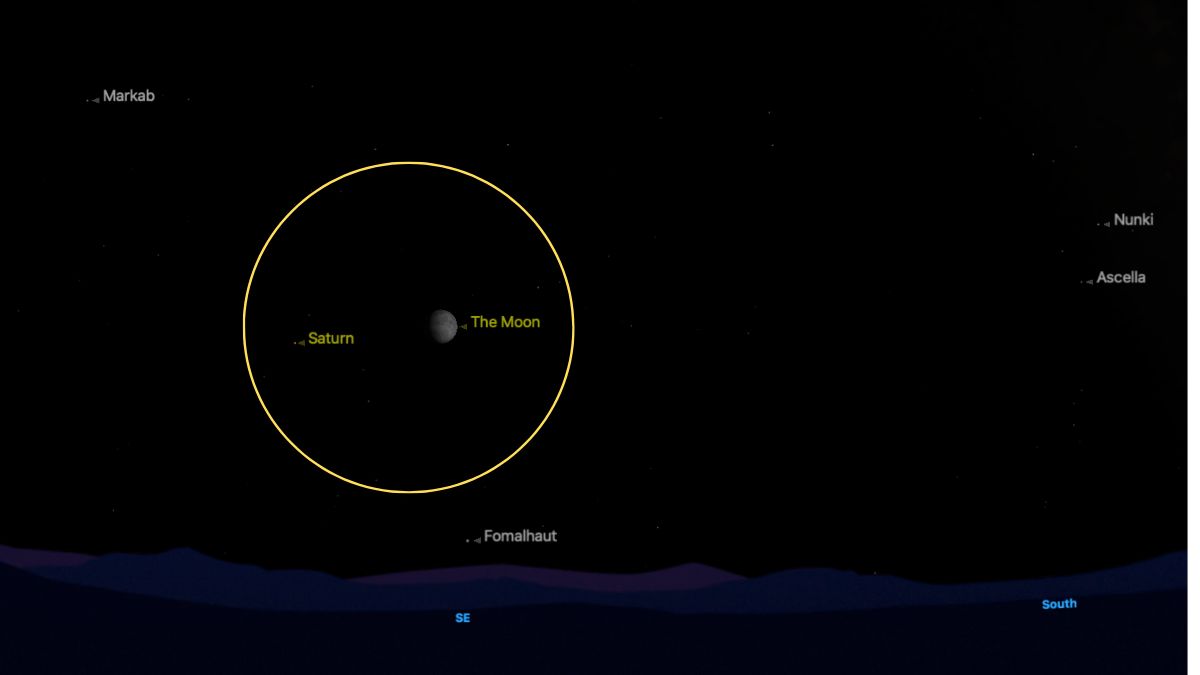
Fresh from its bright opposition in September, Saturn remains an excellent target for naked eye stargazers. As luck would have it, tonight it will rise with the almost full moon, appearing just after sunset in North America. Once the moon has risen into a darker sky and lost its golden yellow look, you'll see Saturn trailing behind it by just the width of your pinky finger at arm's length. From parts of South and East Africa, India, China and Southeast Asia, the moon will appear to occult Saturn, according to In-The-Sky.org. — Jamie Carter
TUESDAY, OCT. 15: COMET TSUCHINSAN-ATLAS (AFTER SUNSET)

Comet C/2023 A3 (Tsuchinshan-ATLAS) is climbing higher into the night sky, though likely getting dimmer as it does. It's now between Venus and Arcturus but still relatively close to the sun, so be looking west as soon as the sun sets. A pair of binoculars or a telescope may be decisive. — Jamie Carter
WEDNESDAY, OCT. 16: NEW MOON / JUPITER IN TAURUS (AFTER SUNSET)
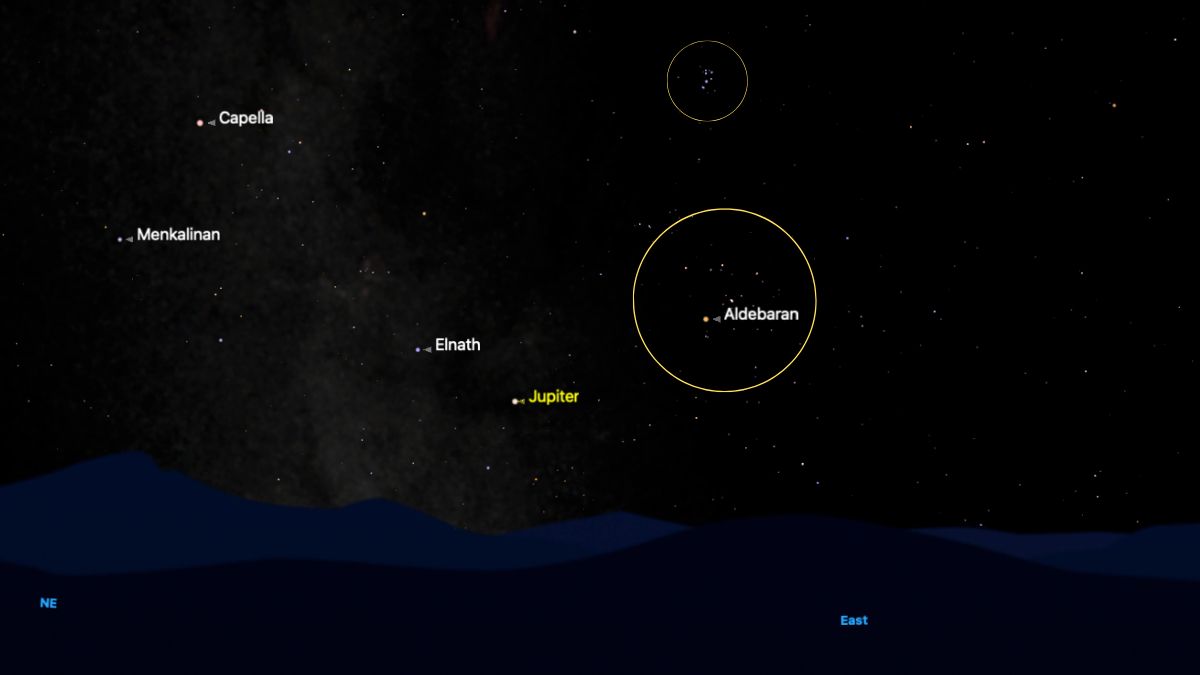
Despite the moon shining brightly tonight, it's a good time to look east from about two hours before midnight dark for the stars of the constellation Taurus, "the bull," not least because there's currently an extra "star." First, look for Aldebaran, the "eye of the bull," and the brightest star in Taurus. Now, find the faint "V" of Taurus. That's the Hyades star clusters, one of the closest to the solar system. Above will be the fuzzy Pleiades, and to the lower left will be bright Jupiter. — Jamie Carter
THURSDAY, OCT. 17: FULL 'HUNTER'S SUPERMOON'
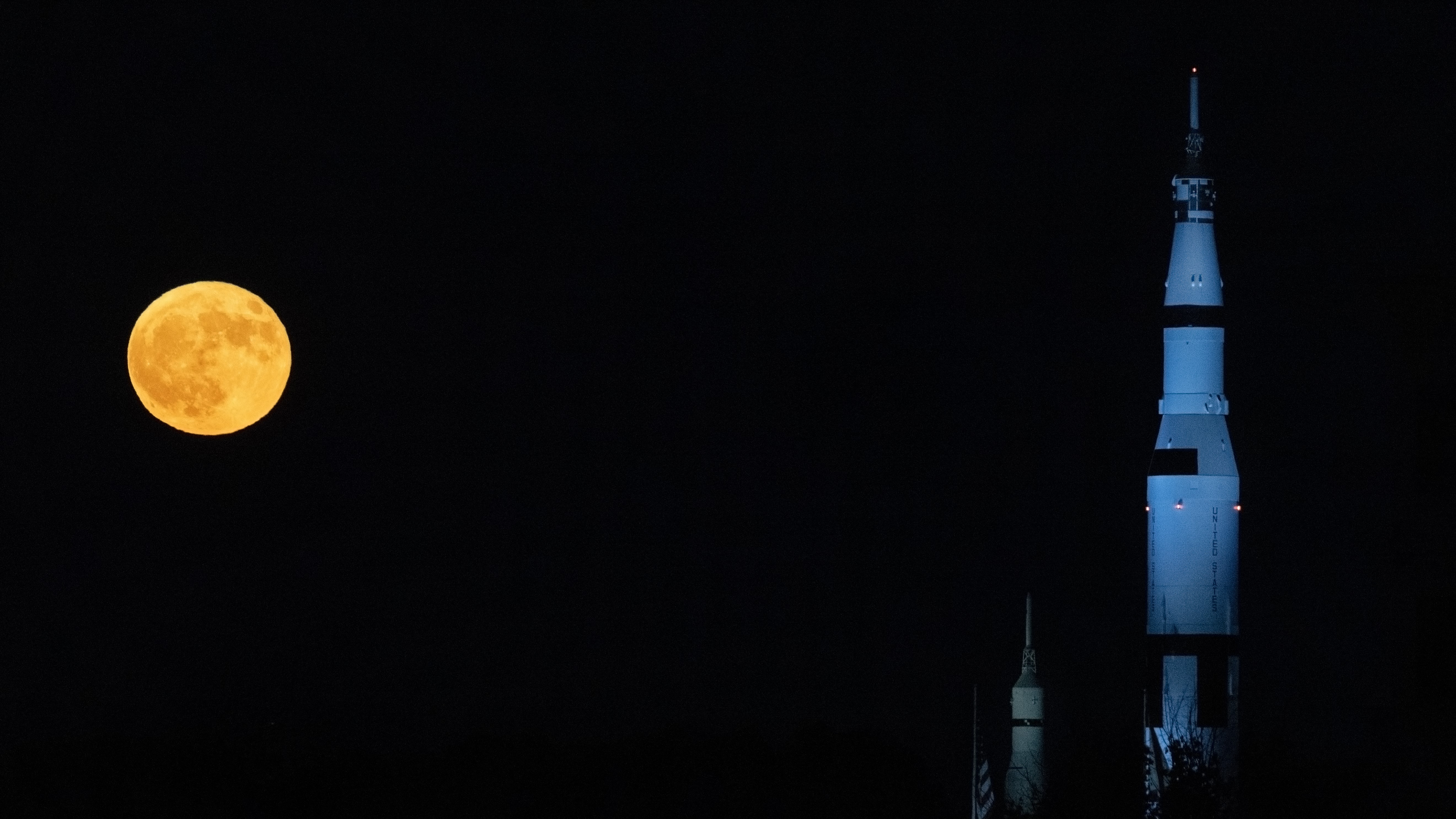
Another "supermoon"?! Yes — and not only that but the biggest and brightest of the year. Why? October's full moon will be the closest to Earth, that's all. With the moon taking a slightly elliptical journey around Earth each month, it's sure to happen every year. Be outside looking east at moonrise where you are — during dusk — to see it appear on the horizon draped in orange hues. October's full moon is considered the "Hunter's Moon" by early Native American tribes who used its all-night light to hunt for game. — Jamie Carter
FRIDAY, OCT. 18: CASSIOPEIA (AFTER SUNSET)
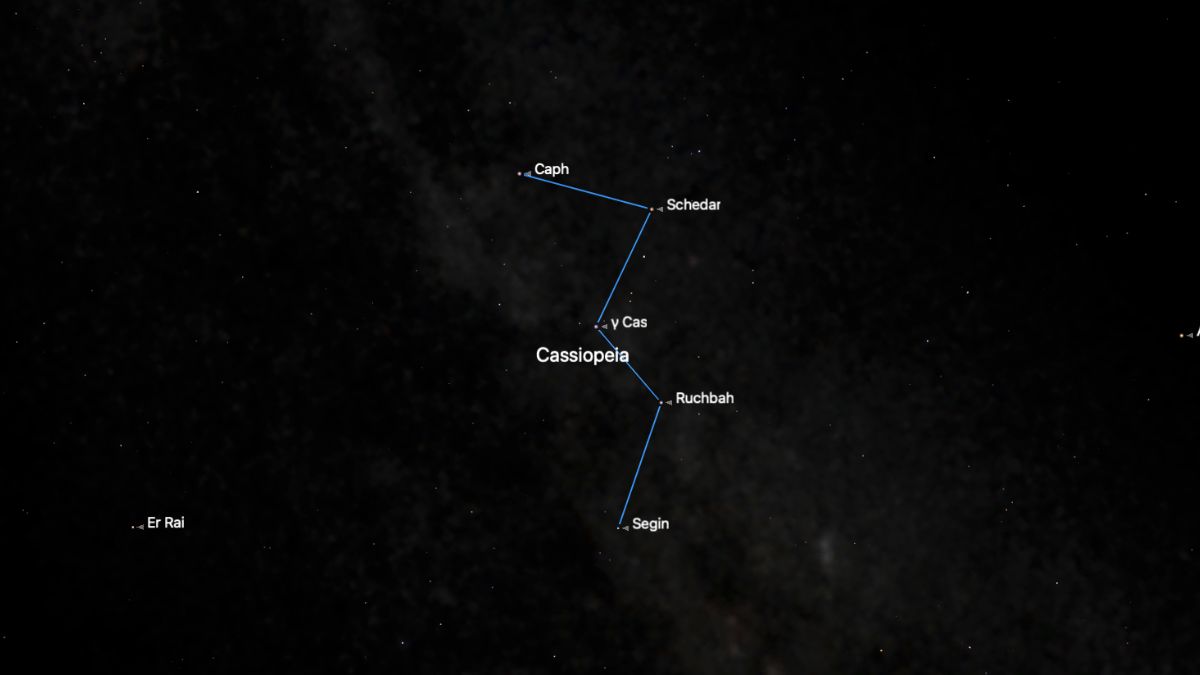
If you're a novice stargazer, locating Cassiopeia will give you a greater understanding of navigating the night sky. As a bonus, it's easy to find this time of year. Look to the northeast for a slightly misshapen W-shape of five bright stars. If you can't find it, look to the northeast for the Big Dipper, which is always roughly opposite. That's because the stars in the north appear to rotate around Polaris, the North Star, which you'll find between them in a dark patch of sky. While the Big Dipper is easily found all spring and summer ("spring up, fall down"), the opposite is the case for Cassiopeia, which will be easy to see all fall and winter, albeit mainly as an inverted W. — Jamie Carter
MONDAY, OCT. 21: COMET TSUCHINSAN-ATLAS AND THE MILKY WAY (AFTER SUNSET)
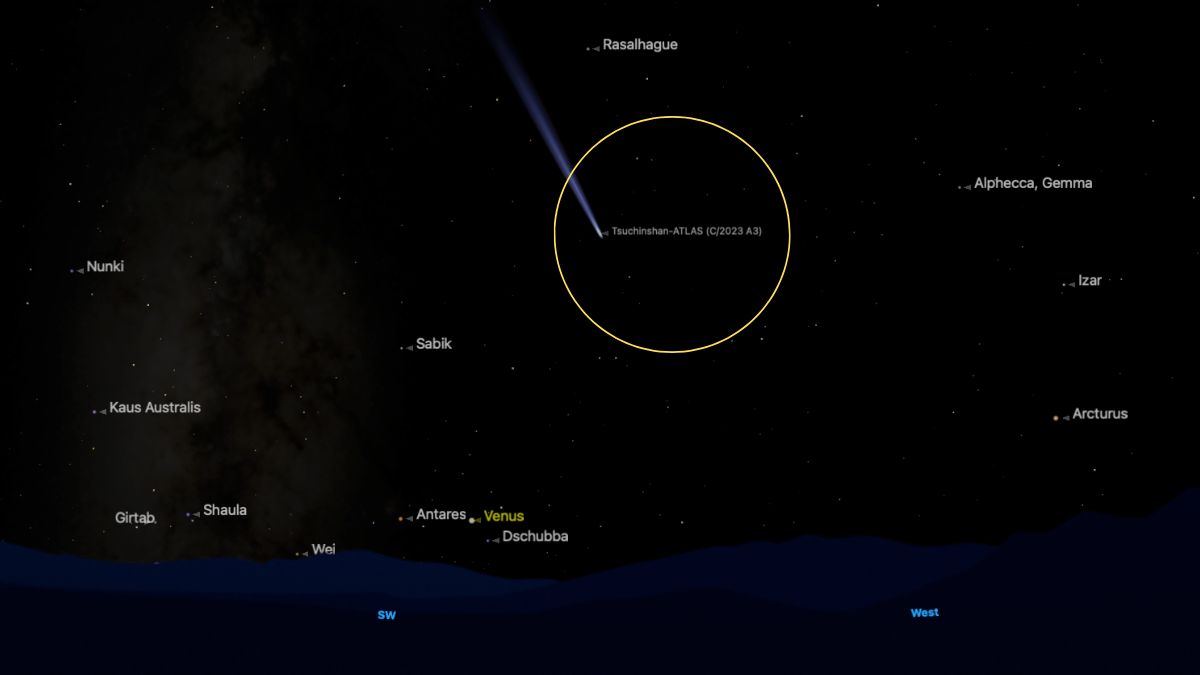
Is comet C/2023 A3 (Tsuchinshan-ATLAS) still visible to the naked eye? By now, it may not be, but it's still worth looking for the icy visitor from the solar system's edge. As it creeps higher into the night sky, tonight it enters the constellation Ophiuchus, the thirteenth yet roundly ignored zodiacal constellation (zodiacal meaning the sun passes through it). It will now be visible above the southwest horizon as soon as it darkens. It's a long shot, but if you're in a dark sky destination away from light pollution, the Milky Way may be visible in the southwest, providing a backdrop to the comet. — Jamie Carter
TUESDAY, OCT. 22: JUPITER, WANING GIBBOUS MOON AND MARS (JUST BEFORE MIDNIGHT)
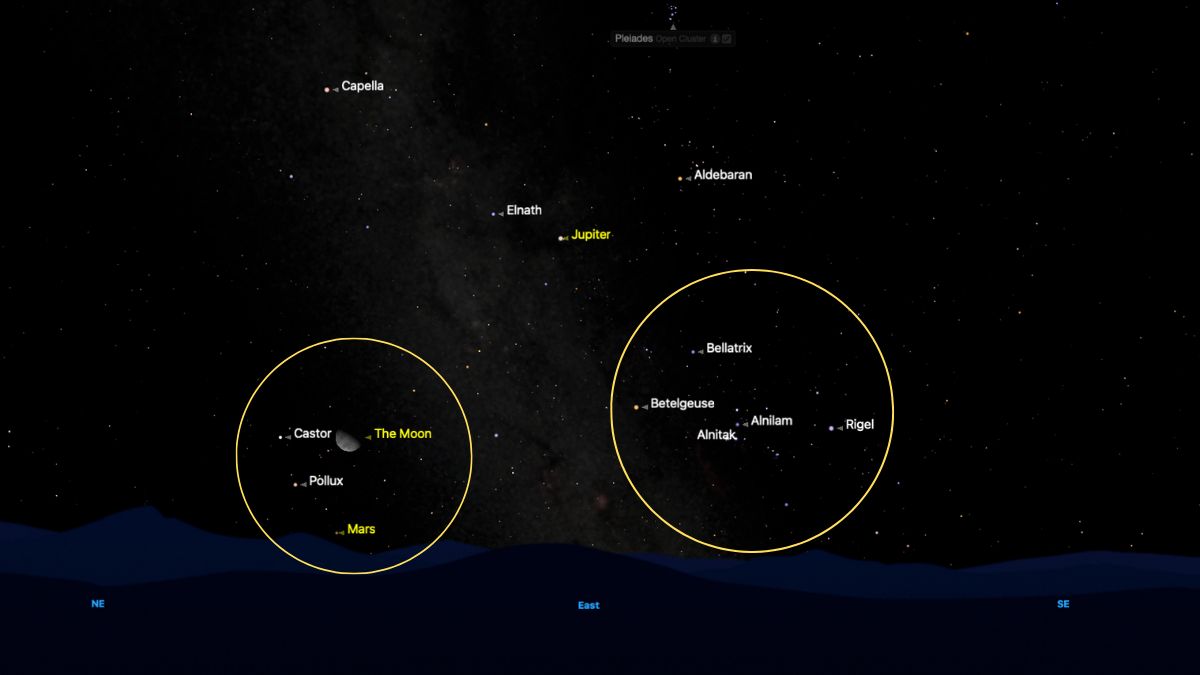
Be outside looking to the east-northeast just before midnight local time, and you'll see a gaggle of bright celestial objects appear individually. Bright Jupiter will be an easy spot, with Capella to its upper left. Rising below will be a very bright, 70%-lit waning gibbous moon, which will appear to the right of the two bright stars in Gemini, Castor and Pollux and farther to the left of the unmistakable stars of Orion's Belt. Either side of its three belt stars — Alnitak, Alnilam, and Mintaka — will be ruddy Betelgeuse and blue Rigel. Wait for the moon to rise a few degrees above the horizon, and Mars will appear below it. — Jamie Carter
WEDNESDAY, OCT. 23: WANING GIBBOUS MOON AND MARS (JUST BEFORE MIDNIGHT)

Though mostly the same sight as last night, tonight — again, just before midnight — you'll be able to watch a now 51%-lit waning gibbous moon rising in the east-northeast alongside Mars and below the stars of the constellation Gemini. Once again, Capella, Jupiter and the stars of Orion will shine brightly above. — Jamie Carter
THURSDAY, OCT. 24: LAST QUARTER MOON (AFTER SUNSET)
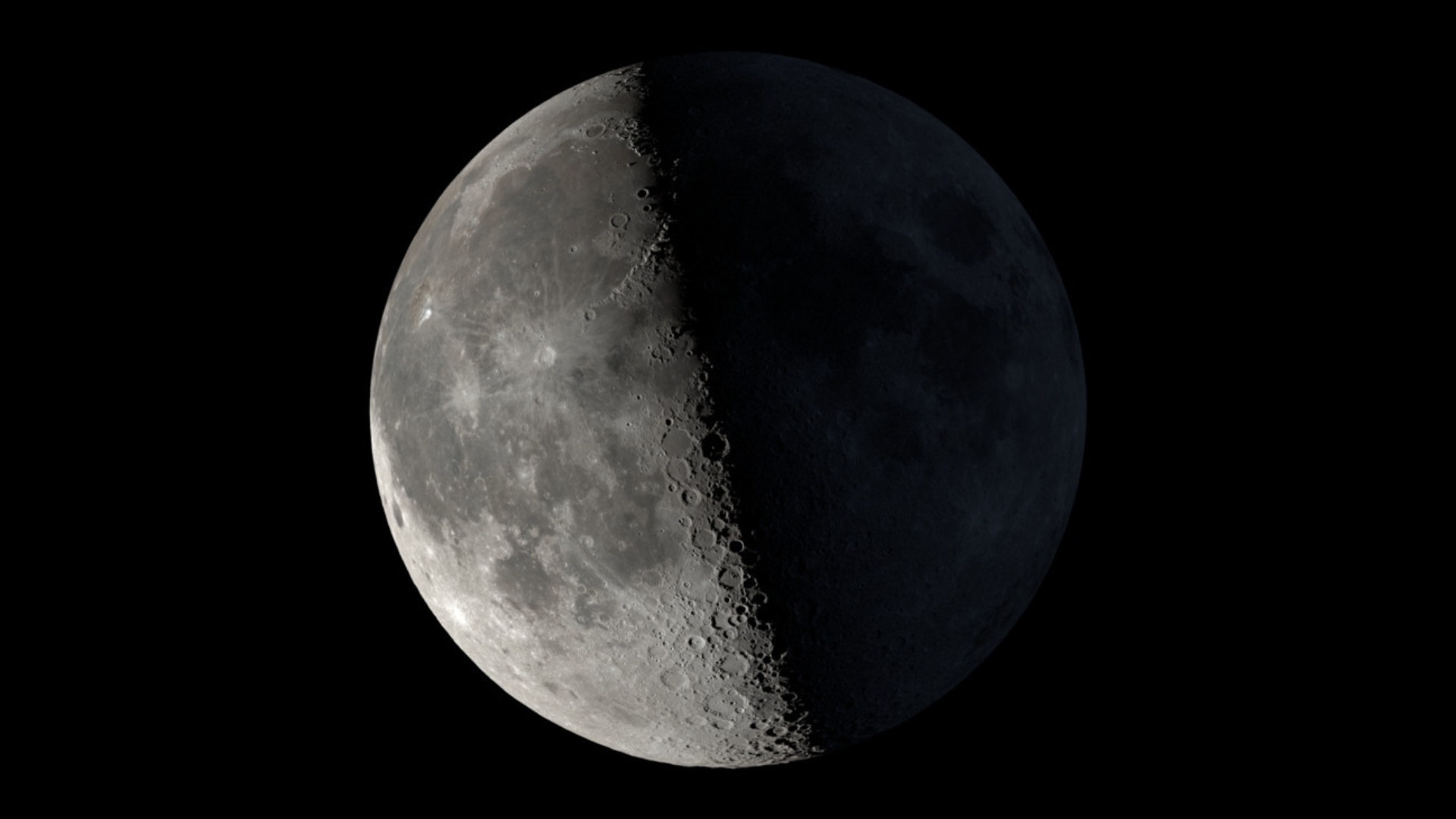
Today's last or third quarter moon sees our satellite half-lit as seen from Earth as it transitions from being a waning gibbous moon to a waning crescent moon. Rising around midnight and setting around noon tomorrow, it's an important waymarker for sky-watchers because it signals the opening of a window of dark, moonless evenings that will last for the next ten nights or so. — Jamie Carter
Tonight and the weekend
FRIDAY, OCT. 25: CONJUNCTION OF VENUS AND ANTARES (AFTER SUNSET)
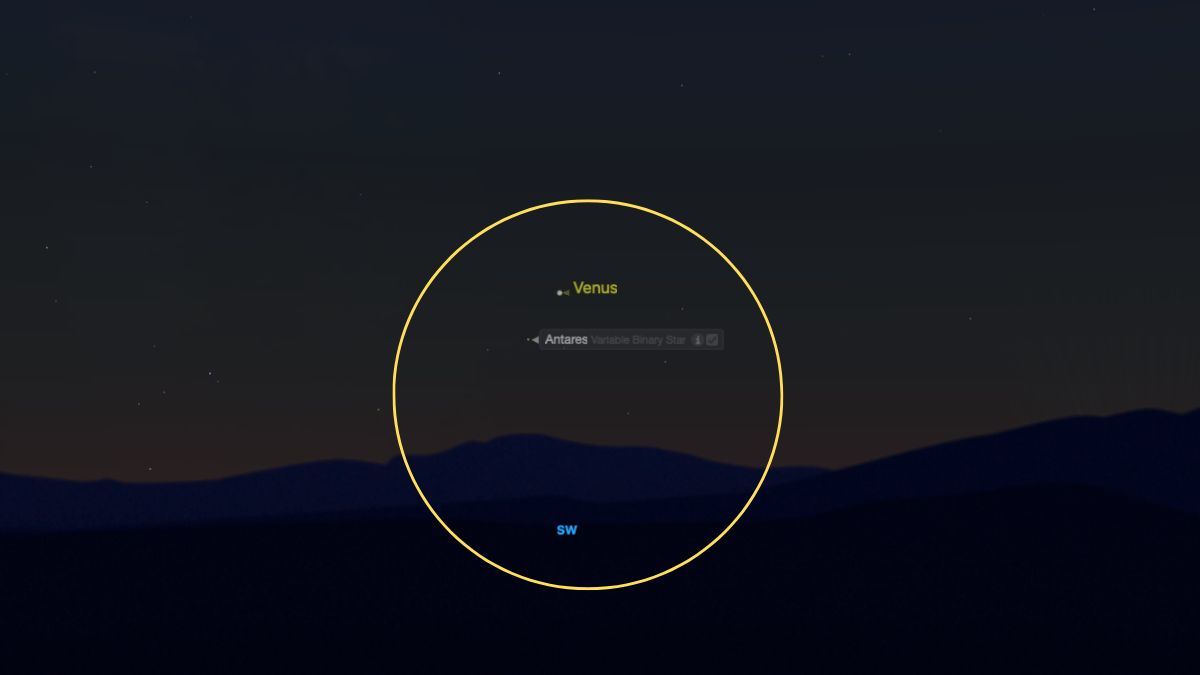
It's been a few weeks since the crescent moon tangled first with Venus, then Antares. Since then, the planet has inched closer toward the massive star, and tonight, they'll be in conjunction — very close to each other. Look to the southwest after dark to see Venus positioned slightly higher than Antares, separated by about three degrees. — Jamie Carter
SATURDAY, OCT. 26: CRESCENT MOON AND REGULUS (PRE-DAWN)
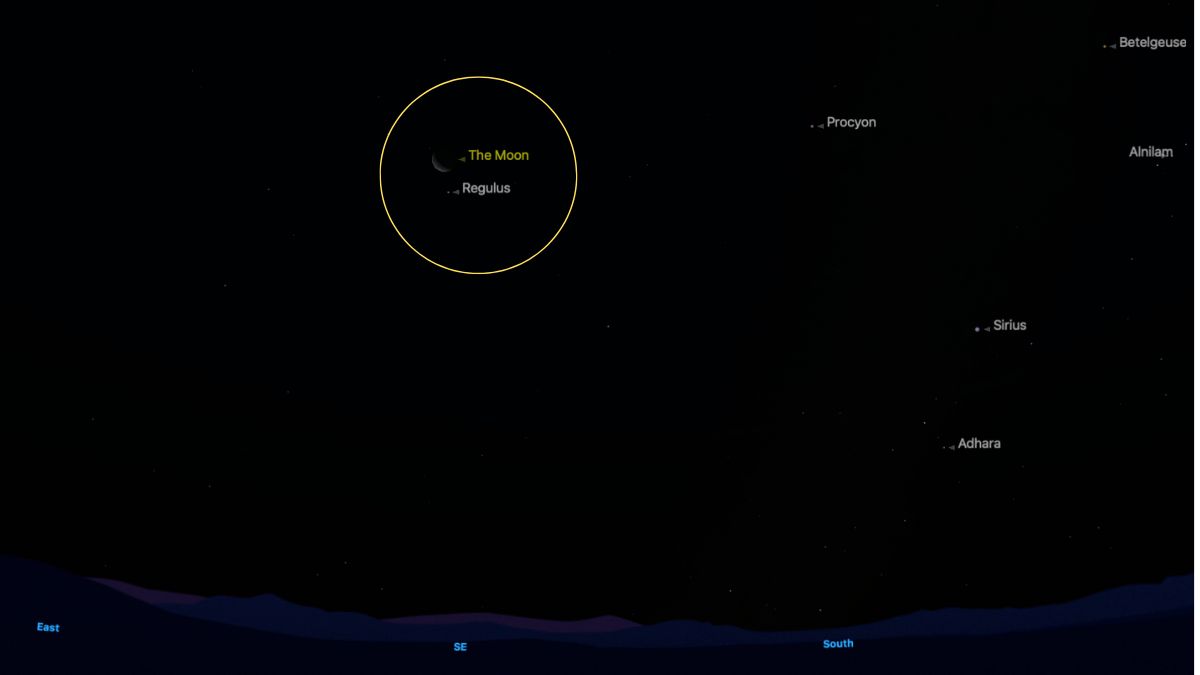
Now waning towards the new moon — and an inevitable eclipse of the sun — our natural satellite will tonight be 30%-lit as it sails through the constellation Leo. Look to the southeast before dawn; you'll see it just three above Regulus, Leo's brightest star and one of the brightest in the night sky. It's about 78 light-years from the solar system. — Jamie Carter
SUNDAY, OCT. 27: THE 'GOAT STAR' RISING (AFTER SUNSET)
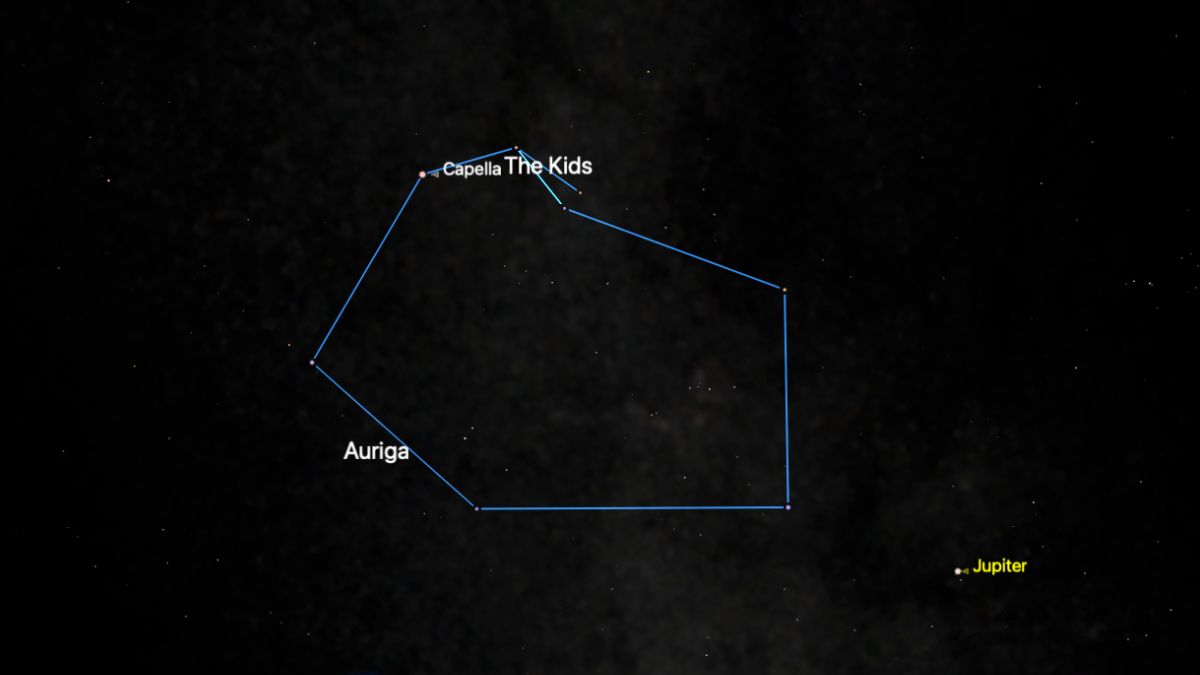
Look to the northeast after dark, and you'll quickly see the constellation Cassiopeia high in the sky. What's that bright yellow-orange star below it? The brightest star of the constellation Auriga, the charioteer, and the sixth brightest in the night sky, Capella, will be with us for many months. Just 43 light-years from the solar system, it's two giant binary stars — each about 10 times larger than the sun — and two fainter, distant, red dwarf stars. Capella is the "Goat Star" because it was once used as a guiding light for shepherds. Look just above-right of Capella and, in a dark sky, you'll see an elongated triangle of stars, with one close to Capella and two tighter stars more distant. They're called "The Kids," meant to be Capella's offspring. — Jamie Carter
MONDAY, OCT. 28: DELPHINUS, THE DOLPHIN (AFTER SUNSET)

You'll probably know how to find the famous Summer Triangle in the sky. Just look high above the southwest to see its three bright stars — Deneb (top), Vega (middle) and Altair (bottom). However, close to Altair is a small constellation worth searching out. Just above Altair and to the left, you'll find Delphinus, the dolphin (or is it a tadpole?) that's most easily found by locating its four brightest stars in a diamond shape, which is known to stargazers as "Job's Coffin." — Jamie Carter
TUESDAY, OCT. 29: PLEIADES RISING (AFTER SUNSET)
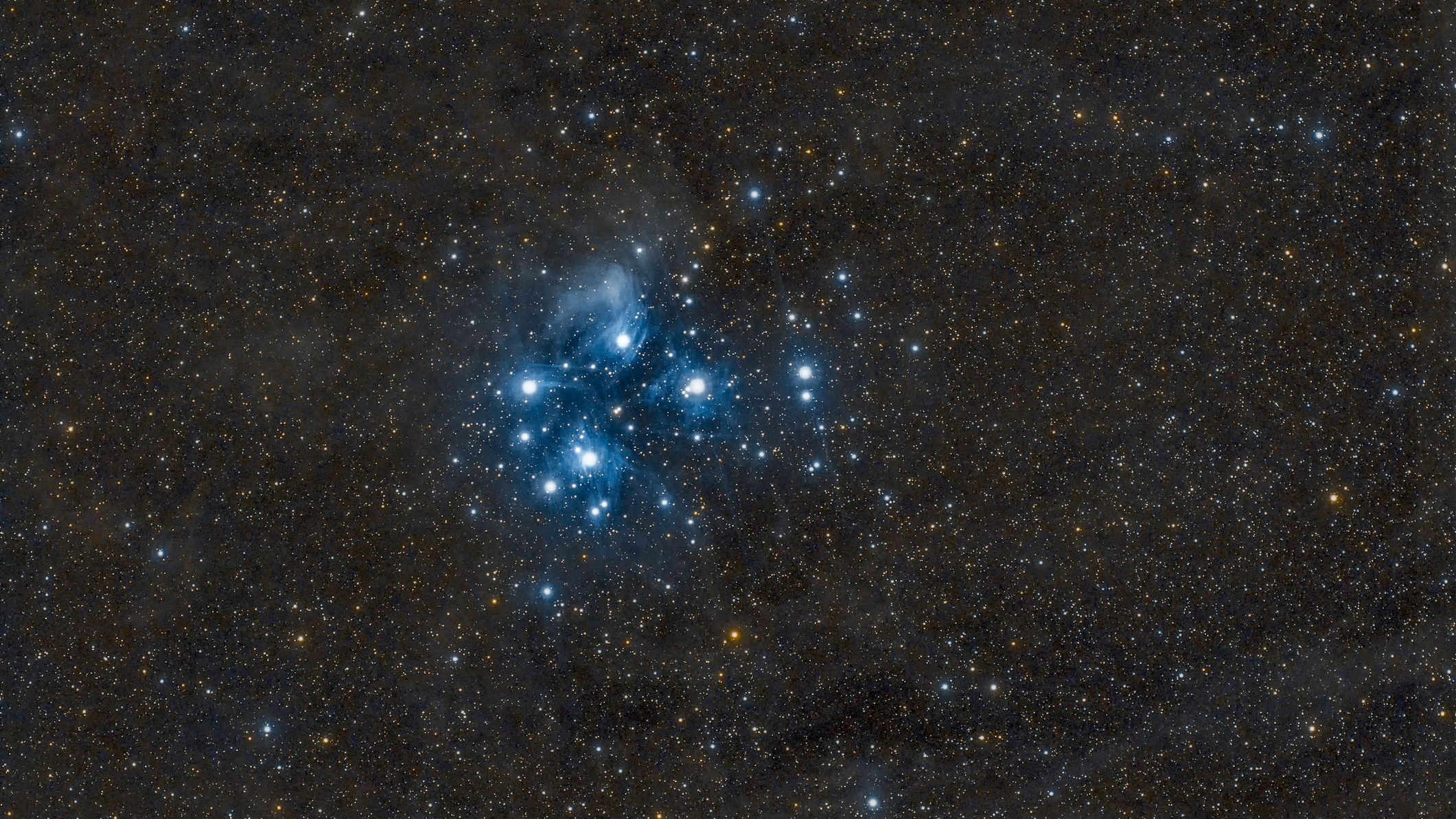
If you're an avid stargazer then you'll be excited to see the return to the early evening night sky this month of the closest and most spectacular open cluster of stars. The Pleiades, also called the "Seven Sisters," are six or seven bright stars (depending on how good your eyesight is) arranged in a mini-Big Dipper shape. It's in the constellation of Taurus — above the "V" of Taurus — and heralds the rise of some of the brightest stars in the night sky, such as Orion's Belt, Betelgeuse and Sirius.
The Pleiades will rise tonight in the east as the sun sets. Becoming visible just above east-southeast as it gets dark. Look straight at the Pleiades and see its six or seven stars. However, looking slightly to its side is a better way to appreciate the Pleiades. Try it! Instead of points of light, you'll see what seems like a very bright patch. This technique, called averted vision, is also handy for looking at galaxies through a telescope. It works because while direct vision is necessary for detail, peripheral vision is sensitive to brightness. — Jamie Carter
WEDNESDAY, OCT. 30: THE 'DEMON STAR' ON DEVIL'S NIGHT (AFTER DARK)
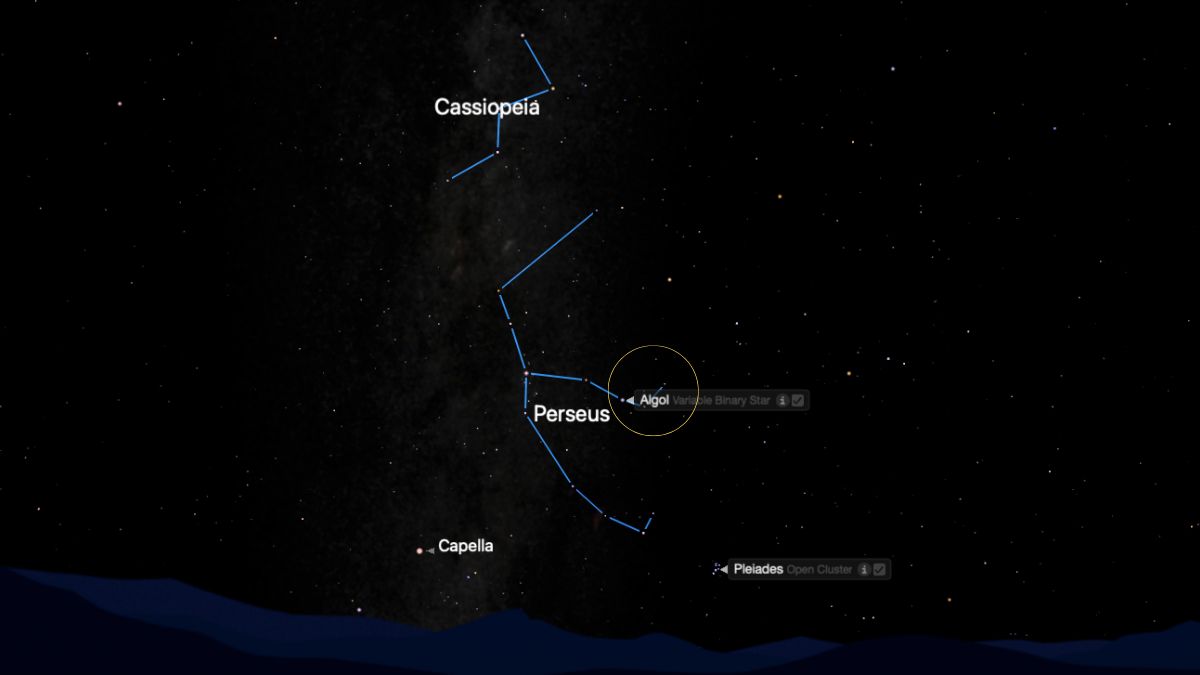
The night before Halloween, Devil's Night, provides an excellent excuse to look for a star known as the "Demon Star." Algol in the constellation Perseus is the ultimate example of what astronomers call a variable star, dipping from +2.1 to +3.4 magnitude for about 10 hours every 69 hours. That happens because it's three stars that regularly eclipse each other. Its name comes from the Arabic "Al Ra's al Ghul," which translates to "the head of the demon," according to Britannica.
Algol is easily visible to the naked eye as soon as it darkens. You'll find it halfway between Cassiopeia and the Pleiades star open cluster in the northeast night sky. Tonight, it's also above Jupiter. — Jamie Carter
THURSDAY, OCT. 31: HALLOWEEN STARGAZING (AFTER SUNSET)

With many outside trick-or-treating, Halloween is the perfect time for stargazing and sharing the night sky. Venus will shine in the southwest at dusk, while dimmer Saturn rides high in the southeast. The Summer Triangle will be visible high above the southwest, while the stars of the Big Dipper will shine low above the northern horizon. About two hours after sunset, Jupiter will rise in the east. — Jamie Carter
Tonight and the weekend
FRIDAY, NOV 1: SAGITTA, THE ARROW (AFTER SUNSET)
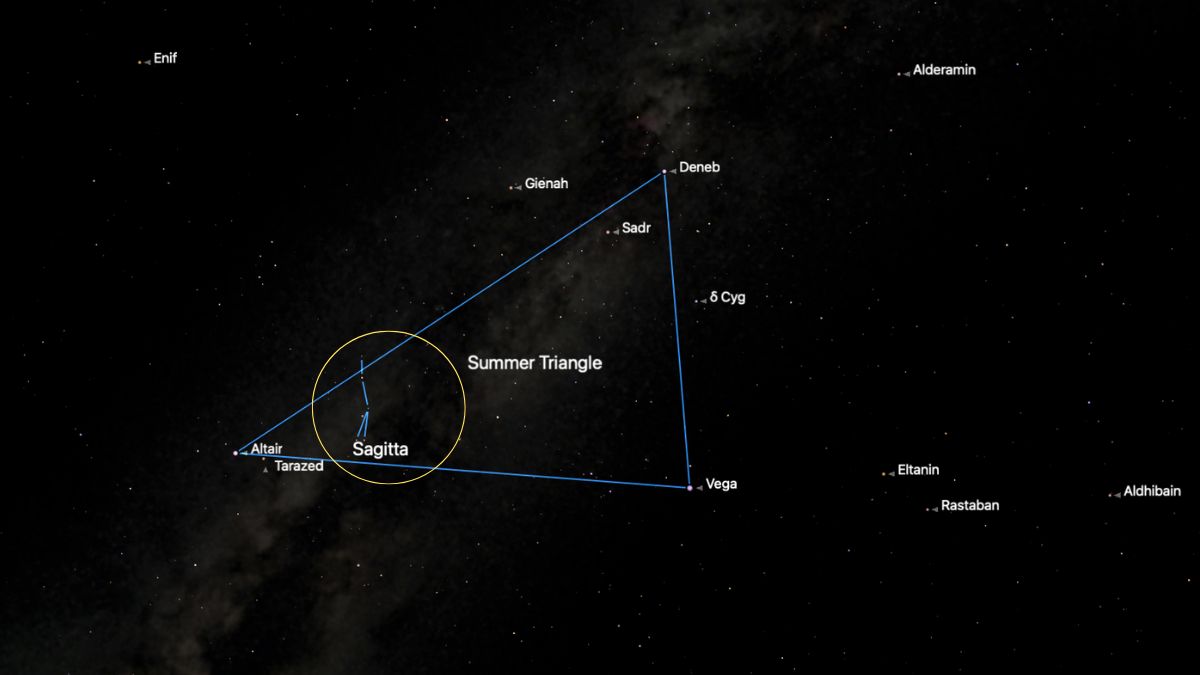
Here's another small constellation taking shelter within the Summer Triangle. After finding Altair at the bottom of that vast asterism of stars, travel to its top right to find a small shape of four stars in the shape of an arrow. It's best seen by identifying its two close stars and then taking a 90-degree turn to see its other two stars. Together, they slice off a corner of the Summer Triangle. — Jamie Carter
SATURDAY, NOV. 2: ANDROMEDA GALAXY
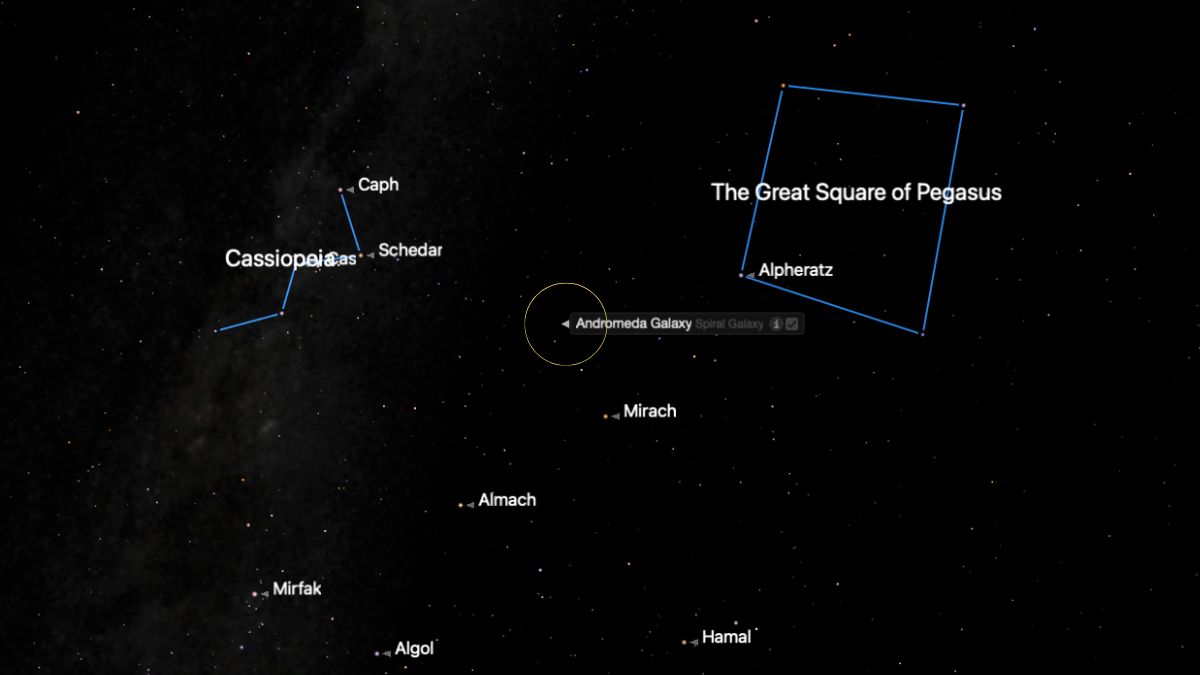
You'll need a very dark sky for this, but with a new moon yesterday, it's the perfect opportunity to see one of the farthest objects possible to see with the naked eye. A whopping 2.5 million light-years distant, the Andromeda Galaxy — also known as M31 — is visible to keen eyes in the northeastern evening night sky in the northern hemisphere. It's between Cassiopeia and the Great Square of Pegasus, with the right-hand "V" in Cassiopeia's "W" shape acting as an arrowhead straight to it. M31 is the most remarkable galaxy for those stargazing from the northern hemisphere and can be easily found as a fuzzy patch in binoculars, even under urban skies. At about half a trillion stars, it's larger than the Milky Way and will collide with it in a few billion years. — Jamie Carter
SUNDAY, NOV. 3: CRESCENT MOON, MERCURY AND ANTARES (AFTER SUNSET)
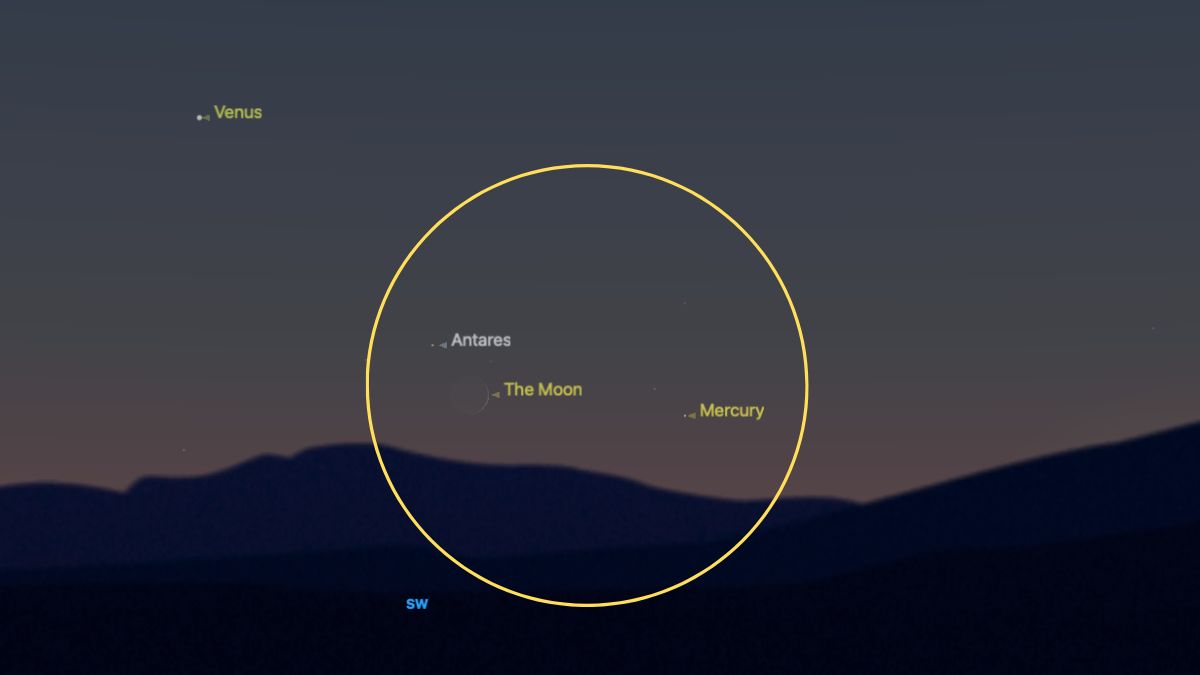
Early today sees the end of Daylight Savings Time in North America, where clocks will "fall back" this fall (as opposed to "springing forward" in spring) at 02:00 a.m. local time across the continent. However, you won't need to know the time for today's main sky sight, which will see a 6%-lit crescent moon tangle with Antares and Mercury in the western sky after sunset. The action will happen immediately after sunset and sink soon after, so grab a glimpse. Venus will be shining brightly above the melee to act as your guide. — Jamie Carter
Monday, Nov. 4: Waxing crescent moon and Venus (after sunset)
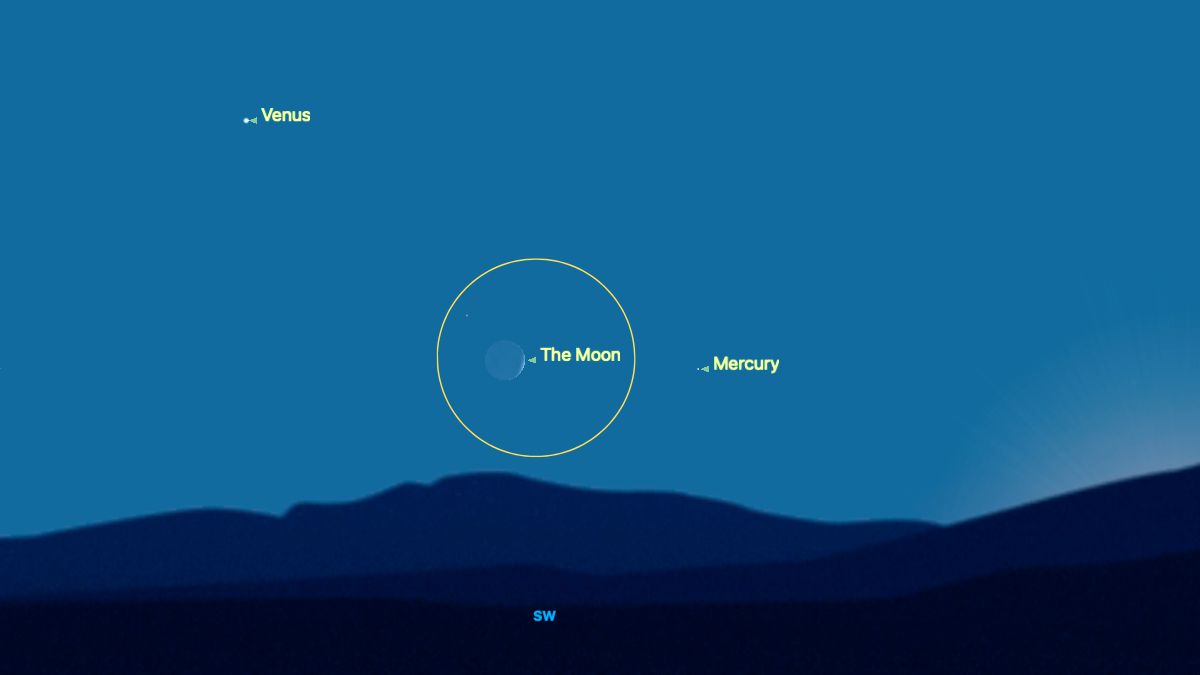
Venus is well into its apparition as the 'Evening Star' in 2024, but if you want the best view of the brightest planet, catch it when a crescent moon slides past it. That happens tonight, with the sight of an 11%-illuminated crescent moon and the second planet above the western horizon. The two will be about three degrees apart, less than the width of your three middle fingers held at arm's length against the night sky. Venus will be above the moon. — Jamie Carter
Tuesday, Nov. 5 - Crescent moon and Venus/South Taurid meteor shower peaks
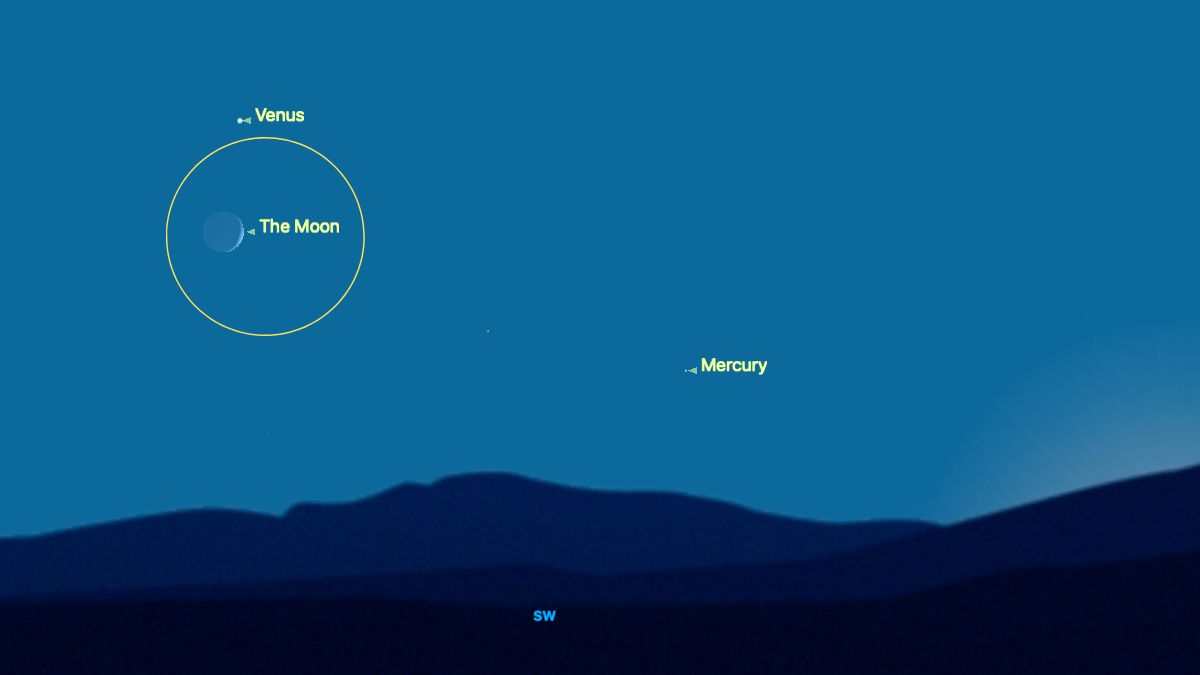
Look west again after sunset today to have an easier, albeit slightly wider, view of the now 18%-illuminated crescent moon and Earth's closest planetary neighbor, Venus.
Tonight, we also see the peak of the Southern Taurid meteor shower. Though its five shooting stars per hour may seem like nothing to get excited about, Taurids tend to be bright fireballs, so it's a great night to go stargazing. — Jamie Carter
Tuesday, Nov. 5 - Waxing crescent moon and Venus (after sunset) and the South Taurid meteor shower peaks (midnight)
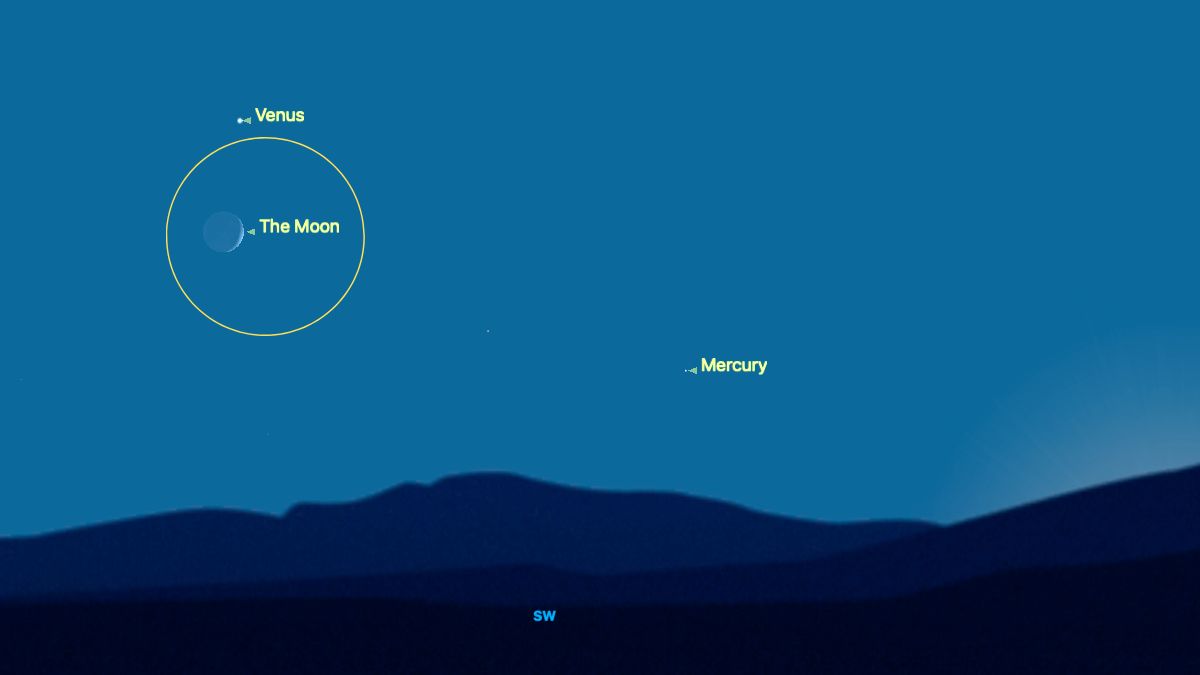
Look west again after sunset today to have an easier, albeit slightly wider, view of the now 18%-illuminated crescent moon and Earth's closest planetary neighbor, Venus.
Tonight, we also see the peak of the Southern Taurid meteor shower. Though its five shooting stars per hour may seem like nothing to get excited about, Taurids tend to be bright fireballs, so it's a great night to go stargazing. — Jamie Carter
Thursday, Nov. 7 - Saturn and 'royal star' Fomalhaut (after sunset)
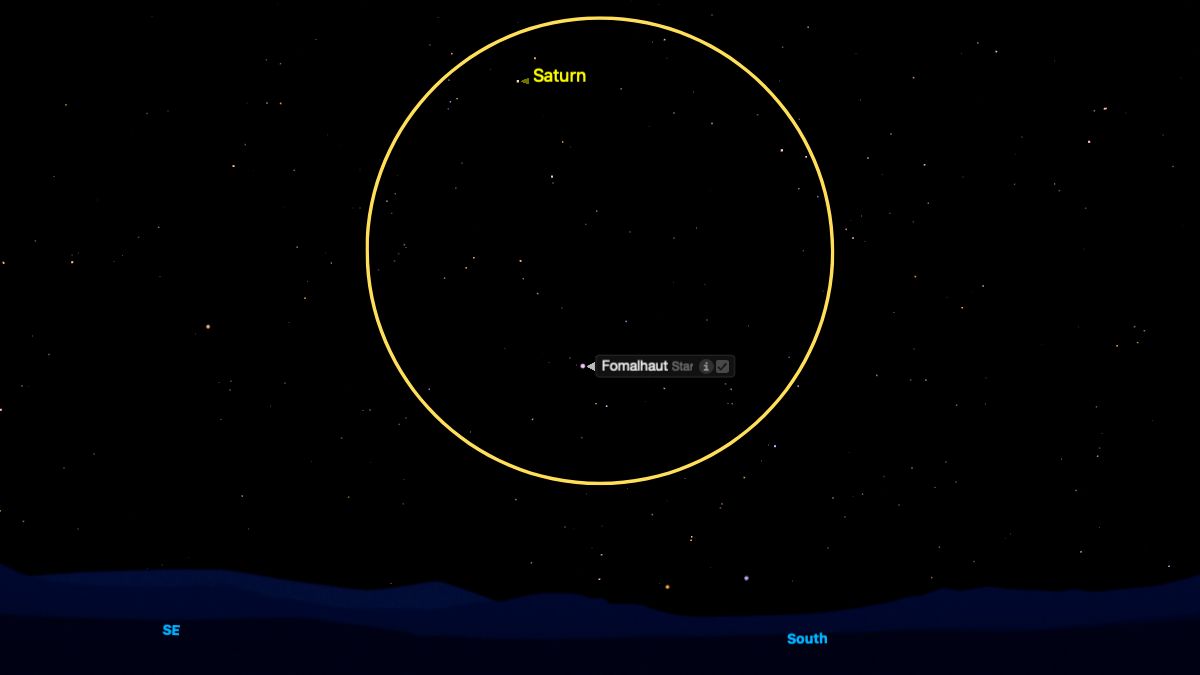
Look southwest after dark; you'll see a bright 37%-illuminated waxing crescent moon approaching two shining points of light due south.
The upper point will be the ringed planet Saturn, and below it will be Fomalhaut, the brightest star in the constellation Piscis Austrinus, the Southern Fish, and just 25 light-years distant. At magnitude +1, it's one of the brightest stars in the night sky.
It's also one of the four Royal Stars of the Persian culture, and called the Watcher of the South. The other stars are Aldebaran (Watcher of the East), Regulus (Watcher of the North) and Antares (Watcher of the West). All are regarded as guardians of the sky. — Jamie Carter
Tonight and the weekend
Friday, Nov. 8 - First quarter moon (after sunset)
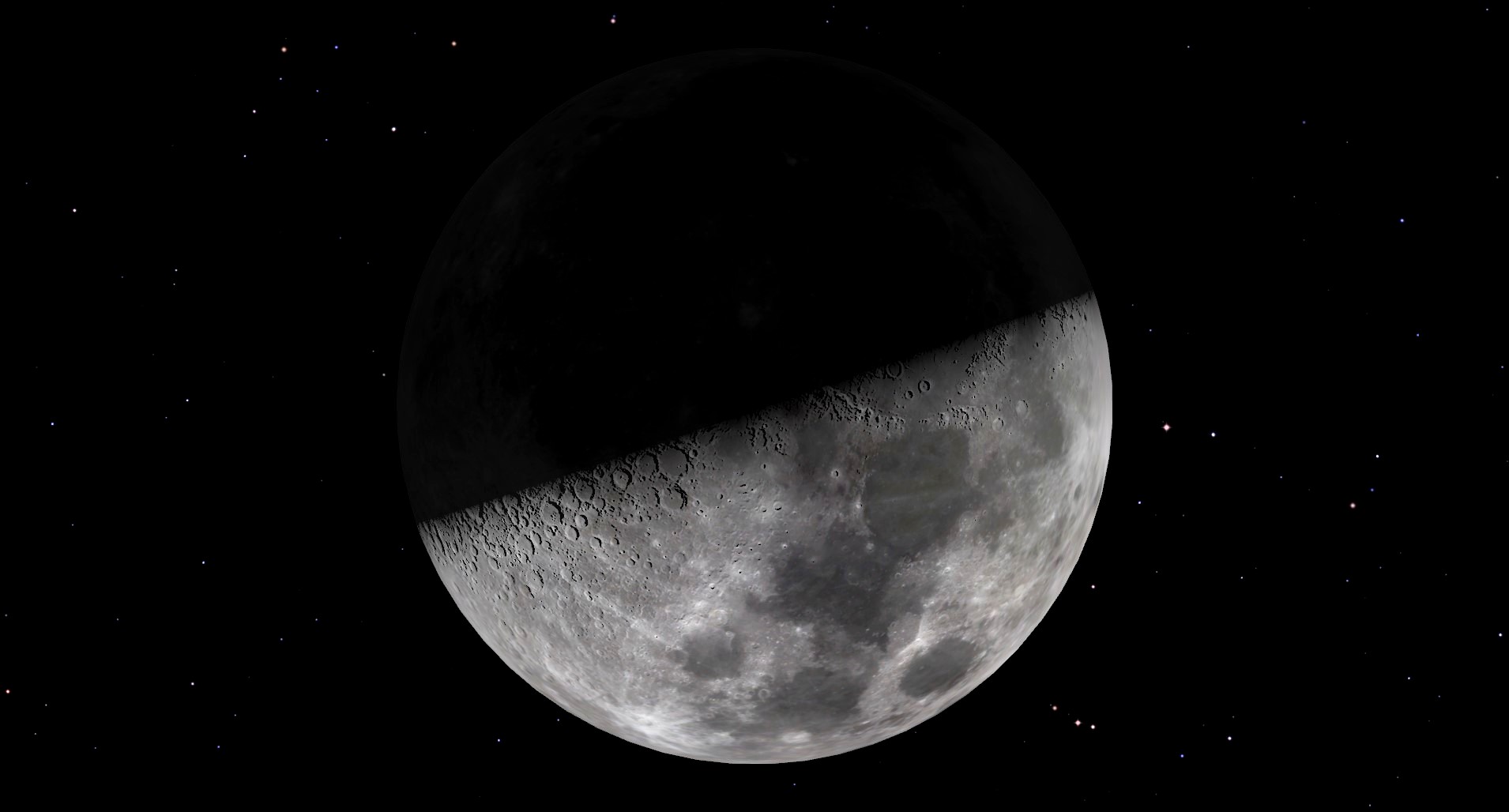
Tonight, the waxing crescent moon becomes a waxing gibbous moon — gibbous meaning rounded — as our natural satellite becomes half-lit by the sun, as seen from Earth.
For stargazers, it's a critical moment because the moon has brightened enough to begin to bleach the night sky and make faint stars more challenging to see, a situation that will get more profound during the next week as the moon waxes towards becoming a full "Beaver Moon." A waxing gibbous moon is illuminated from the right, whereas a waning gibbous moon (the week after the full moon) is illuminated from the left. — Jamie Carter
Saturday, Nov. 9 - Altair, the 'Flying Eagle' (after sunset)
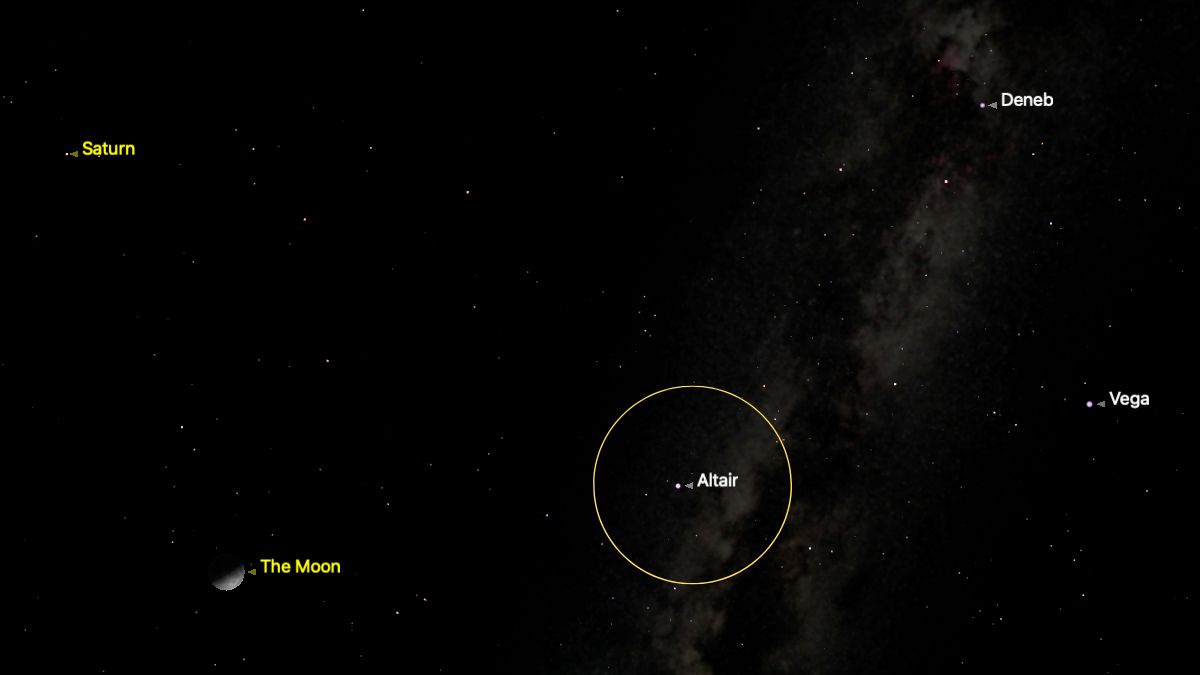
You probably know the prominent, iconic asterism called the Summer Triangle. It's home to the Milky Way and dominates the northern hemisphere's summer night sky.
It's now long past its best, but it can still be easily seen as it sinks into the western horizon immediately after sunset tonight. It comprises three bright stars — Deneb (in the constellation Cygnus), highest in the western sky tonight; Vega (in Lyra), below right; and Altair (in Aquila), below left.
The latter gets little attention. Shining above Venus, if you come outside immediately after sunset, it's a mere 17 light-years away, one of the closest stars to our solar system. In Arabic, Altair is called Al Nasr Al-Tair, which translates as the Flying Eagle (Aquila is Latin for eagle). It spins on its axis once every 10 hours. — Jamie Carter
Sunday, Nov. 10 - Waxing gibbous moon occults Saturn (after sunset)
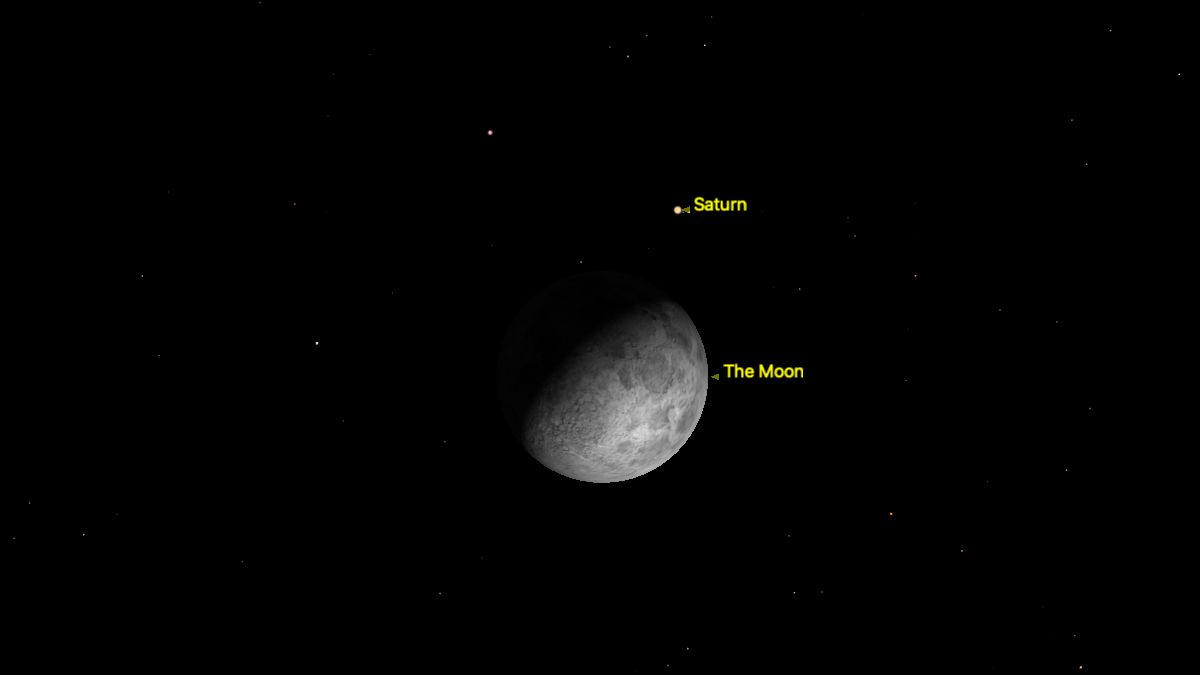
Monday, Nov. 11 - Jupiter approaches its bright opposition (after sunset)

The solar system's largest planet, Jupiter, is now approaching its best of the year. Come Dec. 7, it will reach its annual opposition when it will be relatively close to Earth at 380 million miles (612 million kilometers) and shine at a magnitude of -2.8. By then, it will rise in the east at sunset and set in the west at sunrise. With a month to go before its opposition, Jupiter is already rising in the east two hours after sunset, and now, just 388 million miles (625 million kilometers), it's already shining at a magnitude of -2.75. In short, it's beginning to dominate the night sky, which means it's time to find a pair of binoculars (to see its four giant moons) and a telescope (to see its pink cloud bands). — Jamie Carter
Tuesday, Nov. 12 - North Taurid meteor shower (around midnight)
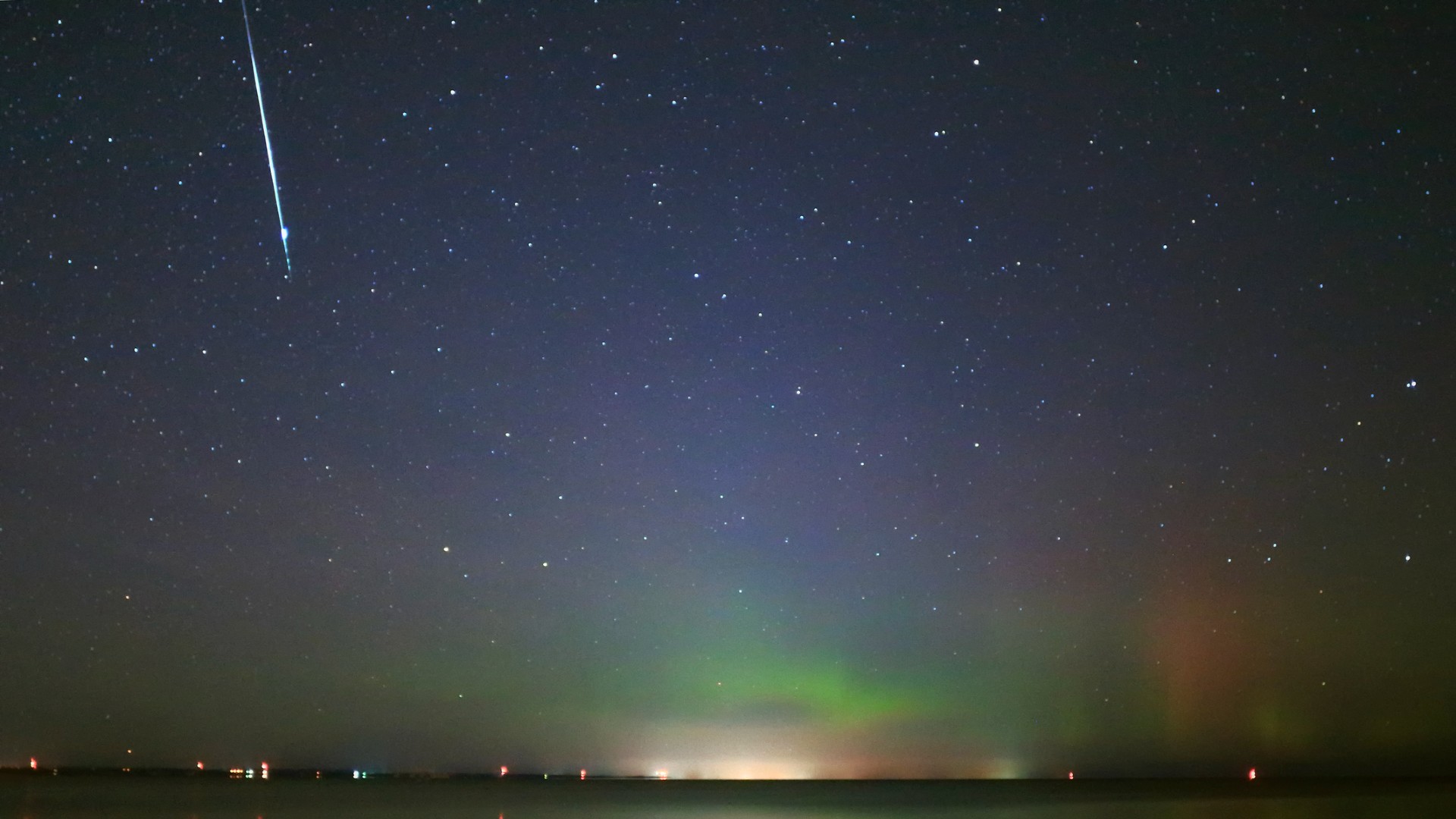
The peak of the Southern Taurids a week ago wasn't a major event, nor is the meteor shower it spills into tonight's Northern Taurids. Peaking Monday through tonight, it will bring up to about five shooting stars per hour. Like its sister shower, it tends to produce bright fireballs, but tonight, they'll be fighting against the bright light of the waxing gibbous moon. — Jamie Carter
Wednesday, Nov. 13 - The Fall Triangle (after sunset)

Here's a great way of getting to know the fall night sky, even from a light-polluted city. Go outside about an hour after sunset and look to the northeast. Find two bright objects — the bright Pleiades open cluster of stars in the constellation Taurus, above east-northeast and the bright, white star Capella in the constellation Auriga, above northeast. Draw an imaginary line between them. Now, look for a third star above to complete an equilateral triangle. You'll come to Mirfak, the brightest star in the constellation Perseus. It's a supergiant double star about 510 light-years distant and intrinsically 5,000 times brighter than the sun. — Jamie Carter
Thursday, Nov. 14 - How to find Polaris, the North Star (after sunset)

Contrary to popular belief, the North Star is not the brightest in the night sky. It's the 48th brightest and is a triple-star system, with a yellow supergiant and two smaller stars. It's simple to find and will be a valuable navigational tool for the rest of your life. First, identify the stars' W (or M) shape in the northeastern night sky after sunset tonight. That's Cassiopeia. You'll find Polaris halfway between Cassiopeia and the easily recognizable stars of the Big Dipper, which tonight will be low on the northwest horizon.
Earth's northern axis points at Polaris, so it remains perfectly still as all other stars travel across the sky (because Earth rotates). Those close to Polaris appear to move in circles around it in a time-lapse. — Jamie Carter
Tonight and the weekend
Friday, Nov. 15 - Full 'Beaver Supermoon' and the Pleiades (sunset/moonrise)
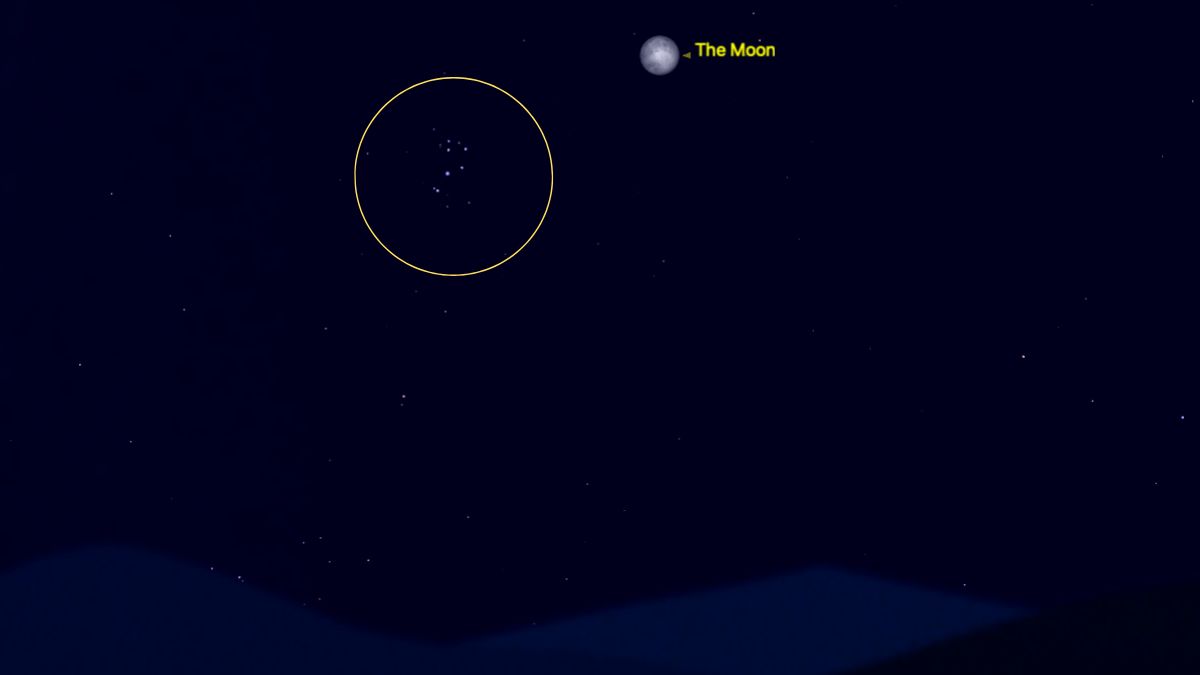
Today, we see the rise of the full moon and its occultation of the Pleiades. For the best view of the November full moon (2024's final supermoon), be somewhere at sunset to watch the fully-lit orangey orb rise in the east into the dusk sky (check the exact time of moonrise where you are). Just after midnight, the moon will move through and cover up the "Seven Sister" stars, the Pleiades. However, the moon will be so bright that it will be difficult to see the Pleiades.
Since the Pleiades is close to the ecliptic — the sun's path through the sky, which the moon's orbital path intersects — the moon occasionally appears to travel through this naked-eye open star cluster of stars. — Jamie Carter
Saturday, Nov. 16 - Waning gibbous moon, the Pleiades and Jupiter (after sunset/moonrise)
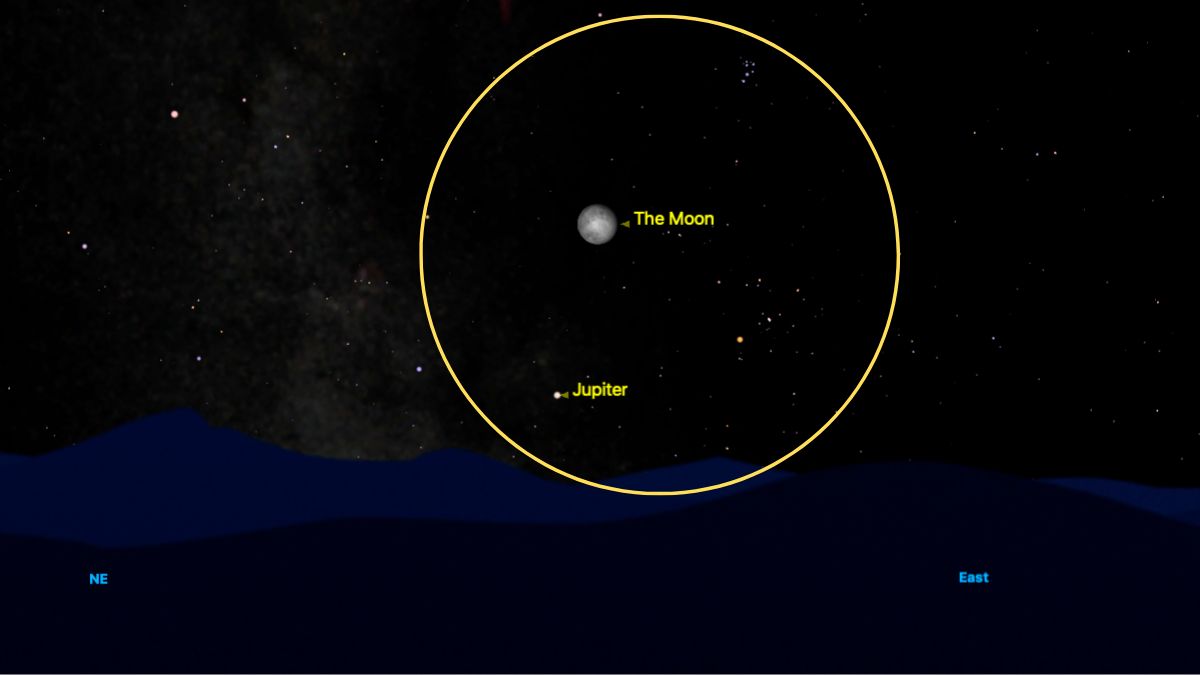
The almost full moon will rise a little later tonight but should have more impact than yesterday because it will appear in the east in a darker sky. Check the time of moonrise where you are and be in place to see a more profoundly orangey full moon than last night.
Look above the moon, and you'll see the Pleiades open star cluster of stars, which the moon occulted last night. Look again an hour after the moonrise, and you'll see the bright planet Jupiter rise beneath the moon. — Jamie Carter
Sunday, Nov. 17 to Monday, Nov. 18: Leonid meteor shower peaks (midnight)

Some of the fastest shooting stars of the year come from the Leonid meteor shower, which peaks close to midnight tonight. Watch from late at night tonight through dawn tomorrow, and you can typically expect fast meteors with long, bright tails and perhaps even an unexpected outburst of activity during the peak. However, even the average 15 shooting stars per hour during the peak will be tricky to see this year thanks to the presence of a bright, waning gibbous moon, which will bleach the sky and make Leonaids hard to spot. — Jamie Carter
Monday, Nov. 18 - Draco, the Dragon, roars in the north (after sunset)
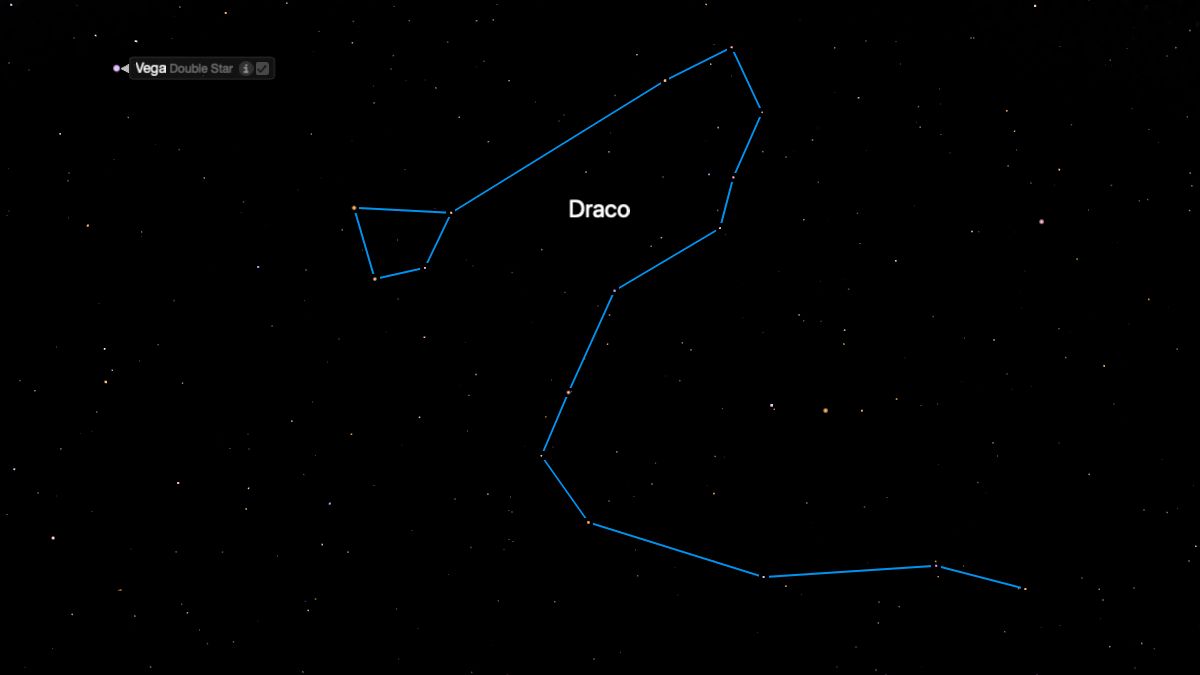
Some constellations are tiny. Others are vast. Draco, the dragon, belongs to the latter camp, a vast, loose, faint shape of stars that make a vague serpent's tail between the constellations of Hercules, Cepheus, Ursa Minor and Ursa Major. Look north tonight and see if you can find the head of the dragon, four stars of equal brightness to the lower-right of bright star Vega. Its tail then zigzags its way up and then down to the Big Dipper via 11 stars, finishing due north just above Dubhe. Draco is home to the Cat's Eye Nebula (NGC 6543), the Tadpole Galaxy (UGC 10214) and the Spindle Galaxy (M102). — Jamie Carter
Tuesday, Nov. 19 - A waning gibbous moon rises with Pollux (before midnight)
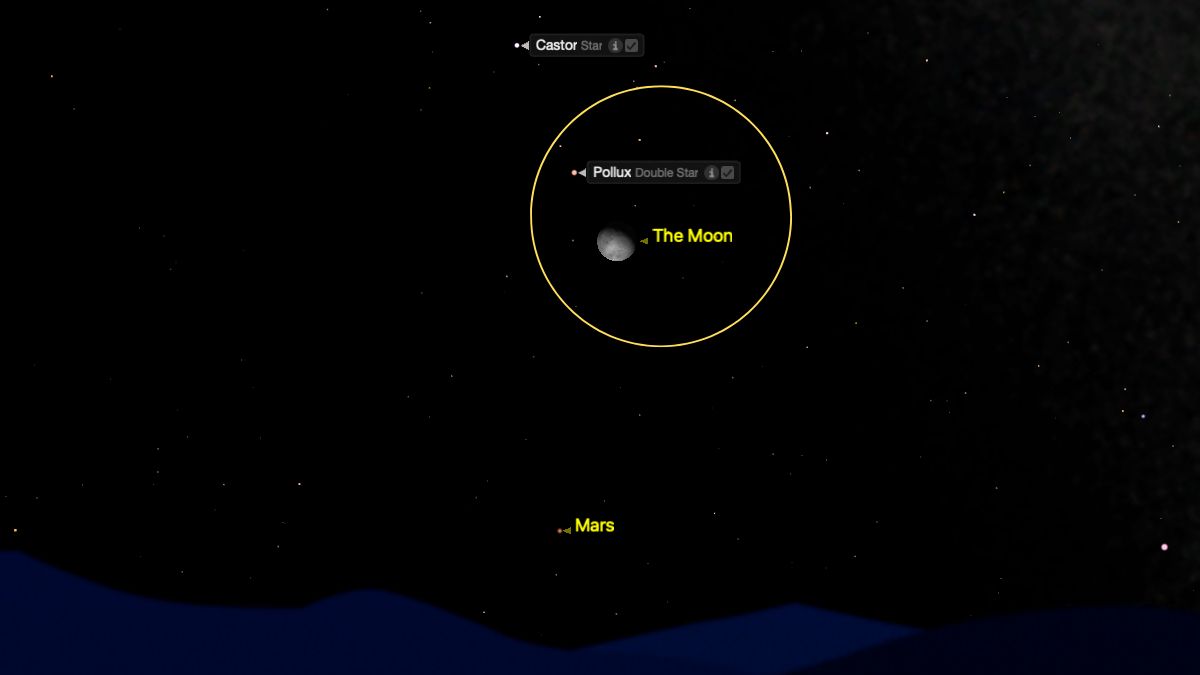
Look to the eastern night sky at the precise time of moonrise where you are tonight (about four hours after sunset), and you'll see our satellite, now looking slightly oblong, with a bright star above it. That's Pollux, a star 34 light-years distant and nine times larger than our sun. It's one of the "twins" of Gemini. The other, Castor, will be slightly farther above the moon. Castor isn't just one star, but six. It's 51 light-years away. — Jamie Carter
Wednesday, Nov. 20 - Mercury (after sunset)
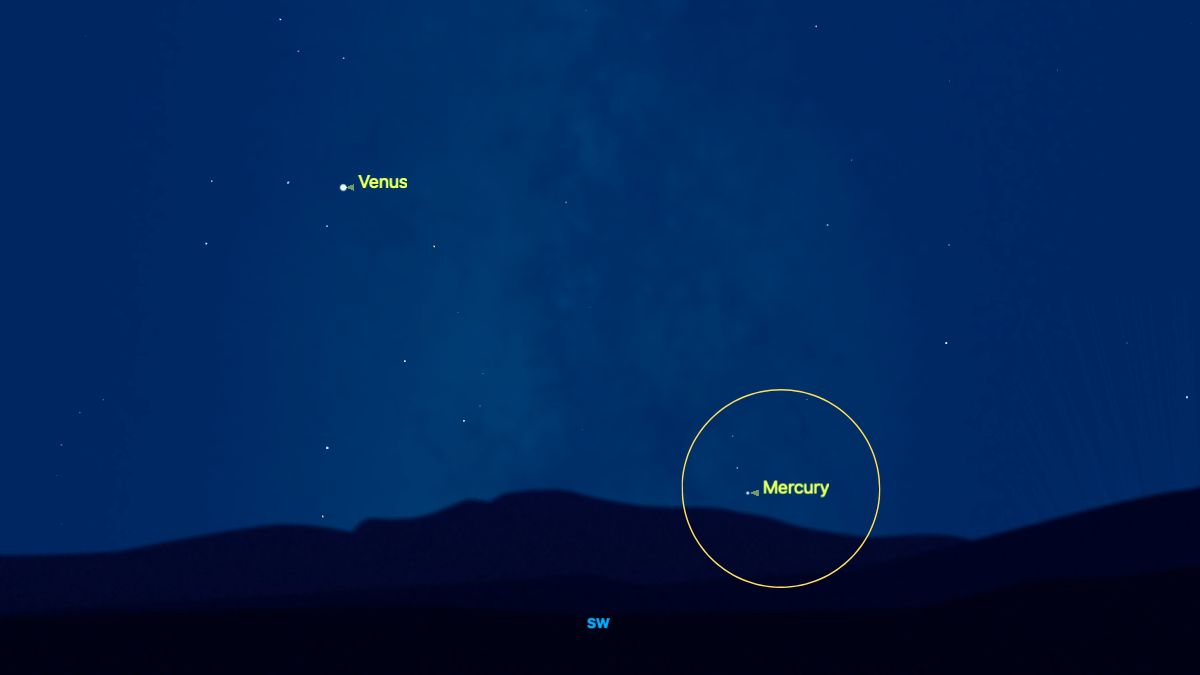
Start your sky-watching tonight 30 minutes after sunset in the southwest, when you may be able to spot Mercury, which tonight will be at its highest point in the sky during its current evening apparition. At magnitude -0.3, it may be possible to see it with the naked eye as a reddish dot. If you have binoculars, use them only after the sun has entirely set. Mercury will be below and to the right of Venus. — Jamie Carter
Wednesday, Nov. 20 - Moon and Mars (moonrise)
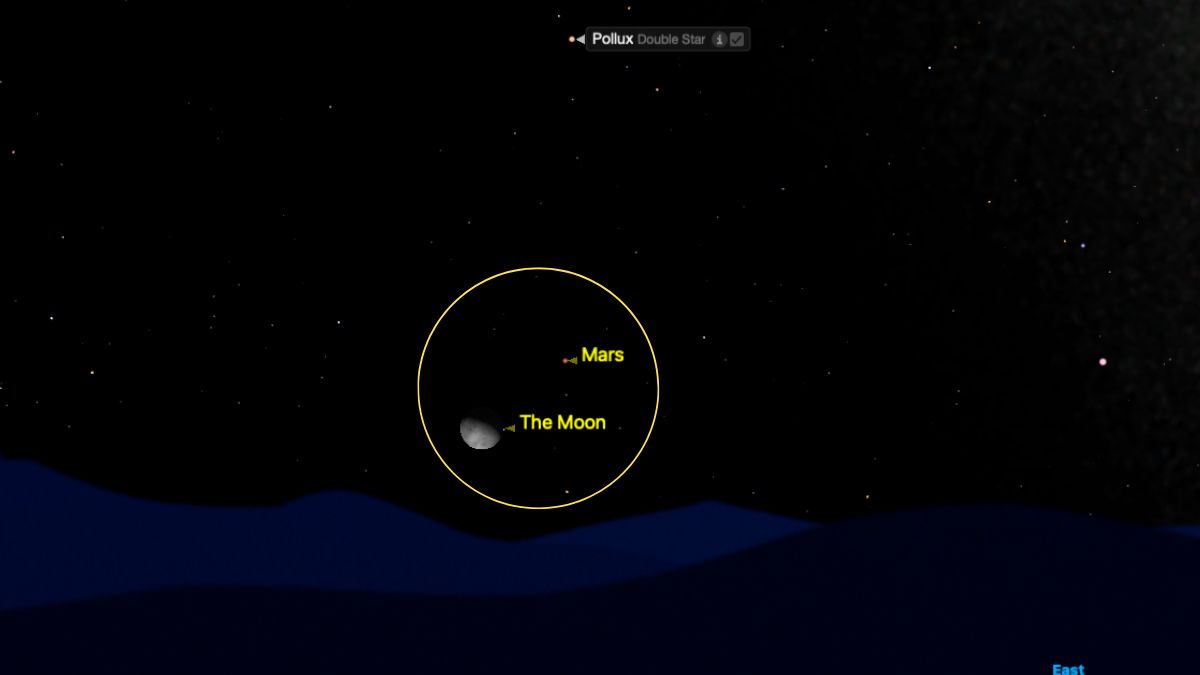
Check out the time of moonrise where you are (about five hours after sunset) tonight in the east to see Mars and the 70%-illuminated waning gibbous moon separated by about two degrees, the width of the two of your fingers held at arm's length against the sky. Mars is shining at a magnitude of 0.3 and rapidly brightening as its distance to Earth shortens. It's currently 81 million miles (131 million kilometers) distant. Mars will get closest to Earth on Jan. 12, 2025, at 59 million miles (96 million kilometers). That happens once every 26 months, as does its opposition four days later when it will be fully lit by the sun from our point of view, so it will shine at its brightest and best. — Jamie Carter
Thursday, Nov. 21 - Explore waning gibbous moon (before midnight)
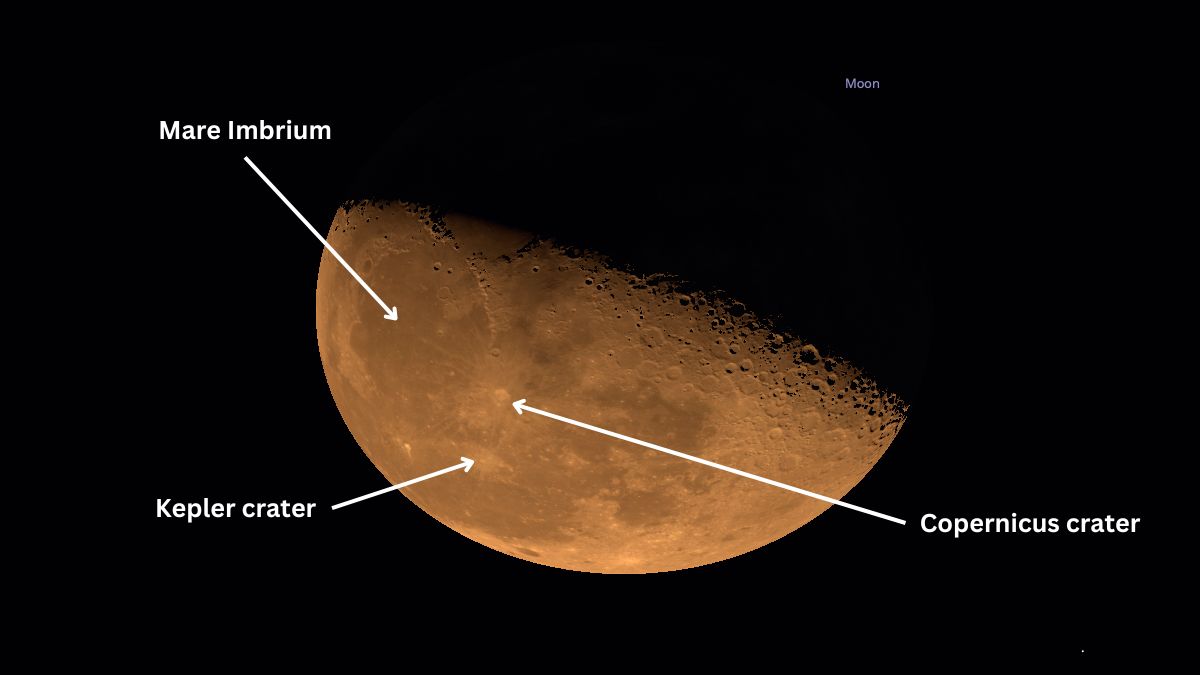
Look east at moonrise where you are (about 11:00 p.m. local time) to see the 21-day-old waning gibbous moon rise. Few people watch the moon in this phase, but it's a beautiful late-night sight. With 58% of its Earth-facing side illuminated tonight, it's the perfect time of the month to see features like Mare Imbrium and Mare Nubium (vast lava plains) and the famous Kepler and Copernicus craters (lunar craters in the Oceanus Procellarum). Above the moon will be bright Mars, with shining stars Procyon and Sirius level with the planet, farther to the right. — Jamie Carter
Editor's note: Fancy taking a more in-depth tour of our rocky companion? Check out our moon observation guide to learn more about what you can see on the lunar surface.
Tonight and the weekend
Friday, Nov. 22 - Last Quarter Moon with Regulus, Mars and the Beehive Cluster (around midnight)
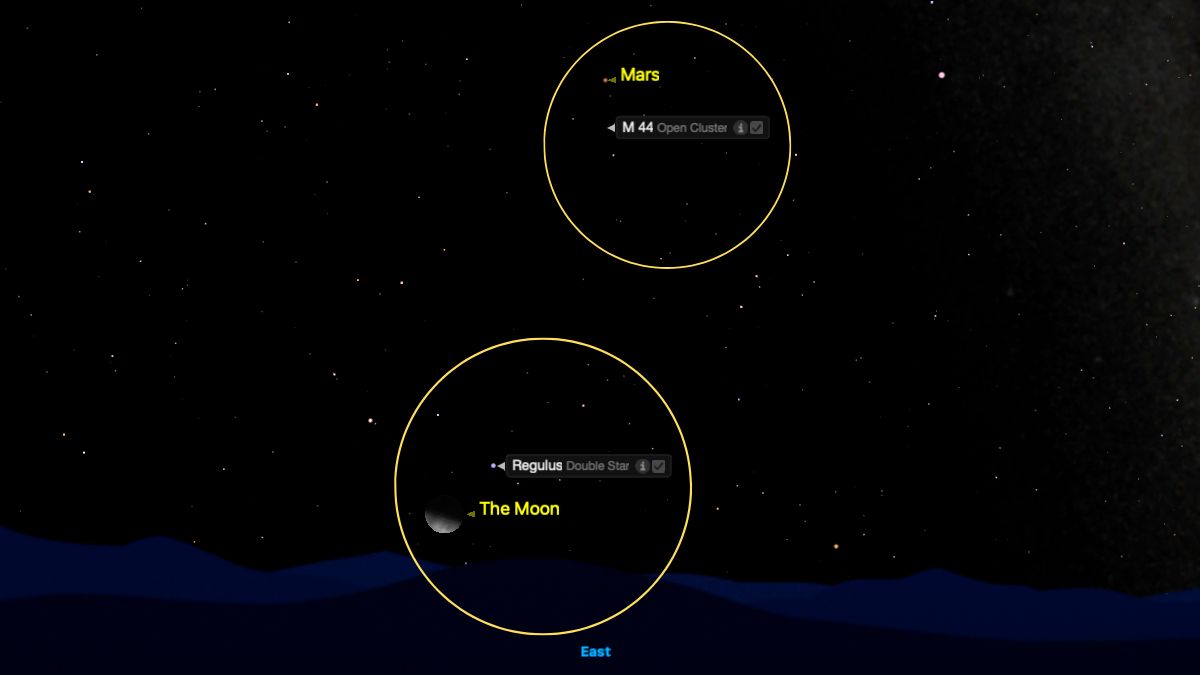
Look to the east shortly before midnight tonight, and you'll see Mars — now shining unmistakably red as it gets closer to Earth — forming a loose triangle with bright star Procyon to its right and the "twins" of Gemini, Castor and Pollux, just above it. If you have keen eyes, dark skies, or a pair of binoculars, look for the Beehive Cluster (M44) just below the red planet. This star cluster is 610 light-years away in the constellation Cancer. Wait an hour, and the half-illuminated last quarter moon will appear below, with Regulus, the brightest star in the constellation Leo, just above it. — Jamie Carter
Saturday, Nov. 23 - The Pleiades, plus Jupiter in the horns of Taurus (after sunset)
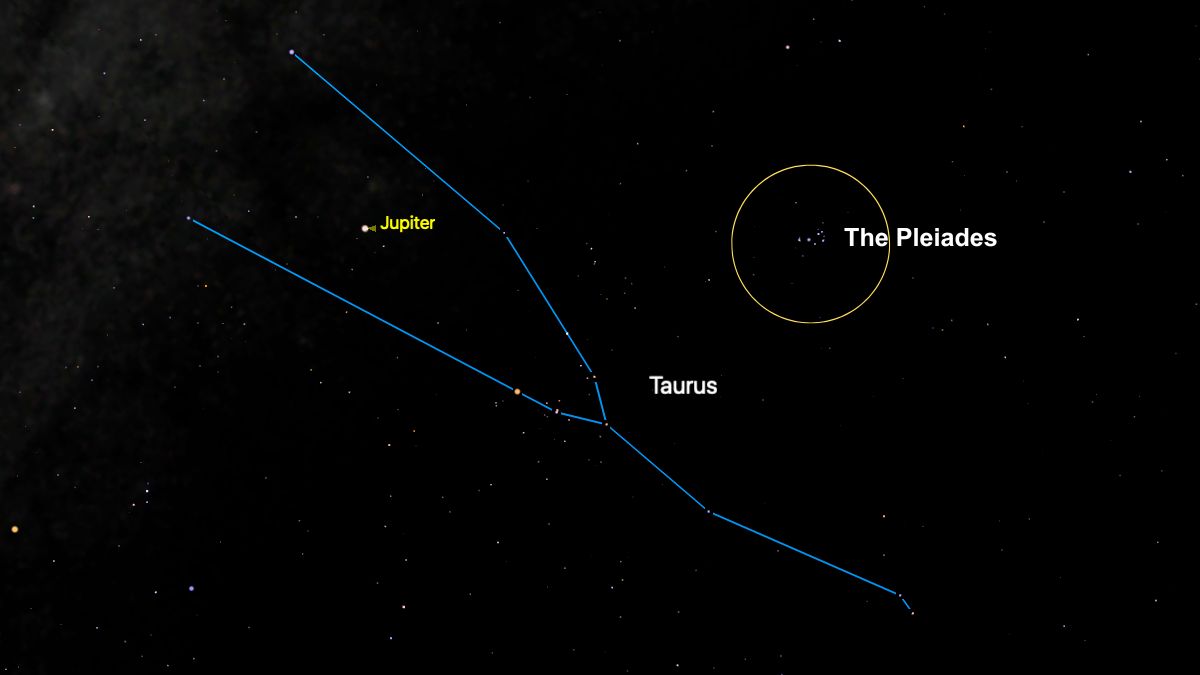
Look to the south after sunset tonight for one of the night sky's most beautiful sights, an open cluster of sparkling young blue stars in the constellation Taurus called the Pleiades. Also known as M45 and the "seven sisters," these stars, just 445 light-years away from the solar system, light up the clouds of gas and dust between them, giving the cluster an innate brightness that is hard to miss. Look to the left, and you'll see the bright planet Jupiter. Trace out the stars of the constellation Taurus, the bull — most noticeable for its V-shape of stars entered on reddish star Aldebaran — and you'll see that the giant planet is between the celestial animal's horns. — Jamie Carter
Sunday, Nov. 24 - Capella and the Auriga constellation with Jupiter (after sunset)
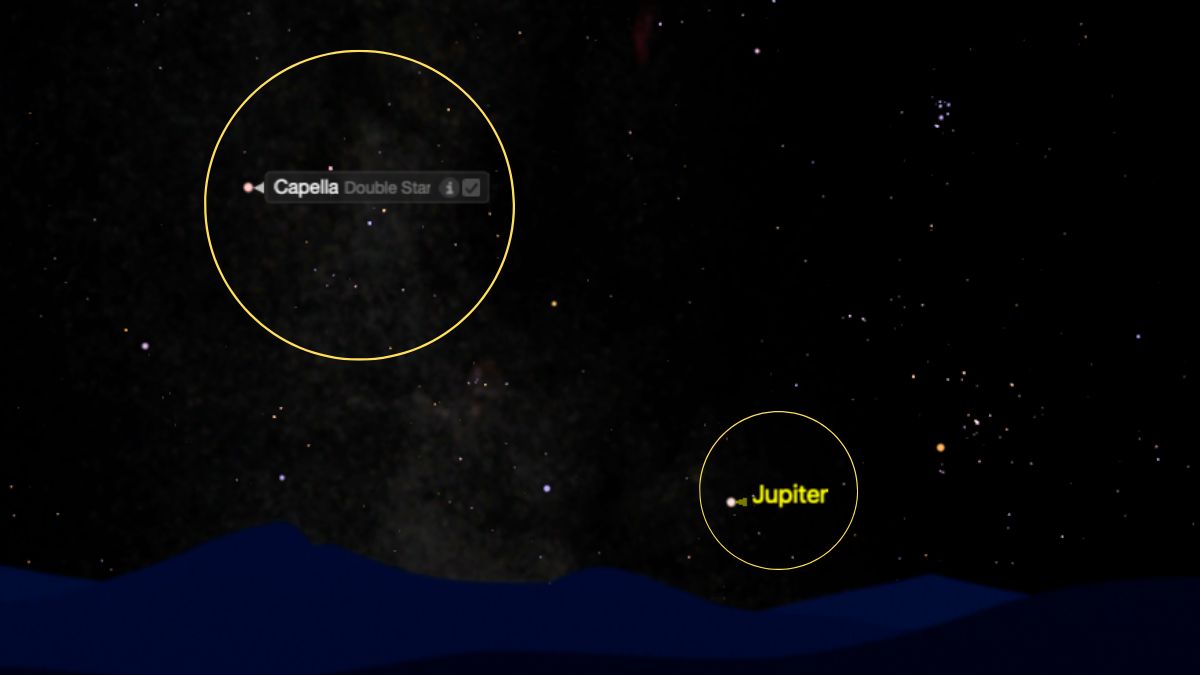
Dozens of significant constellations of bright stars in the sky are very famous to stargazers, but few people know. One is the constellation of Auriga (the "charioteer"), a near-rectangle of five stars that will be visible in the southeast after dark tonight. Its brightest star is Capella, which means goat in Latin. It's the sixth-brightest star in the night sky. The lower-right star in the constellation is Elnath, which presently has Jupiter for company. — Jamie Carter
Monday, Nov. 25 - The Belt of Venus phenomenon (sunset)
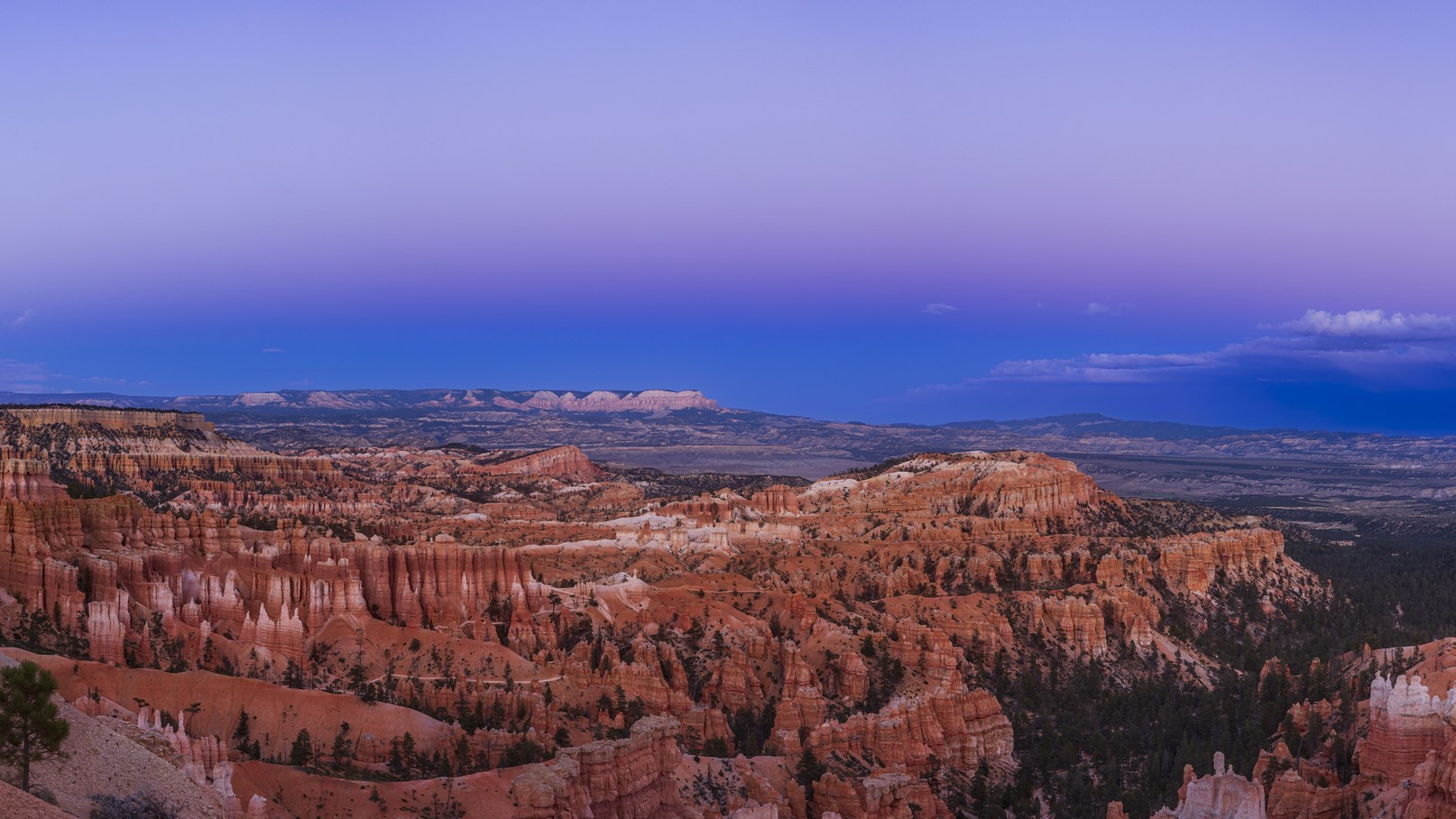
If you have a clear sky, watch a sunset in the west. However, what happens after that is interesting. Swivel 180 degrees to face east, and you'll see a dark blue band appear on the horizon with a deep pink color above. The blue band will rise as you watch it, and the pink will dissipate. Astronomers call it the Belt of Venus, but what is it? It's Earth's shadow being projected onto its atmosphere. It will soon combine with night and disappear. — Jamie Carter
Tuesday, Nov. 26 - The M-shaped constellation of Cassiopeia (after sunset)
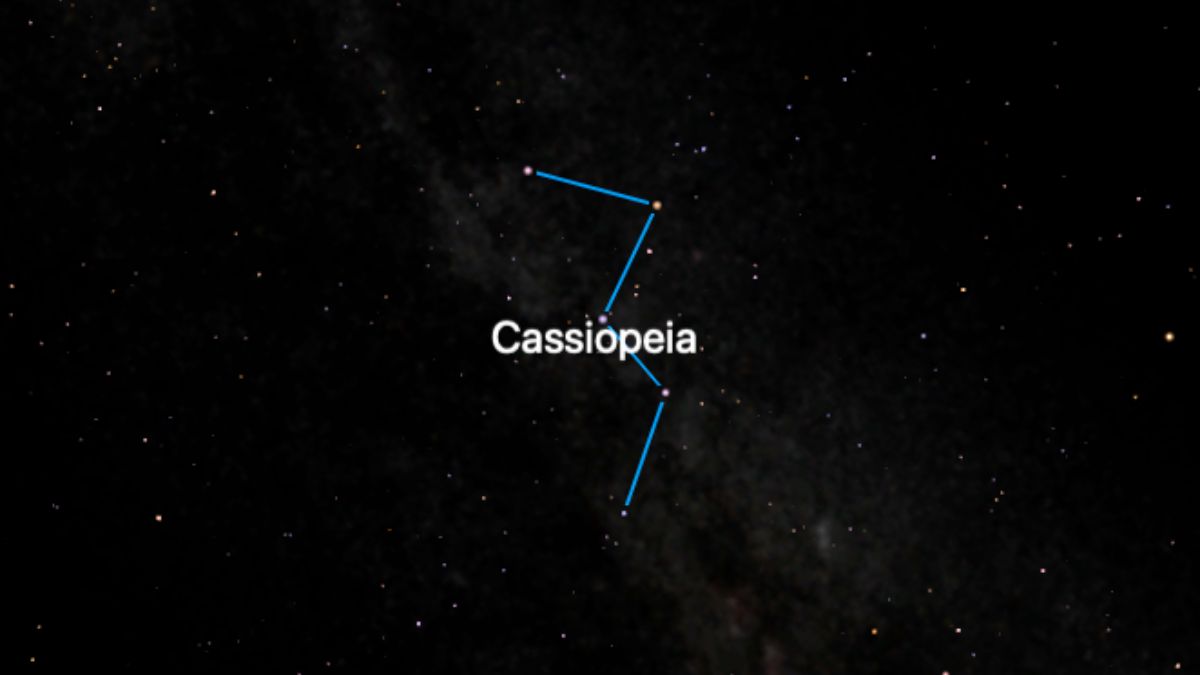
Look north, preferably about four hours after sunset, and you'll see one constellation that will be unmistakable. Cassiopeia is typically described as a W-shaped constellation, but tonight, it will look more like an M. A circumpolar constellation that revolves around the north star, Polaris, it's almost always in the northern hemisphere's night sky. In fall, it rides high and takes over from another famous shape of stars, the Big Dipper of Plough. That particular asterism (not an official constellation) is currently low on the horizon, as in the memory aid "spring up, fall down." — Jamie Carter
Wednesday, Nov. 27 - A waning crescent moon occults Spica (before sunrise)
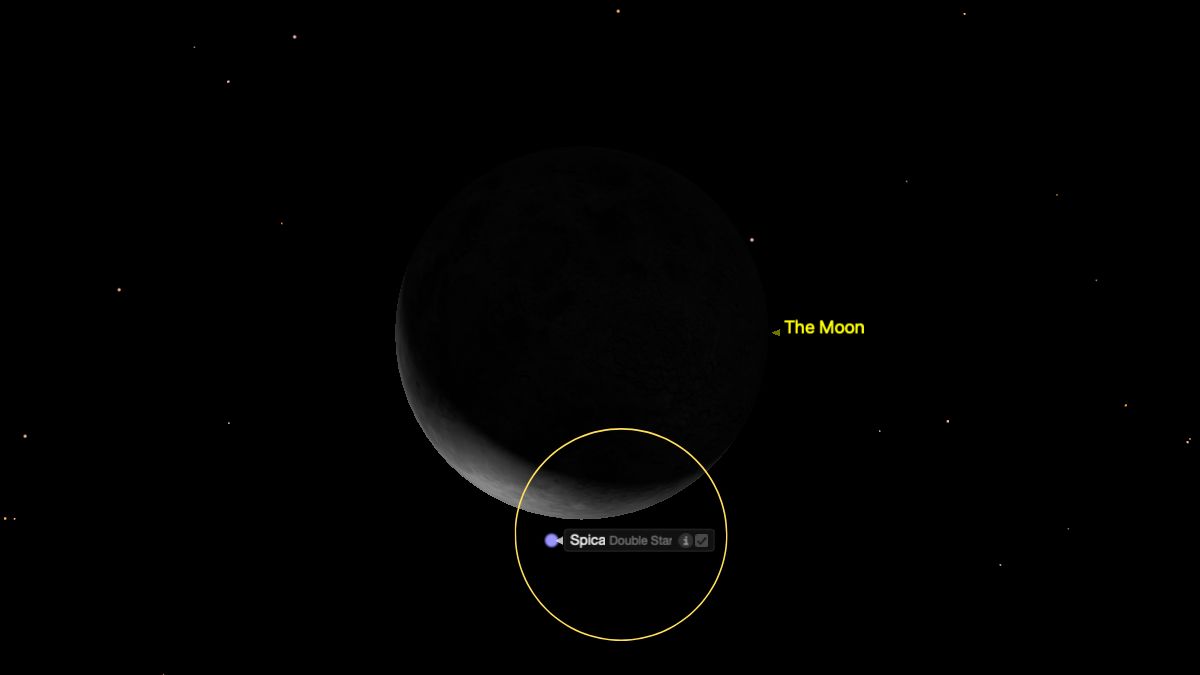
From about two hours before sunset, the beautiful sight of a 13%-illuminated waning crescent moon will be visible in the east just half a degree above Spica, the brightest star in the constellation Spica and one of the 20 brightest stars in the night sky. However, if you're in the eastern half of the U.S., eastern Canada or the north-western Bahamas, and you're in position looking to the southeast at around 5:35 a.m. EST, you'll see Spica disappear behind the moon's crescent. It will reappear about 75 minutes later, though the sky will be bright by then. Binoculars will help, as will this detailed map from In-The-Sky.org, which will also give you the specific timings for your exact location. — Jamie Carter
Thursday, Nov. 28 - A crescent moon on Thanksgiving (before sunrise)
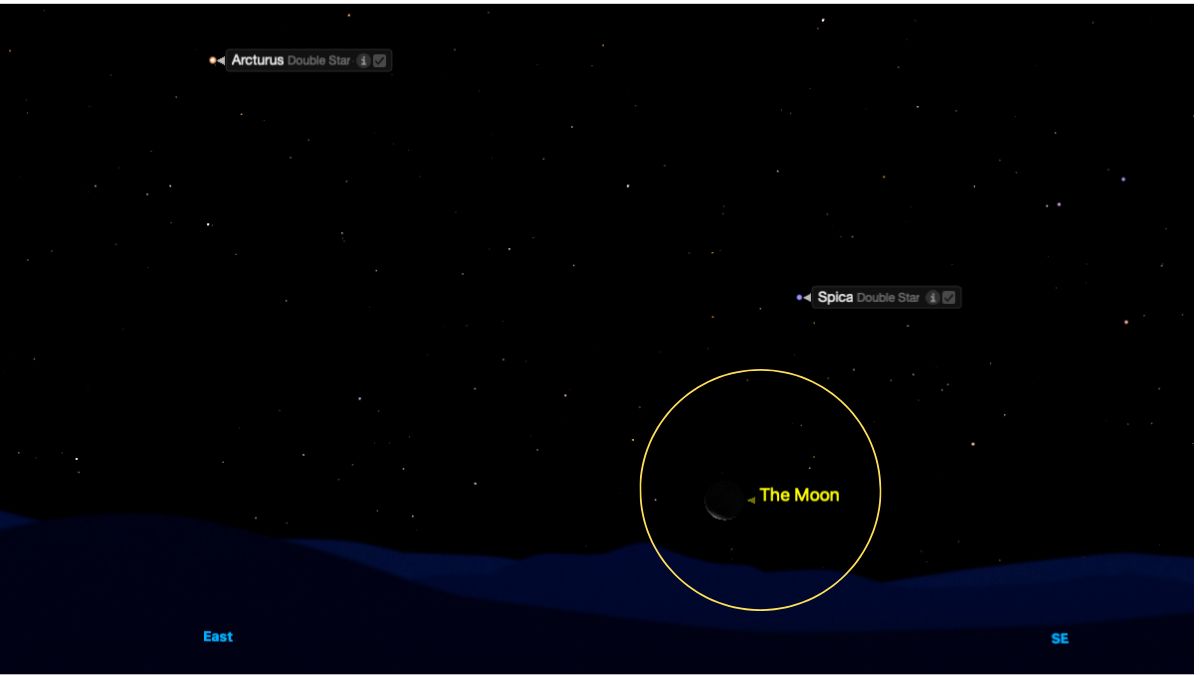
A delicate crescent moon will grace the night sky about two hours before sunrise today — Thanksgiving in the U.S. Just 7%-illuminated, it will rise in the east and sine below bright stars Spica (above) and Arcturus (above and left). Use a pair of binoculars to see "Earthshine" — sunlight reflected from Earth's day side and onto the moon's night side. — Jamie Carter
Tonight and the weekend
Friday, Nov. 29 - Navajo constellation Átsé Ets'ózí (after sunset)
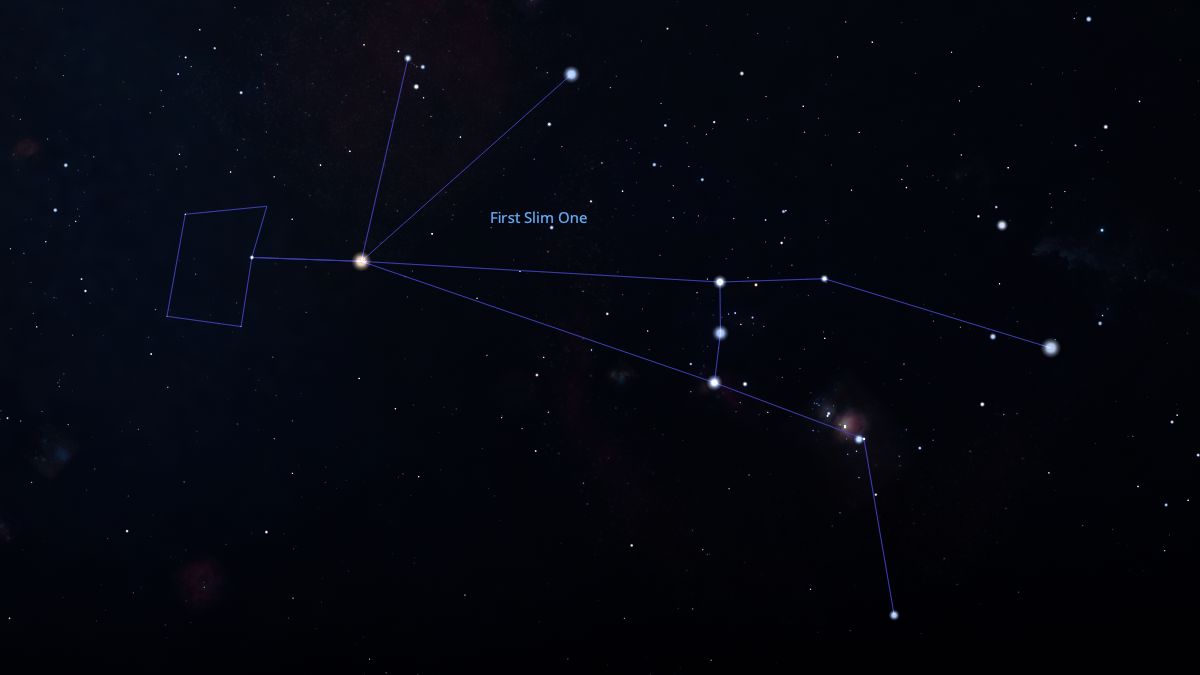
Today, it's Native American Heritage Day in the U.S., an excellent opportunity to see and interpret the night sky in a way familiar to Indigenous people in North America. It's not an exact science because there are multiple Indigenous tribes and cultures, but one familiar shape of stars in the night sky is the Western constellation of Orion. Centered on the three bright stars that make up the famous Orion's Belt, which rises in the east about three hours after sunset tonight — is Átsé Ets'ózí (First Slim One), a male image in Najavo culture that uses Orion's Sword as a knee. In Ojibwe culture, the stars Procyon in Canis Minor and Aldebaran in Taurus are added to form a vast figure called Biboonkeonini (The Wintermaker). — Jamie Carter
Related: The Native American night sky: 7 starry sights to see
Saturday, Nov. 30 - Mars makes a triangle (before midnight)
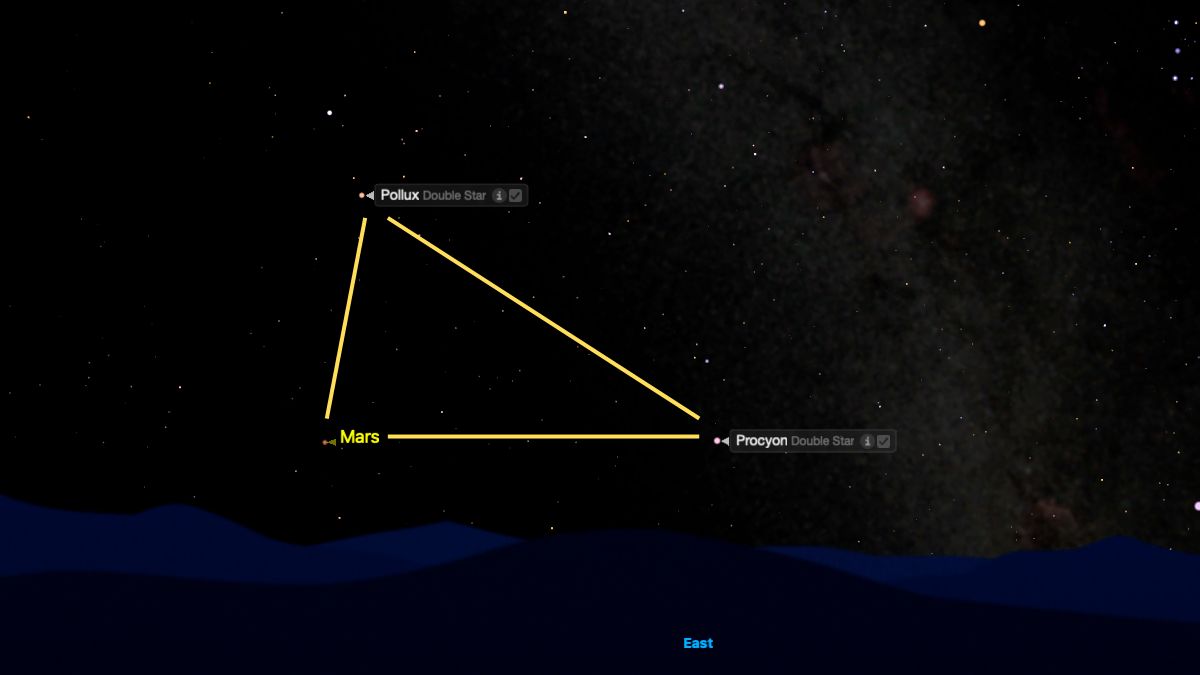
As we reach the end of November, Mars becomes a pre-midnight object. Get outside and look to the east shortly before that time. The red planet rises below a panorama of bright stars, including Betelgeuse, Rigel, Orion's belt, Capella and Sirius. However, closer to it, you'll see it make a triangle shape with Procyon in the constellation Canis Minor (the eighth-brightest star in the night sky), to its right and above, the bright golden star Pollux in Gemini. — Jamie Carter
Sunday, Dec. 1 - The Winter Circle (before midnight)
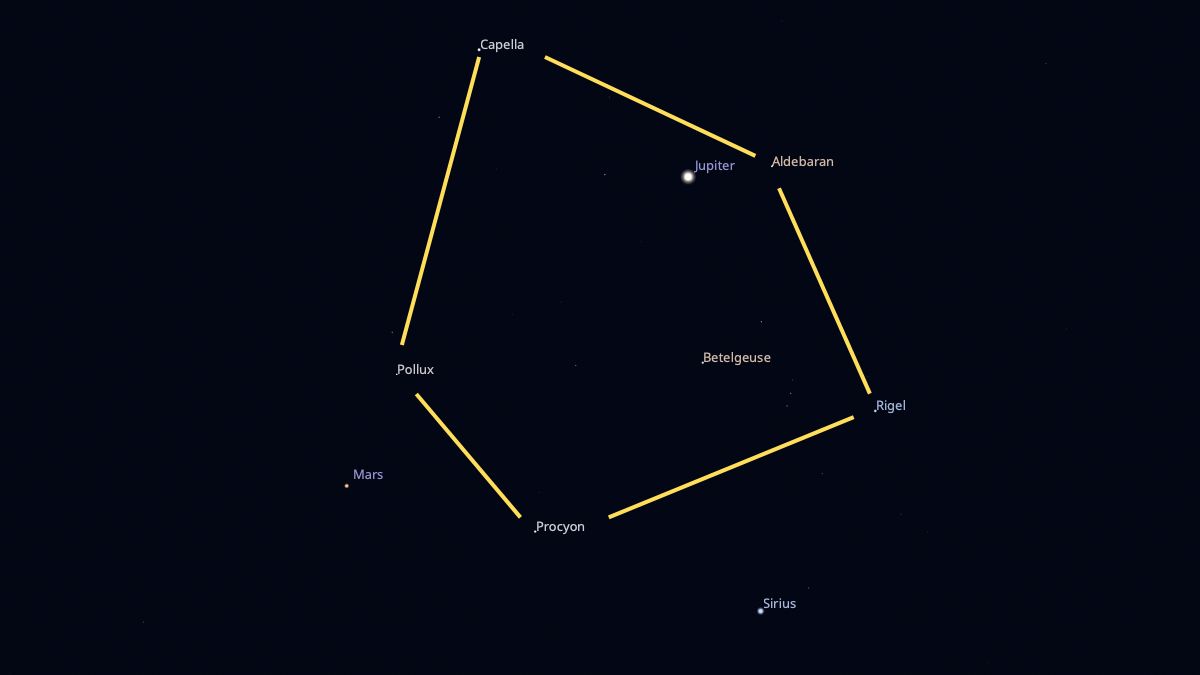
With a new moon imminent, it's the perfect moonless night to get a grip on one of the largest and most impressive star-hops possible to make in Earth's night sky. Get outside after 10:00 p.m. local time and look to the southeast for a mess of bright stars. Make a circle (or hexagon?) out of them, going anti-clockwise from the bottom. First, find Sirus — the brightest star in the night sky — then go above-right to Rigel in Orion, to the right of the hunter's three belt stars. Now go up to orangey Aldebaran (don't confuse it with interloper Jupiter), then above-left to Capella high in the sky, then directly down to two stars together, Pollux and Castor in Gemini. Now go below-right to Procyon (ignoring Mars, just outside the circle)and below-right again back to Sirius. Practice finding and naming these stars, and you can level up your stargazing knowledge. — Jamie Carter
Monday, Dec. 2: Jupiter and the constellation Auriga (after sunset)
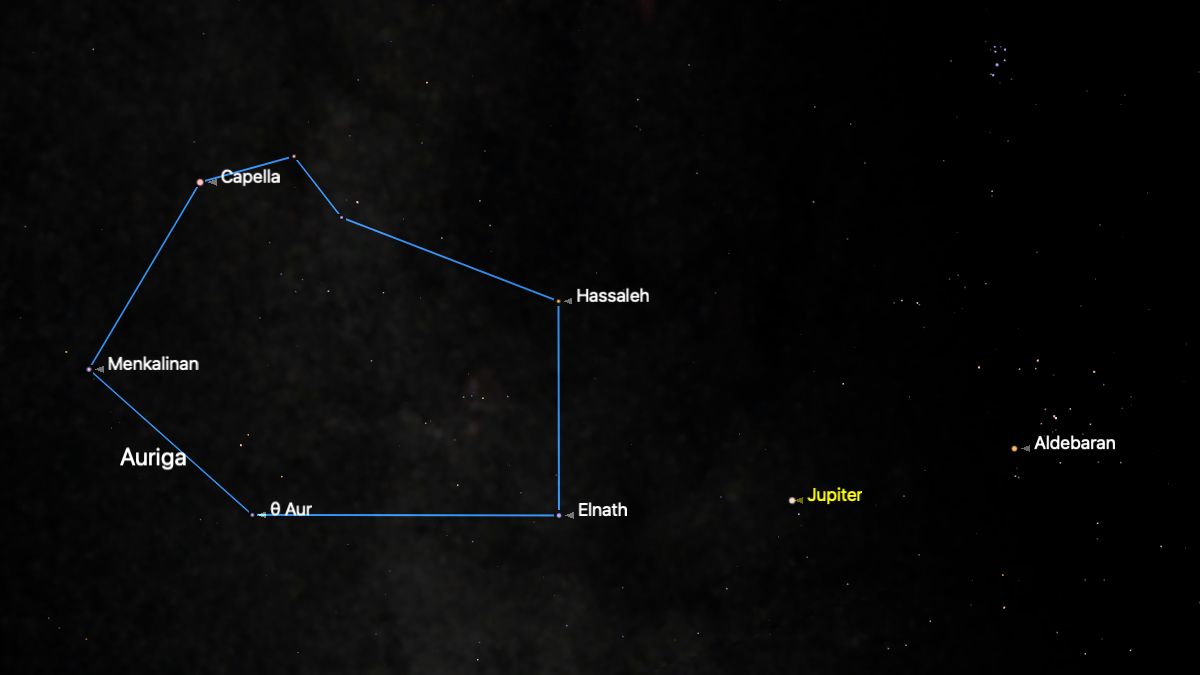
After yesterday's" New Cold Moon," the skies will be dark and perfect for stargazing. Look to the northeast, and you'll see Jupiter shining at magnitude -2.8, one of the brightest lights in the night sky. To its upper-left will be Capella, the brightest star in the constellation Auriga. Going anti-clockwise from Capella, see if you can pick out the constellation's four other bright stars — Menkalinan, Mahisim, Elnath and Hassaleh — circling toward Jupiter and back. — Jamie Carter
Tuesday, Dec. 3: A crescent moon (after sunset)
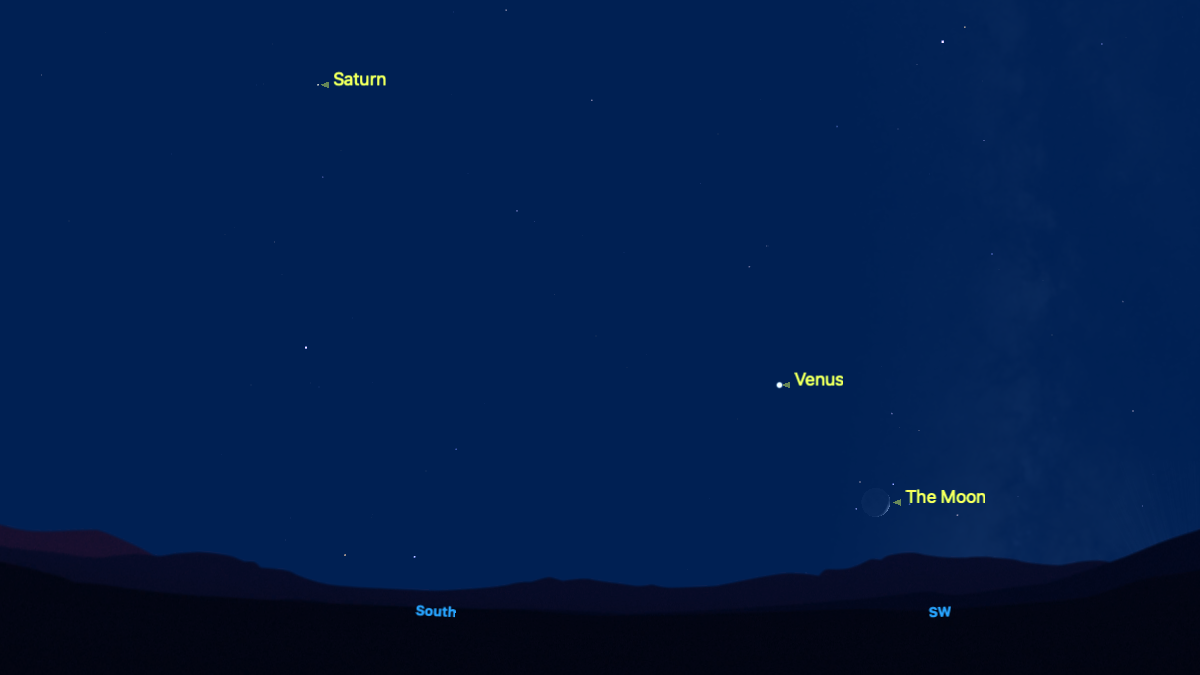
Look to the southwest an hour after sunset, and you'll see a 7%-illuminated waxing crescent moon in Sagittarius, just below bright Venus. The moon will set soon after, so don't waste time. — Jamie Carter
Wednesday, Dec. 4: A crescent moon and Venus in close conjunction (after sunset)
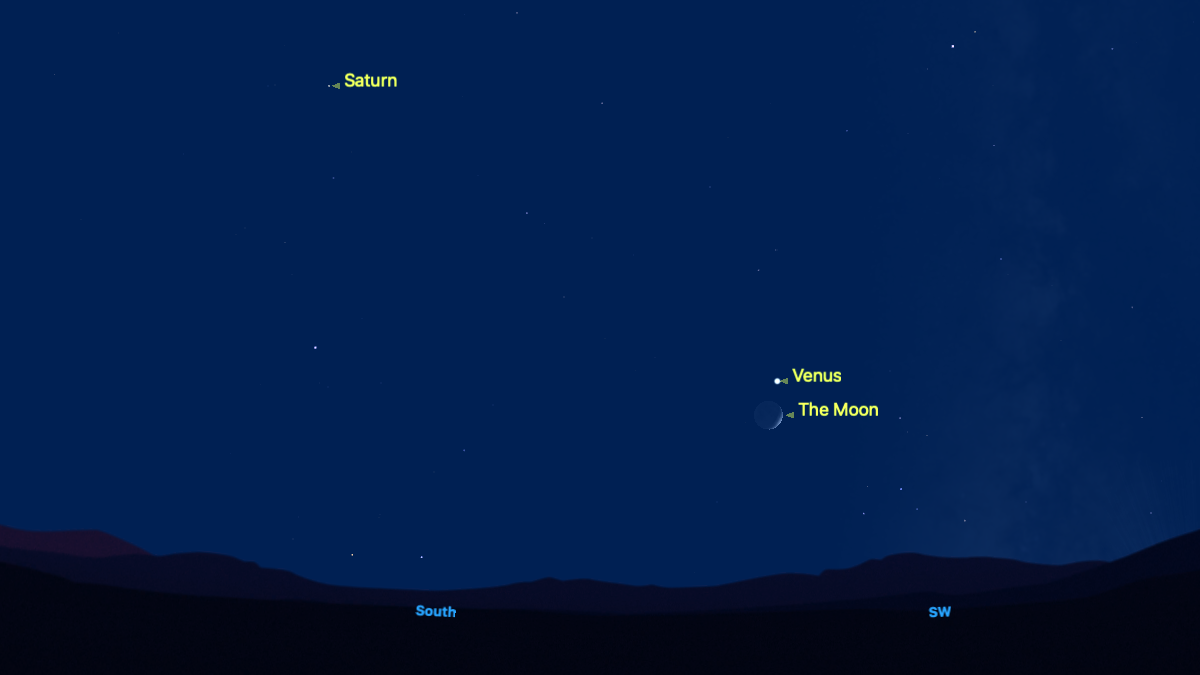
Now 14%-illuminated, the waxing crescent moon will today shine just a couple of degrees from Venus in the eastern sky after dark. The planet is brightening as it gets closer to Earth, though paradoxically, less of its disk is on show. Tonight, it's in a 66%-illuminated gibbous phase and shines at mag. -4.2, but by February, it will become a 13%-illuminated crescent yet shine at mag. -4.8. It will shine more brightly despite less of its disk being lit by the sun for two reasons — it will be much closer, and the clouds in its atmosphere reflect a lot of light. — Jamie Carter
Thursday, Dec. 5: A crescent moon close to Venus (after sunset)
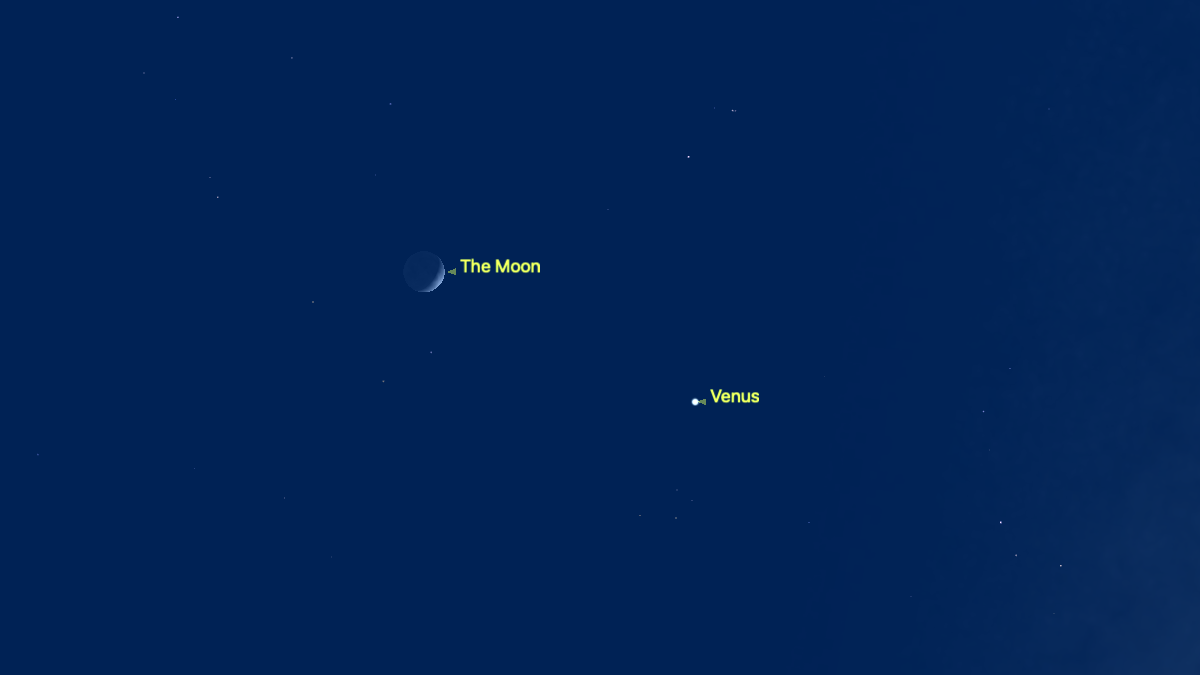
Here's another spectacular sight of the crescent moon and Venus together for a third night. Although not in as close a conjunction as yesterday, tonight, the waxing crescent moon — now 22%-illuminated — will shine to the upper-left of Venus. More views of the waxing crescent moon and Venus are coming early in 2025. — Jamie Carter
Last night Kevin McCarthy captured this beautiful photograph of the moon and Venus from Charlotte, North Carolina, U.S. You should be able to catch a similar view tonight where Venus will appear to the moon's lower right, pending clear skies!
"The pairing just as the sun set allowed some blue to remain in the sky at the time I took this shot. I think that adds to the photo instead of the normal pitch-black background," McCarthy told Space.com in an email. — Daisy Dobrijevic

Night sky for tonight and the weekend
Friday, Dec. 6: Saturn, the moon and Venus align (after sunset)
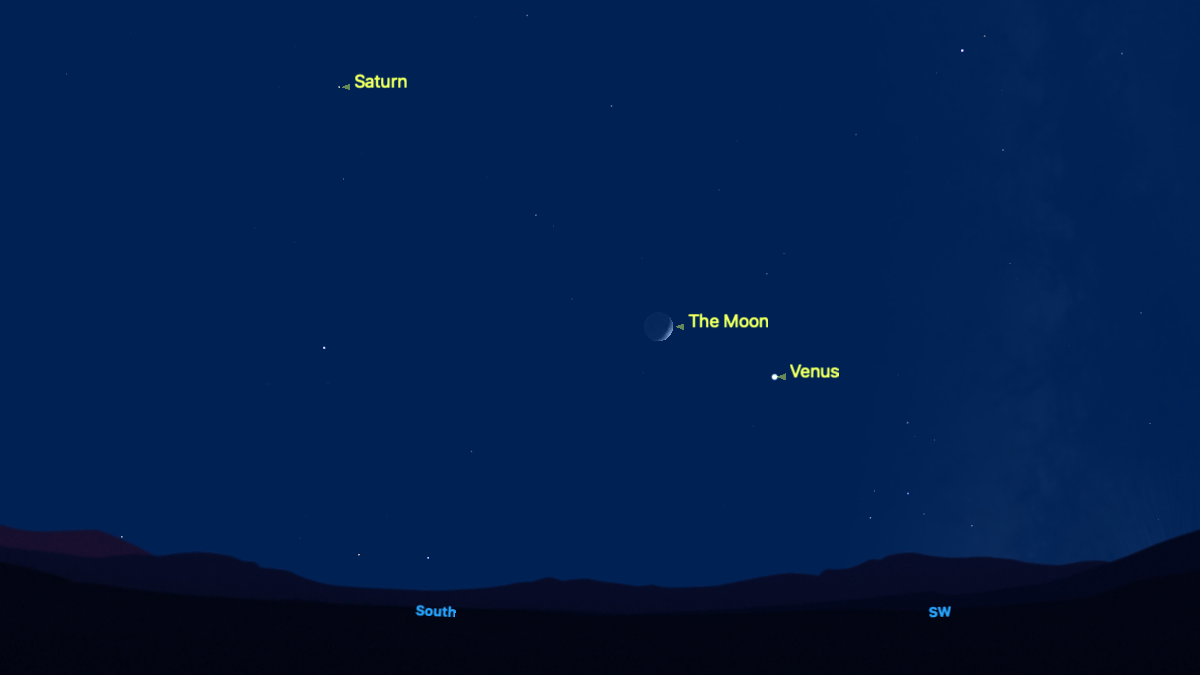
Look to the southwest after dark, and you'll see a beautifully balanced panorama of the waxing crescent moon, now 32%-illuminated, flanked by two of the solar system's most beautiful planets. Below the moon will be Venus, shining brightly at mag. -4.1, while above will be Saturn, the ringed planet, at mag 1. Just beyond Saturn, but hidden to the naked eye, will be the dim seventh planet Neptune. — Jamie Carter
Saturday, Dec. 7: Jupiter at opposition (after sunset)
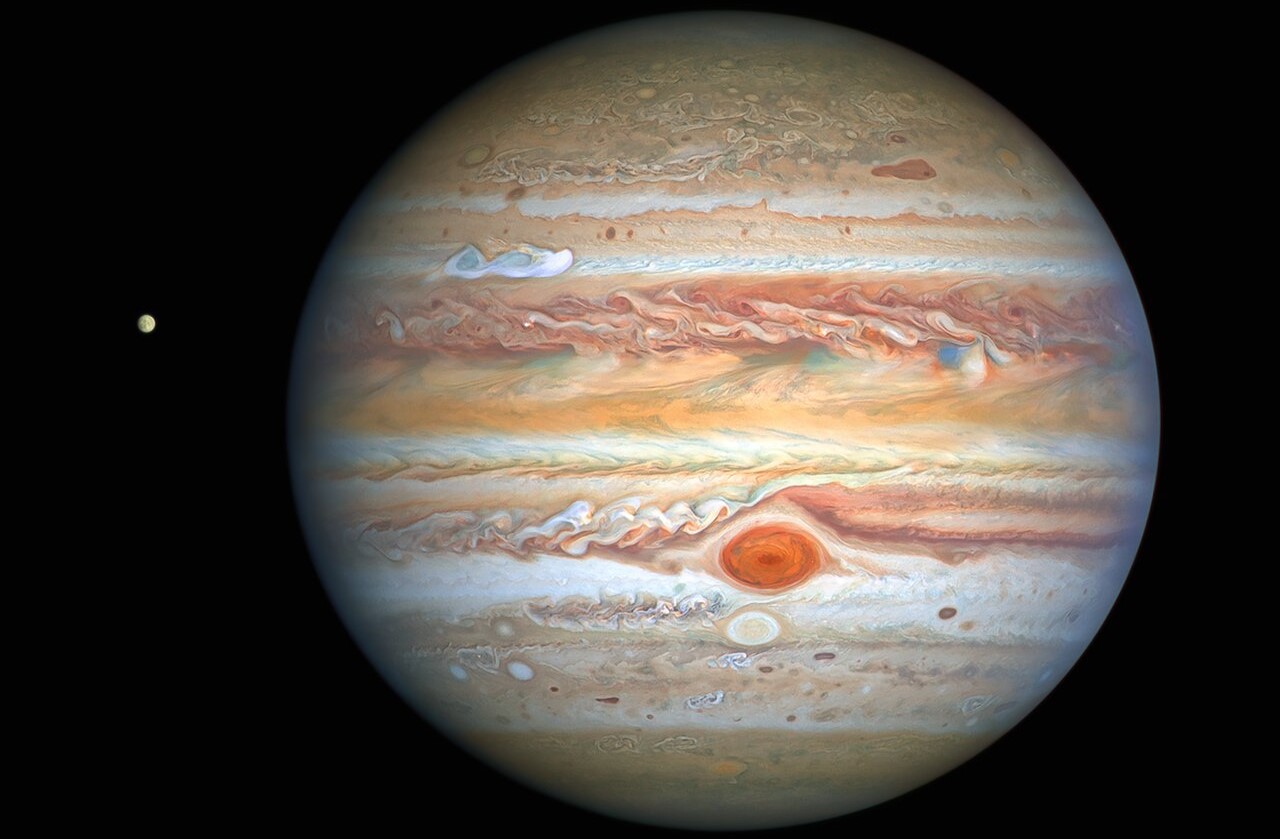
Jupiter will rise gloriously in the east after dark tonight as soon as the sun sets in the west. It's a special day for the "King of Planets" because, as seen from Earth, it reaches opposition, the night when Earth passes between it and the sun. The planet's disk will be 100% illuminated as seen from Earth, and Jupiter will look at its brightest and best for all of 2024. If you have binoculars, you'll be able to see some of its four Galilean moons — Io, Europa, Ganymede, and Callisto. If you have a small telescope, you'll see its colorful cloud belts. Don't worry if it's cloudy — because Jupiter will be bright and visible all night for the rest of the month. — Jamie Carter
Sunday, Dec. 8: First quarter moon and Saturn (after dark)
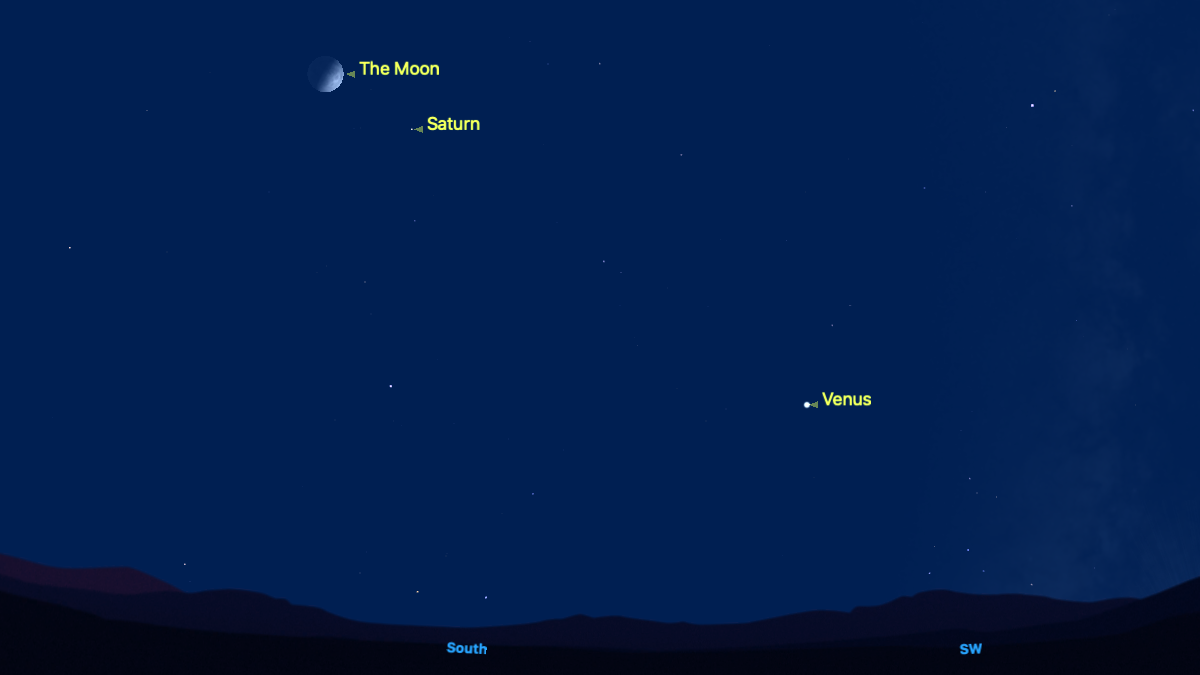
In the southern sky after dark, you'll find a half-lit moon at its first quarter phase when its entire right-hand side (from the Northern Hemisphere) is illuminated. Look for three dark patches in a row on the moon's lit side — ancient lava pains called maria — called the "seas" of Serenity, Tranquility and Fertility. Just below and to the right will be Saturn, shining at mag. 1. — Jamie Carter
Monday, Dec. 9: Jupiter in Taurus (after sunset)
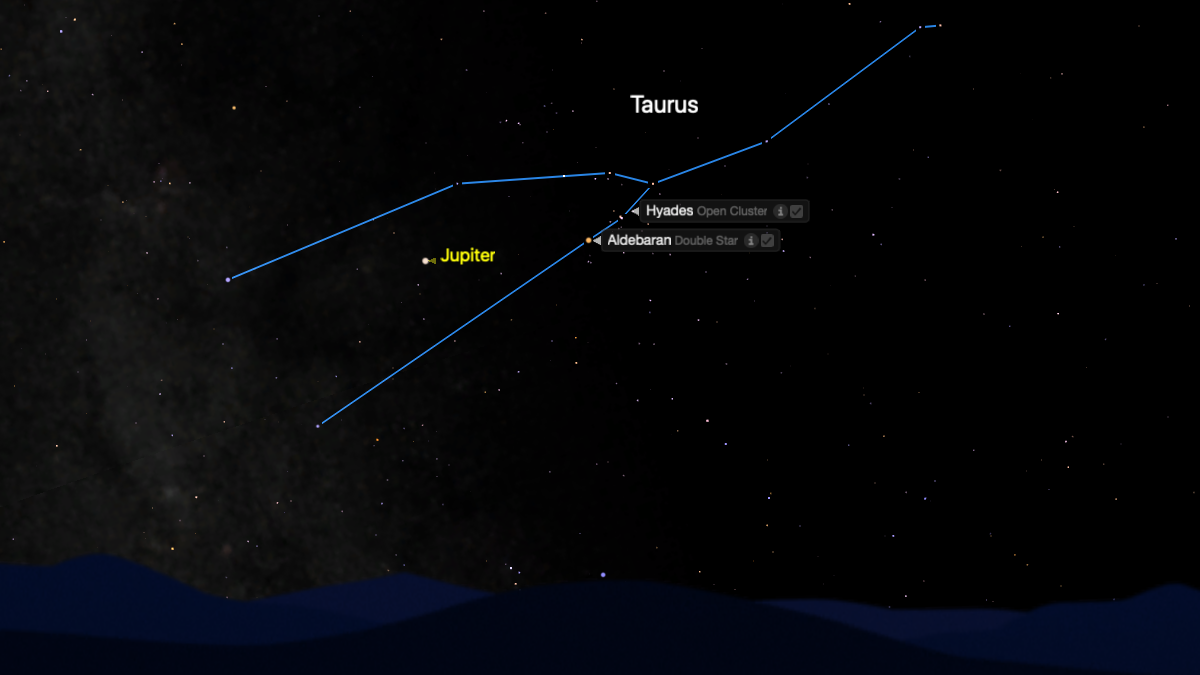
Look east after sunset tonight for the bright planet Jupiter shining at mag. -2.8. It's firmly in the clutches of the constellation Taurus, "the bull." Just to Jupiter's right will be orange-reddish star Aldebaran, whose name means "eye of the bull." Around Aldebaran, you'll see a smattering of stars in a V-shape. That's the Hyades, one of the closest open clusters of stars to the solar system, at around 150 light-years. — Jamie Carter
Tuesday, Dec. 10: The Pleiades (after dark)
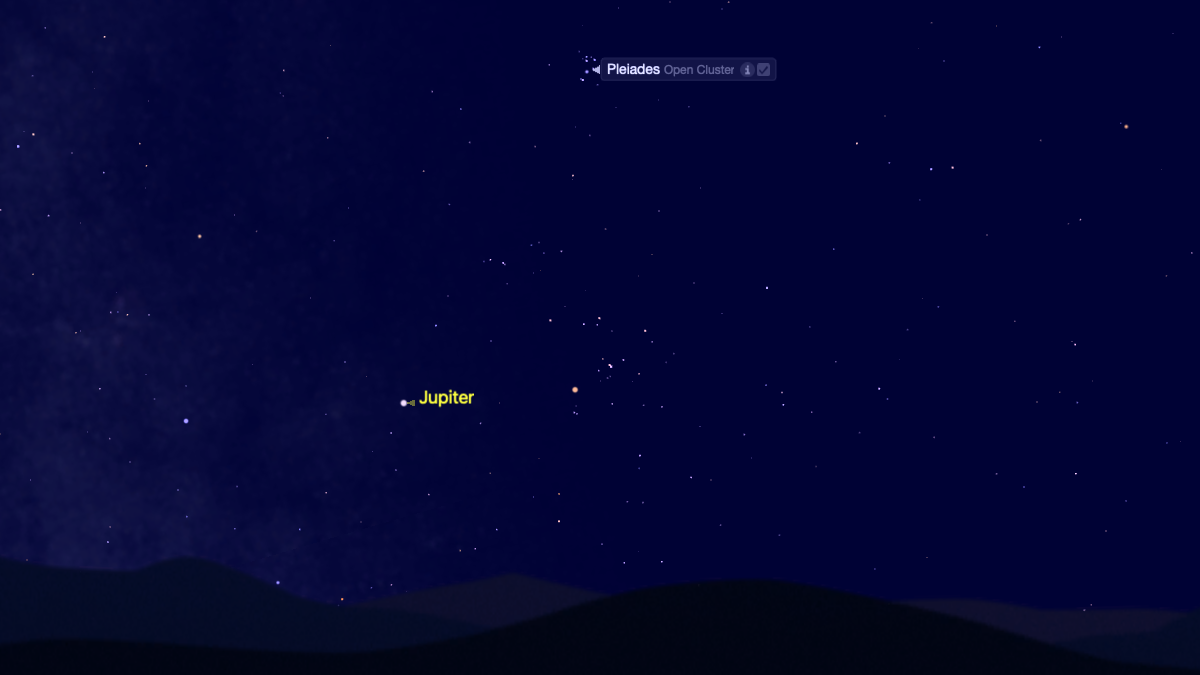
Look southeast after dark, and you'll see the bright planet Jupiter. Tonight, use it as a guiding light to find one of the night sky's most spectacular sights — the Pleiades. Pronounced "Plee-err-deez," this open cluster of seven bright stars (or six to older eyes) shine together in the constellation Taurus. Also known as "Seven Sisters" and M45, the Pleiades are all hot, young stars a mere 445 light-years away from the solar system. Their intense starlight illuminates clouds of gas and dust between them. Get the Pleiades in your peripheral vision to appreciate their collective brightness. — Jamie Carter
Wednesday, Dec. 11: Summer Triangle points at Venus (after sunset)
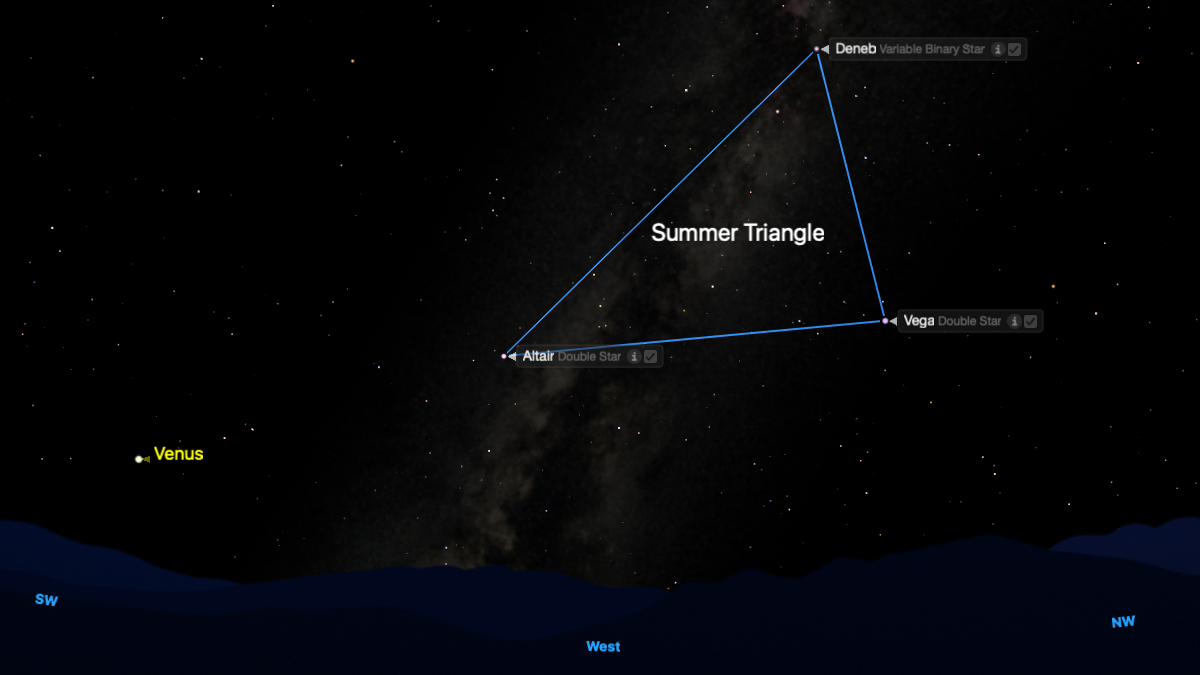
It's one of the most famous asterisms (a shape of stars, but not an official constellation) in the summer night sky, but tonight the Summer Triangle continues its post-sunset farewell with an extra point of light. Look southwest shortly after sunset, and you'll see Deneb in Cygnus (top), bright Vega in Lyra (below Deneb), and Altair in Aquila (left of Vega) form their usual triangle. This unmistakable shape of stars all this week points like an arrow at Venus, shining at mag -4.2 above southwest. — Jamie Carter
Thursday, Dec. 12: Moon, the Pleiades and Jupiter
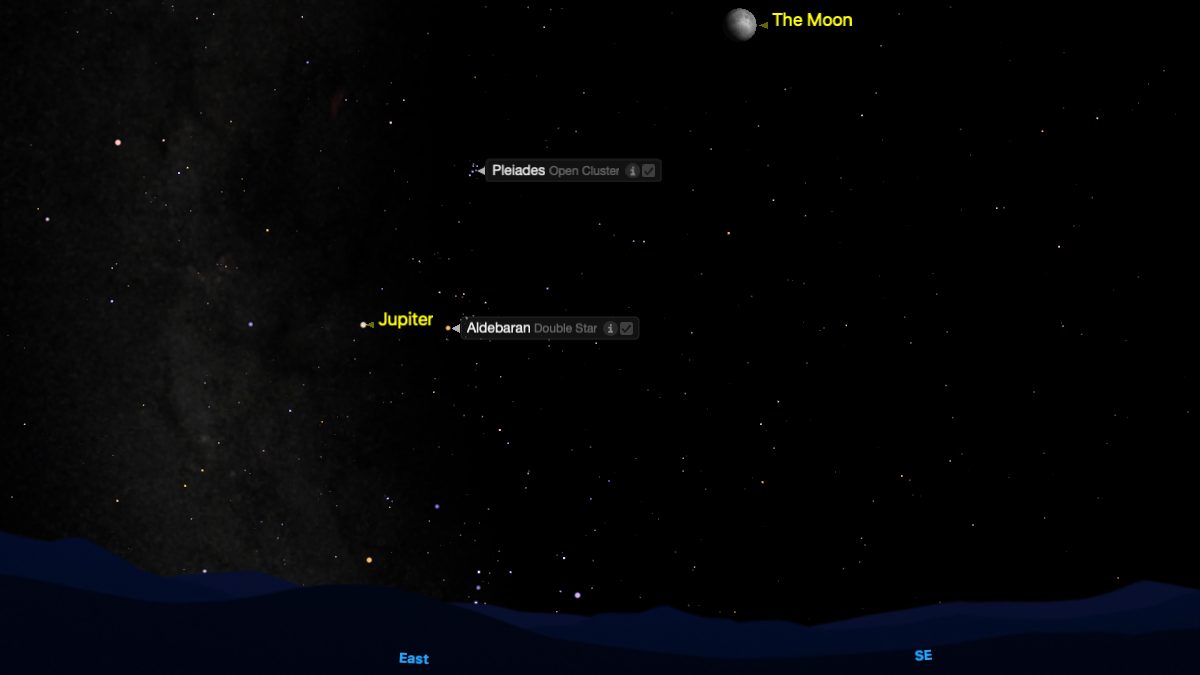
The glare of the waxing gibbous moon, 92% illuminated tonight, is now washing out many faint stars. However, between the moon and the eastern horizon, you can easily pick out bright Jupiter shining at mag. -2.4. To its right will be Aldebaran in Taurus, but the spectacular open star cluster of the Pleiades will be between the giant planet and the moon. — Jamie Carter
Night sky for tonight and the weekend
Friday, Dec. 13: Geminid meteor shower (midnight)
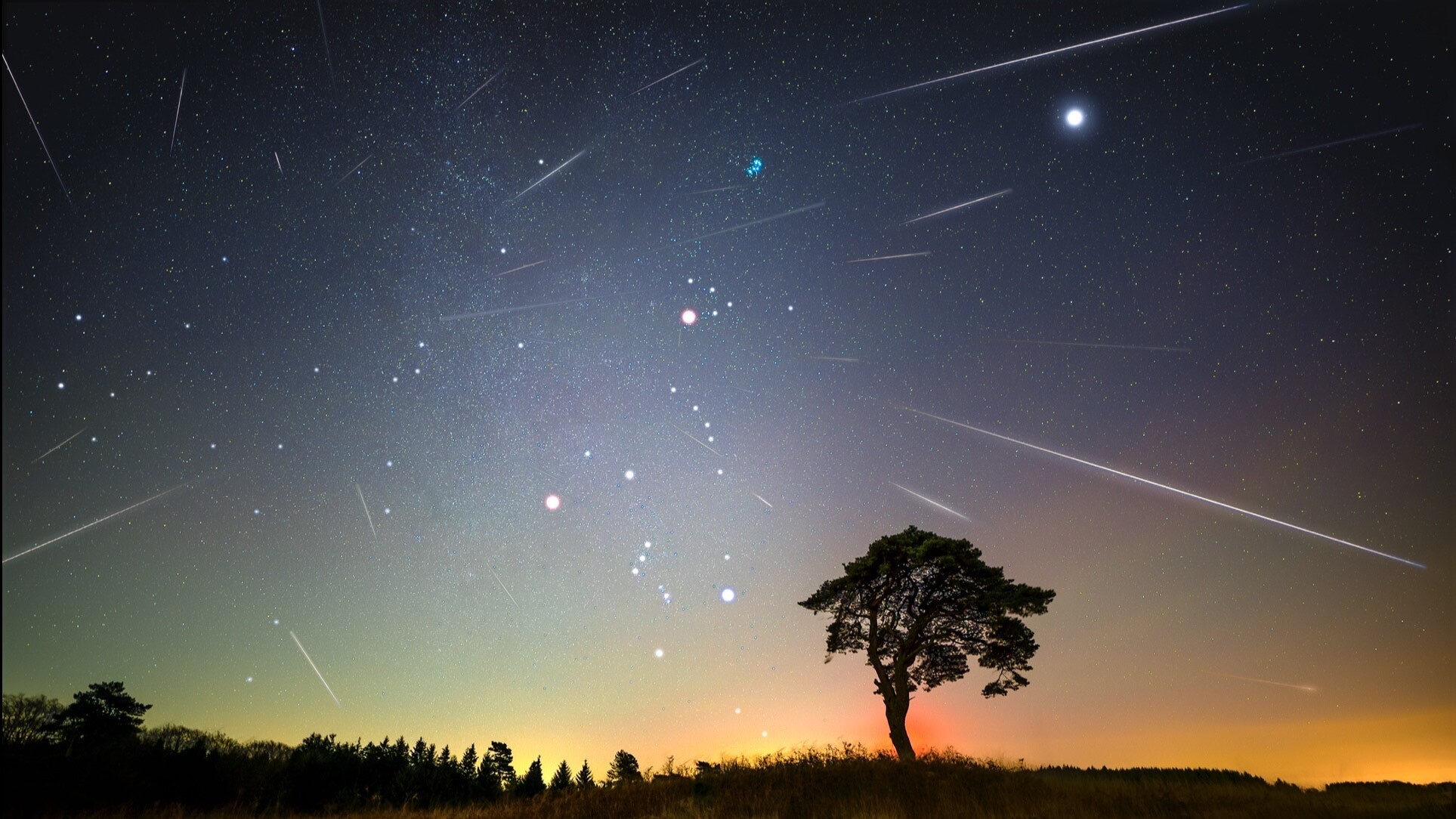
Its up to 120 meteors per hour make it officially the year's most prolific meteor shower, yet the Geminids will underperform in 2024. You can thank the waxing gibbous moon, which will be 97% illuminated tonight and so bleach the sky. It will, therefore, be tricky to see any but the brightest colorful shooting stars produced as Earth smashes into the trail of debris left in the inner solar system by asteroid 3200 Phaethon. — Jamie Carter
Read more: Geminid meteor shower peaks tonight! Here's how to see one of the best meteor showers of the year
Editor's note: You can also watch the Geminid meteor shower live online from the comfort of your own home courtesy of Astronomer Gianluca Masi of the Virtual Telescope Project. The livestream is scheduled to start at 6:00 p.m. EST (2300 GMT) on Dec. 13, weather permitting.
Saturday, Dec. 14: Moon, Jupiter and Aldebaran (after sunset)
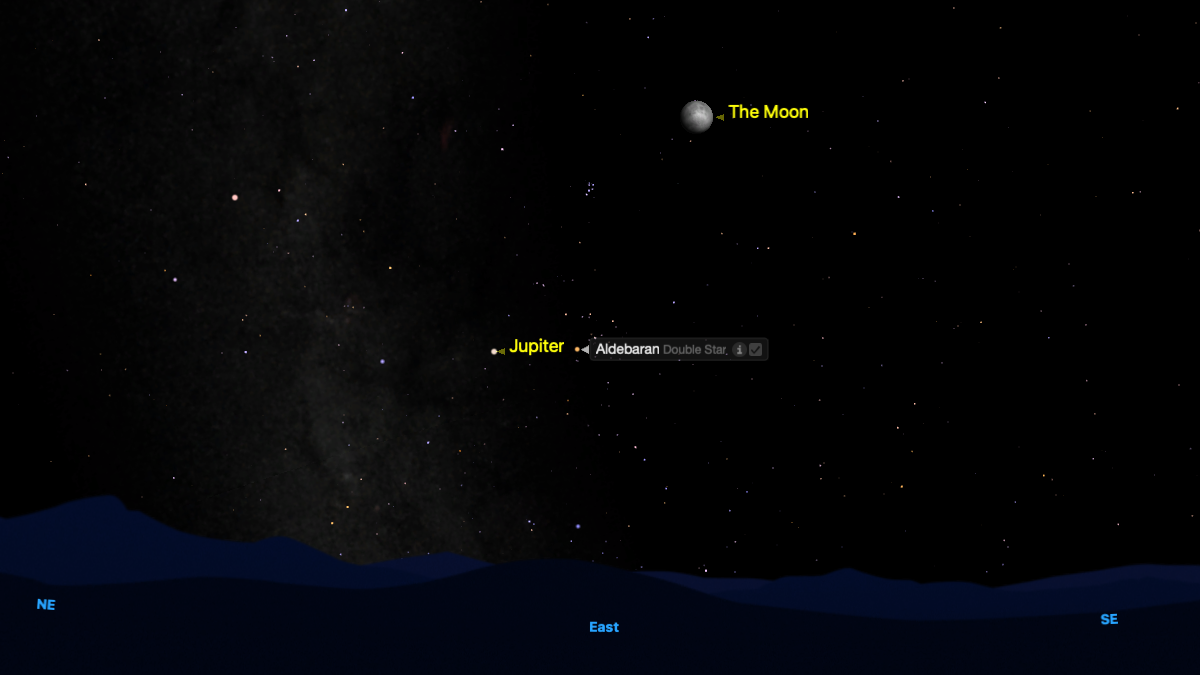
Now on the cusp of being a full moon, our natural satellite glides past the constellation Taurus tonight. As it does so, it will align with bright Jupiter and orangey-reddish supergiant star Aldebaran, the brightest star in Taurus and about 65 light-years from our sun. — Jamie Carter
Sunday, Dec. 15: The full Cold Moon rising (dusk)

Rising in the east during dusk will be one of the month's most dramatic and beautiful celestial sights of the month — the full "Cold Moon." Also known as the "Moon Before Yule" and the "Long Nights Moon," it will turn full at 4:01 a.m. EST. As a bonus, as the full moon rises, it will form an equilateral triangle with Jupiter above its right and bright red supergiant stars Betelgeuse to its lower right. — Jamie Carter
Monday, Dec. 16: Find Gemini from Orion (after dark)
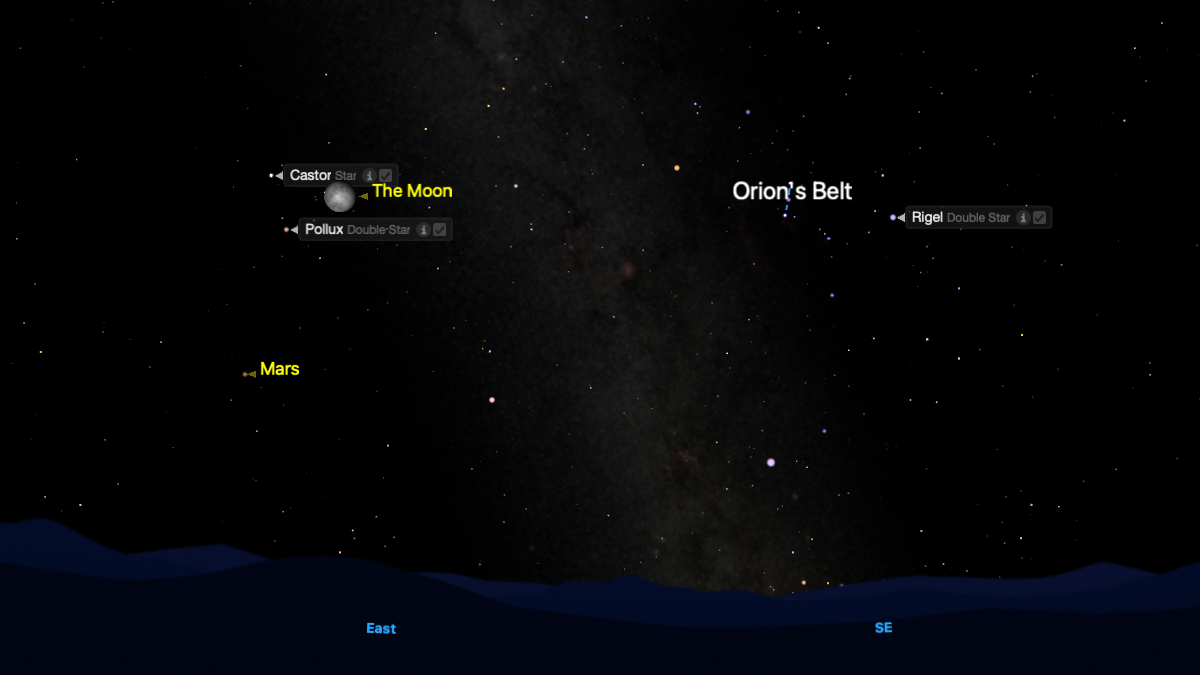
The now-waning gibbous moon might bleach the sky, but the stars are so bright in the east this month after dark that you should have no problem completing this star-hop. First, look for the three bright stars of Orion's Belt, lined up vertically above the eastern horizon a couple of hours after sunset. On the left will be the reddish giant Betelgeuse, and on the right will be the blueish giant Rigel. Draw an imaginary line from Rigel through the belt stars to two bright stars arranged vertically, Castor and Pollux in Gemini. Tonight, the moon, which both stars are to the left of, gives you a helping hand. As a bonus, Mars will be shining below Gemini. — Jamie Carter
Tuesday, Dec. 17: Moon and Mars (after dark)
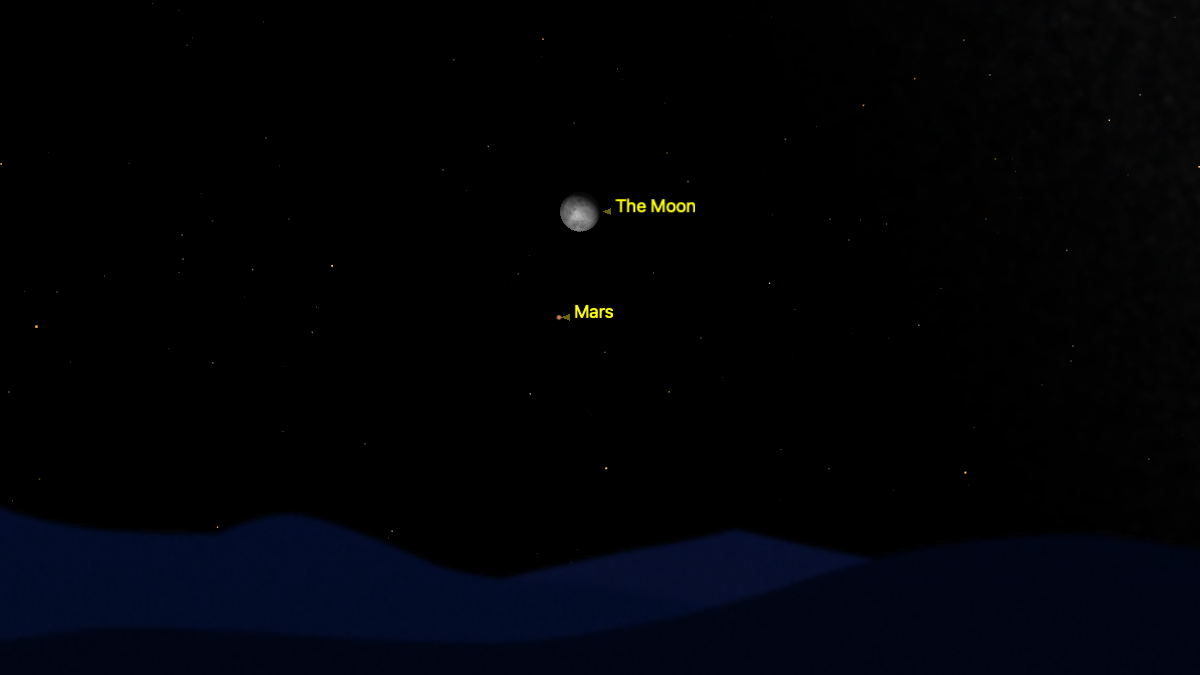
Look east a few hours after dark, and you'll easily see a 90% illuminated waning gibbous moon. Just a degree or so below will be red Mars, shining brightly at mag. -1 as it approaches its bright opposition in January. The planet will pass closest to Earth on Jan. 12, 2025, and align with Earth and the sun four days later. — Jamie Carter
Wednesday, Dec. 18: A crescent of Christmas lights (before midnight)
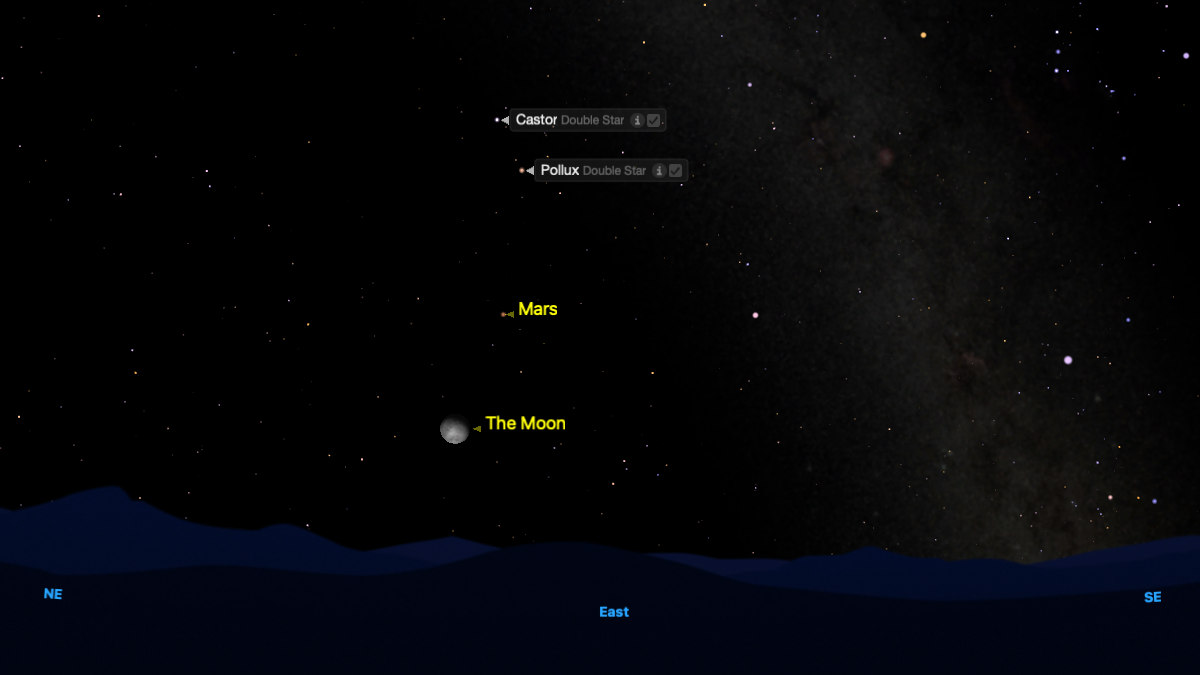
Look to the east about four hours after sunset, and you'll see a bright waning gibbous moon, now 84%-illuminated, hanging below Mars. Above the pair will be the bright stars Pollux and Castor in Gemini. Together, the four will form a crescent of four lights that get steadily dimmer as you go further from the moon. — Jamie Carter
Thursday, Dec. 19: Learn the constellation Orion (after sunset)
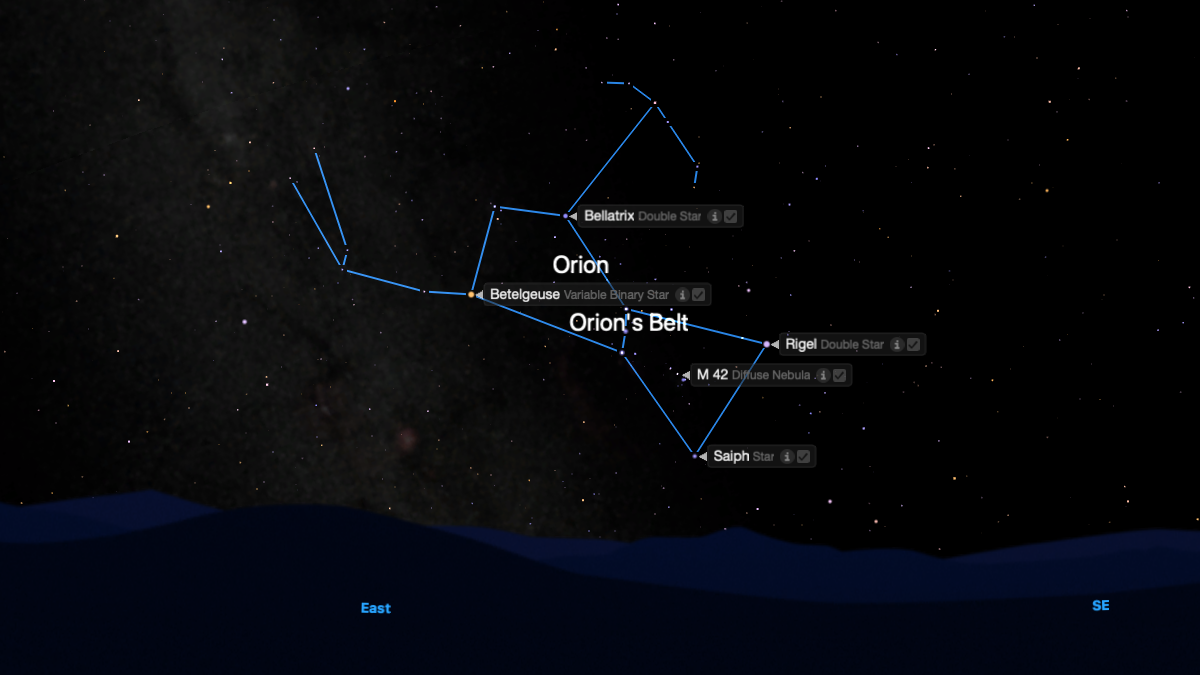
It's perhaps the most famous constellation in the night sky, but how well do you know Orion, the hunter? Let's start with its three bright "belt" stars — Alnitak, Alnilam and Mintaka — aligned vertically above the east as darkness sets in tonight. Now, find the four bright stars at their corners. Left of the belt stars is reddish Betelgeuse, with Rigel on its right. Above the belt stars is Bellatrix, and below is Saiph. Find those, and you'll also notice a fuzzy glowing object between the belt star, Saiph and Rigel. That's the Orion Nebula, also called M42, where stars are being born. — Jamie Carter
Friday, Dec. 20: Moon and Regulus (before sunrise)
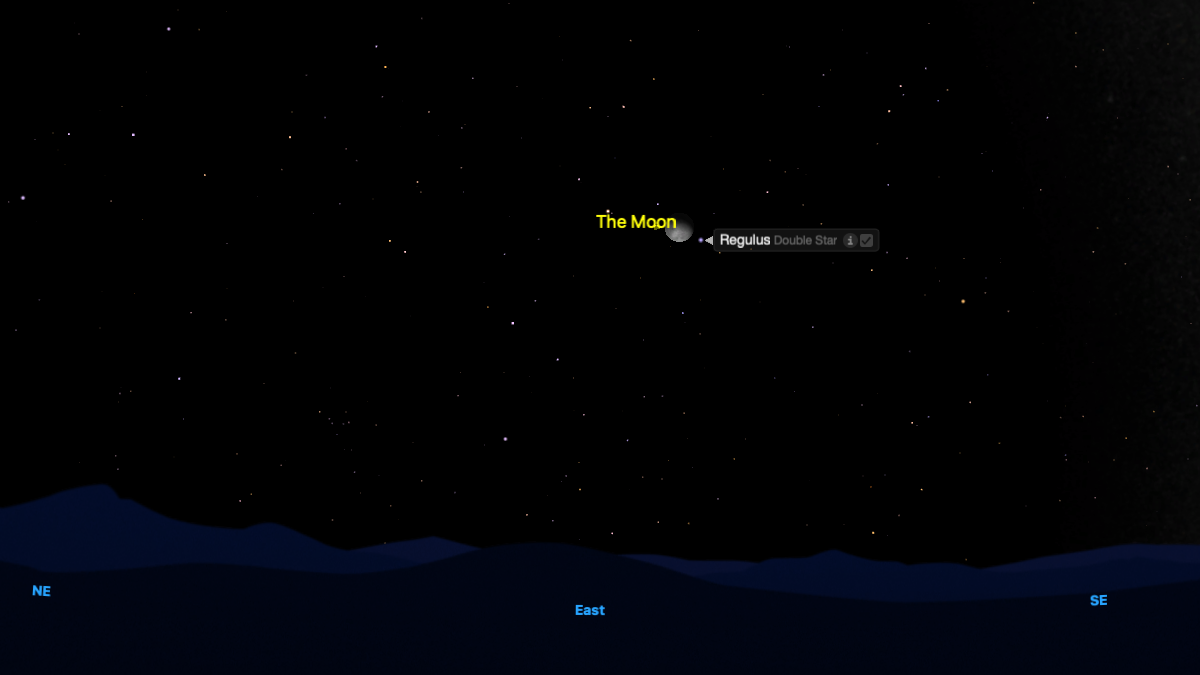
Look anytime from the small hours through dawn, and you'll see, moving from southeast to southwest, a 73%-illuminated waning gibbous moon just a couple of degrees from Regulus, the brightest star in the constellation Leo, the lion. It's 78 light-years distant and the 21st brightest star in the night sky. — Jamie Carter
Night sky for the weekend
Saturday, Dec. 21: Winter solstice for the Northern Hemisphere
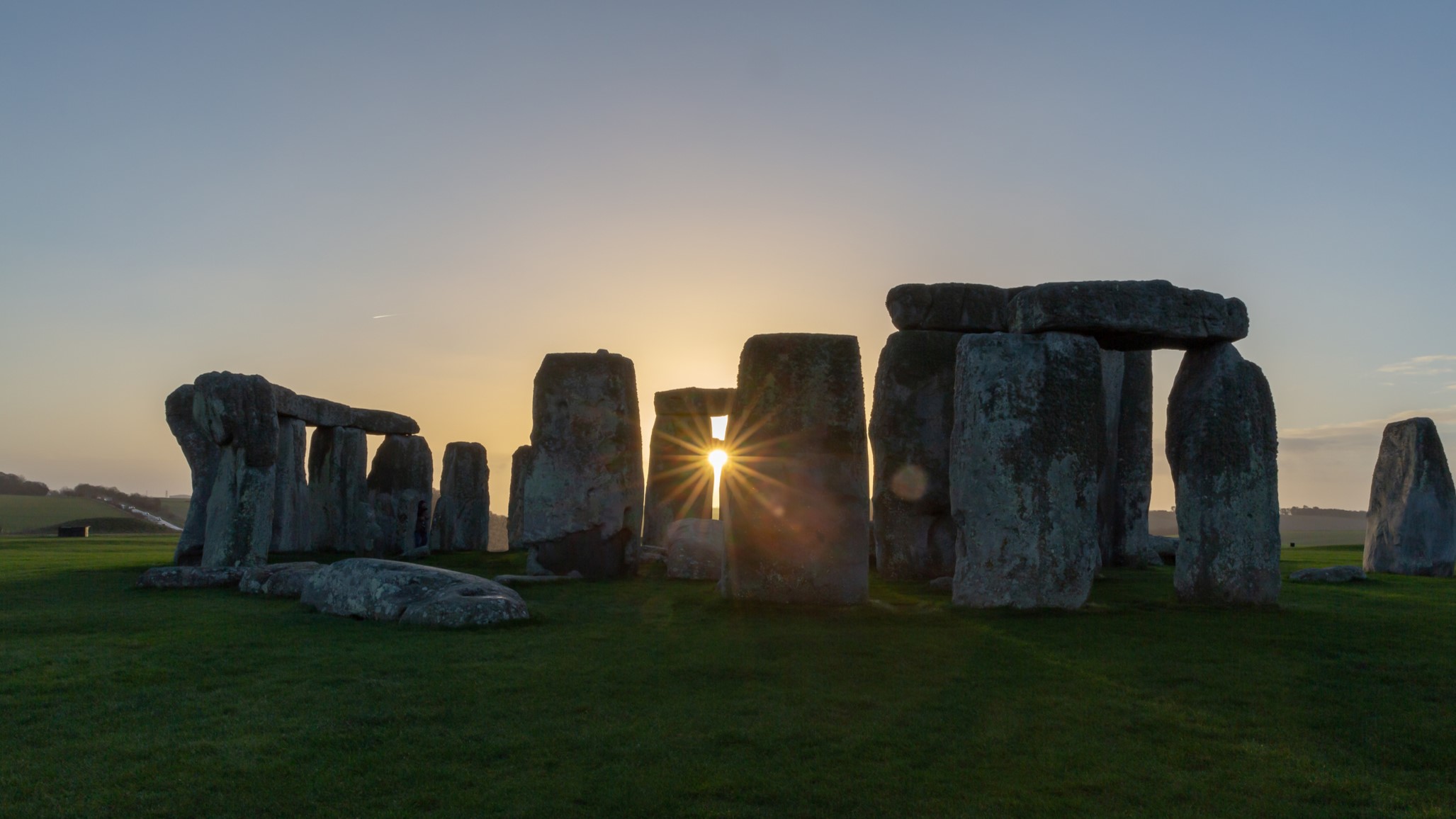
Today at 4:17 a.m. EST is the solstice, the longest night of the year in the Northern Hemisphere and the shortest in the Southern Hemisphere. The sun won't rise in the Arctic Circle, and in the Antarctic Circle, it won't set. It's all down to Earth's axis being tilted by 23.5º relative to the plane of Earth's orbit around the sun. You can see solstice: glance at the sun today around midday, and it will be the lowest it gets in the year. — Jamie Carter
Sunday, Dec. 22: Mercury is highest in the sky and Ursid meteor shower
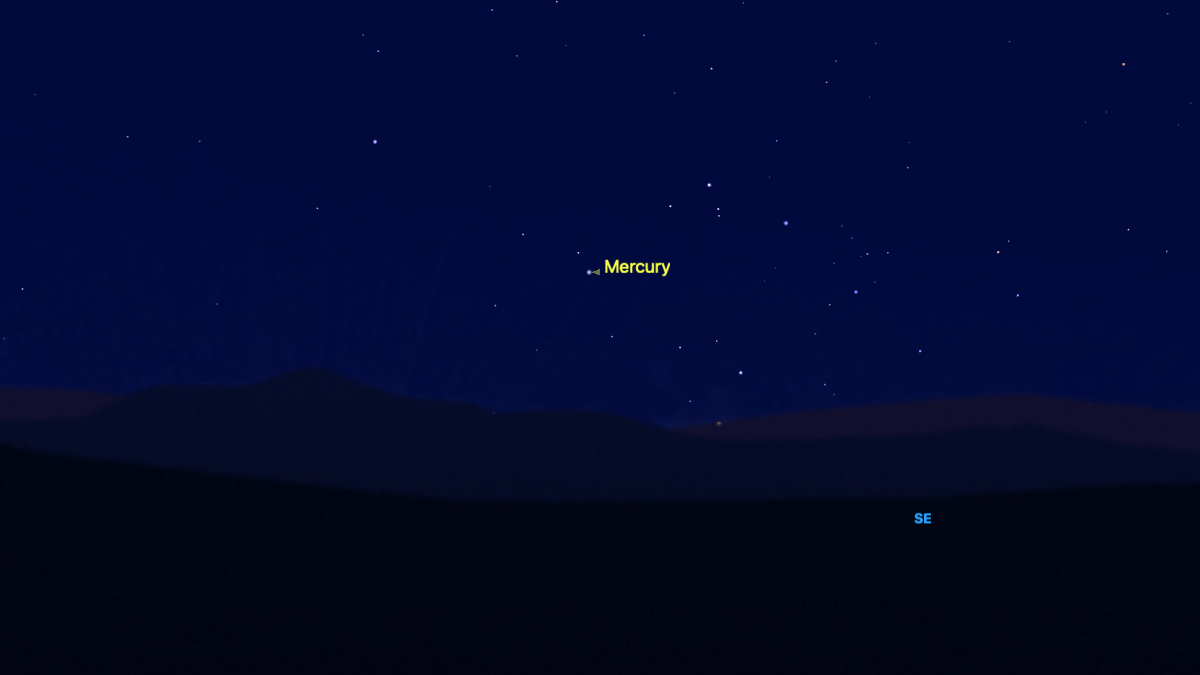
It's the Last Quarter Moon tonight, which sees the moon rise around midnight. Long before that, just before sunrise, it may be possible to spot Mercury. The elusive inner planet is typically close to the sun but occasionally rises high enough into the sky to be seen from Earth. This morning, it reaches its highest point of its current apparition, shining at mag. -0.2. Don't confuse it with Antares, the brightest star in the constellation Scorpius, which will be a little dimmer at mag. 0.9, but has a similarly reddish color.
We see the peak of the Ursid meteor shower tonight, but the presence of a waning gibbous moon — which will rise into the night sky before midnight — will make its five to 10 meteors per hour hard to see. — Jamie Carter
Monday, Dec. 23: The brightest star in the night sky (after dark)
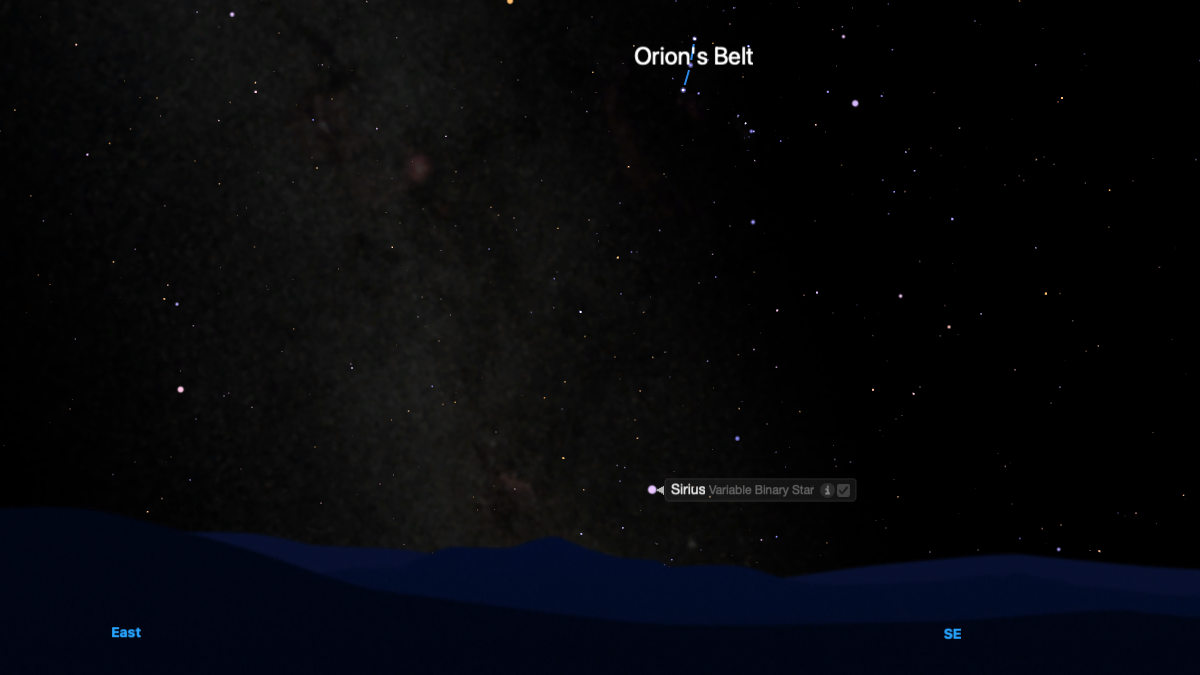
Three stars will be prominent above the southeast after dark — Orion's Belt. These three stars — Alnitak, Alnilam, and Mintaka — can be used to find other, arguably more important stars nearby. Take an imaginary line from the top of the belt to the bottom and keep going towards the horizon, and you'll come to an unmistakably bright, blueish star. Sirius is one of the closest stars to the solar system at 8.6 light-years. It's also the brightest star in the night sky, with a mag. of −1.46. — Jamie Carter
Tuesday, Dec. 24: Crescent moon and Spica (before sunrise)
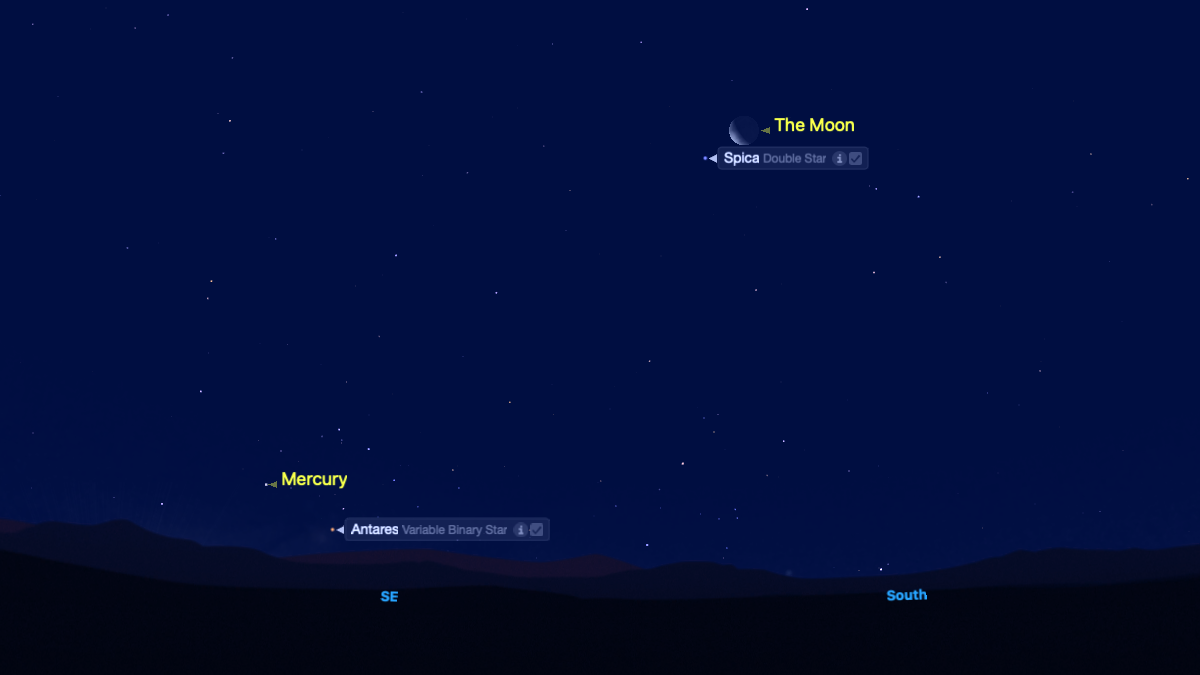
If you're up early on Christmas Eve, look to the southeast for a glimpse of the waning crescent moon, now 35%-illuminated, less than a degree from Spica, the brightest star in the constellation Virgo and about 261 light-years from the solar system. Below the pair, due southeast, Mercury and reddish star Antares will rise shortly before the sun.
Tuesday, Dec. 24 and Wednesday, Dec. 25: Santa's Sleigh/International Space Station (before sunrise/after sunset)
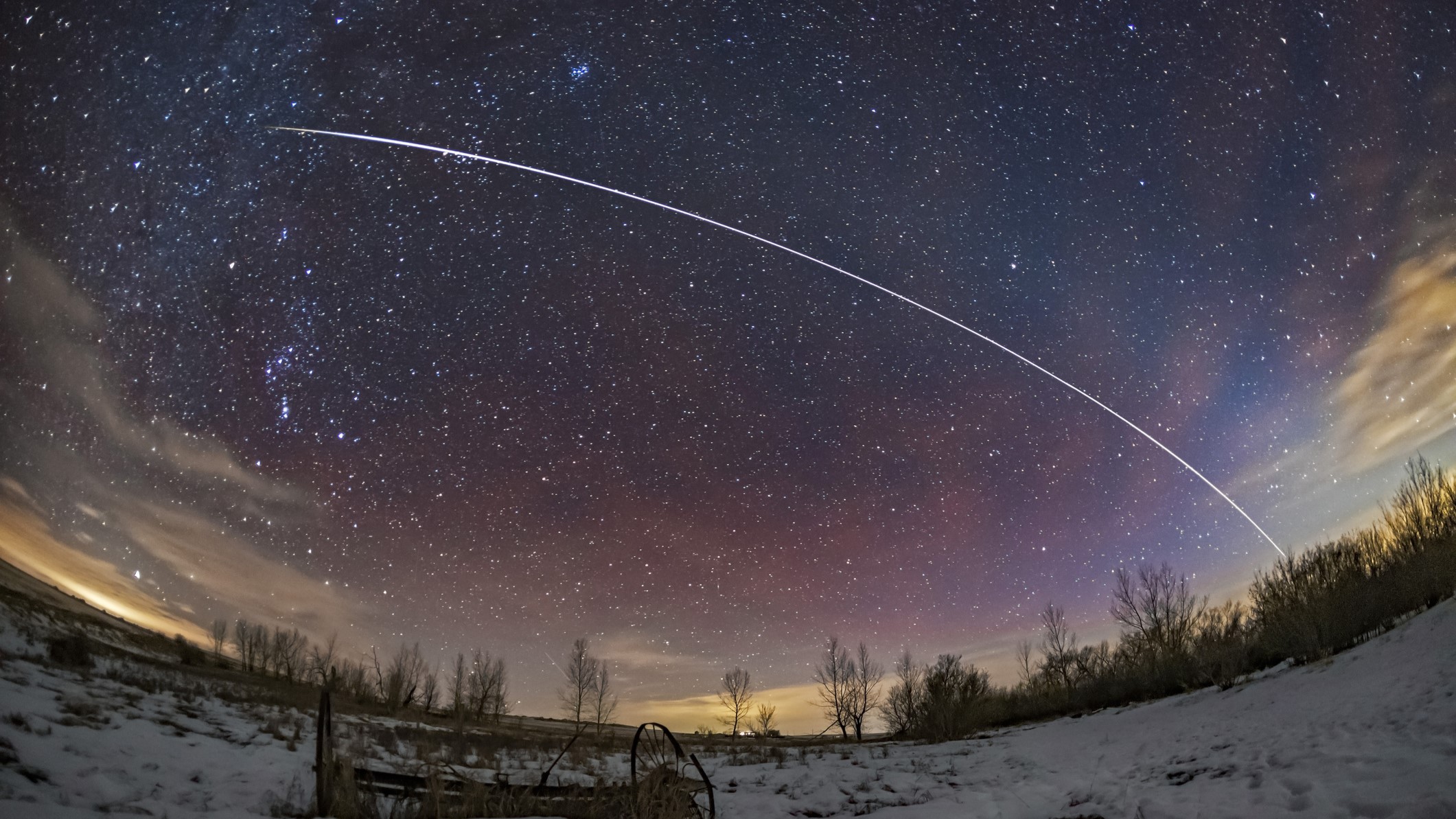
What's more impressive — a bearded man delivering presents to the world's children in one night or a human-built space station traveling faster than a speeding bullet 250 miles above? Either way, you can see the International Space Station fly across the sky frequently if you know when and where to look. Check NASA's Spot The Station website to see if you can see the ISS this Christmas Eve and Christmas Day. What you tell the kids is up to you. — Jamie Carter
Read more: Could that be Santa's sleigh? Early risers can spot the ISS from the UK this Christmas
Thursday, Dec. 26: Orion Nebula after sunset

If you've received a telescope or a pair of binoculars for Christmas, there's only one thing to put them on as soon as it gets dark. Found to the lower right of Orion's Belt in the eastern sky, the Orion Nebula — also called M42 — is a star nursery about 1,300 light-years from the solar system. Although it looks spectacular in optics, it's also visible to the naked eye; look just to the side of it to appreciate its brightness in your peripheral vision.
Friday, Dec. 27 and the weekend: Waning crescent moon, Mercury and Antares (before sunrise)
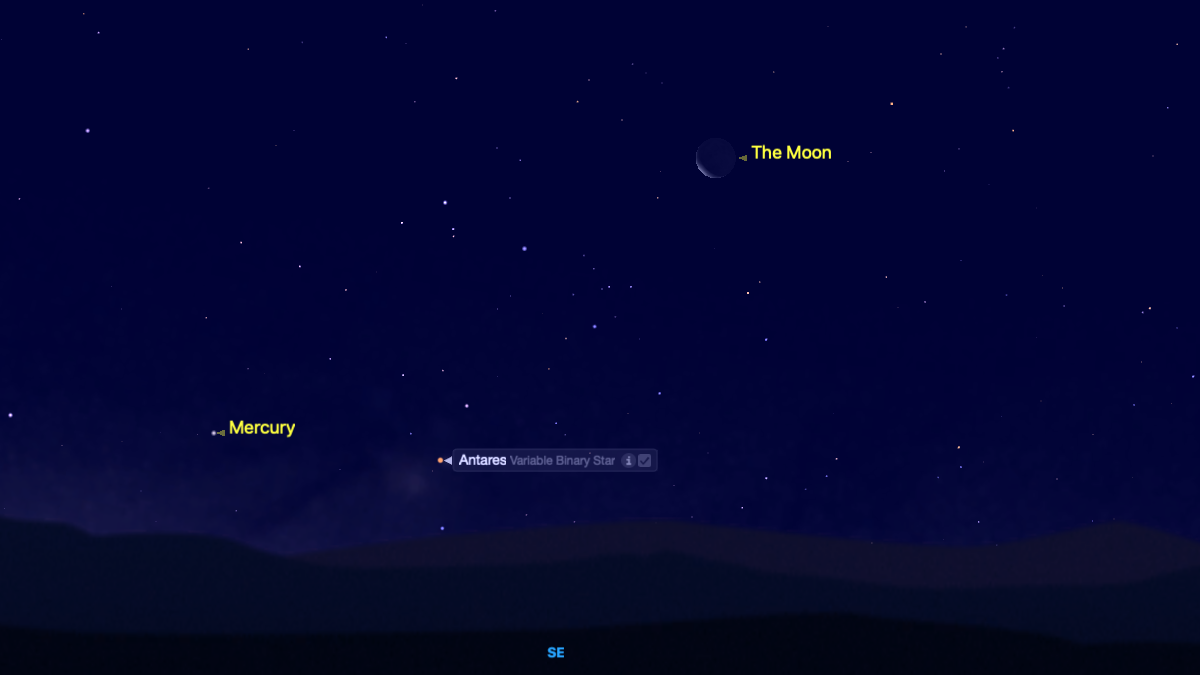
If you're up and looking low to the southeastern horizon about an hour before sunrise, you'll come across a lovely tableau of a 12%-illuminated waning crescent moon approaching Mercury, which will shine at mag. -0.3 this morning. Antares, the brightest and reddest star in the constellation Scorpius, will be almost between the two.
Saturday, Dec. 28: Waning crescent moon and Antares (before sunrise)
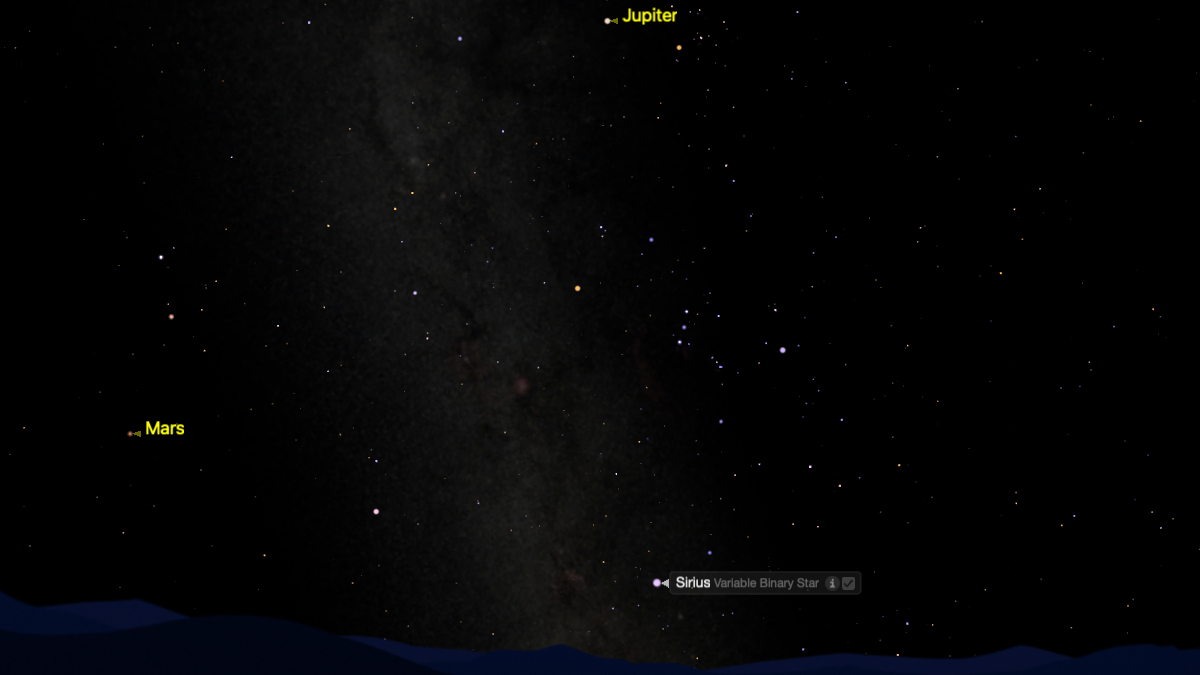
If you want to catch a super-slim-waning crescent moon, with just 6% of its surface lit by the sun, be up and looking to the southeast an hour before sunrise. As a bonus, it will shine just a fraction of a degree from reddish Antares.
Sunday, Dec. 29: A triangle of Mars, Jupiter and Sirius (after dark)

Look to the southeast after dark for Mars, now shining brightly at mag. -1.2, then high above to its right for Jupiter, at a brighter mag. -2.8. Now come down to the horizon for Sirius, the brightest star in the night sky, which always shines at -1.45, so a little brighter than Mars tonight. The three should form a triangle. As well as being the brightest points of light in that part of the night sky, they're also the closest. Every other star you can see in the sky tonight is far behind these three — though Sirius, at 8.6 light-years distant, is a lot farther away than the planets.
Monday, Dec. 30: A triangle of Saturn, Venus and Fomalhaut (after sunset)
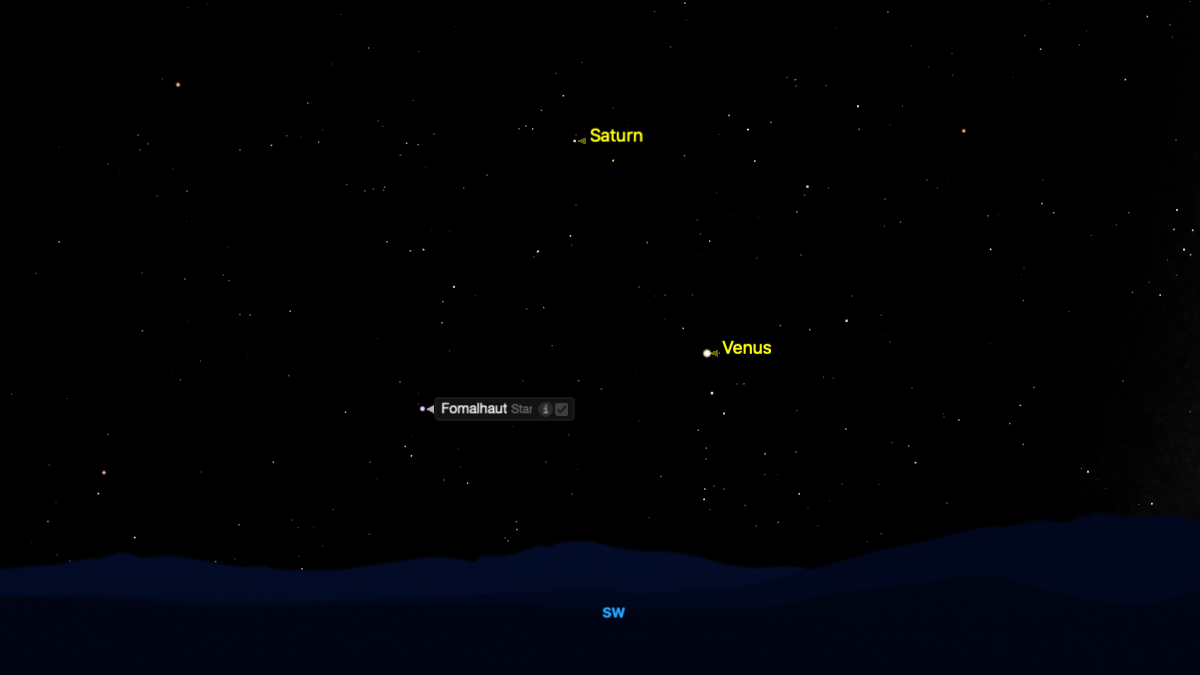
Today at 5:38 p.m. EST is a New Moon, which makes tonight perfect for stargazing. Look to the southwest soon after sunset, and you'll see two bright planets, Saturn and Venus, very close together, with the ringed planet a few degrees above. Look to the left of Venus, and you'll find bright star Fomalhaut, the brightest in the constellation Piscis Austrinus, the Southern Fish, forming a triangle with the two solar system objects. A double star about 25 light-years behind the two planets, Fomalhaut is one of the four Royal Stars of ancient Persian culture, which calls it the "Watcher of the South." — Jamie Carter
New Year's Night Sky! A starry panorama to end the year Dec. 31-Jan. 1

It's been an exceptional year for stargazers, from April 8's total solar eclipse and global auroras to a comet and much more. Why not ponder all that — and look forward to the celestial delights of 2025 — by looking south shortly before midnight? You'll see the winter night sky at its very best, with this region of sky containing the stars of Orion, the Orion Nebula, the Pleiades, bright Sirus and, of course, both Jupiter and Mars. — Jamie Carter
Wednesday, Jan. 1: A super-slim crescent moon (after sunset)
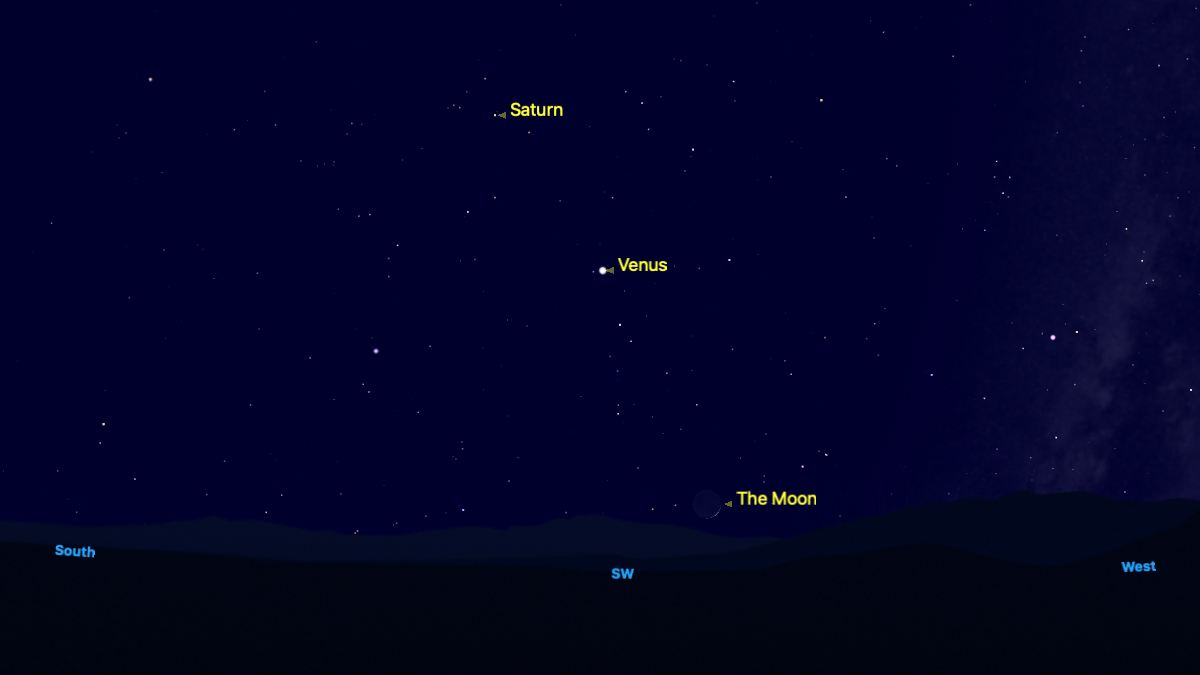
Here's a great way to ring in a new year of sky-watching. Get somewhere with a low view of the southwest horizon and wait for sunset. Once the sun has dipped below the horizon, look for a 5%-illuminated waxing crescent moon. You may need binoculars to spot its slim against a blueish twilight sky. Be quick because the moon will set soon after sunset. Venus and Saturn will be far above. — Jamie Carter
Thursday, Jan. 2: A crescent moon (after sunset)
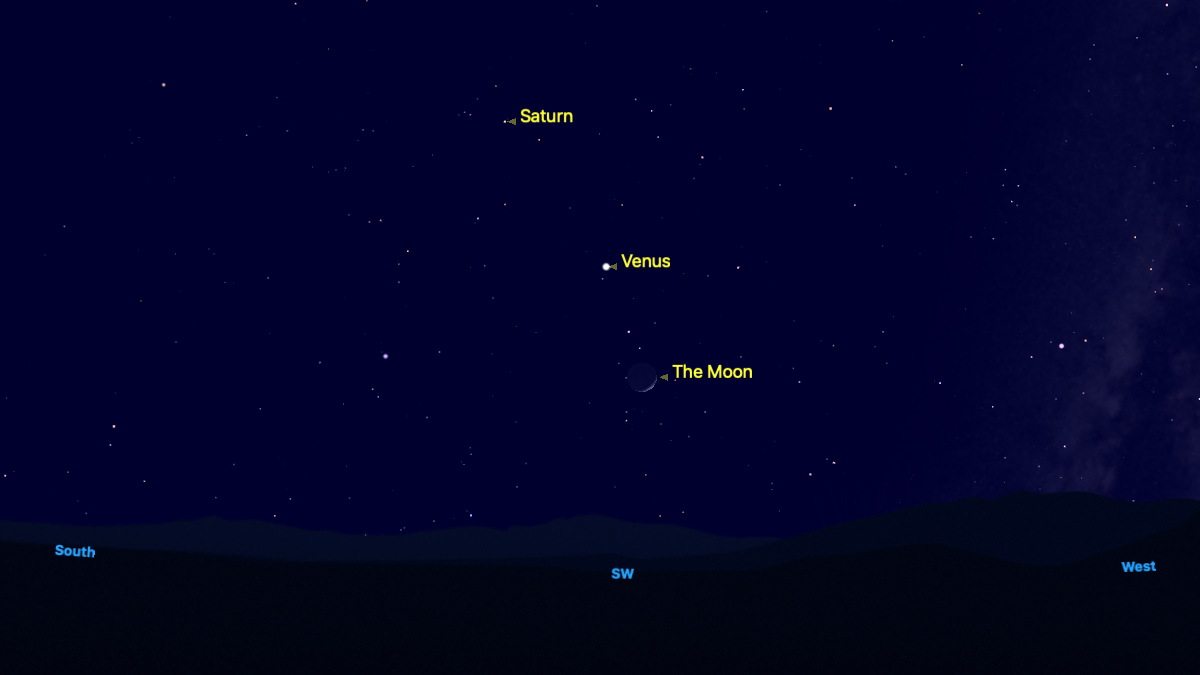
A 10%-illuminated waxing crescent moon will be below bright Venus tonight, with Saturn farther above. The moon will set soon after, so don't waste time taking in this one. — Jamie Carter
Night sky for tonight and the weekend
Friday, Jan. 3: A crescent moon and Venus in close conjunction as Quadrantid meteor shower peaks (after sunset)
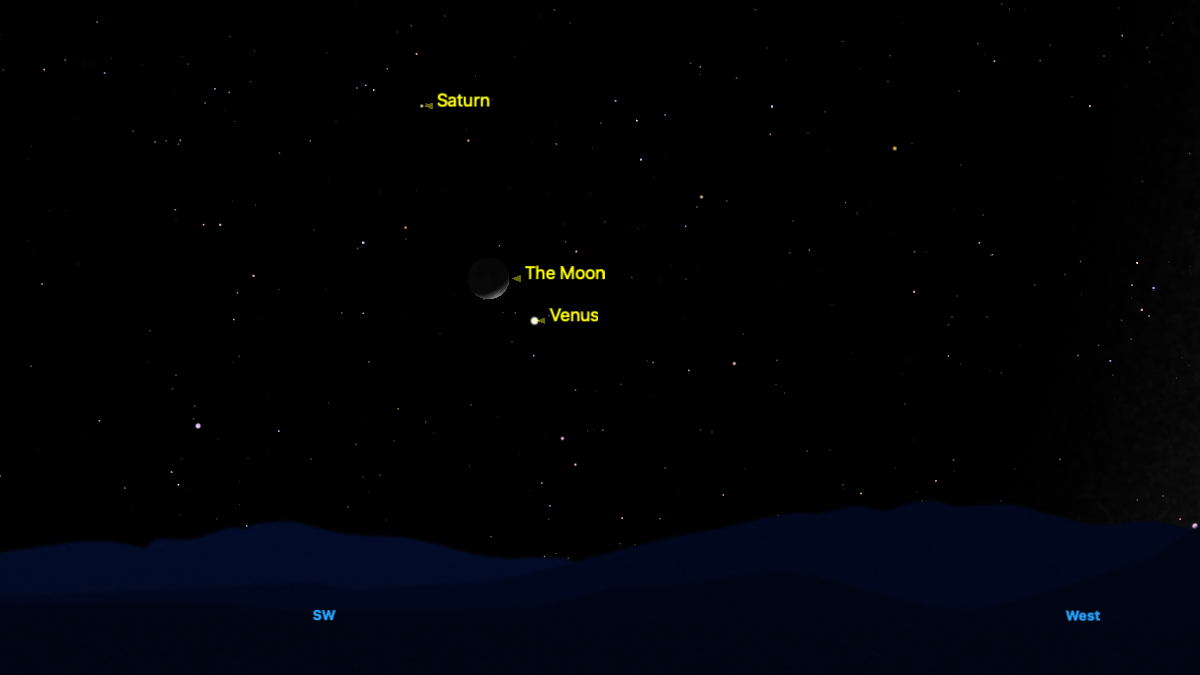
Now 18%-illuminated, the waxing crescent moon will shine less than two degrees from Venus in the eastern sky after dark and Saturn above the moon. As you watch the trio sink toward the horizon, watch for fireballs from the first meteor shower of the year. About 120 shooting stars per hour — some very bright — can sometimes be seen from the peak of the Quadrantids, which happens right after dark. They're caused by dust and debris left in the inner solar system by a comet or asteroid (astronomers aren't sure which) called 2003 EH1. — Jamie Carter
Saturday, Jan. 4: A crescent moon and Saturn (after sunset)
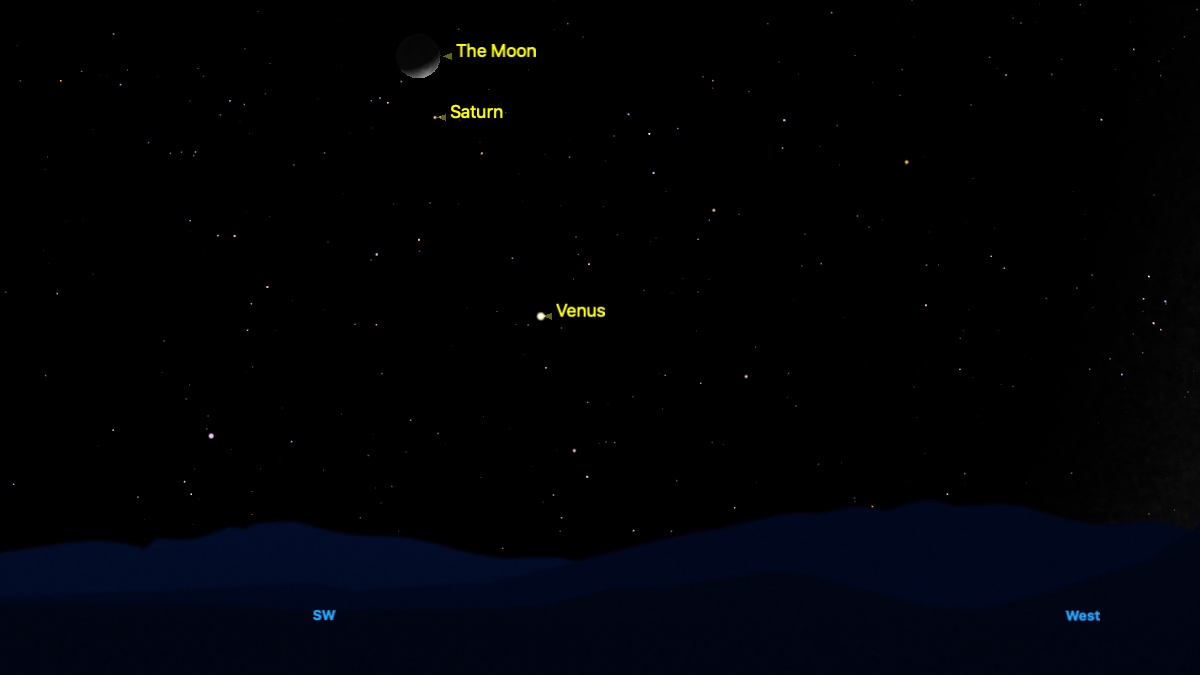
Tonight the waxing crescent moon, now 28%-illuminated, will shine just above Saturn, with Venus shining brightly below. Prepare for plenty more sights like this in 2025, with some terrifically close moon-Venus conjunctions coming up in the early months as the second planet from the sun reaches its brilliant best. — Jamie Carter
Sunday, Jan. 5: The moon, Saturn and Venus align (after sunset)
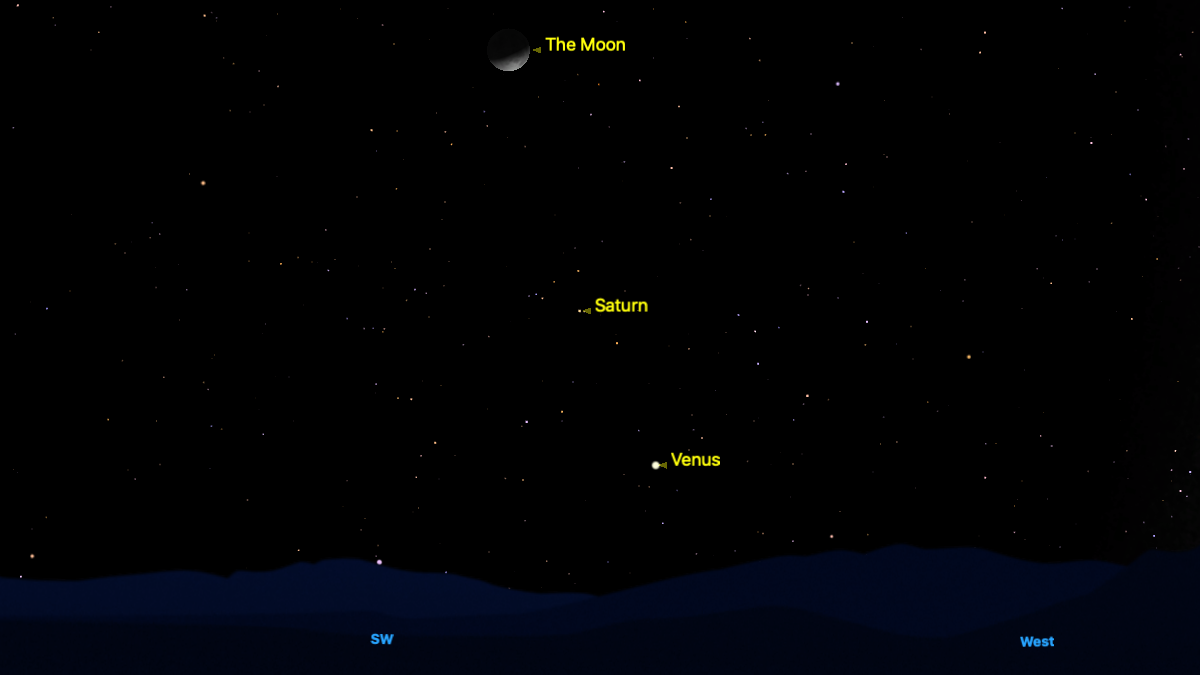
Look to the southwest after dark, and you'll see a now 39%-illuminated waxing crescent moon high above Saturn and Venus below. The ringed planet will shine at mag. 1 while Venus will be at mag. -4.5, near to the brightest it will get in its current apparition as the "Evening Star." — Jamie Carter
Monday, Jan. 6 – First quarter moon (after sunset)
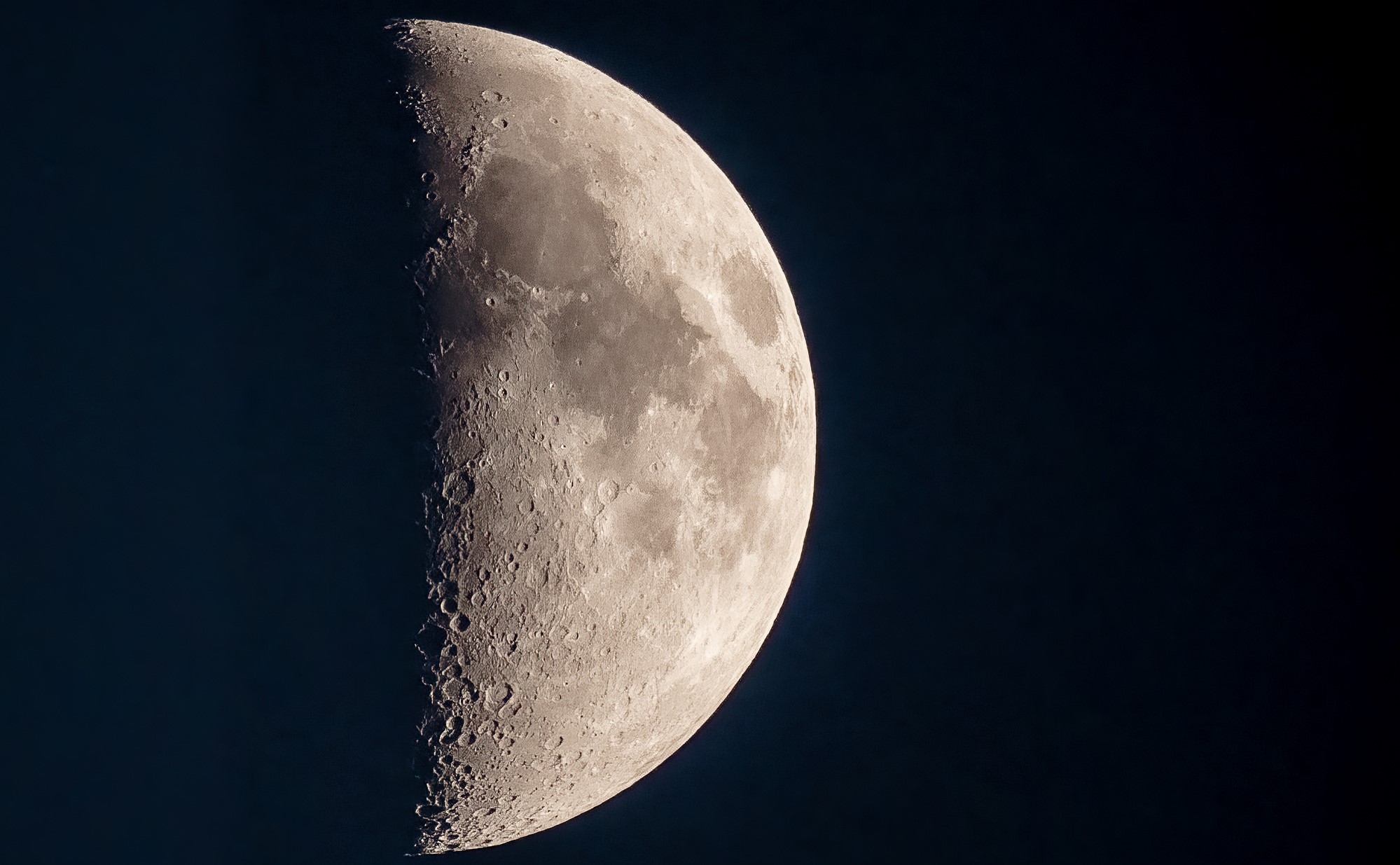
Tonight at 6:56 EST, the moon will reach its first quarter phase, which will see it half-lit from Earth’s point of view. A first-quarter moon rises around midday and sets around midnight, so this is when the early evening skies get bleached by moonlight. Stargazing will become more difficult until the moon reaches its last quarter phase on Jan. 21, when it will rise around midnight and set around midday. — Jamie Carter
Tuesday, Jan. 7 – Jupiter in the constellation Taurus (after dark)
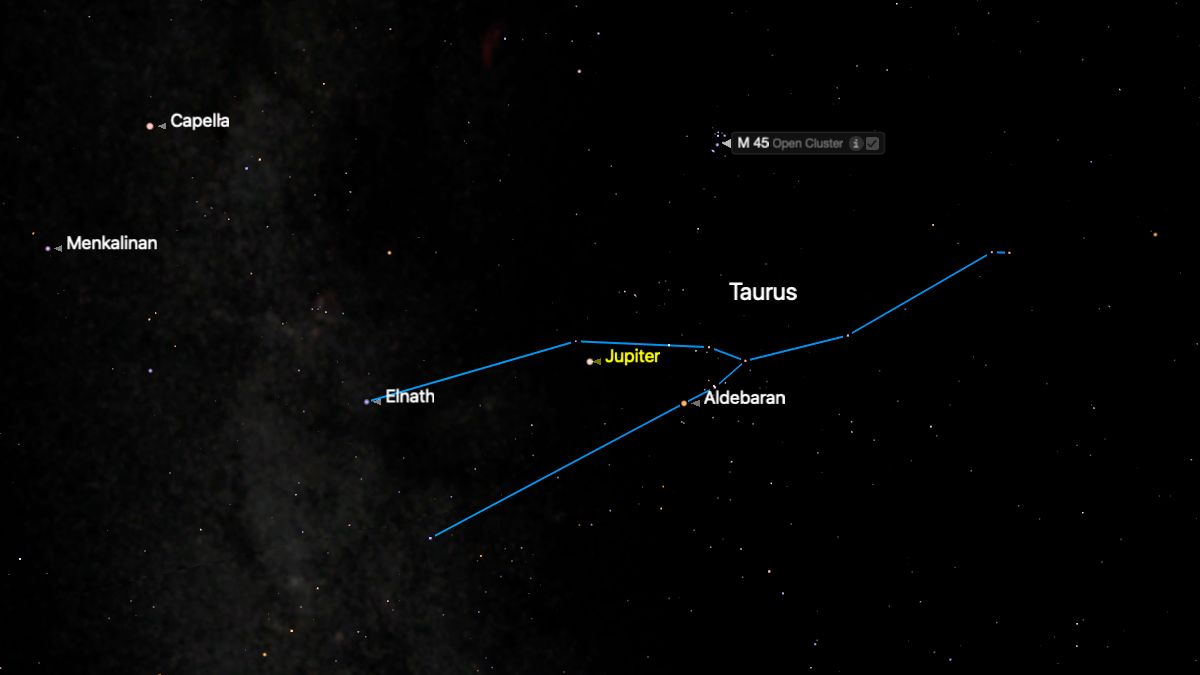
Look high in the south after dark tonight for the bright planet Jupiter shining at -2.7 magnitude. It’s directly above orange-reddish star Aldebaran, whose name means “eye of the bull,” and slightly to the left of the Pleiades, an open cluster of stars. The stars of a looser-looking open cluster of stars, the Hyades, surround Aldebaran. See if you can make out the constellation Taurus, the bull, specifically the tips of the bull’s horns, beyond Jupiter — Elnath (top) and Tianguan (bottom). — Jamie Carter
Wednesday, Jan. 8 — Orion's Belt (after sunset)
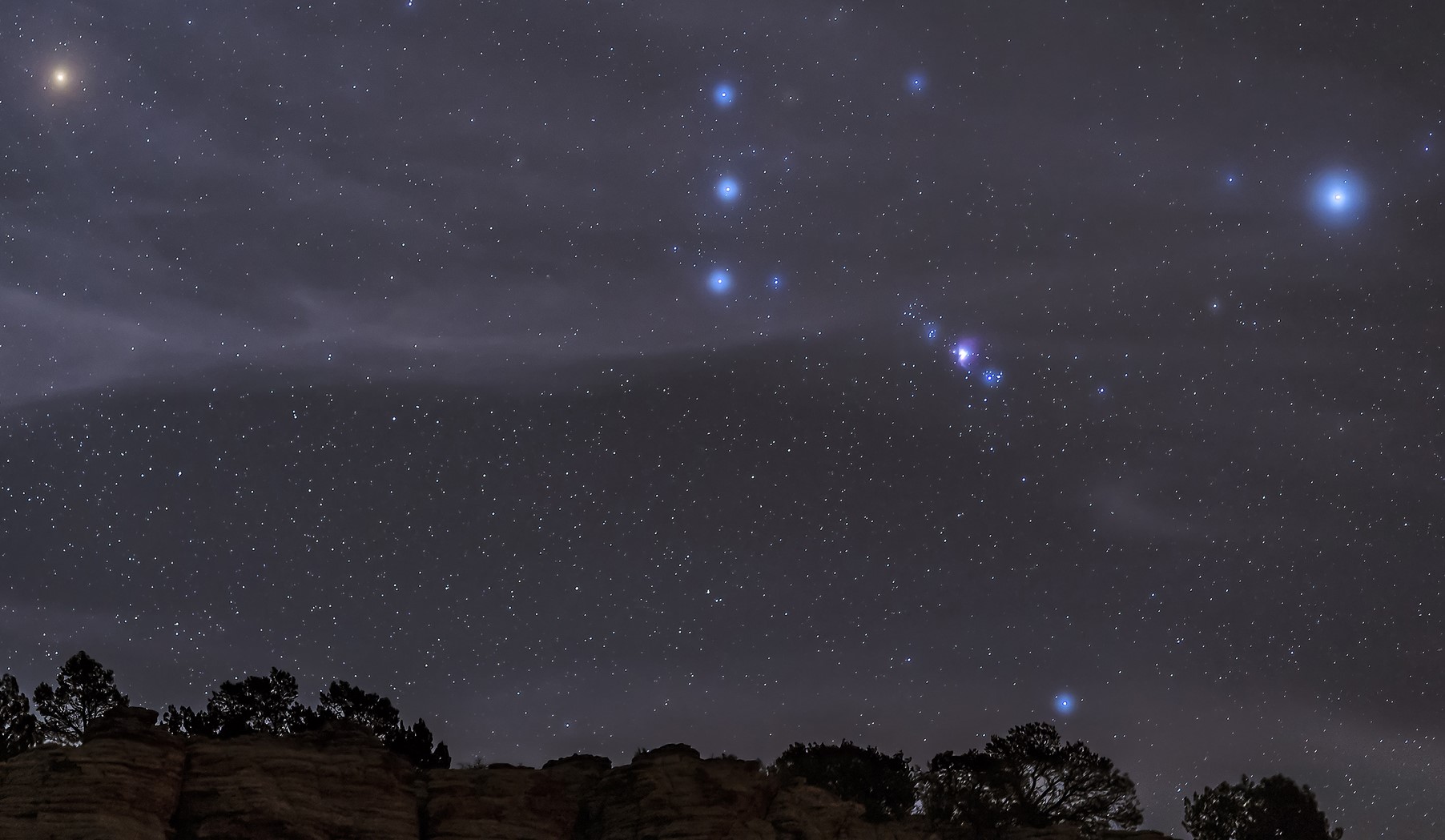
Three stars that you'll have no trouble finding in the glare of the waxing gibbous moon are Alnitak, Alnilam and Mintaka, a trio of stars comprising the famous asterism (shape of stars) called Orion's Belt. Situated at the core of the constellation of Orion, the hunter, they shine at 1.8-magnitude, 1.7-magnitude and 2.4-magnitude, respectively, and will be visible above the southeast. — Jamie Carter
Thursday, Jan. 9 — Waxing gibbous moon in the Pleiades (after sunset)
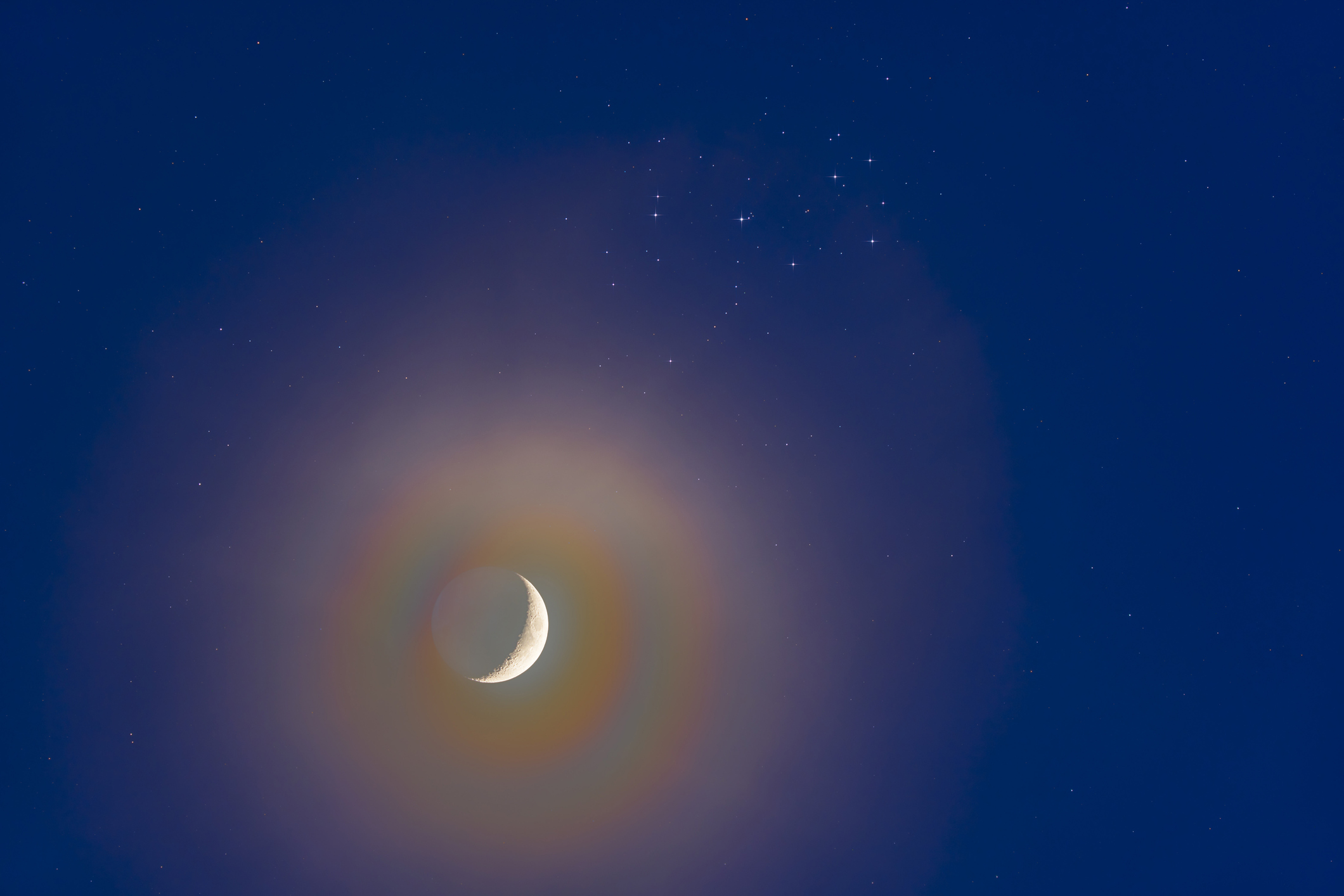
One of the closest open clusters of stars to the solar system, the Pleiades (or "Seven Sisters"), is in the constellation of Taurus and positioned close to the ecliptic, the sun's path through the sky. Since the moon orbits relatively close to the ecliptic, it must pass across the Pleiades regularly for a short period every six or so years. In 2025, it will do just that, with this first of many similar conjunctions this year seeing an 80%-illuminated waxing gibbous moon pass less than a degree from the center of the Pleiades. Look southeast anytime after dark for the pair, though binoculars will give you the best view. — Jamie Carter
Night sky for tonight and the weekend
Friday, Jan. 10 — Venus highest in the evening sky (after sunset)
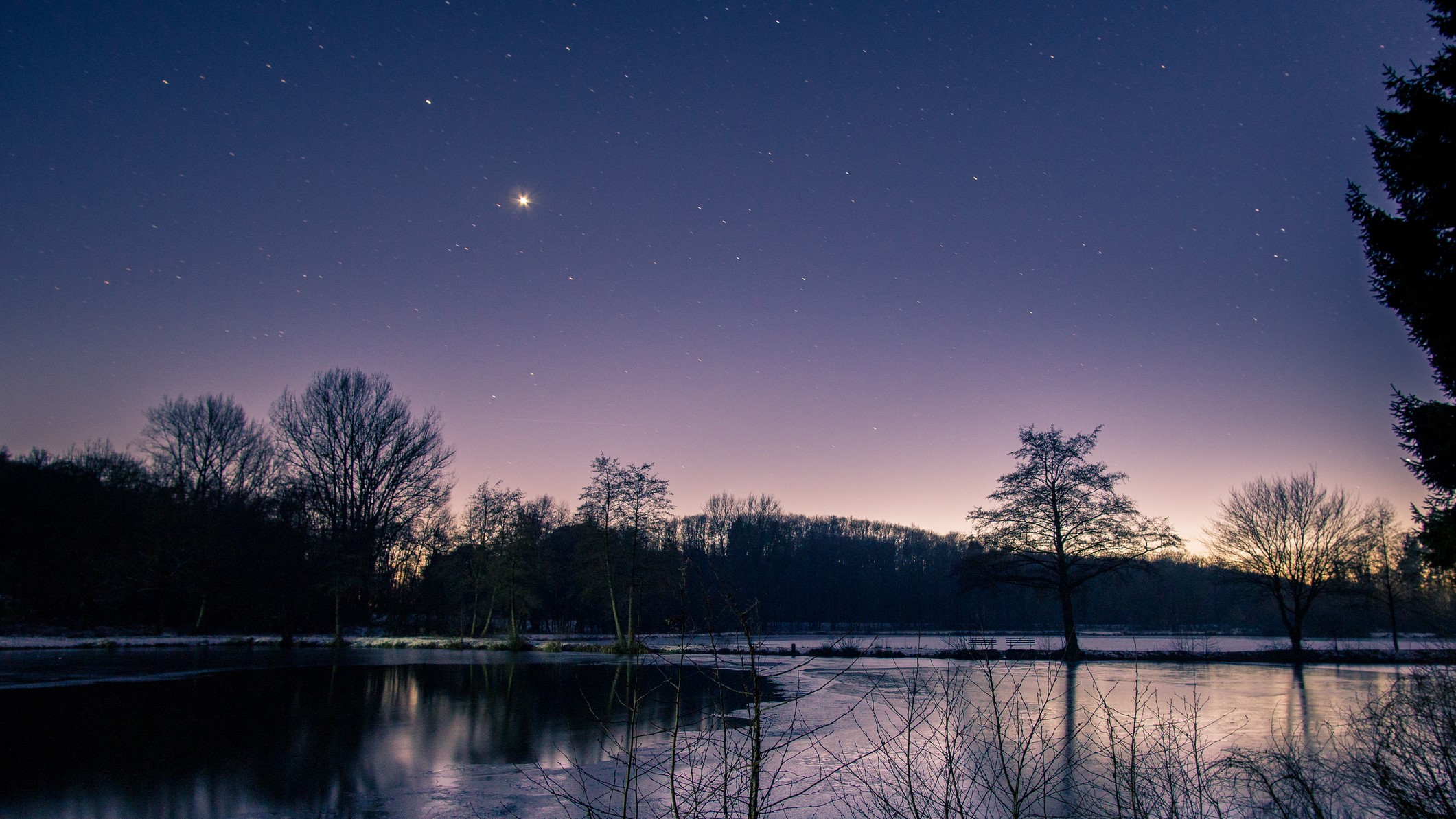
Venus gradually gets higher and brighter in the sky as it approaches Earth. Tonight, it reaches its greatest elongation east — it is farthest from the sun in its current apparition, as seen from Earth. It will be positioned 47.2 degrees from the sun and will be visible above west-southwest for about three hours after sunset. You'll find a dimmer Saturn to its left. — Jamie Carter
Saturday, Jan. 11 — Venus at dichotomy (after sunset)
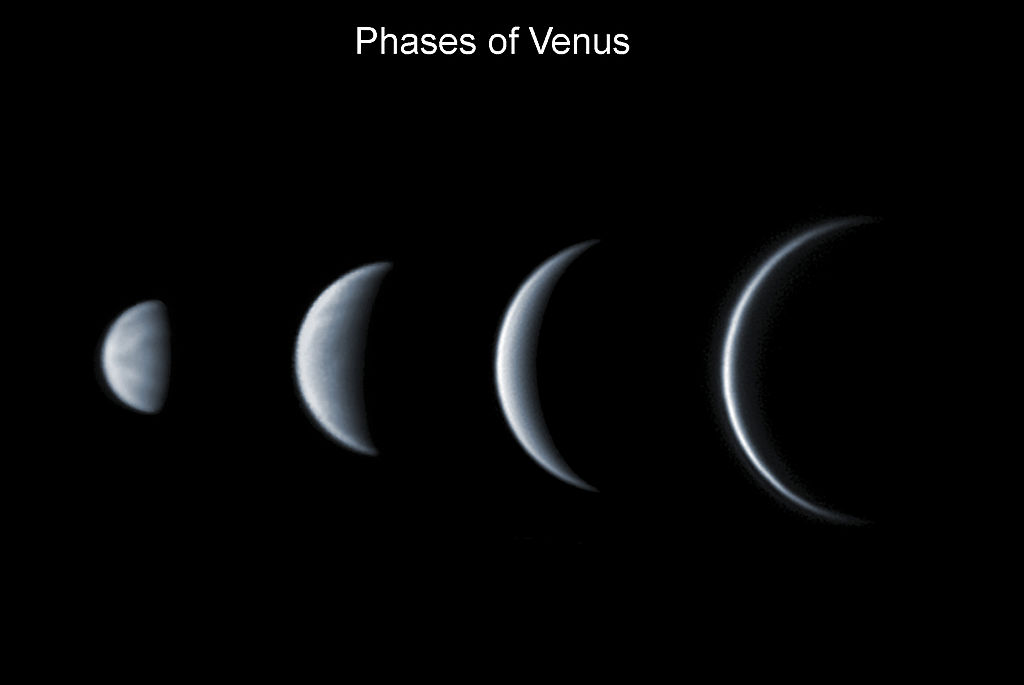
A dichotomy — or division — of the second planet from the sun occurs today as its phase resembles the moon in its first and last quarter. Precisely half-lit tonight, just a couple of days after it appeared highest in the post-sunset sky, Venus will henceforth shrink from a half-moon shape as it retreats into the sun's glare on Mar. 20. — Jamie Carter
Sunday, Jan. 12 — Mars closest to Earth (after sunset)
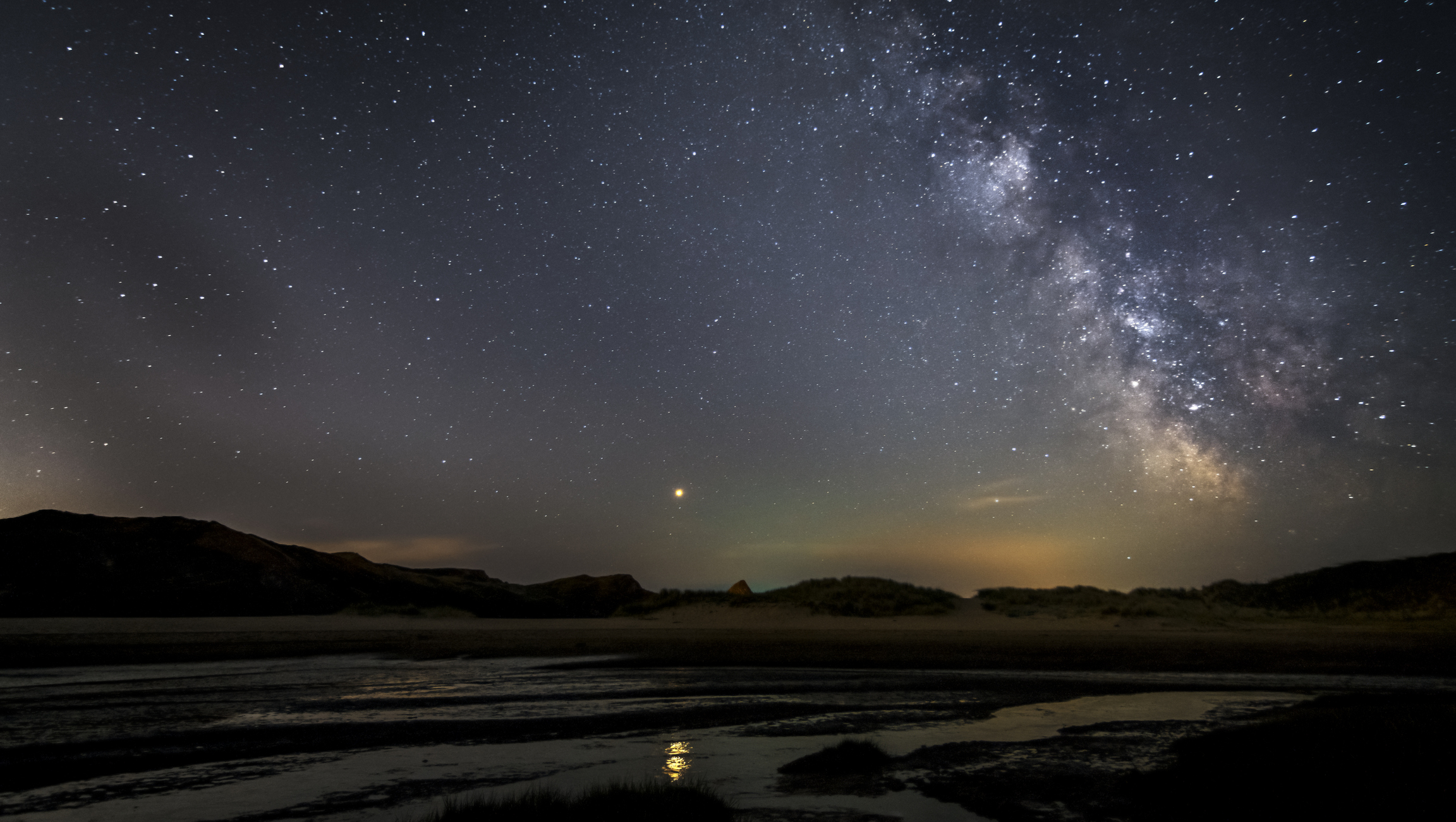
Tonight, Mars will make its closest approach to Earth since Dec. 8, 2022. Now moving through the constellation Cancer, it's just days away from being 100%-illuminated by the sun as seen from Earth, an occasion called opposition by astronomers. It will be 59,703,891 miles (96,084,099 kilometers) distant tonight and shine at an impressively bright -1.4 magnitude. — Jamie Carter
Monday, Jan. 13 — Full moon occults Mars (after dark)
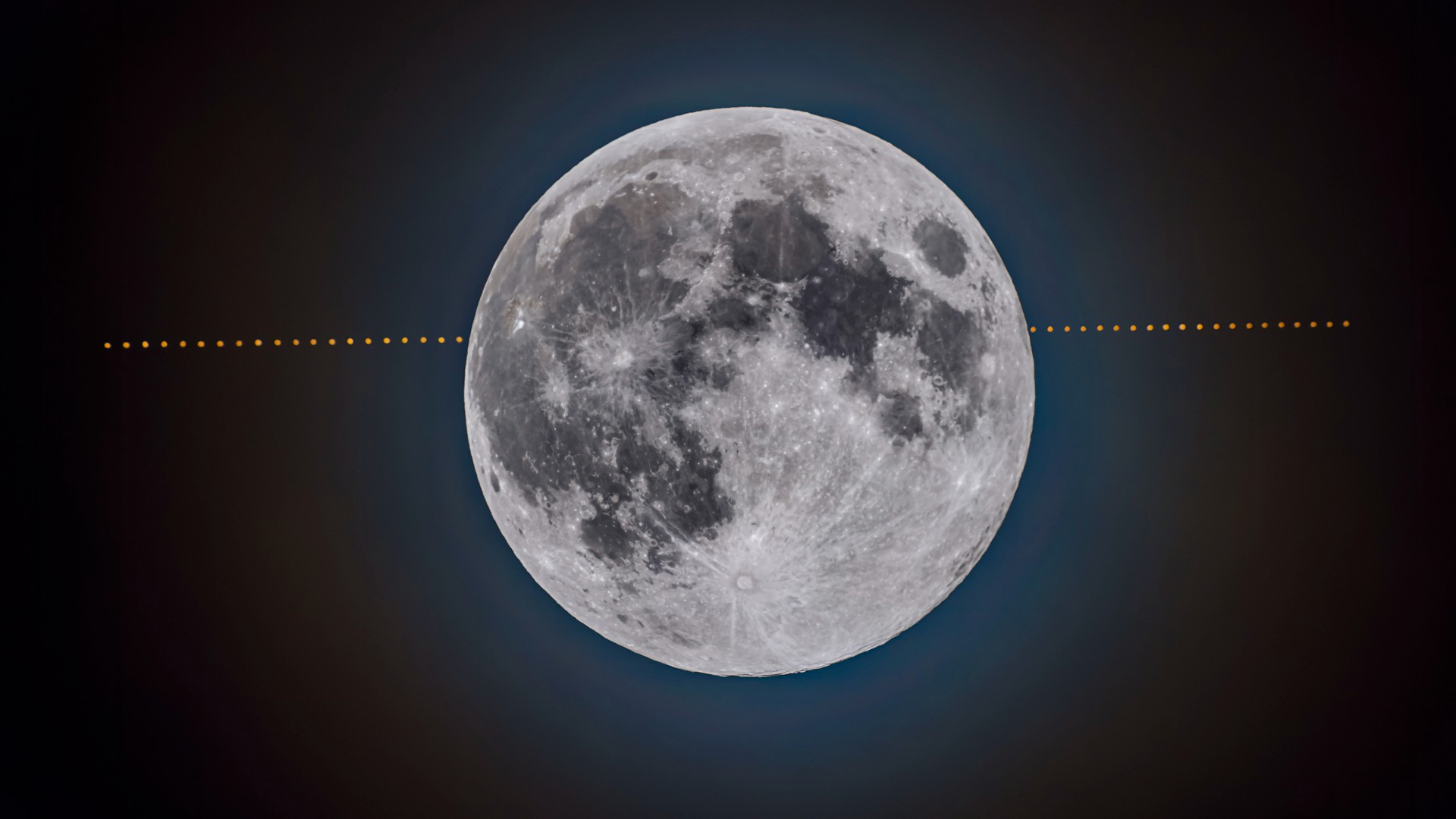
The first full moon of 2025, the "Wolf Moon," will move across and block the planet Mars tonight. Moreover, Mars will be shining at the brightest it will get during a four-year period. Now at -1.4 magnitude, the red planet will be hidden by the moon, as seen only from North America, between 8:44 p.m. EST and ending at 00:52 a.m. EST on Tuesday, Jan. 14. The exact times of ht planet's ingress (disseverance) and egress (re-appearance) will depend on your location, for which In-the-sky.org provides a map.
Regardless of geography, everyone worldwide will be able to watch the "Wolf Moon" appear on the eastern horizon during dusk today. — Jamie Carter
Tuesday, Jan. 14 — Venus, Saturn and the constellation Pegasus
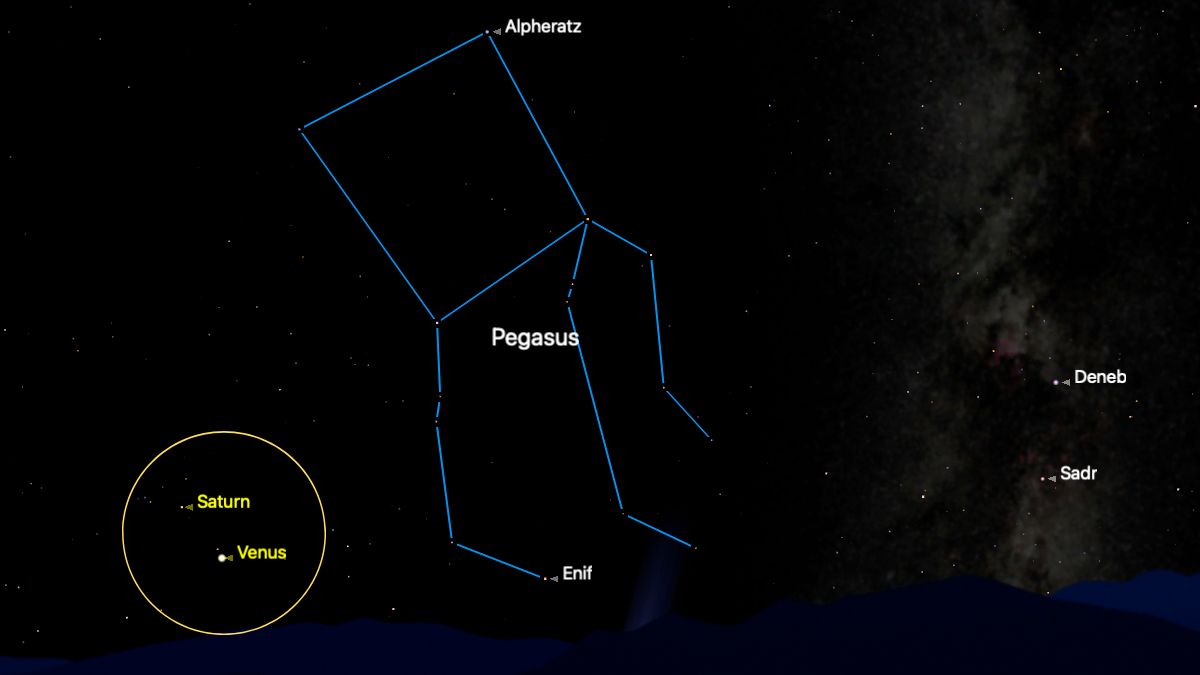
One of the best-known constellations in the northern sky, the winged horse, Pegasus, is visible just above the planets Venus and Saturn after dark this month.
Look directly above the pair for bright star Algenib and then search for the other three stars that make up the "Great Square of Pegasus" — Alpheratz (right), Scheat (top) and Markab (bottom). The horse's legs splay out to the right from Scheat, while bright star Enif, to the right of Venus and Saturn, is the horse's muzzle.
Enif is an orange supergiant star about 12 times as massive as the sun and 690 light-years from the solar system. — Jamie Carter
Thursday, Jan. 16 — Waning gibbous moon and Regulus (after dark)
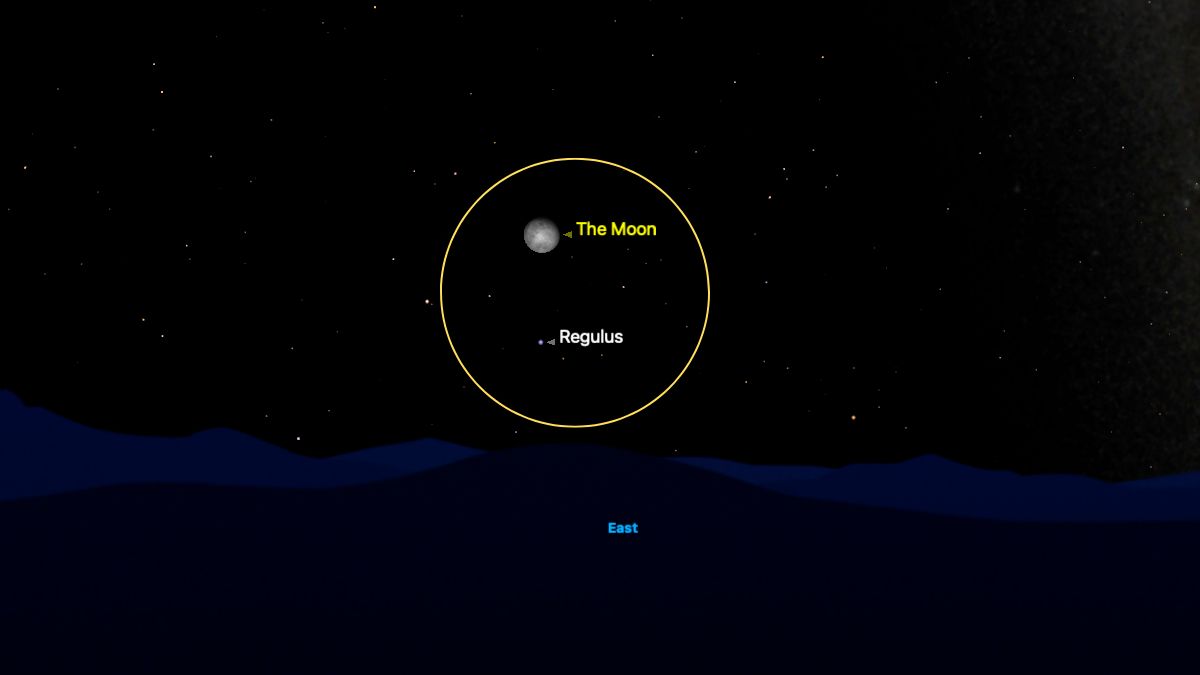
Now 89%-illuminated, the waning gibbous moon will rise late at night and be positioned close to Regulus, the brightest star in the constellation Leo and just 79 light-years from the solar system. They'll appear to be about two degrees from each other, with Regulus above the moon. — Jamie Carter
Night sky for tonight and the weekend
Friday, Jan. 17 — Venus-Saturn conjunction (after sunset)

The second and sixth planets from the sun will begin a two-night conjunction tonight, but you'll have to quickly see it after sunset because the two planets will sink below the horizon soon after. Venus will shine at -4.6 magnitude in the southwest after sunset and be easy to find. Look about two degrees to its left, and you'll find a much dimmer Saturn shining at +1.1 magnitude. If it's cloudy, don't worry — there's another chance tomorrow. — Jamie Carter
Read more: Venus and Saturn take a sunset stroll tonight. Here's how to see it
Saturday, Jan. 18 — Venus-Saturn conjunction (after sunset)
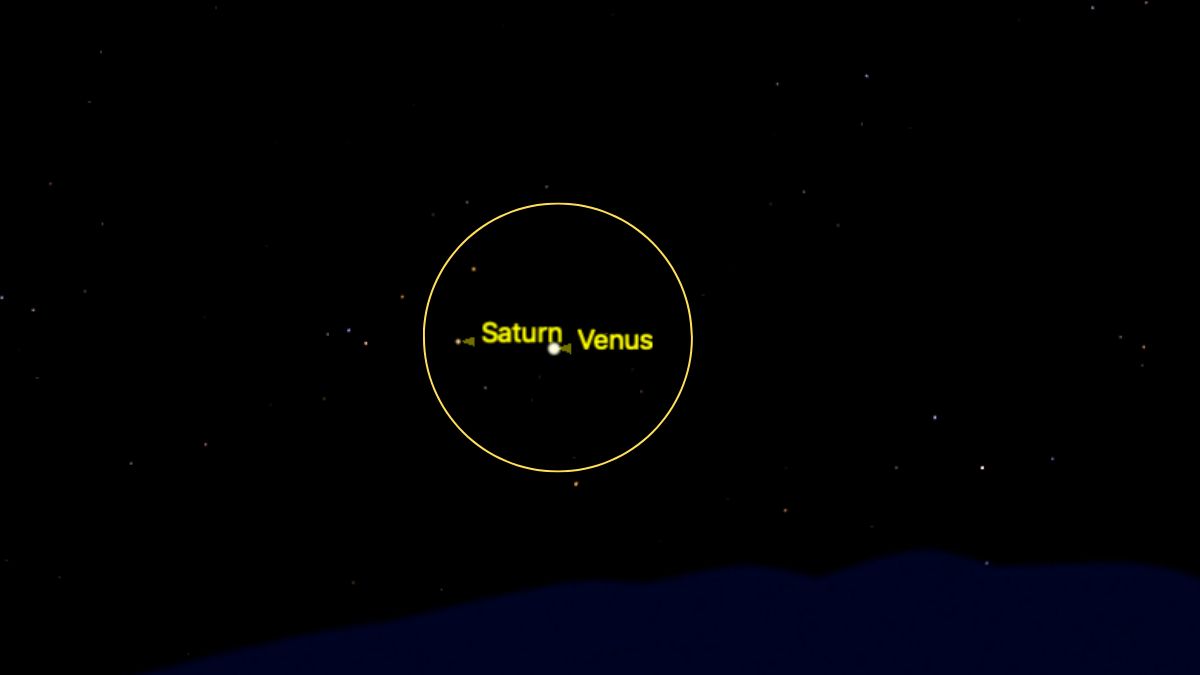
The conjunction of Venus and Saturn continues tonight as the sky darkens at sunset, this time with Saturn below Venus as the planets edge along their orbital paths. The two planets will once again be about two degrees from each other. With Saturn inching closer to the sun (it will be at solar conjunction on March 12) and Venus still rising, a close conjunction of the two planets was inevitable. — Jamie Carter
Sunday, Jan. 19 — The brightest star in the night sky (after dark)
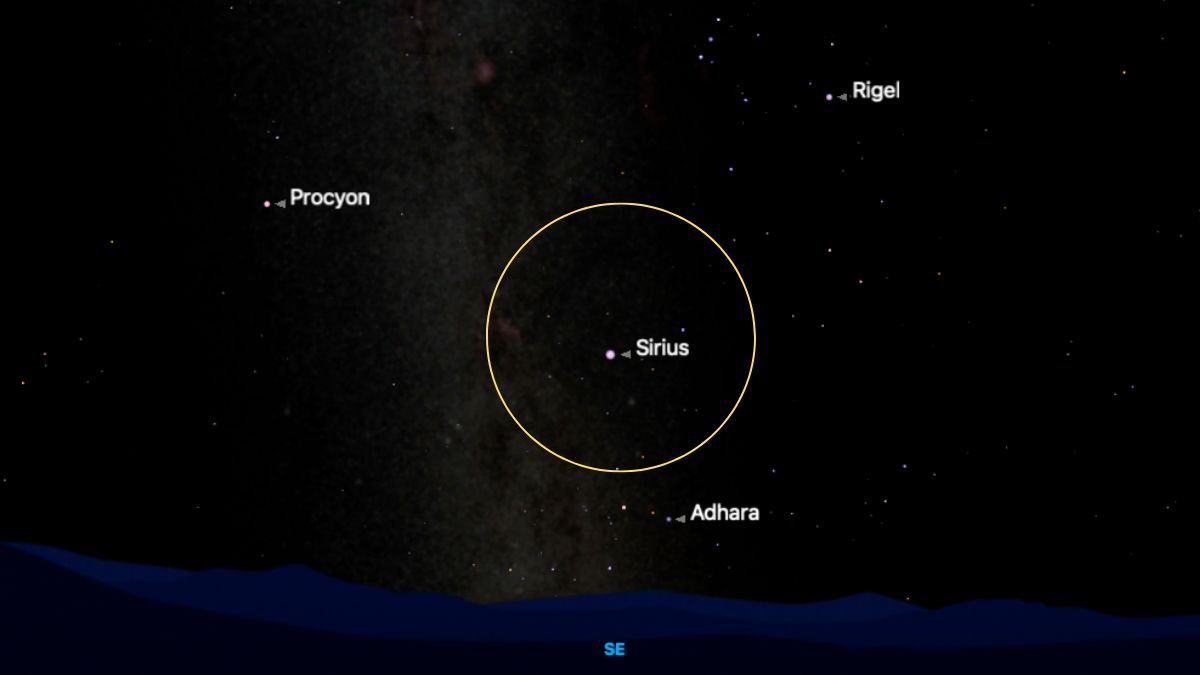
What's the brightest star in the night sky? That's easy — go outside tonight a couple of hours after sunset, and you'll see it with your own eyes. In the east below Orion's stars will be Sirius, the brightest star in Canis Major. Just 8.6 light-years from the solar system, it's the fifth closest star system known and one of the sun's nearest neighbors. Shining at -1.45 magnitude, it shouldn't be hard to find. If you struggle, here's a tip — Orion's Belt points almost straight down at it. — Jamie Carter
Monday, Jan. 20 — The constellation of Lepus, the rabbit
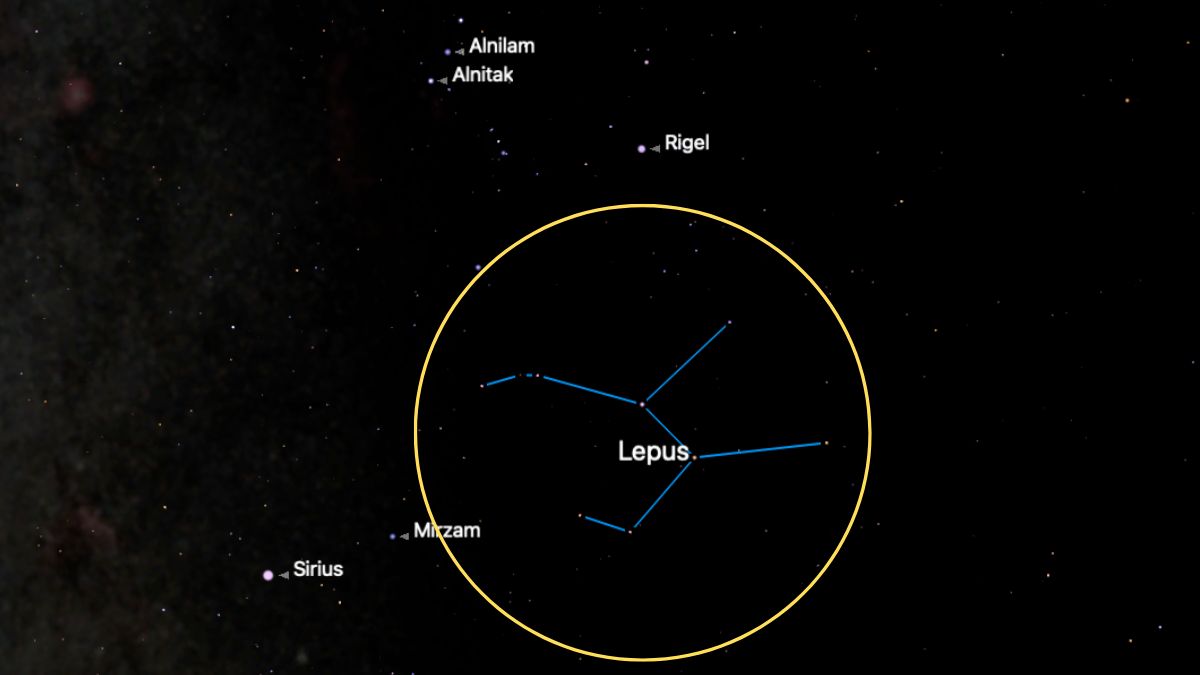
At this time of year, all eyes turn to the Orion constellation. Its bright stars are just too much to ignore. However, look below it, and you'll find another far less familiar constellation. Becoming visible late at night as Orion rises higher in the sky, look immediately underneath the brightest star in Orion, blue-white Rigel, and keep to the right of dazzling Sirius. You'll find 11 stars that make the shape of a rabbit.
Tuesday, Jan. 21 — Last quarter moon and Spica
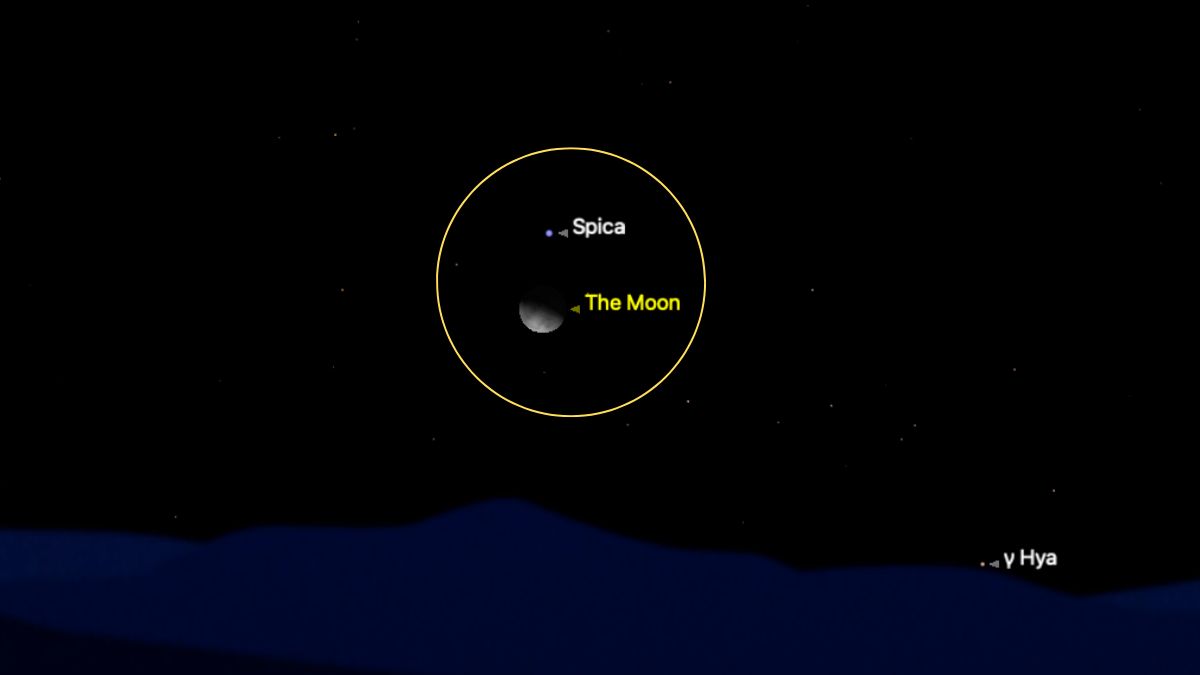
The moon regularly appears to pass near several bright stars each month, including Aldebaran, Pollux, Regulus, Antares and Spica. However, rarely are the apparent passes as close as tonight's conjunction of a waning gibbous moon and Spica. Look to the east from the early hours until sunrise, and you'll see an almost half-lit moon just 0.1 of a degree from the brightest star in the constellation of Virgo. During 2025, the moon will pass very close to it every month.
At 3:31 p.m. EST today, the moon will reach its last quarter phase, which will rise at midnight and set at midday. — Jamie Carter
Wednesday, Jan. 22 — Betelgeuse and Rigel
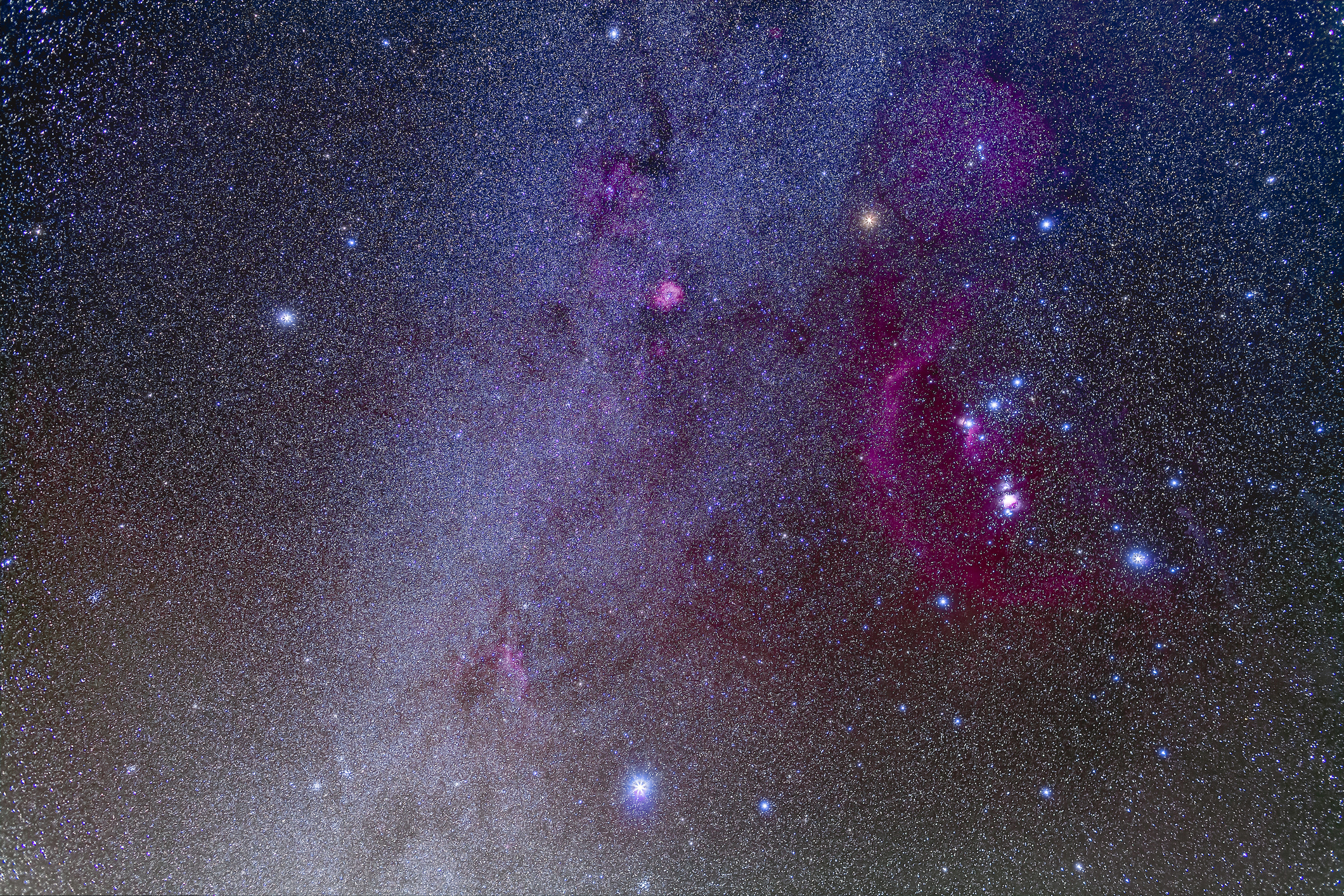
This month, stargazers will be fixated on the constellation Orion, which will be prominent in the southeast after dark. It's hard to take your eyes off it; its stars are just so bright and, in the case of the three stars in Orion's Belt, so perfectly aligned as seen from Earth. Look on the other side of those three stars, and you'll see two of winter's most impressive stars — Betelgeuse and Rigel. They're found on opposite sides of Orion's Belt. Betelgeuse is a red supergiant star 548 light-years away. Almost 800 light-years away, Rigel is a blue-white supergiant star and the brightest star in Orion. Both will eventually go supernova. — Jamie Carter
Thursday, Jan. 23 — Mars and Pollux (after sunset)
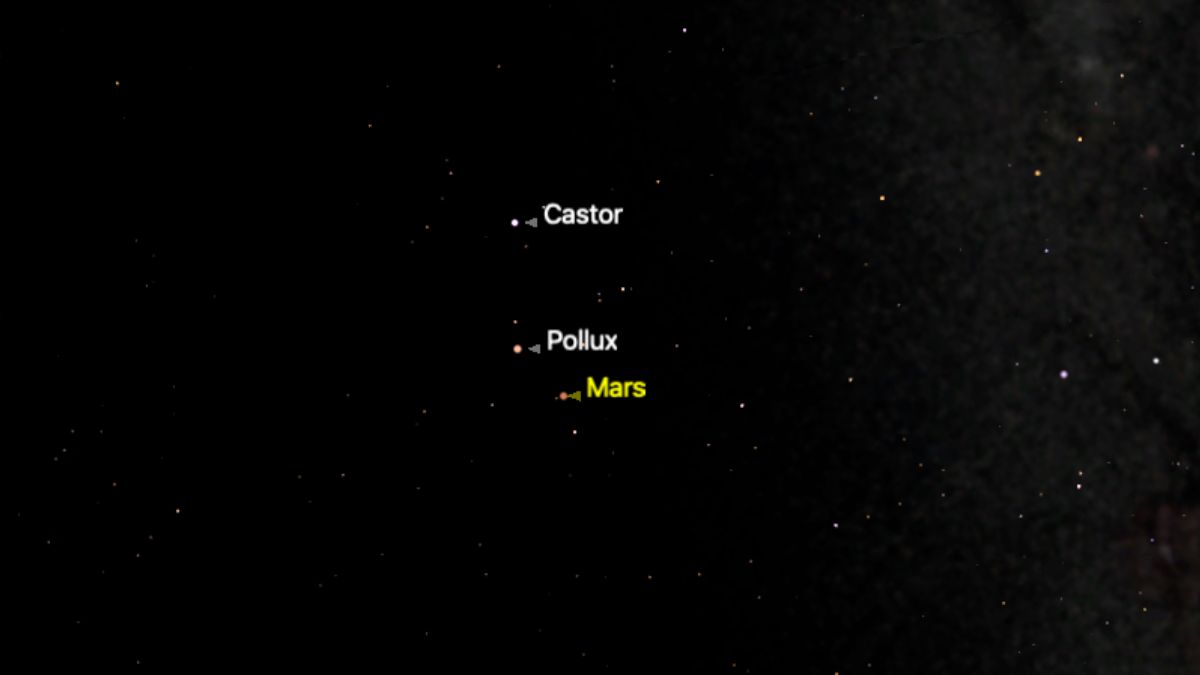
This month is ideal for observing Mars. All month, it will shine at -1.3 magnitude around the constellation Gemini. Tonight, it gets closest to one of its stars. Look about two degrees to its left, and you'll see orangey Pollux, the brightest star in Gemini. Pollux is just 34 light-years from the solar system. Just above, and forming a triangle with the pair, will be slightly dimmer, blue-white Castor, 52 light-years from the solar system. The contrast in colors — the golden color of Mars, the orange of Pollux and the blue-white of Castor — will provide a spectacular view. If you can't see the colors easily, squint at the stars until you do. In stargazing, patience and perseverance are everything. — Jamie Carter
Night sky for tonight and the weekend
Friday, Jan. 24 — Waning crescent moon and Antares (before sunrise)
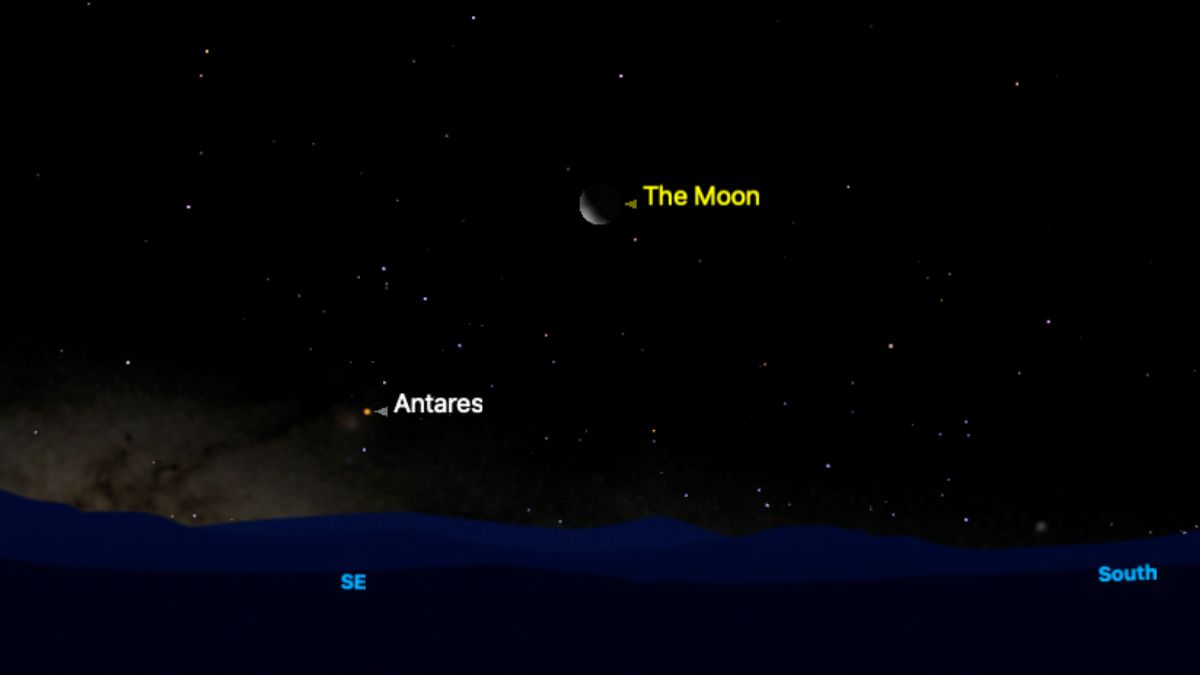
Antares is a red supergiant star in the constellation Scorpius. To the naked eye, it looks orangey-red (which is easiest to see if you squint at it). Its name means "rival of Mars" because the red planet sometimes passes close to it, confusing skywatchers. The two won't get close until September 2025, so there'll be no mistaking them this morning before sunrise when a 26%-illuminated waning crescent moon shines 0.3 degrees from Antares. — Jamie Carter
Saturday, Jan. 25 — Planet parade (after sunset)
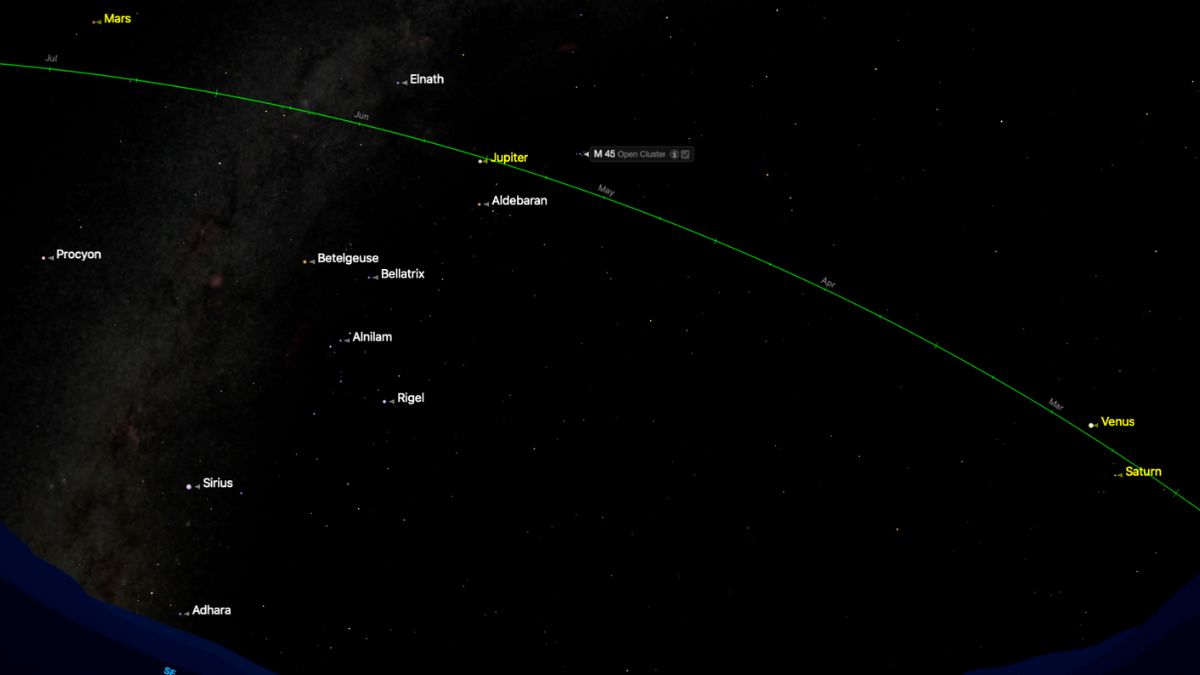
You'll have noticed by now this month that there are a lot of planets around and that there's also a lot of hype about it. Look west after sunset, and you'll find Venus and Saturn, with Jupiter high in the south and Mars above the east. They're the naked-eye planets, but there will be a couple of other dim telescopic worlds weaved into the "planet parade," too, namely Uranus close to Jupiter and Neptune near Venus. Ignore the hype about them being "lined up." All planets orbit the ecliptic — the path of the sun across our sky — so they are always visible in something of a line across the sky. — Jamie Carter
Sunday, Jan. 26 — Winter Milky Way (after dark)
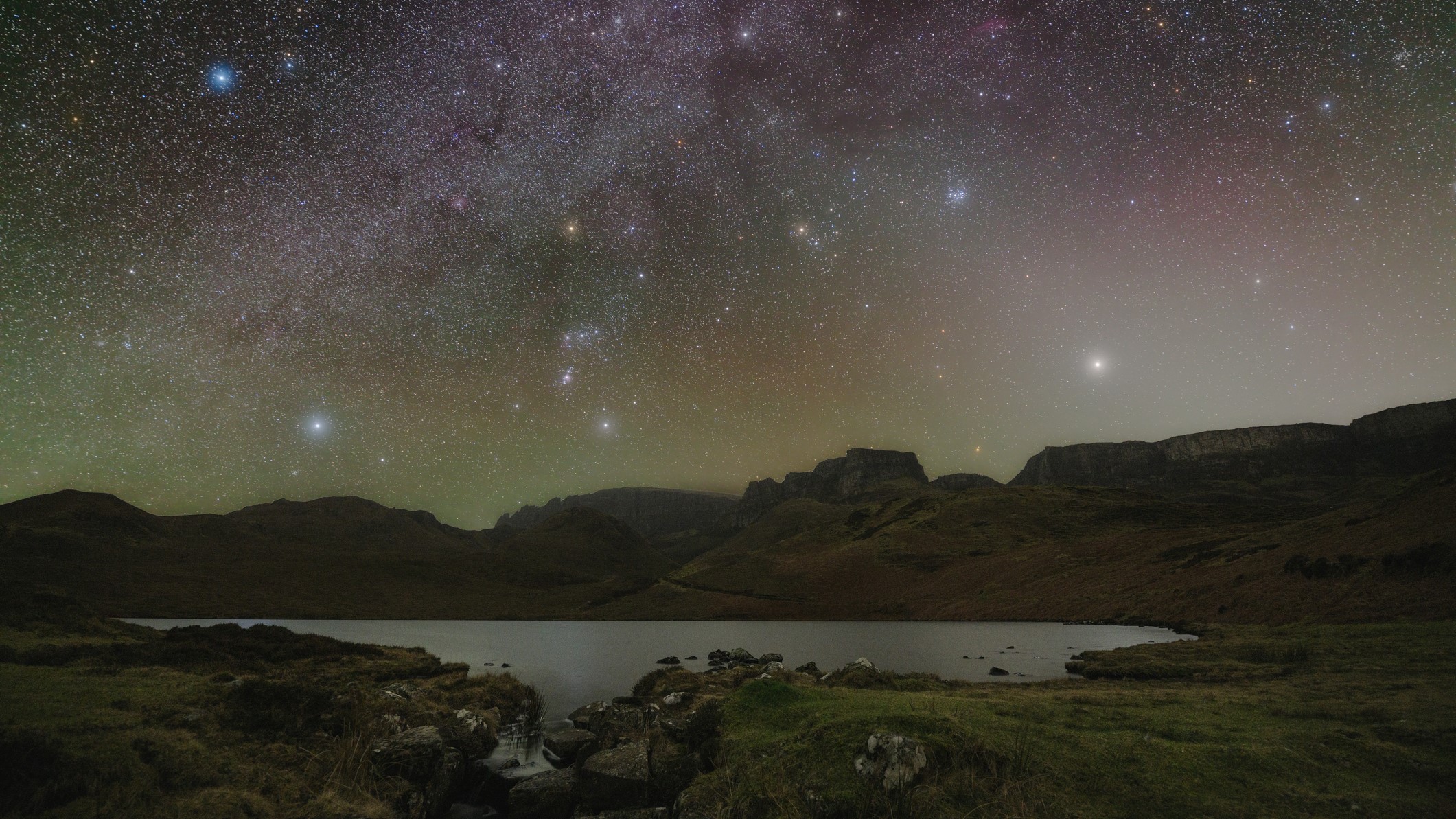
Ask any stargazer or astrophotographer for the best time to see and image the Milky Way; they'll tell you from April through November. That's the time to see its bright center, but if you want to see its spiral arms — and the Orion Arm in particular — January is the best month. Ever wondered why you can see so many more bright stars from the Northern Hemisphere in winter than in summer? It's because the solar system is part of the Orion Arm, and during winter, we get a great view of it and see much closer, brighter stars. It may not have the brightness of the summer Milky Way, but on a dark night, you can see a faint band of white light — the combined glow of billions of stars — across the winter sky. — Jamie Carter
Monday, Jan. 27 — Winter triangle (after sunset)
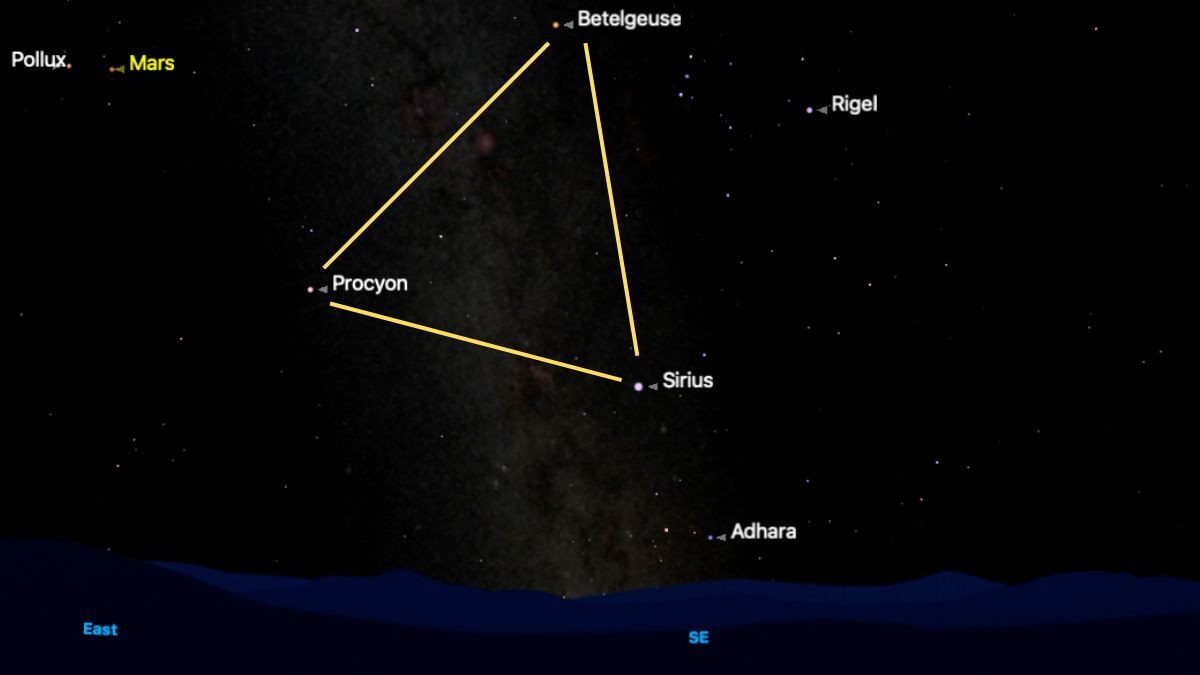
Look to the southwest after dark and find Sirius, the brightest star in the night sky. You can do that by finding the easily recognizable stars of Orion's Belt and following a line through them to the horizon. Once you have Sirius in your sights, look for Procyon, the brightest star in Canis Minor, to its left. Now look for reddish Betelgeuse, in Orion, above them. Join them together to make an isosceles triangle — the Winter Triangle — which will be visible until April. — Jamie Carter
Tuesday, Jan. 28 — Find a dragon before the Lunar New Year (after sunset)
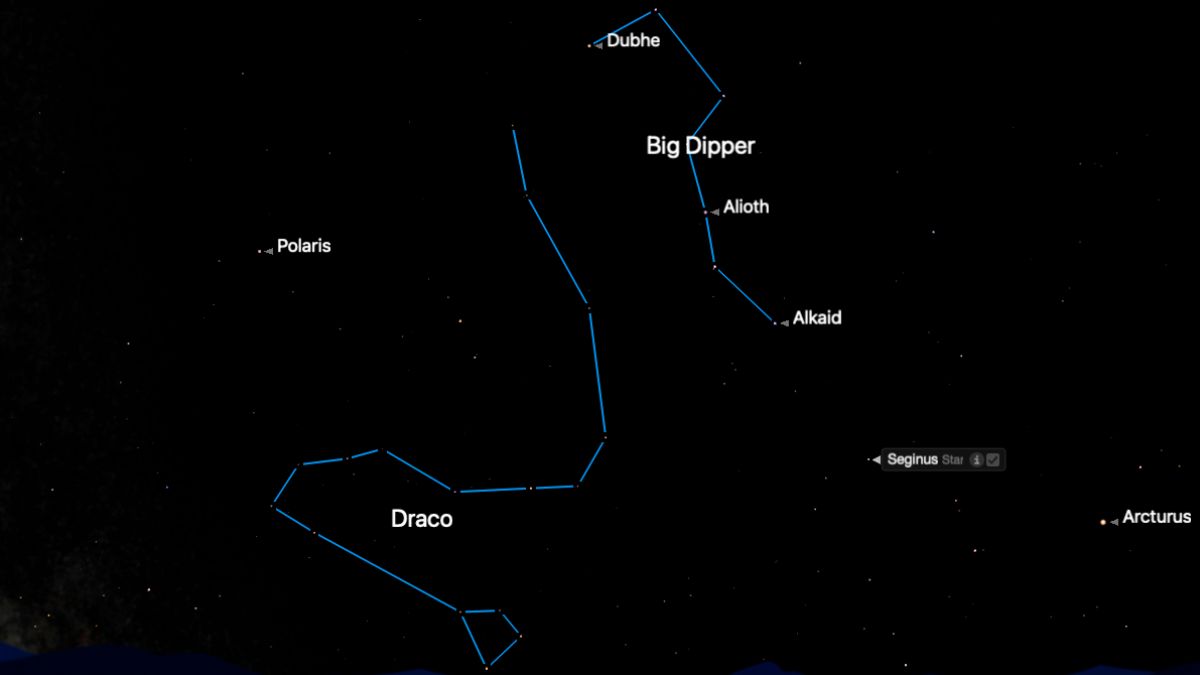
Tomorrow's new moon will signal the beginning of the Lunar New Year (also called Chinese New Year) and Year of the Snake, which will continue through Feb. 16, 2026, when the Year of the Horse begins. Draco, the dragon, is a faint shape of stars that traces a serpent's tail between the constellations of Hercules, Cepheus, Ursa Minor and Ursa Major. Look north as late as you can tonight to find its tail zigzagging between Polaris, the North Star, and the Big Dipper. — Jamie Carter
Wednesday, Jan. 29 — New moon (not viewable)
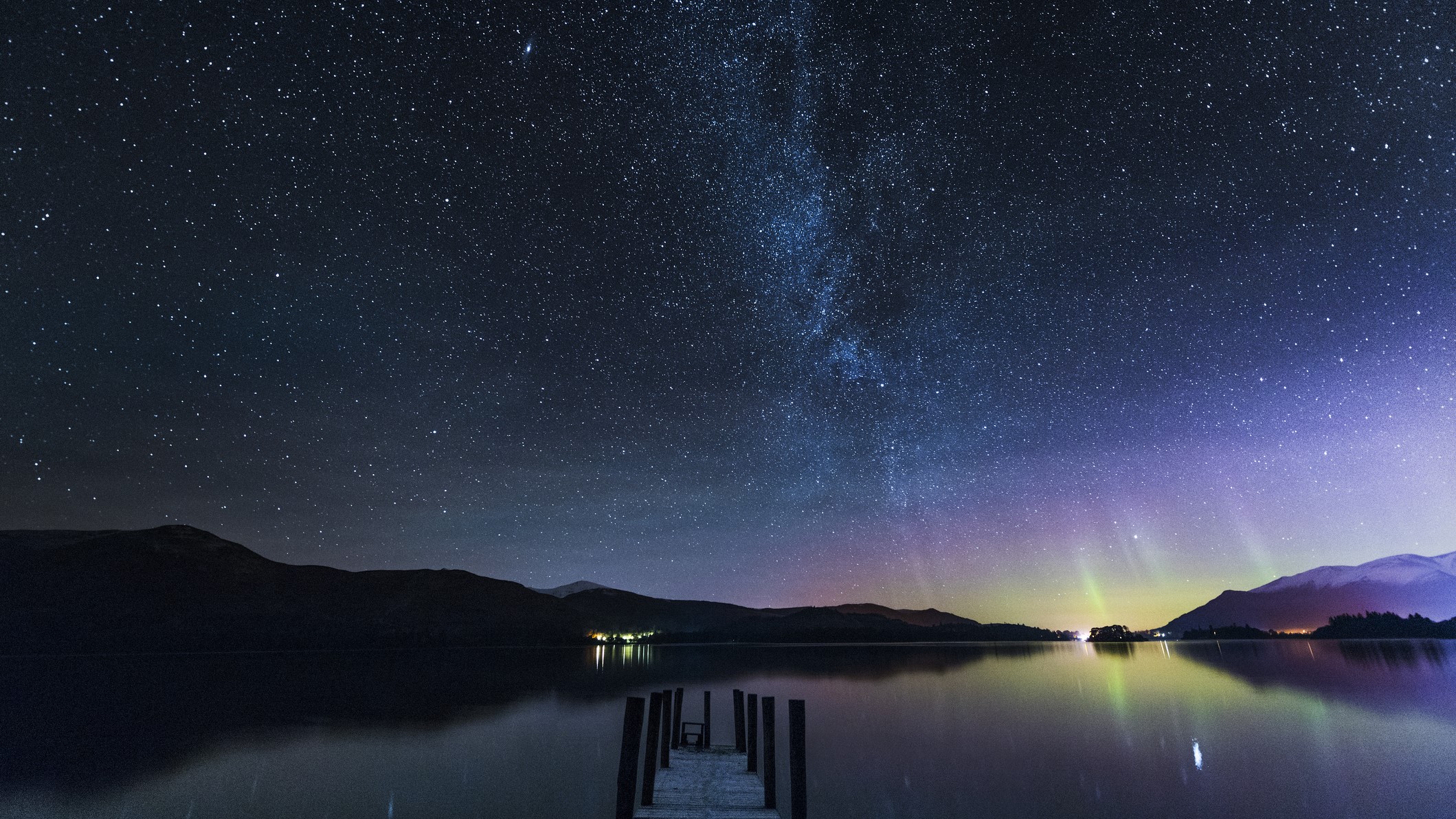
At 7:36 a.m. EST today, the moon will slip roughly between Earth and the sun, completing its orbit and entering its new moon phase. There's nothing to see because the moon will be lost in the sun's glare and there's no eclipse (that will next happen on Mar. 29), but there is a reason for stargazers to celebrate. Not only will the lack of moonlight at night make skies as dark as possible, but the next four or so evenings will feature a beautifully slim waxing crescent moon in the post-sunset sky. Check for a clear sky, grab a warm coat and spend at least 20 minutes outside to allow your eyes to adjust to the dark. — Jamie Carter
Thursday, Jan. 30 — Young crescent moon (after sunset)

This won't be easy, and you may need binoculars but don't miss the chance — if the skies are clear — to glimpse a young waxing crescent moon emerging from the sun's glare. It will be visible briefly as a very slim crescent just after sunset when just over 2.5% of its surface is lit by the sun. Look to the west about 15 minutes after the sun dips beneath the horizon. — Jamie Carter
Night sky for tonight and the weekend
Friday, Jan. 31 — Waxing crescent moon and Saturn (after sunset)

Look to the southwest immediately after sunset, and you'll see a beautiful conjunction of a 7%-illuminated waxing crescent moon and Saturn emerging in the twilight. The two will be separated by barely a degree. Saturn will, at +1.1 magnitude, be relatively dim. So it may take substantial darkness to see it. — Jamie Carter
Saturday, Feb. 1 — Waxing crescent moon and Venus (after sunset)

If you thought yesterday's conjunction of the crescent moon and Saturn was spectacular, wait until you see tonight's sight. Venus will blaze away in the southwest after sunset, shining at -4.7 magnitude. Just two degrees to the left will be a 14%-illuminated waxing crescent moon. Venus is now just two weeks from being the brightest it will get during its current apparition as the "Evening Star." — Jamie Carter
Sunday, Feb. 2 — Waxing crescent moon and Earthshine (after sunset)

Tonight, the waxing crescent moon, now 23%-illuminated, will be visible high above bright Venus. However, it will remain a terrific sight, with its darkened limb lit up by "Earthshine" — sunlight reflected from Earth's oceans, snow and ice back onto the moon. High above the trio will be bright Jupiter and, beyond it, Mars. — Jamie Carter
Monday, Feb. 3 — Crescent moon, Venus and Saturn (after dark)
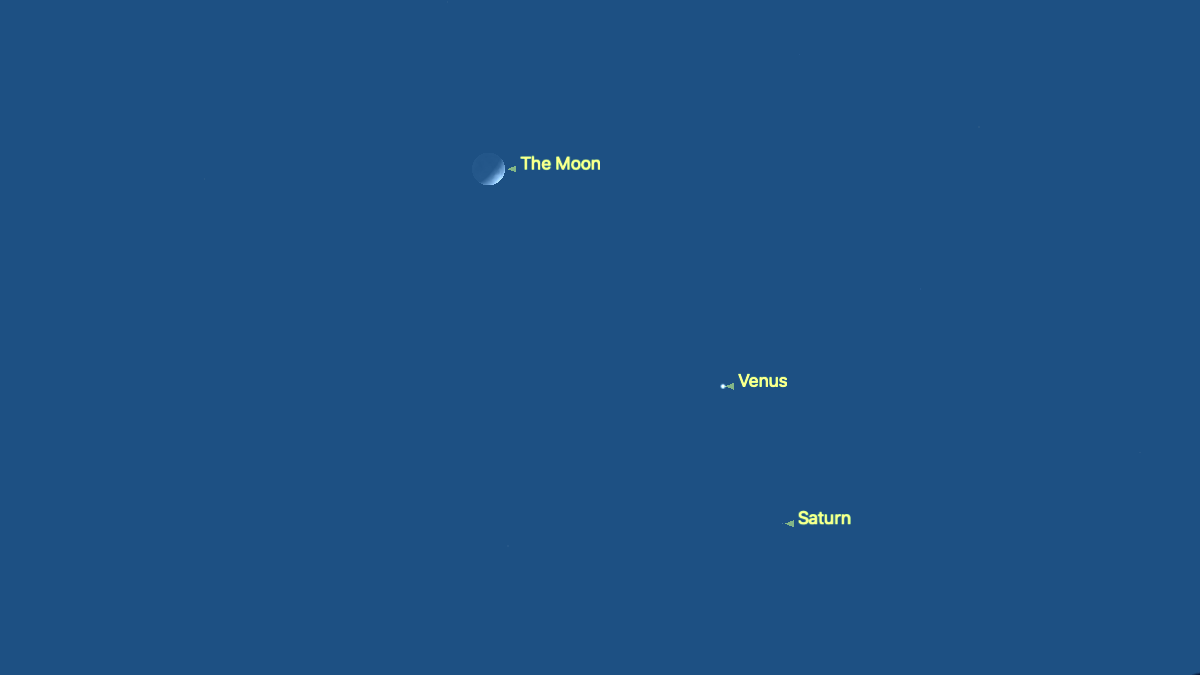
The night sky tonight is at something of a crossroads. It’s now a day past a cross-quarter day called Candlemas in the Christian religion that marks the sun’s midway point between the winter solstice and the spring equinox.
However, there’s one marker of the night sky that may appear to be season but is anything but. Look south after sunset; you’ll see a 34%-illuminated crescent moon shining brightly. Venus will be between it and the southwestern horizon, shining at magnitude -4.8. It’s been this way for a few months, but don’t take the sight of Venus after sunset for granted. At its brightest in the evening sky from Jan. 28 through Feb. 27 in 2025, it will reach its greatest brilliancy on Feb. 14. However, it will quickly sink into the western horizon as it disappears into the sun’s glare by mid-March. Venus has no annual pattern as seen from Earth. That’s because, as an inner planet, it orbits faster than Earth — just over 13 times for every eight orbits by Earth. It, therefore, has a cycle of Earth visibility that repeats every eight Earth years. Just beyond Venus will be a much dimmer Saturn. — Jamie Carter
Tuesday, Feb. 4 — First quarter moon (after dark)

Overnight tonight, the moon will reach its first quarter phase, which will see its right half illuminated from Earth’s point of view. A first-quarter moon rises around midday and sets around midnight, so this is when the early evening skies get bleached by moonlight. Stargazing will become more difficult until the moon reaches its last quarter phase on Feb. 20, when it will rise around midnight and set around midday. — Jamie Carter
Wednesday, Feb. 5 — Moon close to the Pleiades (after sunset)
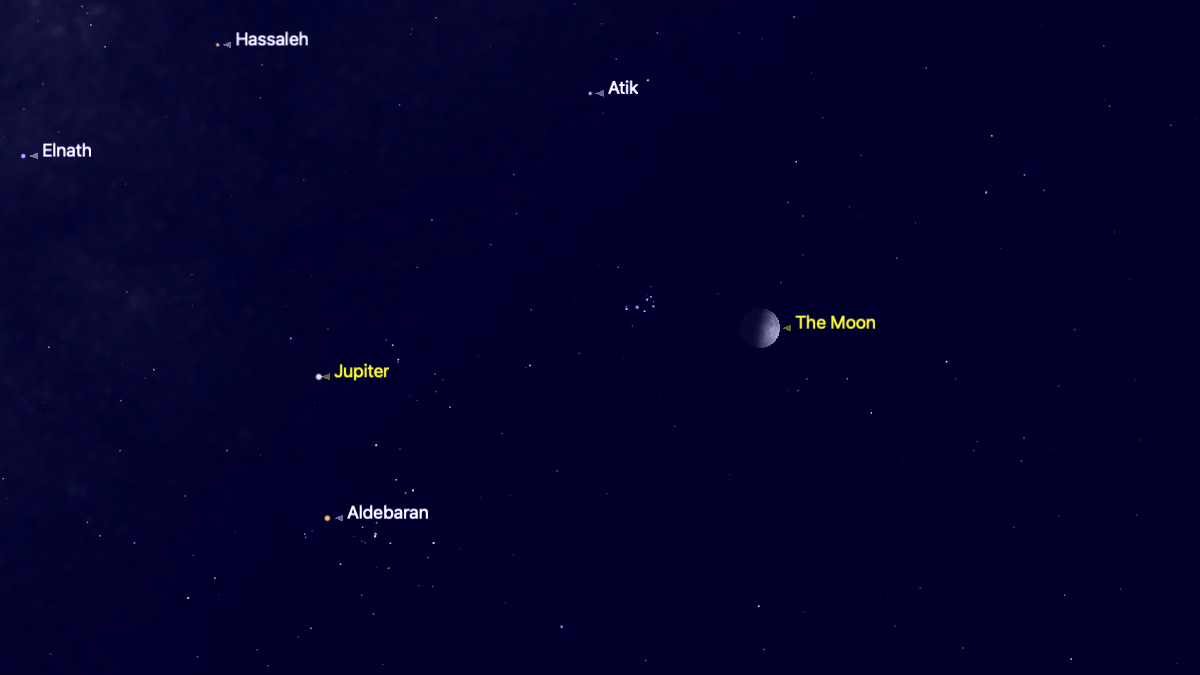
A 57%-illuminated waxing gibbous moon will pass close to the Pleiades open star cluster tonight. It will create a picturesque scene in the night sky that astrophotographers can return to again every month during 2025. Two bright points of light — Jupiter and bright star Aldebaran — will be beneath the moon and the Pleiades. — Jamie Carter
Thursday, Feb. 6 — Moon and Jupiter (after sunset)

Look to the southeast as soon as it gets dark, and you’ll see a 68%-illuminated waxing gibbous moon above two bright points of light. The closest to it is Jupiter, now shining at -2.5 magnitude, with Aldebaran below. About 66 light-years from the solar system, Aldebaran is a red supergiant star and the “eye of the bull” in the constellation Taurus. — Jamie Carter
Night sky for tonight and the weekend
Friday, Feb. 7 — Venus, Saturn and the Great Square of Pegasus (after sunset)
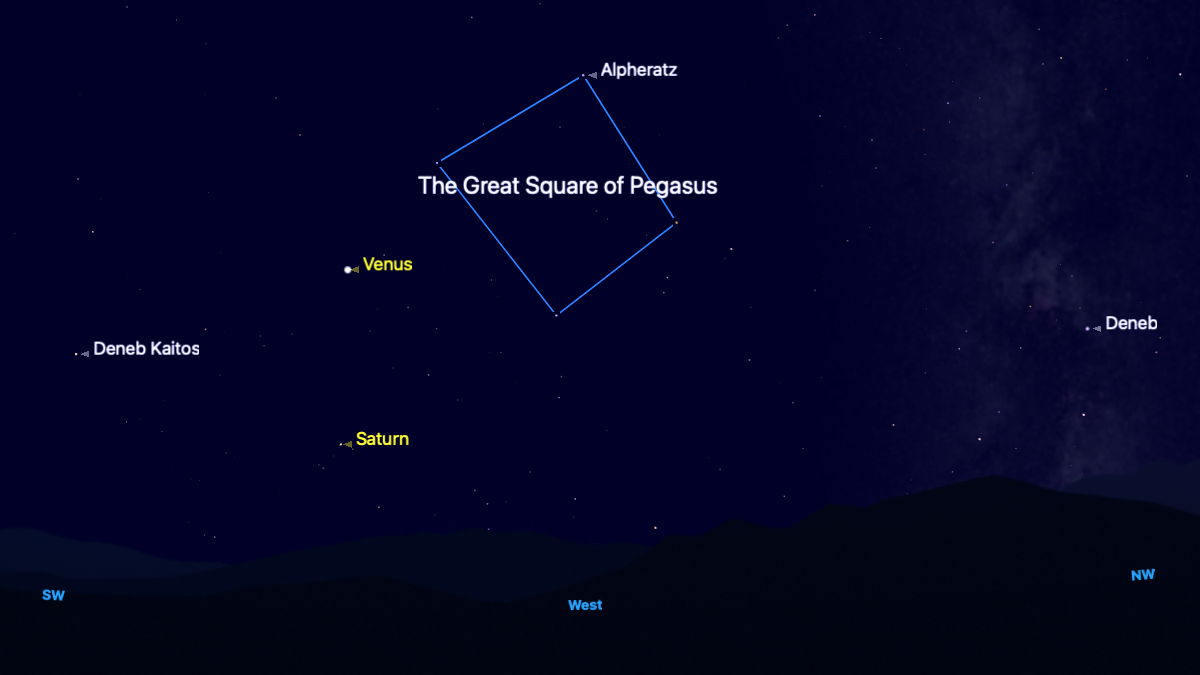
For an hour after sunset tonight, look to the west, and you’ll see bright Venus — now shining at a magnitude -4.8 — just to the lower-left of a large square of four bright stars of roughly equal brightness at each of the four corners. That’s the Great Square of Pegasus, the core shape of the constellation Pegasus, a winged horse of Greek mythology. The four stars are Scheat, Alpheratz, Markab and Algenib, with Venus visible close to the latter two. Below Venus will be Saturn, shining at a far dimmer magnitude of 1.1. — Jamie Carter
Saturday, Feb. 8 — Orion constellation prominent (after dark)
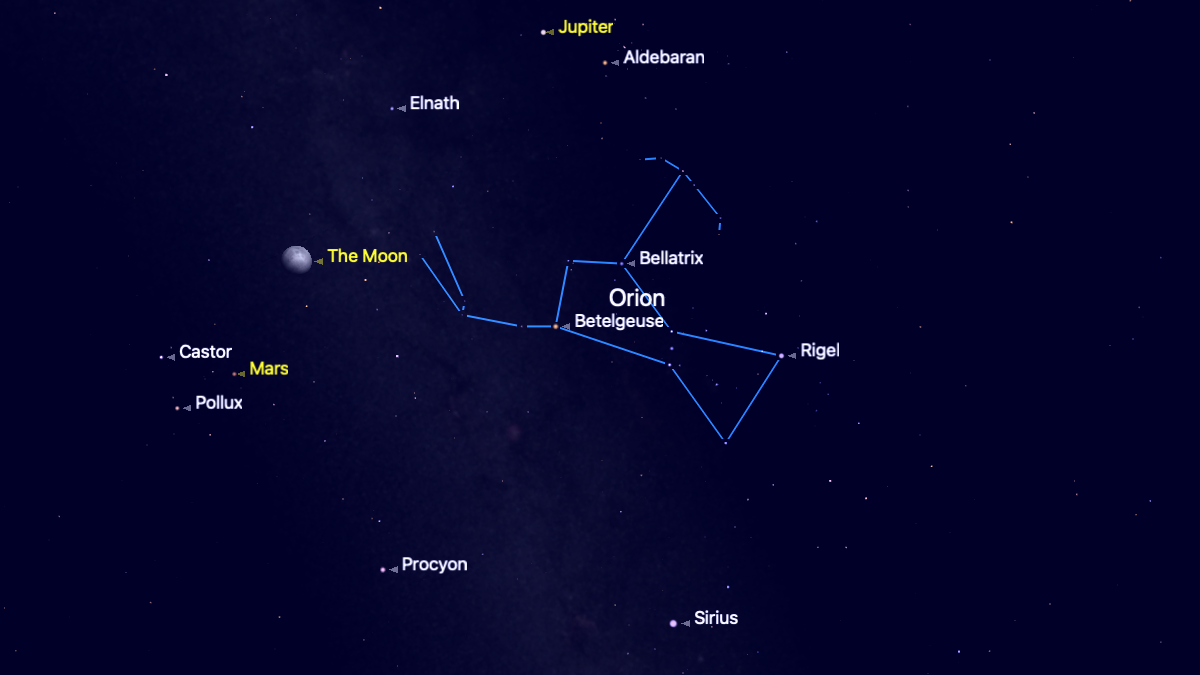
The constellation Orion, the hunter, rides high in February. Look directly east after dark tonight, and you’ll immediately see a bright 86%-illuminated waxing gibbous moon. Go to the right, and you’ll quickly come to Alnitak, Alnilam and Mintaka, the three bright stars that make up Orion’s Belt. Between the belt stars and the moon is reddish Betelgeuse, while beyond them is bluish Rigel. — Jamie Carter
Sunday, Feb. 9 — Moon and Mars (after dark)
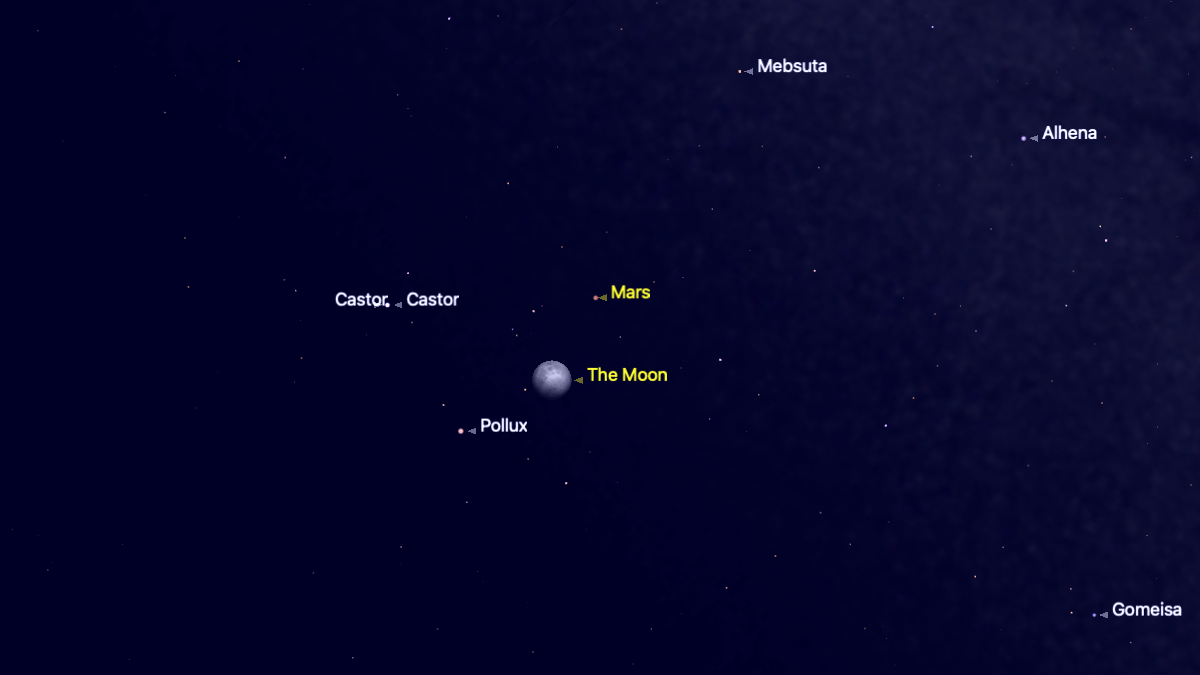
Look to the east as soon as it gets dark, and you’ll see a 93%-illuminated waxing gibbous moon between golden-colored Mars on its right and bright star Pollux on its left. Pollux, the brightest star in the constellation Gemini and 34 light-years distant, has an orangey color while Mars, despite being the ‘red planet,’ will have a distinctly golden hue. Tonight, it’s 109 million kilometers from Earth. — Jamie Carter
Monday, Feb. 10 — How far is far? (after dark)

Can you see the galaxy in 3D? Look east after sunset, and you’ll find a 97%-illuminated waning gibbous moon shining brightly. Above it will be Mars, and to its right will be Procyon, the brightest star in the Canis Minor constellation. The moon is a mere 238,606 miles (384,000 kilometers) from Earth, Mars about 153 million miles (246 million km) and Procyon 11.4 light-years. Procyon is one of the closest stars, yet the moon is approximately 0.000000356% as far from Earth as Procyon, and Mars is about 0.000228% as far away. The solar system may seem vast, but stars are incredibly far away. — Jamie Carter
Tuesday, Feb. 11 — Canis Major constellation prominent (after dark)
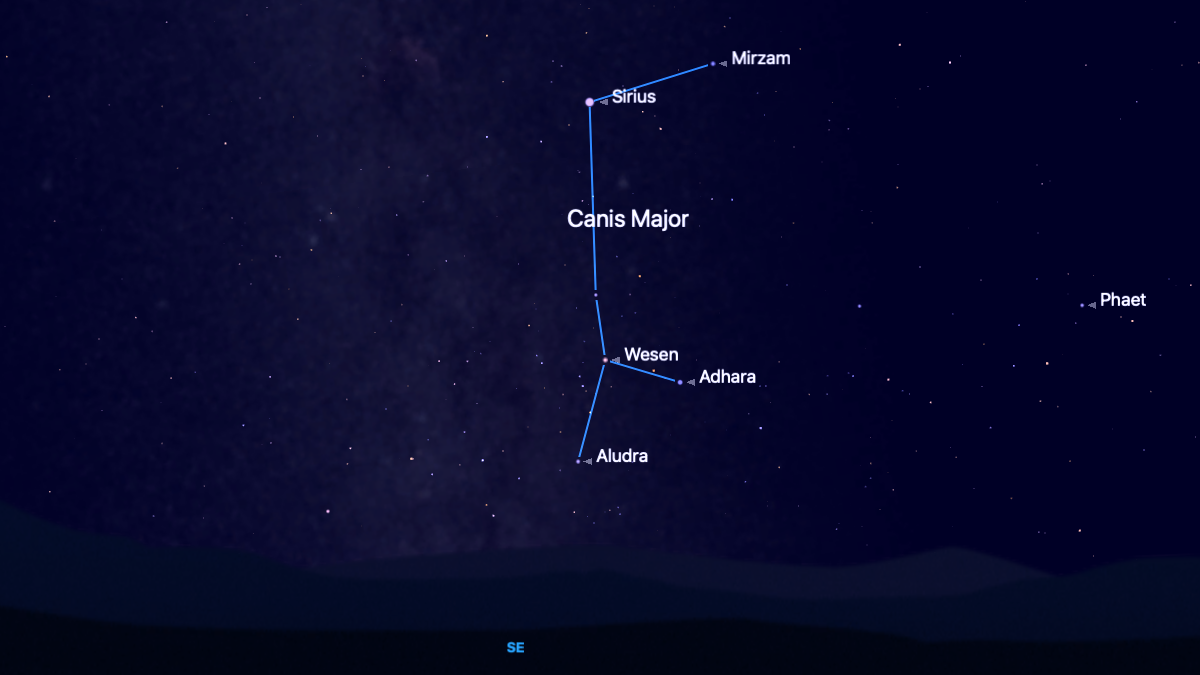
It's often overlooked because of more famous shapes of stars nearby, but knowing how to find Canis Major, the great dog, should be a stargazing staple. Not least because it's so easy to find its brightest star, Sirius, the "Dog Star." At just 8.6 light-years from the solar system, it's the closest and brightest star visible above the equator, shining at a magnitude of -1.4. Orion's belt points straight at it, low on the southern horizon as seen from the Northern Hemisphere. Although they're much dimmer than Sirius, see if you can pick out the other tars in Canis Major — notably Adhara, Wezen and Aludra. — Jamie Carter
Wednesday, Feb. 12 — Full Snow moon (dusk)
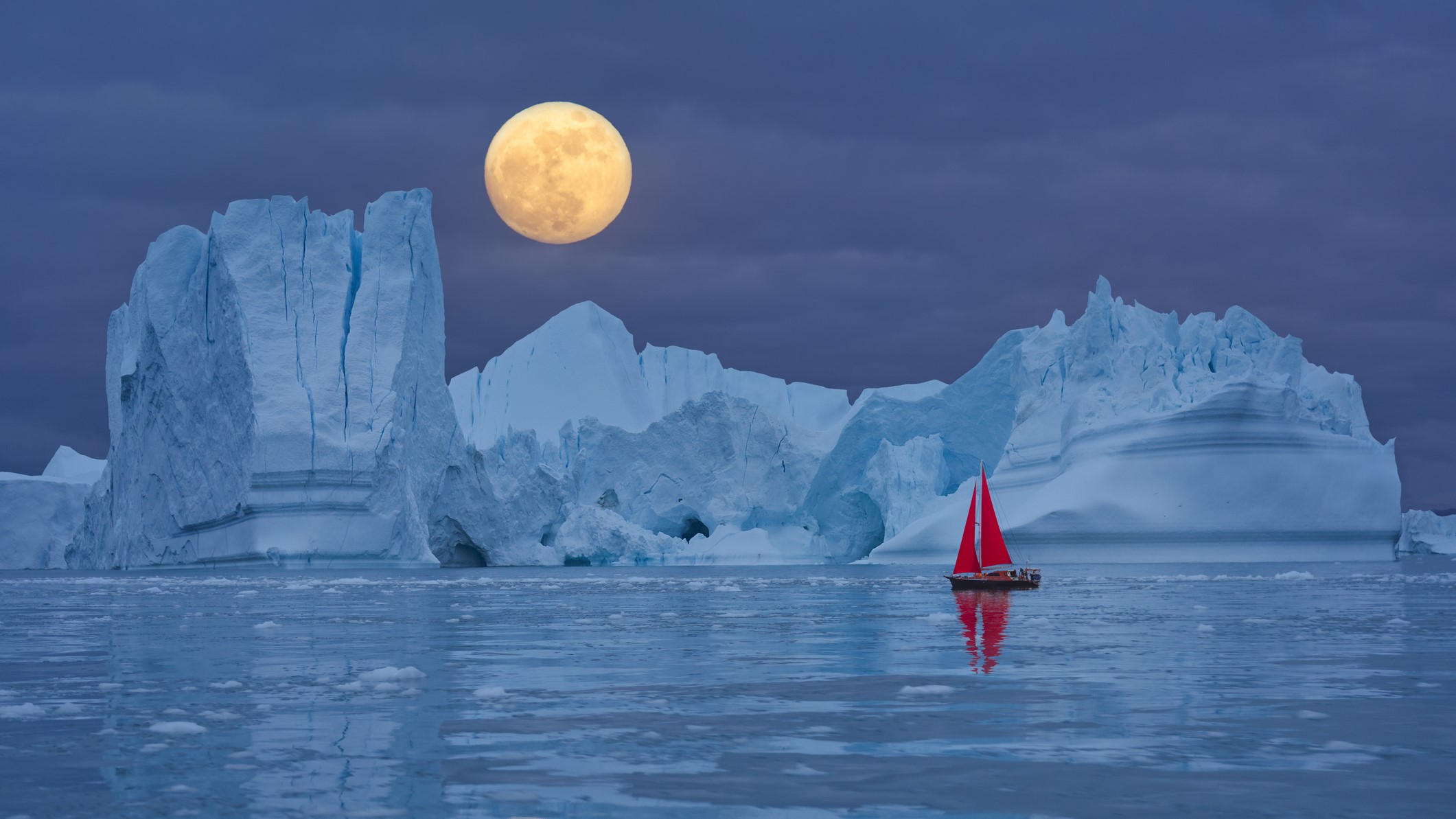
Today at 13:52 UTC (8:52 a.m. EST), our satellite officially reaches its full phase, with Earth positioned roughly between it and the sun. It will be best viewed as it rises above the eastern horizon during dusk at the time of moonrise where you are, with the bright star Regulus in Leo just to its right.
During the next full moon, on March 13, the moon's positioning will be more precise, with the full Worm moon passing through Earth's dark umbral shadow in space to cause a total lunar eclipse — the first anywhere on the planet since 2022. North and South America will have the best views. — Jamie Carter
Read more: Total lunar eclipse March 2025: When and where to see the next 'Blood Moon' lunar eclipse
Thursday, Feb. 13 — Big Dipper (after dark)
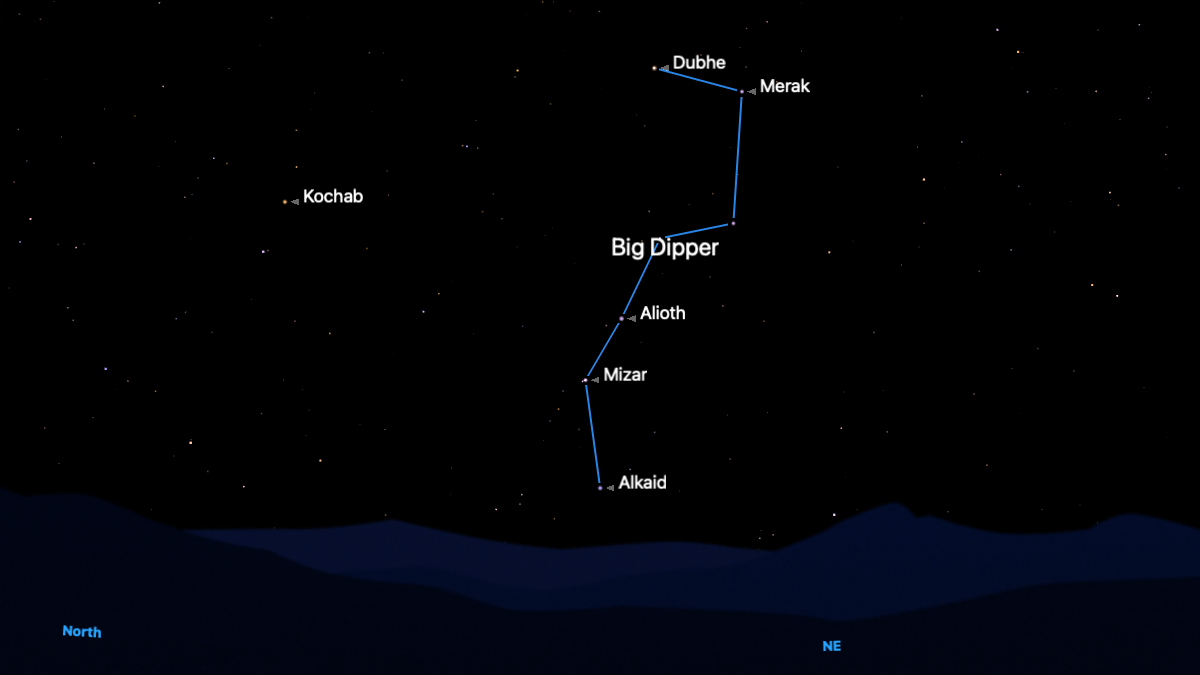
'Spring up, fall down' is how to remember where the Big Dipper is during the year. So what about winter? Look to the north tonight a couple of hours after dark, and you'll see the Big Dipper rising on its side. At the top will be the bowl stars, Dubhe and Merak, with Alkaid at the tip of the handle lower on the horizon. Go to the left from Dubhe and Merak and you'll come to Polaris, the North Star, which Earth's northern axis points straight at. Go to the left, and you'll come to Cassiopeia, the W-shaped constellation of seven stars. Both the Big Dipper and Cassiopeia are circumpolar, eternally spinning around Polaris from our point of view. — Jamie Carter
NIGHT SKY FOR THE WEEKEND
SATURDAY, FEB 15 — Taurus constellation prominent (after dark)
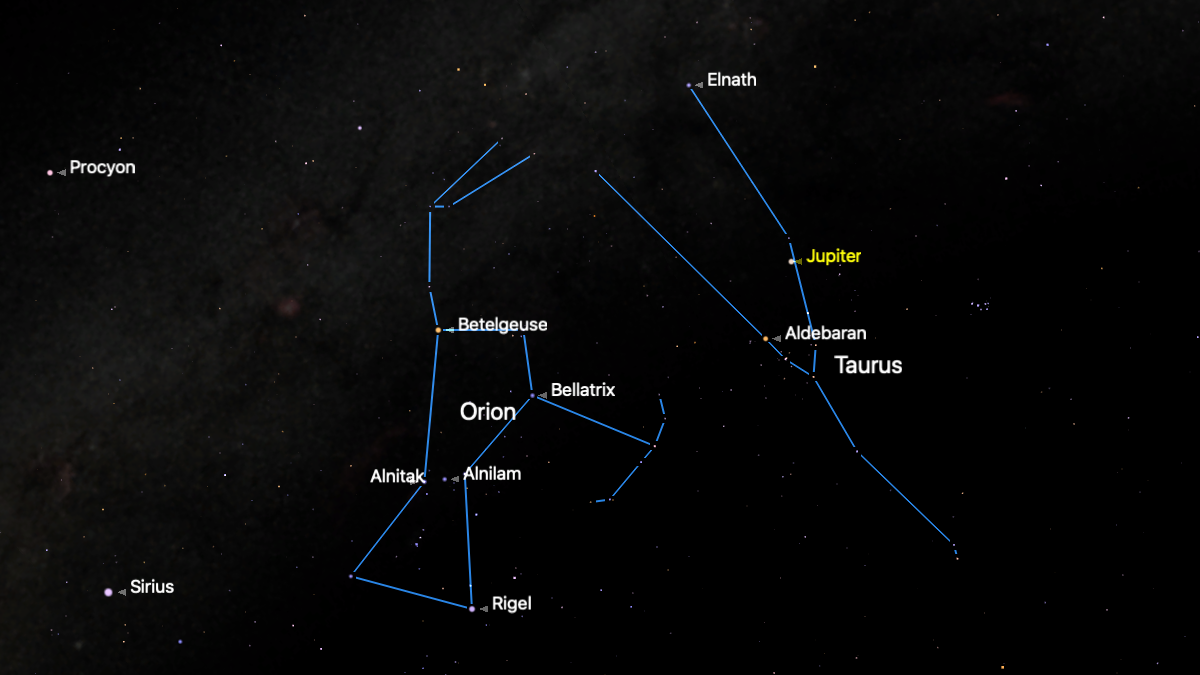
There is no better month to look at the stars of Taurus, one of the most famous and beautiful constellations in the night sky. The key to finding Taurus is identifying reddish Aldebaran and then locating the stars' V-shape around it. There's a light to help guide the way at present — bright Jupiter, an interloper that just happens to be passing through Taurus. Beyond Jupiter are Elnath and Tianguan, the points of the bull's horns. However hard you want to learn the stars of Taurus, your eyes will likely be drawn to the sparkling open cluster of stars nearby — the Pleiades or Seven Sisters. — Jamie Carter
Sunday, Feb. 16 — Venus at its brightest, Moon rises with Spica (after dark)
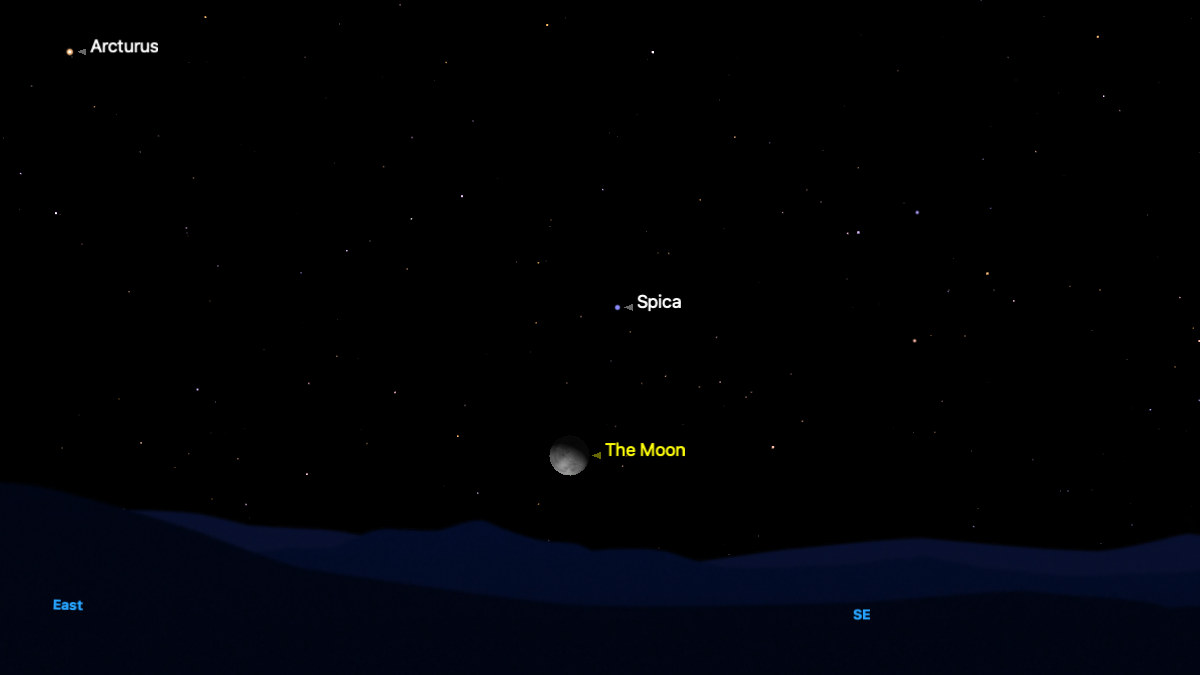
There isn't just one night in 2025 to observe Venus. However, Feb. 16 will offer an exceptional view because the "evening star" will be at its closest point to Earth. It will shine at an apparent magnitude of -4.9. A couple of hours after Venus has set in the west a couple of hours after sunset, an 81%-illuminated waning gibbous moon will appear in the east just above Spica, the brightest star in the constellation Virgo. — Jamie Carter
Monday, Feb. 17 — Moon sets with Spica (before sunrise)
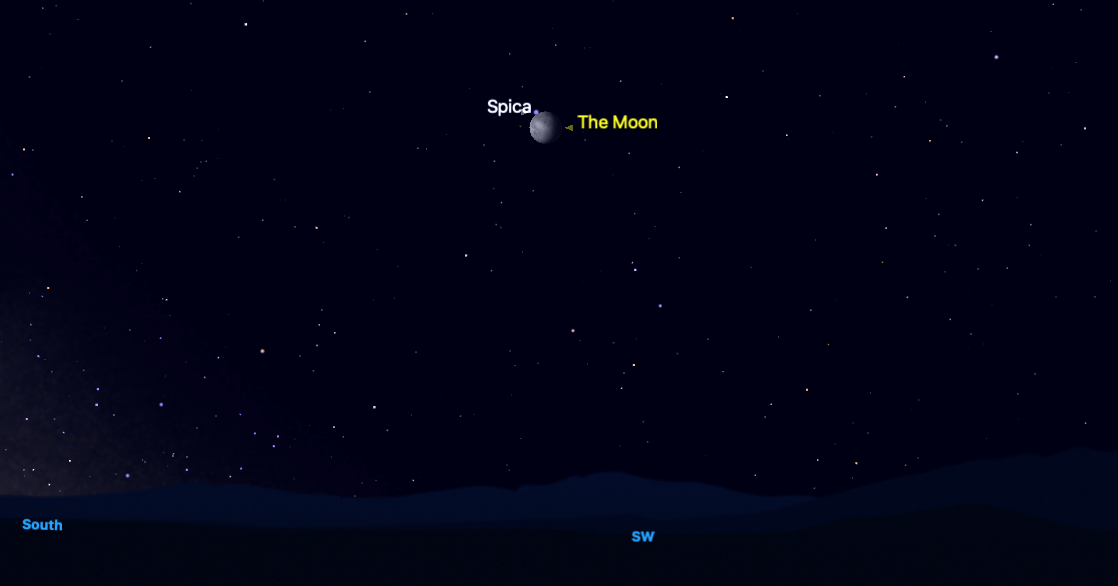
Since the best moonsets occur in the west before sunrise, few observers pay any attention. However, there's something special on offer this morning in the shape of Spica, which will be even closer than last night. The blueish star, about 250 light-years from the solar system, will appear just a degree above a 79%-illuminated waning gibbous moon. — Jamie Carter
Tuesday, Feb. 18 — Zodiacal light (after sunset)
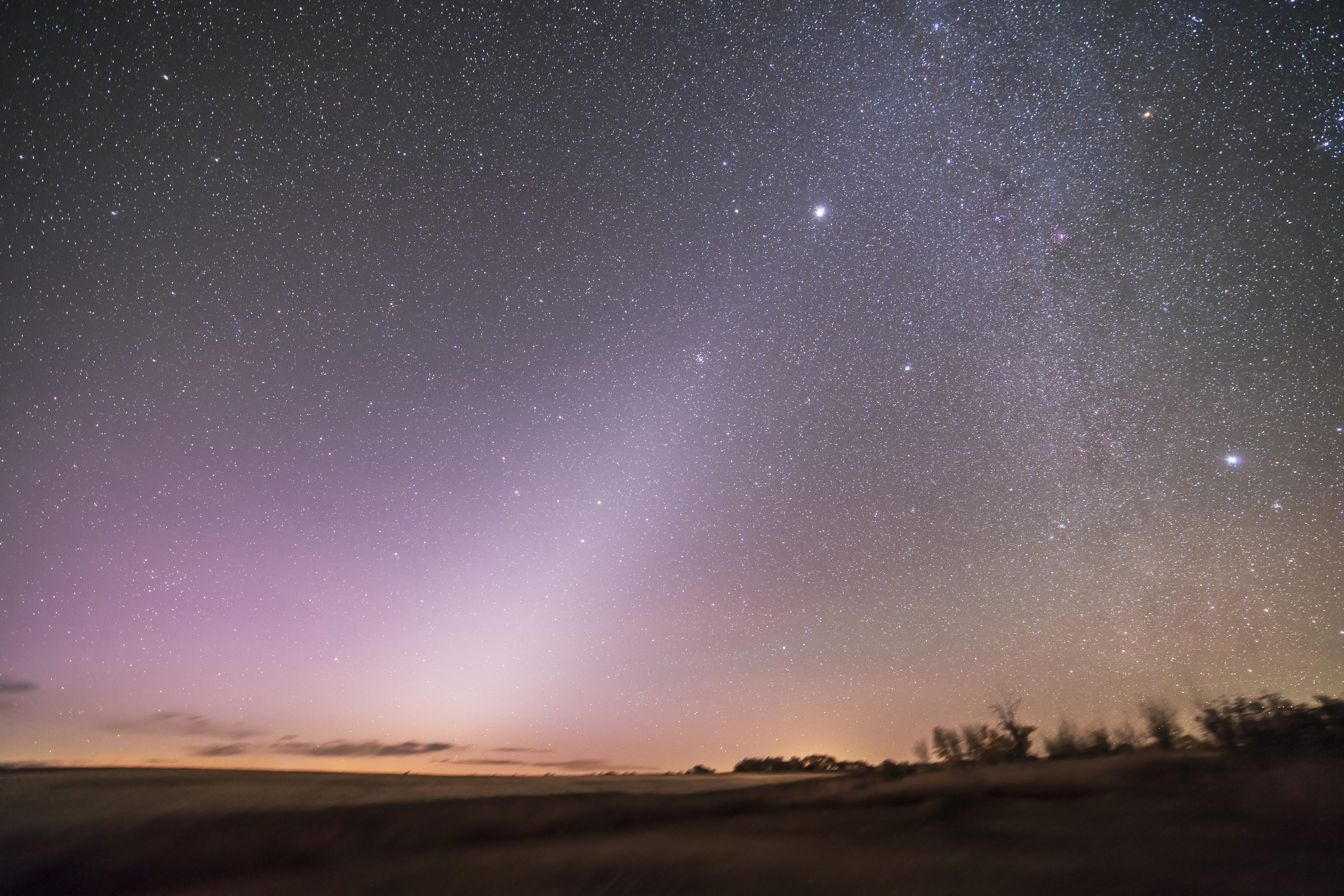
If you're in a dark location, far from light pollution, look west about an hour after sunset for a subtle triangle of light above the sunset point. A subtle but unmistakable sight, this so-called zodiacal light is photons reflected by dust particles in the asteroid belt between Mars and Jupiter. It should be visible until the moon appears in the post-sunset sky again on Feb. 28, 2025. — Jamie Carter
Tuesday, Feb. 18 — A 'Mini Moon' (after dark)

You've read the hype around supermoons, but what about the opposite? While a supermoon is an astrological term for a perigee moon — when the moon is closest to Earth, so bigger in the sky — but there isn't a name for the opposite scenario. Tonight sees what might be termed a 'mini-moon' — an apogee moon, the moon at its farthest point from Earth. Now a waning gibbous moon, it will rise about three hours after sunset and appear slightly smaller than its average size. — Jamie Carter
Wednesday, Feb. 19 — Venus at perihelion (after sunset)

Tonight, Venus — shining at a brilliant magnitude -4.9 as the "Evening Star" — will be closest to the sun, something astronomers call perihelion. It's got the most circular of all the planets, according to In-The-Sky.org, so it's particularly noticeable, but take any excuse to look at Earth's sister planet while you still can. It's now a few days past its brightest, but it's perfectly placed for seeing dominate the western sky immediately after sunset. If you have a small telescope, point it at Venus, and you'll see that it's a 28%-illuminated crescent. That can only happen to the two inner planets, Venus and Mercury, as seen from Earth. — Jamie Carter
Thursday, Feb. 20 — Last quarter moon (after dark)

The last quarter moon is tonight, and our natural satellite is seen rising half-lit around midnight. Over the next week, it will wane to a slim crescent moon, rising later each night. This period is ideal for stargazing because the night skies will become increasingly dark. Light pollution in cities may be rampant and increasing, but it's surprising how few people know that the real culprit for bleached night skies is, in fact, a bright moon. — Jamie Carter
Friday, Feb. 21 — Moon and Antares (before sunrise)
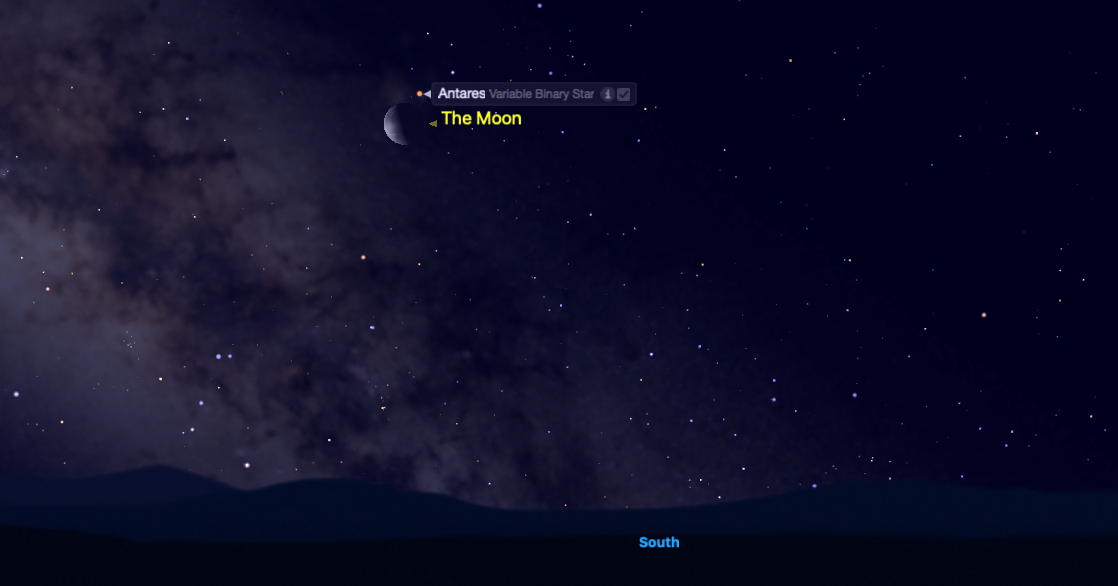
It's an awkwardly timed sight for most, but if you can stay up very late or get up very early, there's a chance to see the moon rise in the southeast with one of the prettiest stars. Red supergiant star Antares, which translates as 'rival of Mars' because of its ruddy hues, will be barely a degree above the 44%-illuminated waning crescent moon. Antares, the heart of the constellation Scorpius, sits over the bright central core of our Milky Way galaxy. — Jamie Carter
Night sky for the weekend
Saturday, Feb. 22 — Cancer constellation (after sunset)
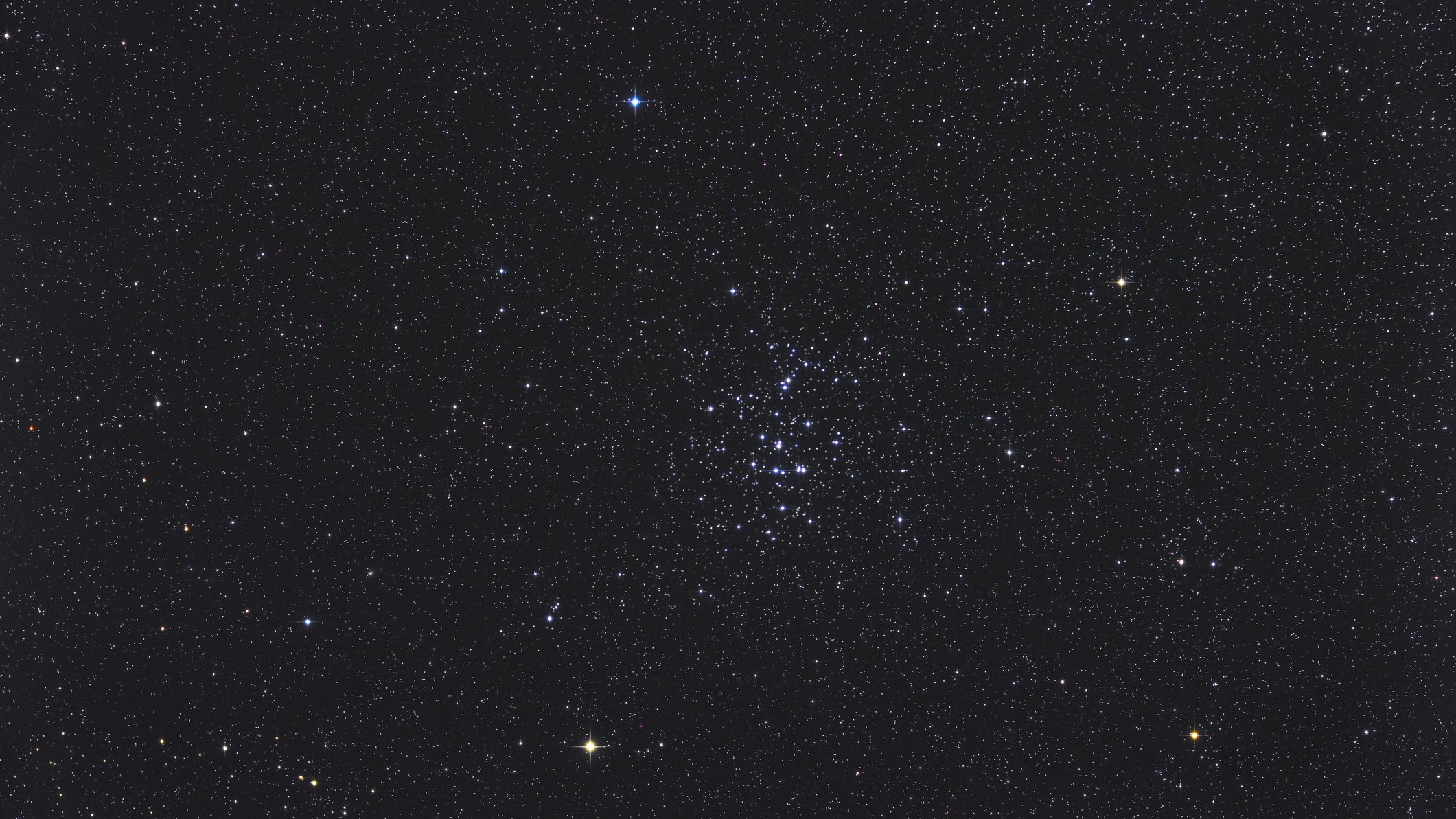
With the moon down, the next week is perfect for spotting some of winter's best constellations before they fade. One of the faintest but most worth finding is Cancer. A mere Y-shape of stars between Gemini and Leo, Cancer is easy to find in the east tonight, halfway between Pollux in Gemini and Regulus in Leo, below. Within Cancer is the Beehive Cluster (M44), which you can see with the naked eye under (really) dark skies far from light pollution. — Jamie Carter
Sunday, Feb. 23 — A square of stars and planets (after dark)
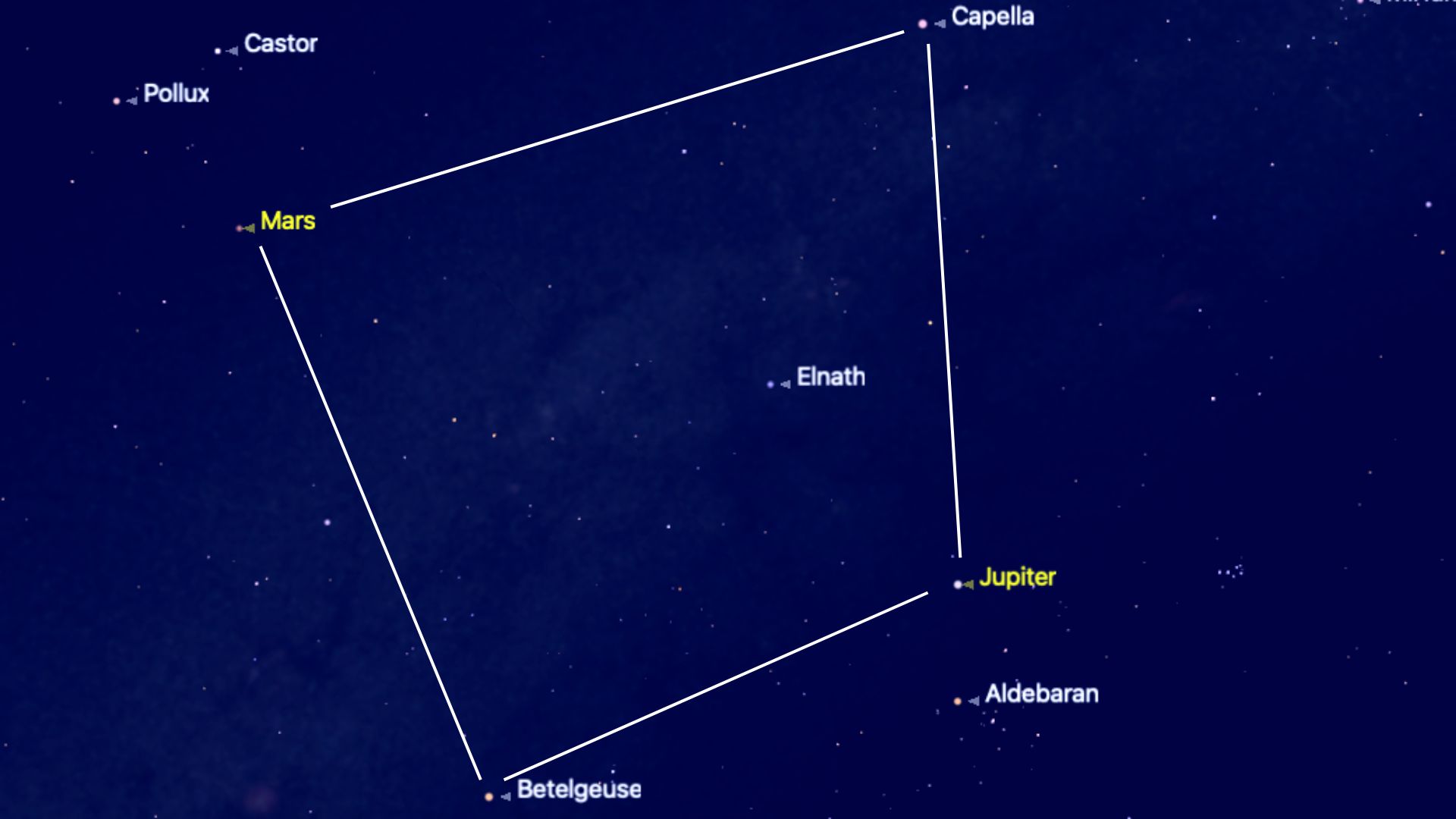
High in the sky this month, you'll find a bevy of bright stars, one of the brightest of which is Capella. Known as the "Goat Star" in antiquity, Capella is the brightest star in the constellation Auriga, the charioteer. This week, It can be found making a square shape with Betelgeuse in Orion and the planets Jupiter and Mars. — Jamie Carter
Monday, Feb. 24 — Saturn and Mercury (after sunset)

Here's a great excuse to watch a sunset at the beach. If there are clear skies where you are, find yourself a west-facing coast — or anywhere else that gives you a good view low to the western horizon — and remain in place once the sun has set. Bright Venus, at magnitude +4.9, will become almost instantly visible high above the sunset point, but keep your eyes peeled, and you'll see much dimmer Saturn and Mercury, at magnitude 1.1 and 1.2, respectively, barely a degree apart. Saturn will be on the left, and Mercury on the right. — Jamie Carter
Tuesday, Feb. 25 — Mars changes direction (after sunset)
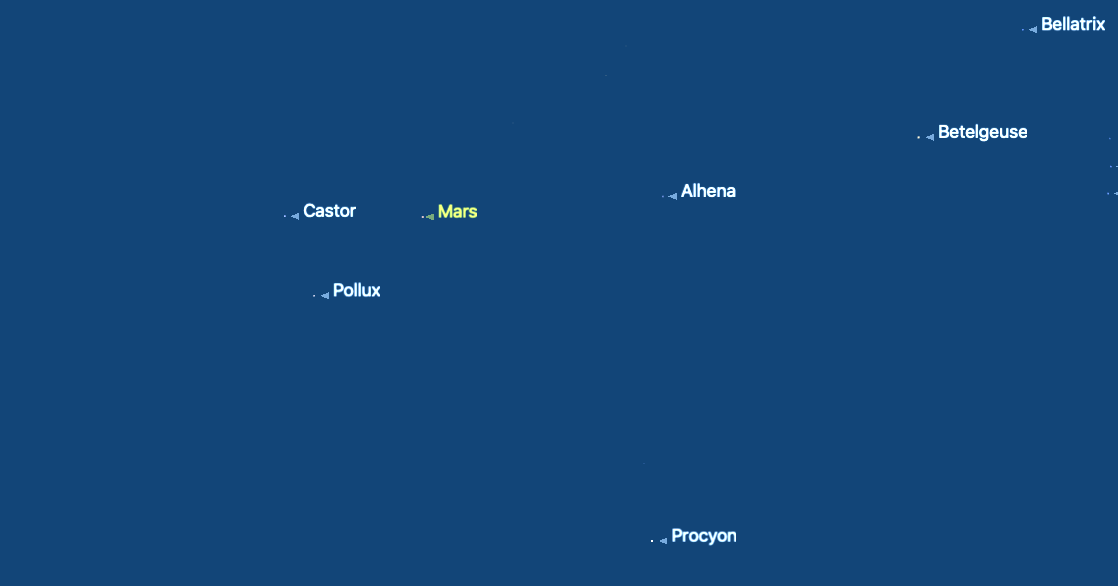
Yesterday, Mars stopped going backward. Since Dec. 6, 2024, it has been appearing to travel westward across the night sky as it brightened, a consequence of its getting very close to Earth. Tonight, that so-called retrograde motion ceases, with the red planet continuing on its apparent prograde path and eastward motion across the stars. It's been moving further into the constellation Gemini, close to bright stars Castor and Pollux. It's there tonight, but starting tonight, it will begin to exit and move back toward the constellation Leo. — Jamie Carter
Wednesday, Feb. 26 — Perseus constellation (after sunset)
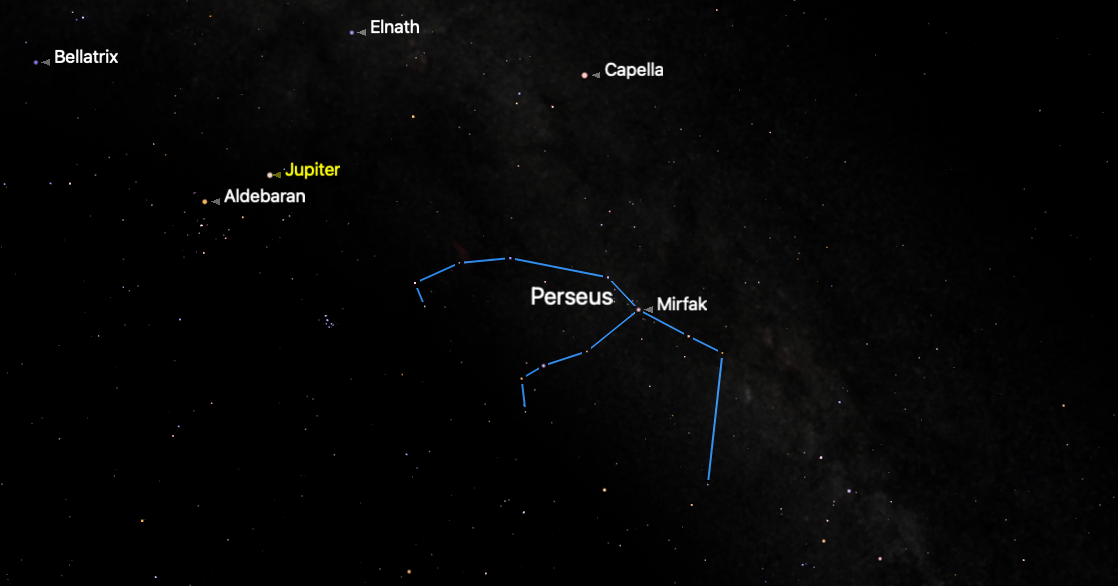
It may be one of the most famous constellations, but Perseus, the hero, is not an easy shape of stars to pick out in the night sky. Go out soon after sunset and find brilliant Venus in the west and bright Jupiter in the east. Perseus can be found roughly halfway between them, above you, but more to the northern side of the night sky as seen from the Northern Hemisphere. A vague V-shape of stars, Perseus features a prominent curve of right stars, with the brightest being Mirfak and Algol, the latter known as a "winking demon" because it's two stars orbiting each other, one of which blocks the other regularly. The demon star follows a precise cycle of brightening and dimming, completing one full pattern every 2 days, 20 hours, and 49 minutes.
In 2024, astronomers using the new Euclid telescope discovered over 1,500 billion intracluster stars outside the 100,000 galaxies in Perseus, appearing to wander the cosmos.
Thursday, Feb. 27 — Jupiter and Aldebaran (after sunset)
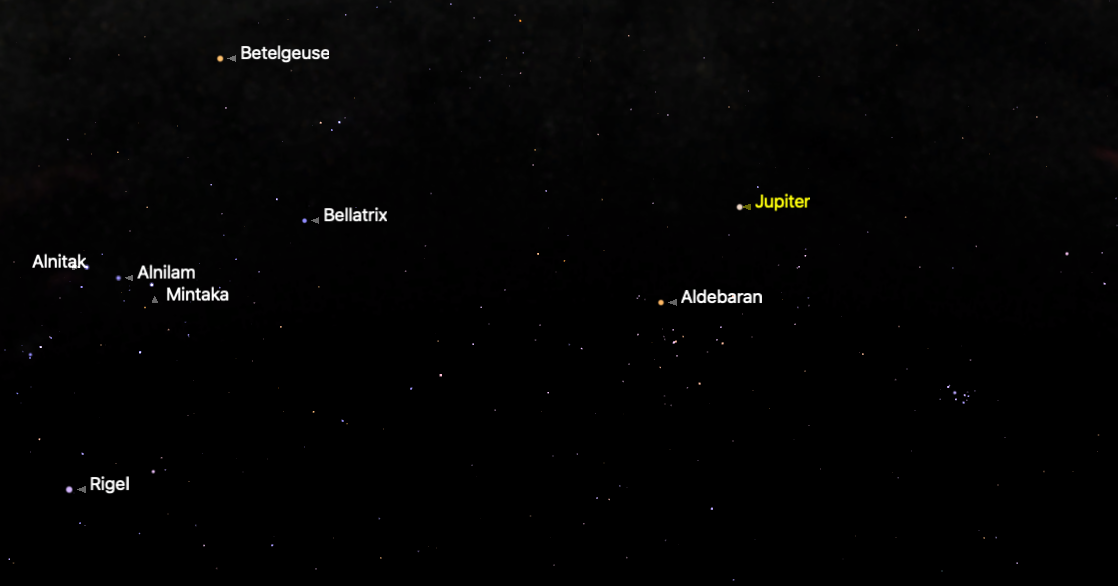
Shining brightly at magnitude -2.3, Jupiter still dominates the post-sunset sky in the east. This week passes close to Aldebaran, the brightest star in the constellation Taurus, the bull. This magnitude 0.8 star, an orange supergiant star, is known as the 'eye of the bull,' but its name translates as "the follower" in Arabic because it's positioned close to the Pleiades open cluster of stars, which you'll see close to Aldebaran and Jupiter. — Jamie Carter
Night sky for the weekend
Saturday, March 1 — Crescent moon and Venus (after sunset)
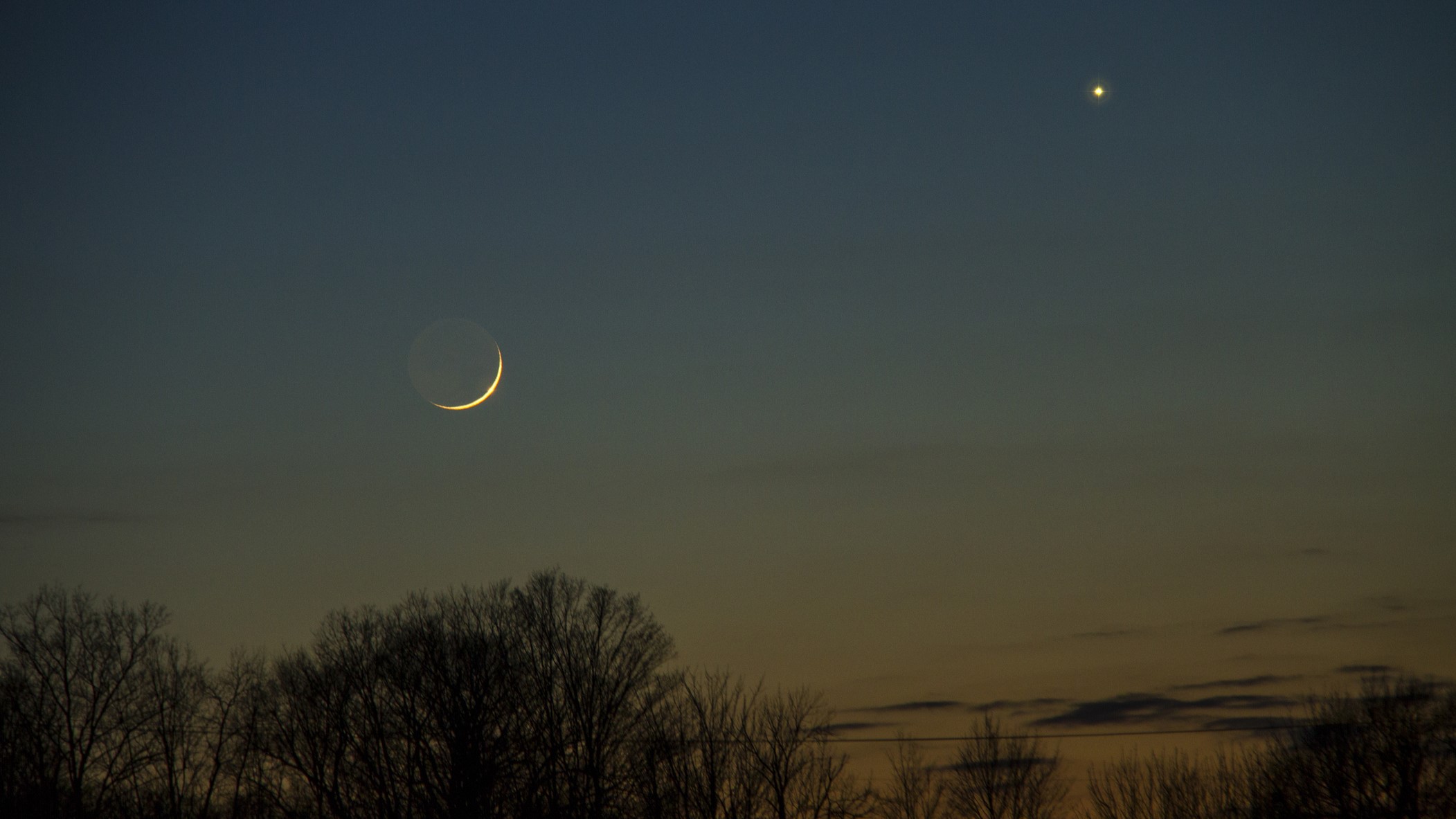
Look west for a slim crescent moon as soon as it is dark. It will be about 6%-illuminated, so it won't be easy to see below Venus. Patience will be required (and perhaps a pair of binoculars). Venus will be shining at a brilliant magnitude of -4.8. — Jamie Carter
Sunday, March 2 — Crescent moon and Venus (after sunset)

Here's an easier target than last night — a crescent moon higher in the sky alongside a brilliantly bright planet. As soon as it gets dark, look due west, and you'll quickly see a 12%-illuminated waxing crescent moon above Venus. Look carefully at the dark side of the moon's limb, and you may see some subtle light. That's Earthshine, sunlight reflected by Earth's clouds and remaining ice caps onto the lunar surface. — Jamie Carter
Monday, March 3 — Crescent moon, Venus and Mercury (after sunset)
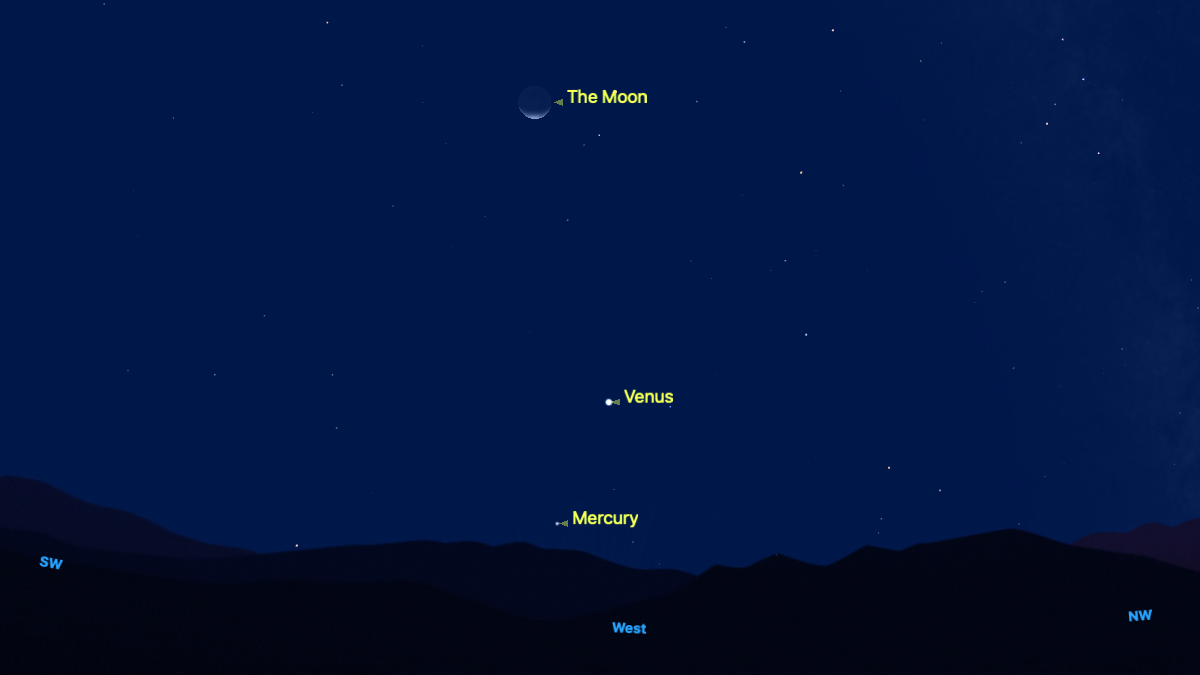
Look west immediately after sunset, and you may have a chance of seeing tiny Mercury poking above the horizon. It’s rising, so it will become easier through Saturday, March 8, but tonight is a good time to start looking for it. However, the big drawcard in the post-sunset night sky is still Venus, which tonight shines brightly at mag. -4.4 immediately above Mercury. Don’t take views of Venus for granted because it’s now rapidly sinking into the horizon and will soon be gone from the post-sunset sky. A 20%-illuminated crescent moon will be above the pair, with Jupiter beyond. — Jamie Carter
Tuesday, March 4 — Equinox auroras (after sunset)

With the vernal equinox coming up in a few weeks, the time is now for a possible “equinoctal effect” on the northern lights. With Earth’s axis perpendicular to the sun and its solar wind — a stream of charged particles — Earth’s magnetic field is slightly weakened. The result is that the solar wind has more of an effect on Earth’s magnetosphere—the region of space where its magnetic field dominates — often causing a noticeable uptick in aurora. According to the Russell-McPherron Effect, cracks also open up in the magnetosphere, letting in more charged particles. In short, if you experience any geomagnetic storm predicted by NOAA this month, it could well be stronger and cause more aurora than is typical. — Jamie Carter
Read more: Why March is the best month to see the northern lights
Editor's note: Keep up to date with the latest northern lights forecasts and alerts with our aurora live blog. There could be some unsettled conditions over the coming days!
Wednesday, March 5 — Moon in the Pleiades (after sunset)
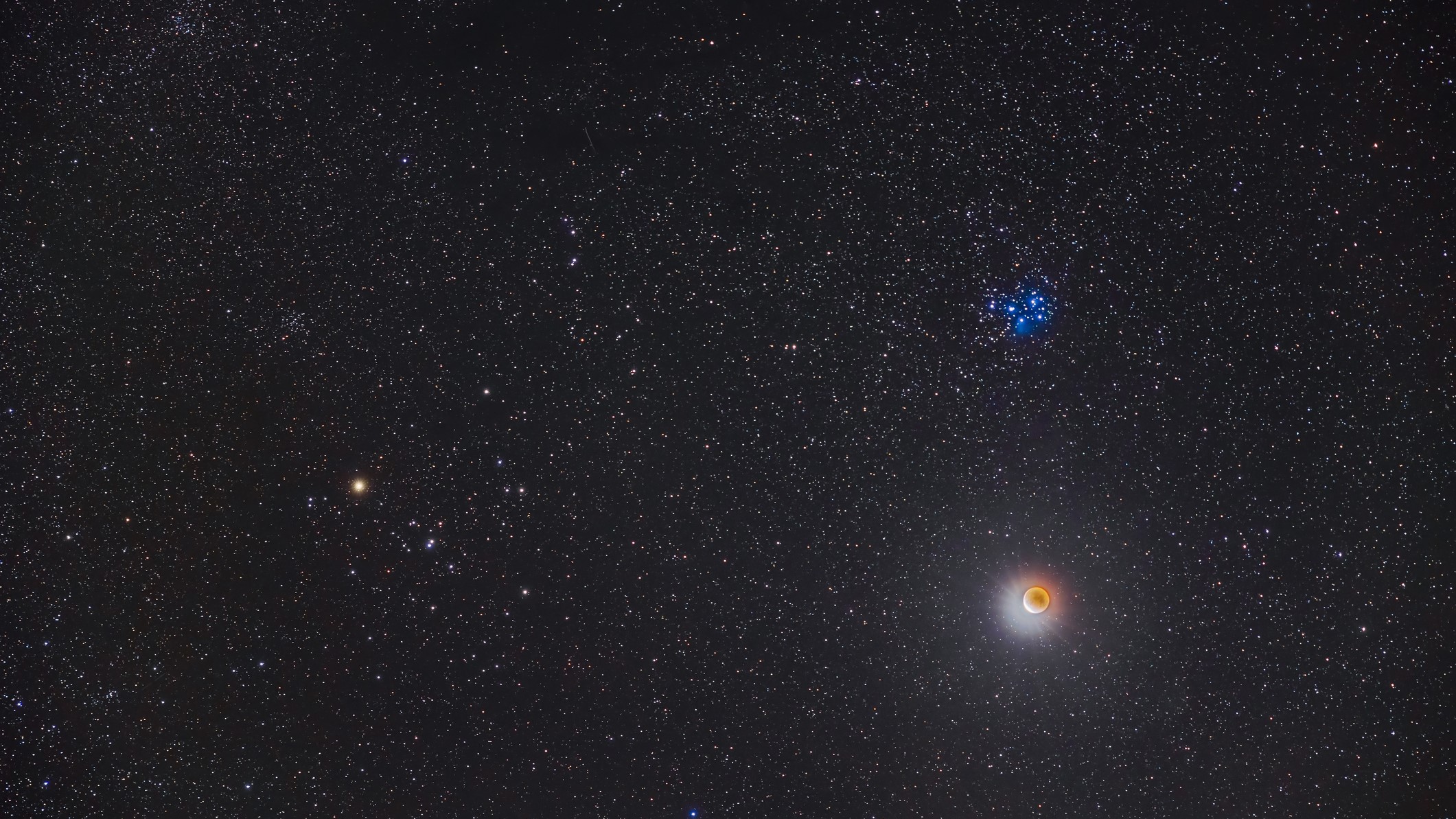
The moon will move across or close to the Pleiades open cluster of stars during every orbit of Earth this year. Tonight, Ash Wednesday, isn't one of the best in 2025 since it passes just half a degree from the Pleiades during daylight in North America. By the time the sky is dark, a 42%-illuminated waxing crescent moon will sit a couple of degrees above the Pleiades, about halfway between it and Jupiter in the constellation Taurus. The Pleiades will be positioned midway between the moon and Uranus beneath, though the seventh planet will be near-impossible to see unless you have incredibly dark skies (and excellent eyesight). — Jamie Carter
Thursday, March 6 — First Quarter Moon close to Jupiter (midday-midnight)
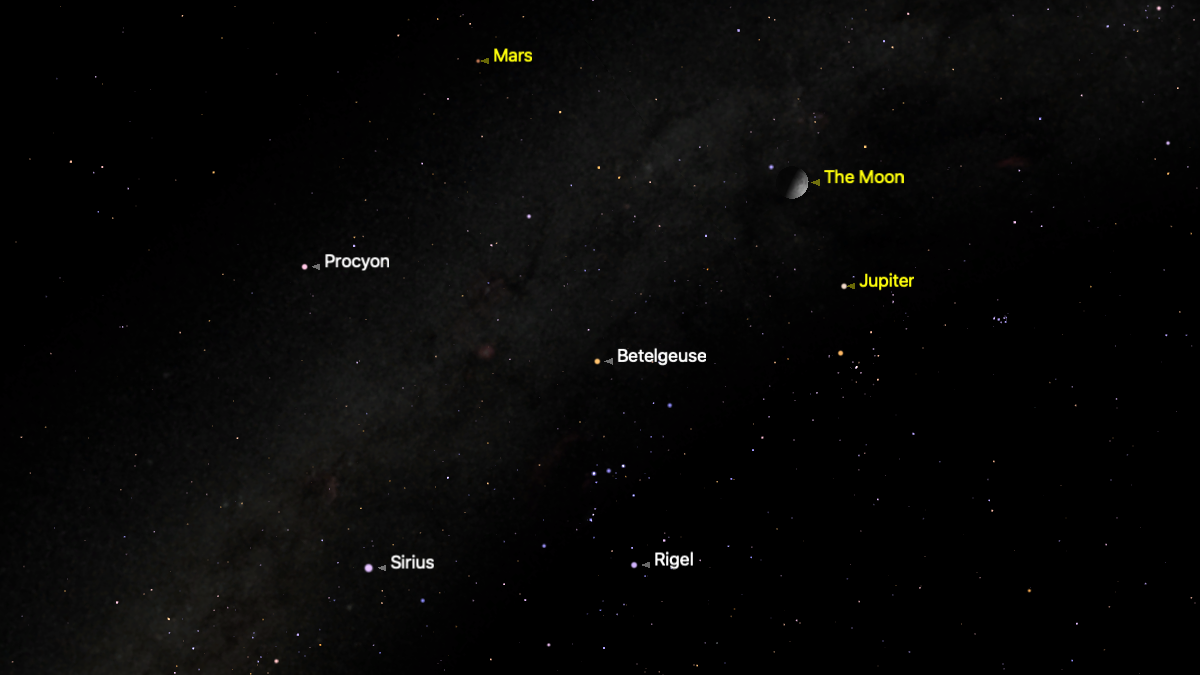
Tonight, it’s the first quarter moon, traditionally the time stargazers stop looking for faint constellations and objects and instead focus on looking for bright stars and planets. That’s because the moon’s visibly half-lit surface begins to reflect a lot of glare around the night sky.
Lucky for stargazers, the moon — shining brightly in the south after sunset — is tonight surrounded by spectacularly bright objects, with Jupiter just five degrees from it and Mars slightly farther to the left. Below, you’ll see the bright stars Betelgeuse and Rigel on either side of Orion’s belt, with Sirius — the brightest star in the night sky — below, above due south, with Procyon above. — Jamie Carter
Night sky for tonight and the weekend
Friday, March 7 — The most northerly moon (after dark)

Tonight, you'll see a similar scene to last night, with a waxing gibbous moon — now 64%-lit — roughly between Mars, on its left, and Jupiter, on its right. Just beyond Mars are Pollux and Castor in Gemini, while just below Jupiter is Aldebaran in Taurus. However, there is also something slightly unusual about the moon tonight, which will reach its northernmost position in 2025. — Jamie Carter
Saturday, March 8 — Mercury highest in 2025 and Moon and Mars in conjunction (after dark)
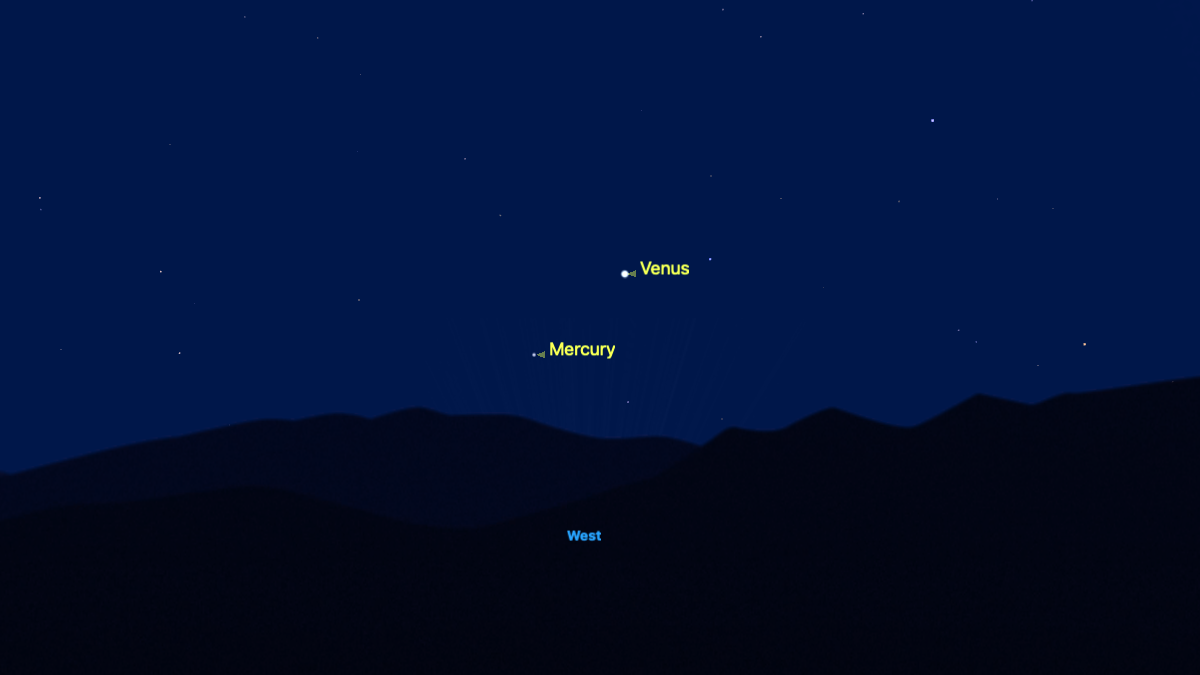
If you're going to look for Mercury once in 2025, make it tonight. Today, the inner planet Mercury reaches its easternmost elongation, about 18 degrees from the sun, which puts it at its highest altitude in the post-sunset sky. It's only going to shine at -0.3 magnitude, but it will be worth looking for above due west for about an hour after sunset. Venus will shine above it. Once you've spotted it, about-turn to face southeast for the lovely sight of a 74%-lit waxing gibbous moon just a couple of degrees from reddish-golden Mars. — Jamie Carter
Sunday, March 9 — Cassiopeia vs the Big Dipper as a clock (after sunset)
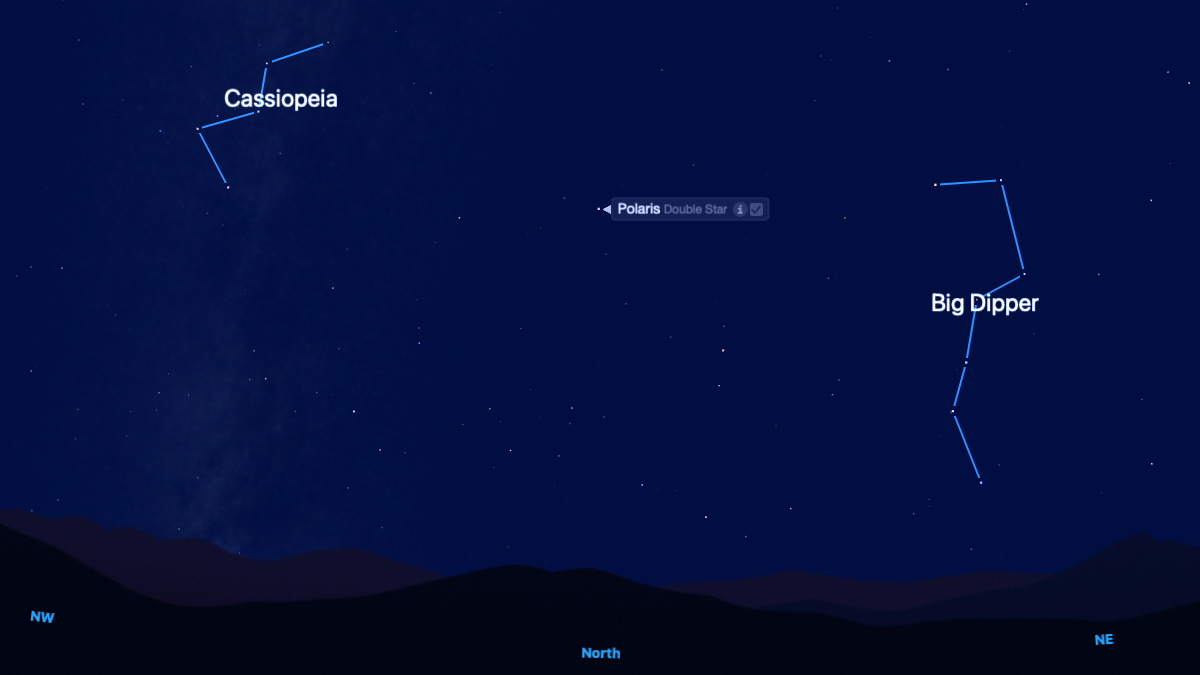
This morning at 02:00 a.m., local time saw the clocks go ahead (“spring toward, fall back”) for one hour in North America, signaling the beginning of daylight saving time. Fittingly, it’s also a good night to see another seasonal clock in the sky. Look due north after sunset. On the left, you’ll see the W-shape of stars called Cassiopeia, and on the right will be the seven stars of the Big Dipper, the latter part of the Ursa Major constellation. After sunset in March, they are positioned exactly as you see them, but in September, they’re on opposite sides. That’s because both are circumpolar constellations. Since they are on either side of Polaris, the North Star (which you can see shining between them), their positions shift throughout the night due to Earth’s rotation. — Jamie Carter
Monday, March 10 — Venus and Mercury in conjunction (after sunset)
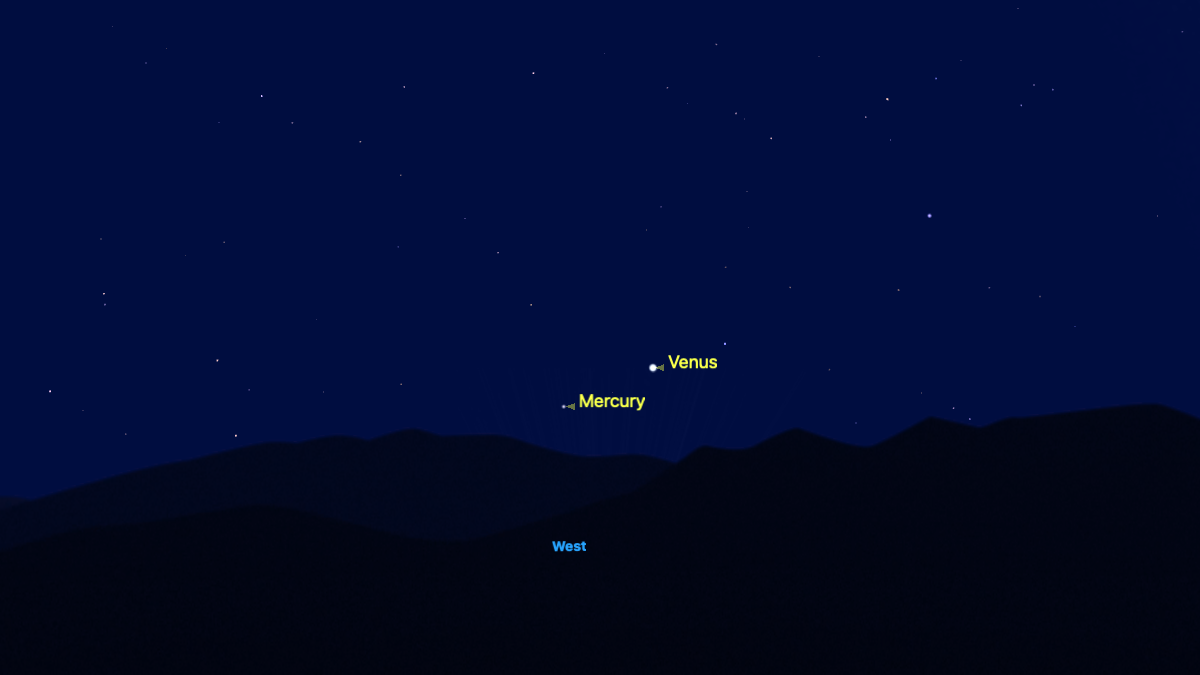
It’s time to say goodbye to Venus. After many months of it dominating the post-sunset night sky, it’s on the verge of disappearing. However, it goes out with a flourish, paired with its little sister Mercury tonight after sunset. Look due west for the two inner planets, but do it quickly because they’ll only be visible for about 45 minutes from 30 minutes after sunset. You can try for the same sight for the next week or so, but it will get more challenging each night as both planets head into the sun's glare. — Jamie Carter
Tuesday, March 11 — Moon and the ‘Little King’ star (after sunset)
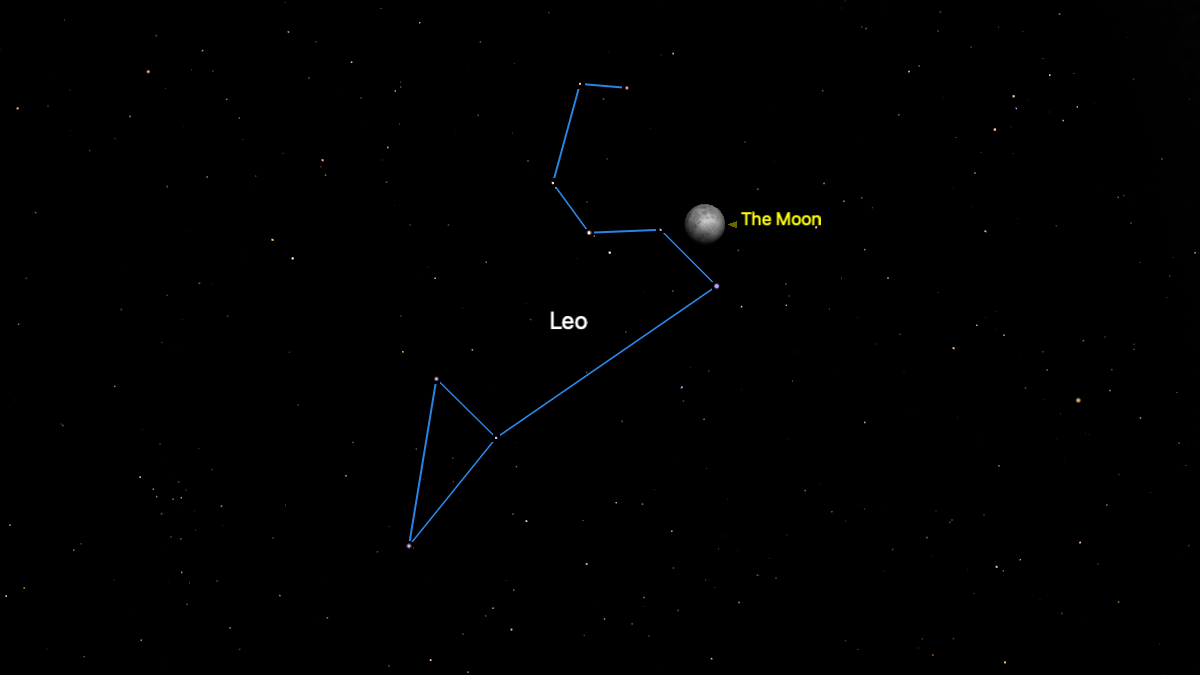
Tonight’s almost full moon, now 95%-illuminated, shines just a couple of degrees from Regulus in the constellation Leo, one of the 20 brightest stars in the night sky at mag. +1.3. Known as the "Heart of the Lion," Regulus means "little king" in Latin. It was deemed a "Royal Star" by the Babylonians and Persians, along with Aldebaran, Antares and Antares. About 79 light-years from Earth, Regulus is rising in the eastern sky shortly after sunset every night this month — a sure sign that spring is coming in the Northern Hemisphere. — Jamie Carter
Wednesday, March 12 — Find Polaris, the ‘North Star’ (after sunset)
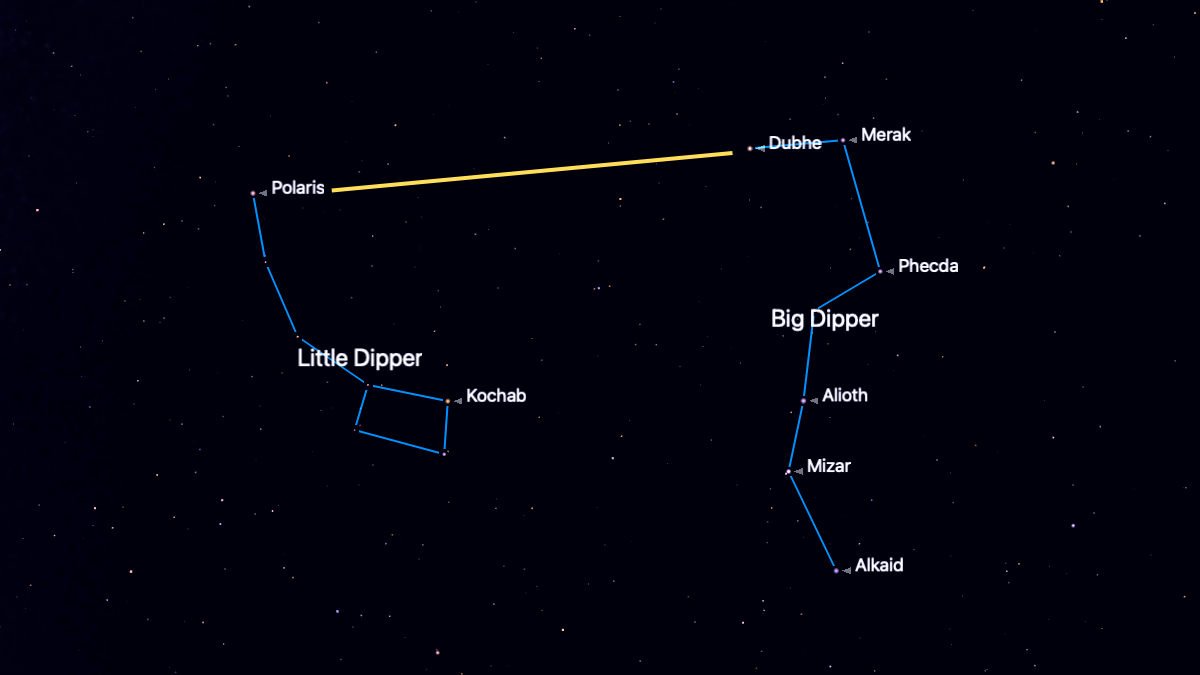
Can you find the "North Star?" Earth's northern axis points at Polaris, hence its name, each night, as seen from the Northern Hemisphere. It appears never to move for any one location — and it's easy to find. Tonight, the Big Dipper is in the northeast, its bowl highest in the sky a couple of hours after dark. Just find the two stars at the outer edge of the Big Dipper's bowl—Dubhe and Merak. Now go in a straight line connecting these two stars, traveling to the left (toward due north) about five times the distance between them and you get to Polaris at the tip of the handle of the smaller, dimmer Little Dipper. The altitude of Polaris above the northern horizon is hugely valuable to navigators because it corresponds to the observer’s latitude on Earth. The farther north you travel from the equator, the higher it becomes until you reach the North Pole, where Polaris will be directly above you. For example, if Polaris is 40 degrees above the horizon, you're at 40 degrees latitude. You can measure the altitude of Polaris by using an outstretched arm against the sky—three fingers are equivalent to five degrees, and a fist is 10 degrees. — Jamie Carter
Thursday, March 13 — Total lunar eclipse (after dark)
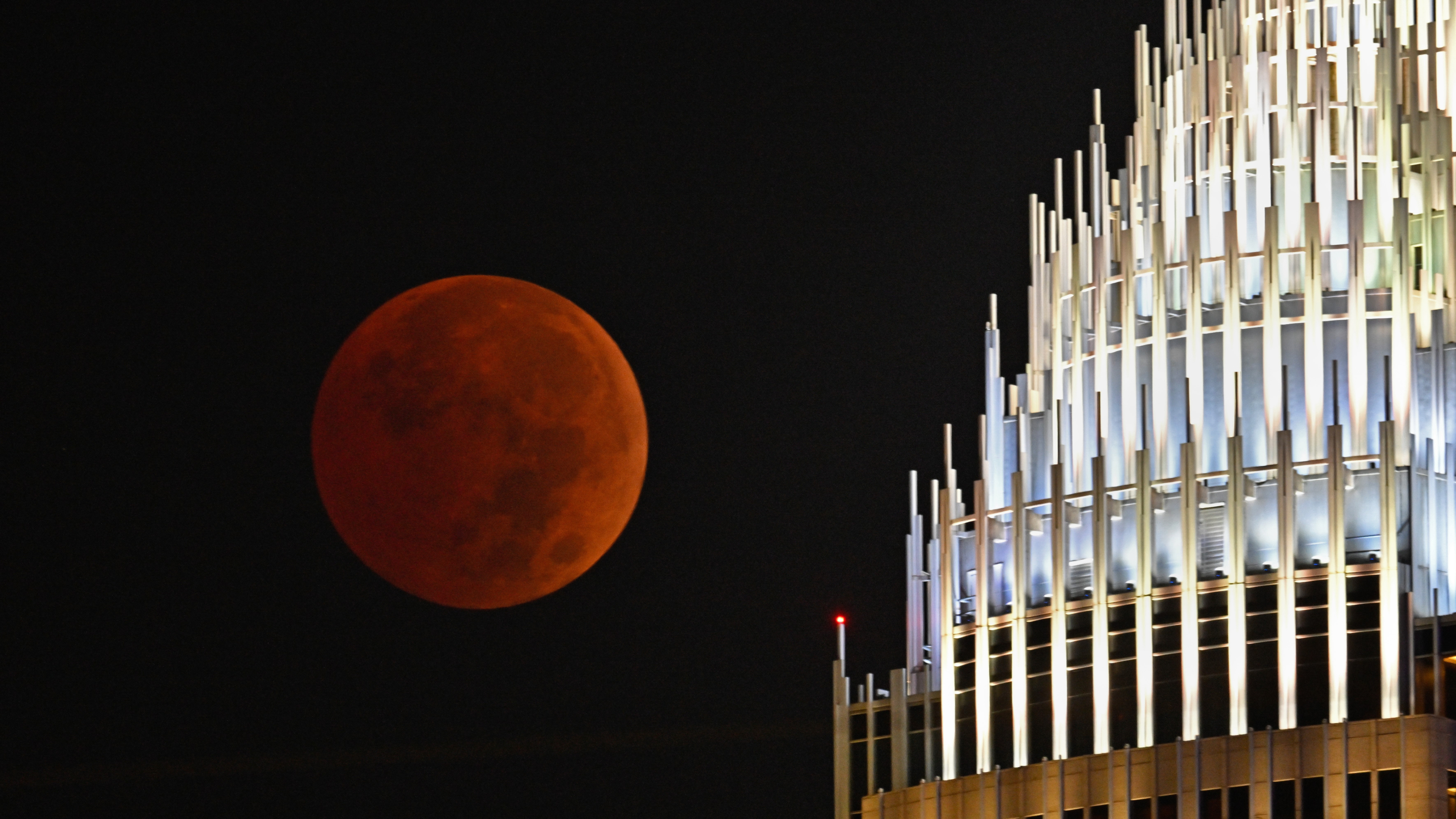
With no total lunar eclipse visible since 2022, stargazers will be out in force for this relatively rare and always spectacular event. It’s arguably one of the most enjoyable and relaxing cosmic spectacles of all, with the lunar surface turning a reddish-orange-pinkish color for a leisurely 65 minutes.
Read more: What time is the 'Blood Moon' total lunar eclipse tonight?
Although it's visible in part from the entire night side of Earth, the best views will be from North America, from where totality —a.k.a. the “blood moon” moment—will occur at these times across North America:
— 2:26-3:31 a.m. EST on Friday, March 14, 2025
— 1:26-2:31 a.m. CST on Friday, March 14, 2025
— 00:26-1:31 a.m. MST on Friday, March 14, 2025
— 11:26 p.m. on PST Thursday, March 13, 2025, to 00:31 a.m. on Friday, March 14, 2025
— 10:26-11:31 p.m. AKST on Thursday, March 13, 2025
— 8:26-9:31 p.m. HST on Thursday, March 13, 2025
However, it’s worth being outside about 75 minutes before these times to see the partial phase, where Earth’s shadow creeps across the lunar surface. In Europe, the best views will be had just before moonset on Friday, March 14, 2025.
You can watch the lunar eclipse online here on Space.com and catch up with the latest lunar eclipse news and events with our lunar eclipse live blog.
Read more: Total lunar eclipse March 2025 — When and where to see the next 'Blood Moon' lunar eclipse
Night sky for tonight and the weekend
Friday, March 14 — Venus as a crescent (dusk)
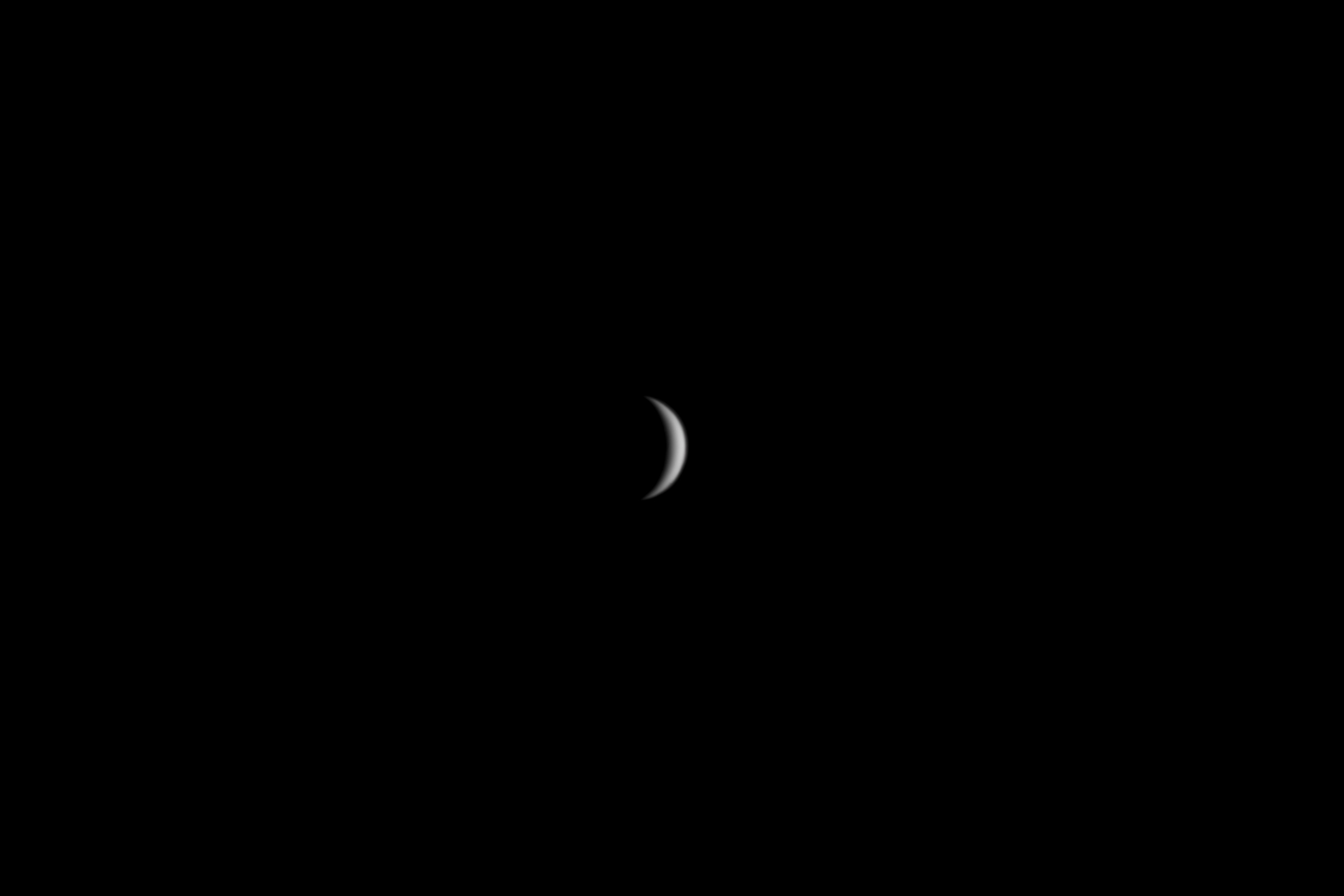
It's only four days since Venus and Mercury were in conjunction, but there’s an extra reason to grab any glimpse of Venus — before it’s gone completely from the post-sunset night sky. Get as low a view of the western horizon as possible, and you may see bright Venus close to a dim Mercury to its left. Both inner planets have phases — just as the moon does, as seen from Earth — because they are inner planets. Venus is barreling towards Earth, getting closest next week as it travels through the sun’s glare and transits to the pre-dawn morning sky. It’s now a mere 4%-lit, a lovely sight in a small telescope or a large pair of binoculars just after the sun has set. Venus remains so bright, despite being only slightly illuminated, because it’s close to Earth — and its disk relatively larger in our sky — but also because it’s covered in a layer of very reflective clouds. — Jamie Carter
Saturday, March 15 — Zodiacal light (after sunset)

From today until the end of the month, it is a good time to be somewhere exceptionally dark at sunset. With the near-full moon out of the immediate post-sunset sky—and rising about 50 minutes later each night—the stage is set for a display of zodiacal light. Sunshine reflects dust in the solar system, and zodiacal light is seen as a subtle triangle of light during twilight above the sunset point on the western horizon. You’ll need to be somewhere as far from light pollution as possible.
Sunday, March 16 — Moon in conjunction with Spica (late at night)

As the bright waxing gibbous moon rises in the east a few hours after sunset, bright star Spica will shine a few degrees underneath it. The 16th brightest star in the night sky, Spica, is the brightest star in the constellation Virgo. Its rising is a sure sign that spring is coming to the Northern Hemisphere. About 250 light-years from the sun, Spica is a double-star system, with two stars that orbit each other every four days. — Jamie Carter
Monday, March 17 — The Pleiades on St. Patrick's Day

It's one of the most spectacular naked eye sights in the winter night sky, but the Pleiades — also called the Seven Sisters and M45 — will soon sink into the western horizon shortly after sunset.
The stars of the Pleiades feature in the lore of many cultures, often symbolizing good fortune, navigation and protection. The ancient Greeks linked its appearance to agricultural prosperity; in Japan (where it’s called Subaru), it's related to guidance and harmony, and in Navajo culture, it's a symbol of unity and order in the universe.
It's also a sight that’s better looked at with the naked-eye than through a telescope.
Read more: The Pleiades: Facts about the "Seven Sisters" star cluster
Tuesday, March 18 — Ursa Major (after sunset)
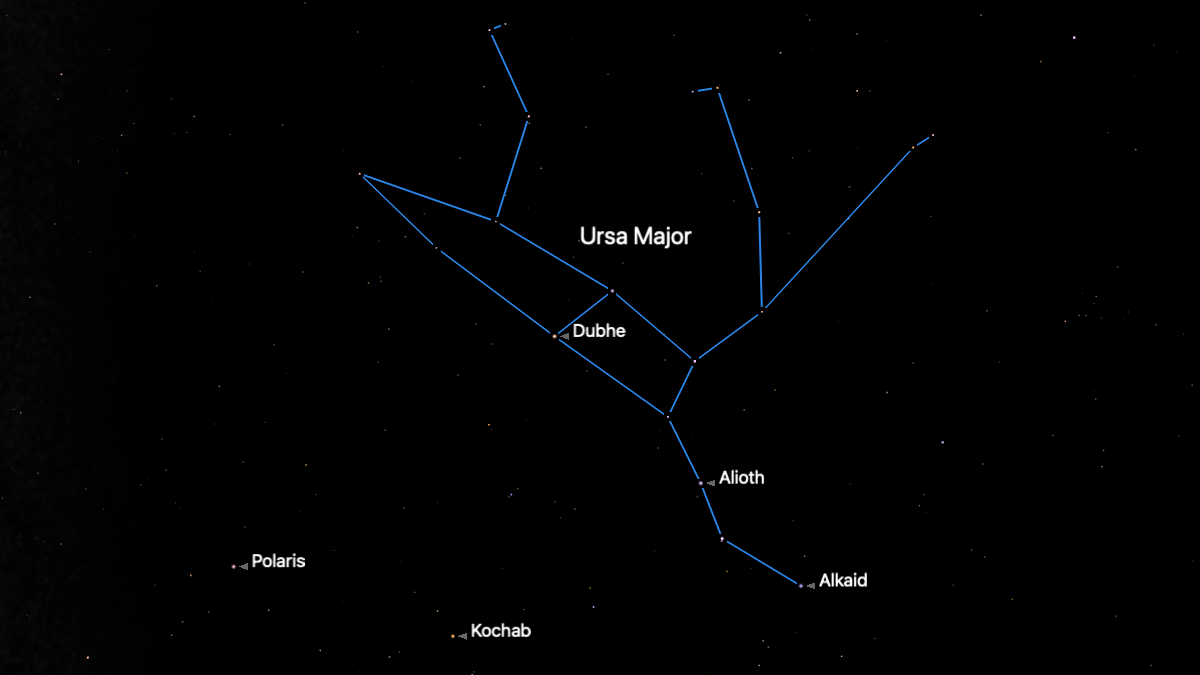
You know how to find the Big Dipper/Plough in the northern sky, but what about its parent constellation, Ursa Major?
The Big Dipper/Plough is seven stars that make the unmistakable shape of a handle and a cup, but it's merely the tail and hindquarters of Ursa Major — the "Great Bear." Trace out the stars of this vast, famous, yet usually ignored constellation, and you'll be one of very few who can.
Late March is the ideal time to do so since Ursa Major is high in the sky, hence the memory aid "spring up, fall down." — Jamie Carter
Wednesday, March 19 — Spring Triangle (after sunset)
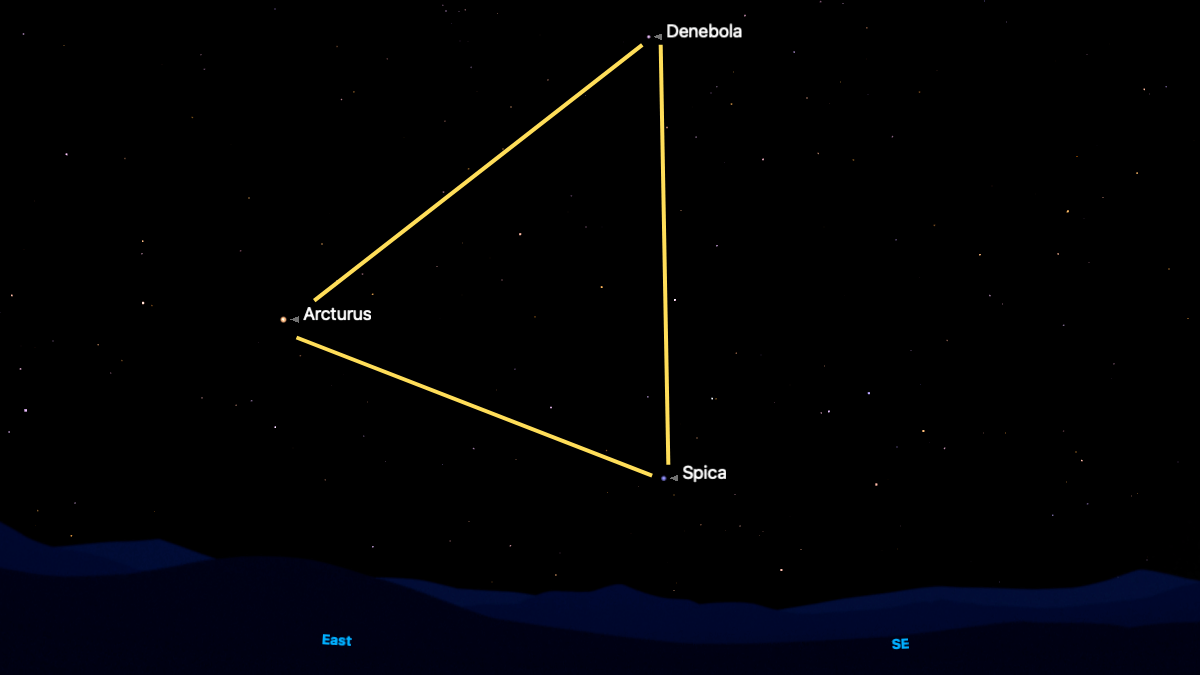
The sky is full of constellations, many of them esoteric and hard to find, but there are plenty of easy-to-locate asterisms — unofficial shapes of stars — that make it much easier to learn the night sky.
Top of the list in March has to be the Spring Triangle, a simple equilateral shape that joins the bright stars Arcturus in the constellation Boötes, Spica in Virgo and Denebola in Leo. You'll find them in the southwest sky. — Jamie Carter
Thursday, March 20 — Vernal equinox (all day)
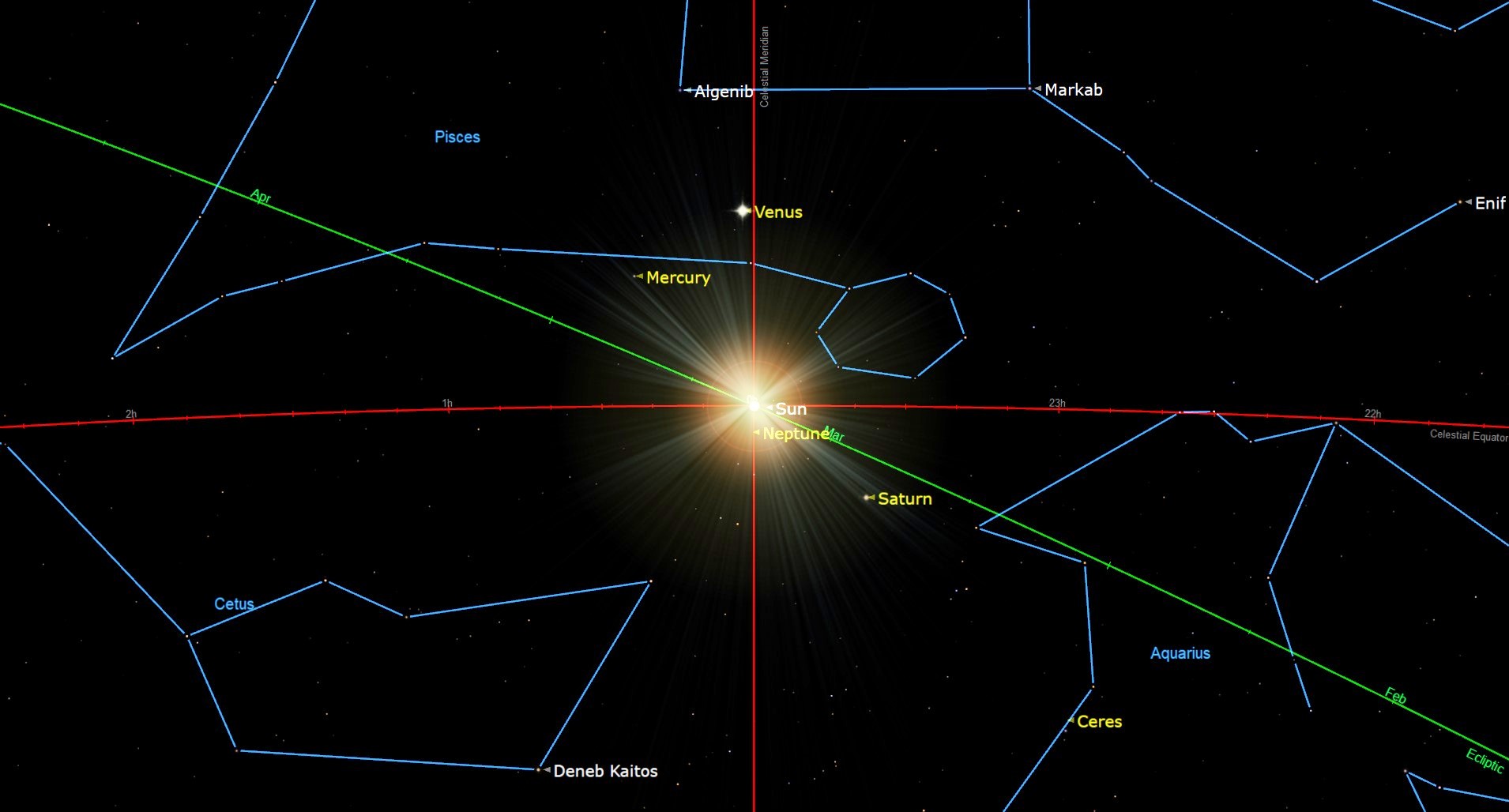
At precisely 09:00 UTC (05:00 a.m. EDT) is the vernal equinox (equi is Latin for equal, nox for night), which sees roughly 12 hours of day and 12 hours of night everywhere on Earth. With Earth’s tilted axis side-on to the sun, it also sees the beginning of spring in the Northern Hemisphere and autumn in the Southern Hemisphere. The sun rises due east and sets due west on the equinox, an event that causes shadows to shift either side, marked by ancient monuments including Chichén Itzá, Mexico, where seven triangular shadows move down the steps of the Pyramid of Kukulcán in an event called the “descent of the serpent.” — Jamie Carter
Read more: Spring equinox 2025: Say goodbye to winter in the Northern Hemisphere today
Night sky for tonight and the weekend
Friday, March 21 — Leo (after sunset)
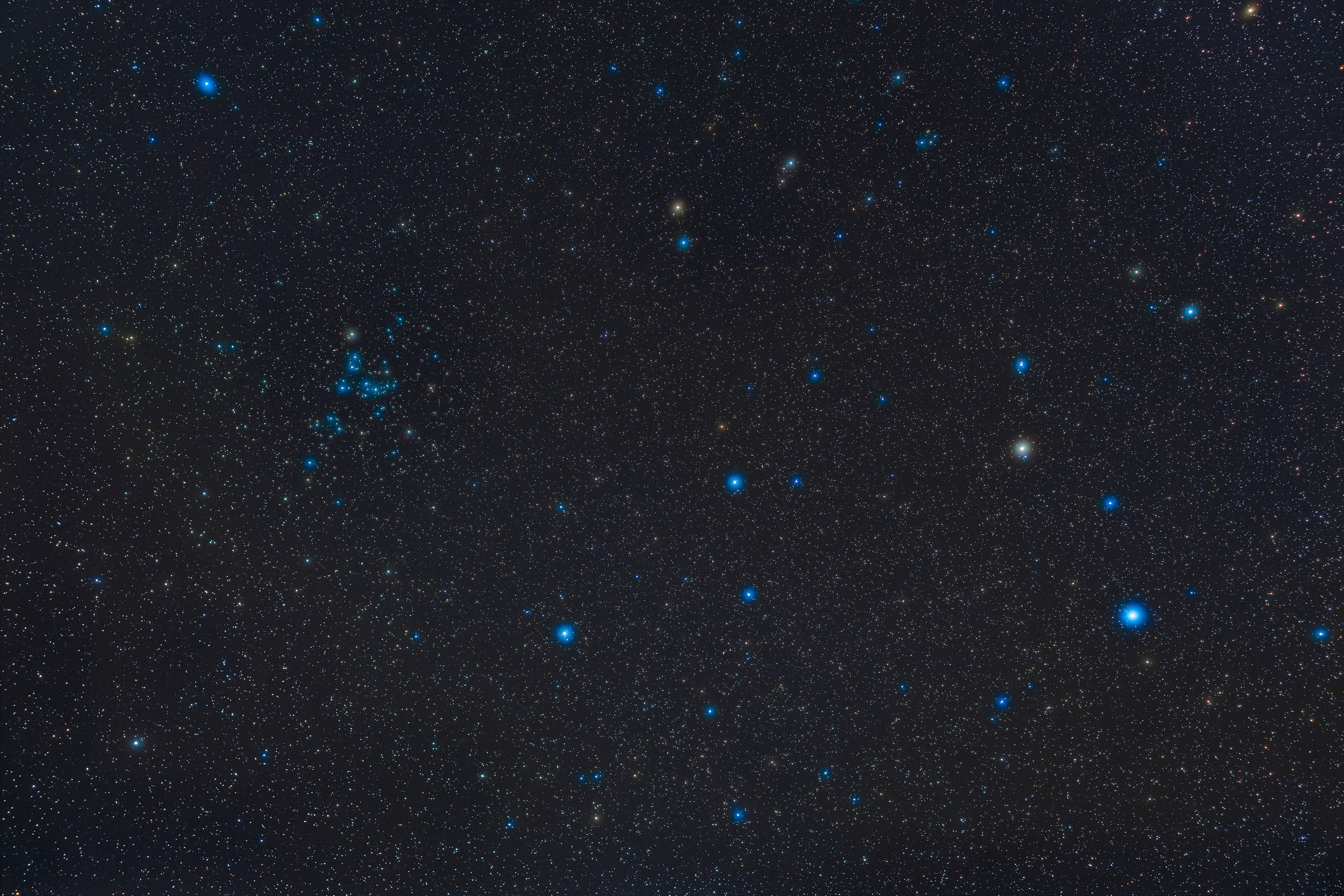
Looking east after dark tonight will raise a question. To the south will be the bright star Sirius, but what’s that backward question mark shape to its left? It’s the "sickle" of Leo, an asterism that makes up the front of the Leo constellation. The dot is Regulus, the constellation’s brightest star, with the tip of the sickle — also the lion's head — a star called Algenubi. At the other end of the constellation is the star Denebola, which represents the tip of the lion’s tail. Although it’s beyond the reach of the naked eye, between Regulus and Denebola is the M96 or Leo I Group of galaxies, a cluster of nine galaxies. When you look in the direction of Leo, you’re looking away from the bright stars of the Milky Way and out into the universe beyond.
Saturday, March 22 — Last Quarter Moon rises in the south (around midnight)
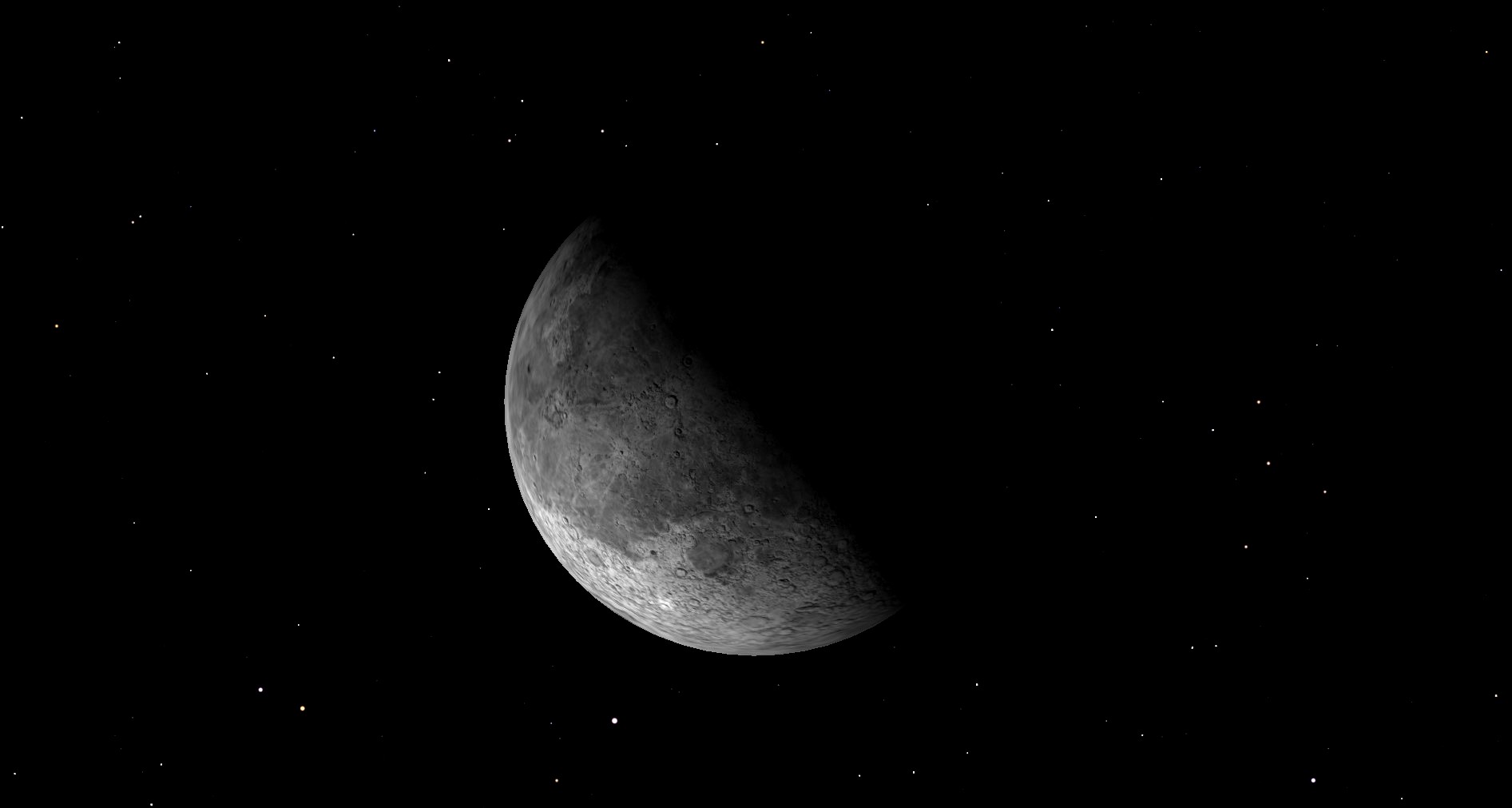
Stargazers, get ready! With the moon today reaching its last (or third) quarter phase, it rises half-lit around midnight. Beyond tonight, it rises as a crescent ever later, clearing the night sky of moonlight. However, there is a good reason to stay up until midnight to watch the moon rise because it will do so at its southernmost declination of 2025.
Sunday, March 23 — Cepheus constellation (after sunset)
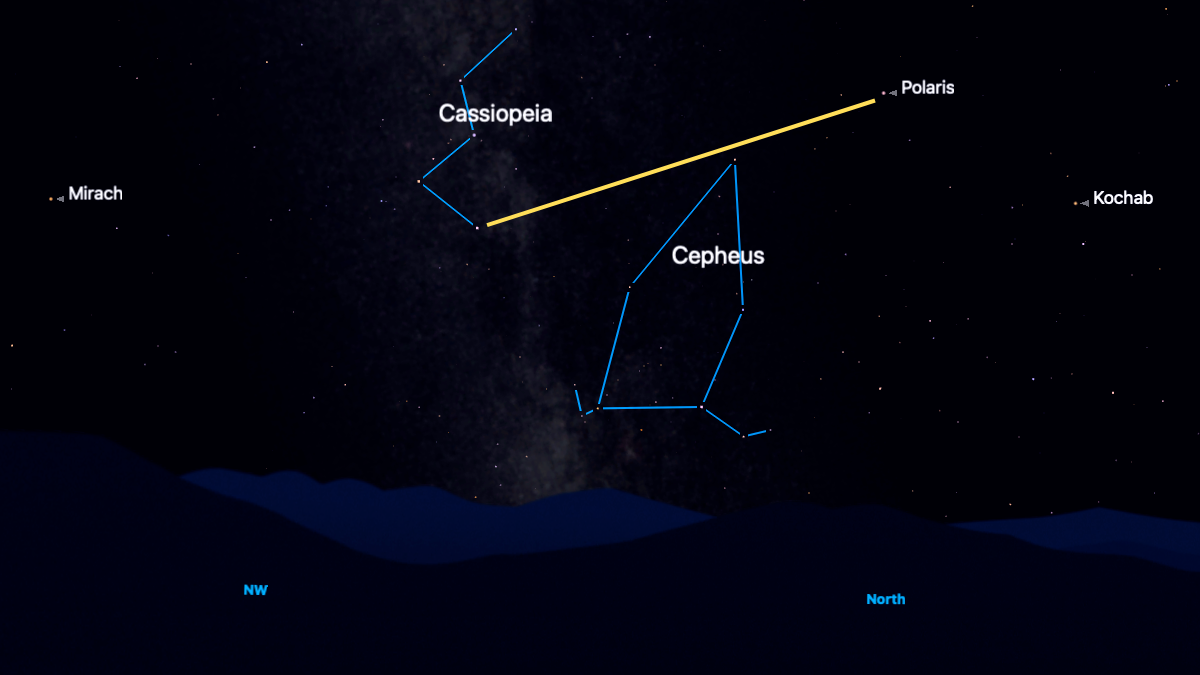
Look north after dark and find the familiar constellations of Cassiopeia and the Big Dipper, with Polaris — the North Star — between them. Now look about halfway between Polaris and the lowest star in Cassiopeia's "W" or "M" for a bright star. This is Errai, a once and future North Star because of the precession of Earth’s axis (a predictable phase cycle that takes place over 22,000 years). It’s also the top of the faint Cepheus constellation, named after a Greek mythological king. It looks more like how a child might draw a house, with Errai as the highest point of a pitched roof. Below it are four stars that roughly form a square. Dark country skies will help with this one. — Jamie Carter
Editor's note: Sign up for our NEW skywatching newsletter "Night Sky This Week" to discover this week's must-see night sky events, moon phases, and stunning astrophotos.
Monday, March 24 — Beehive Cluster (after dark)
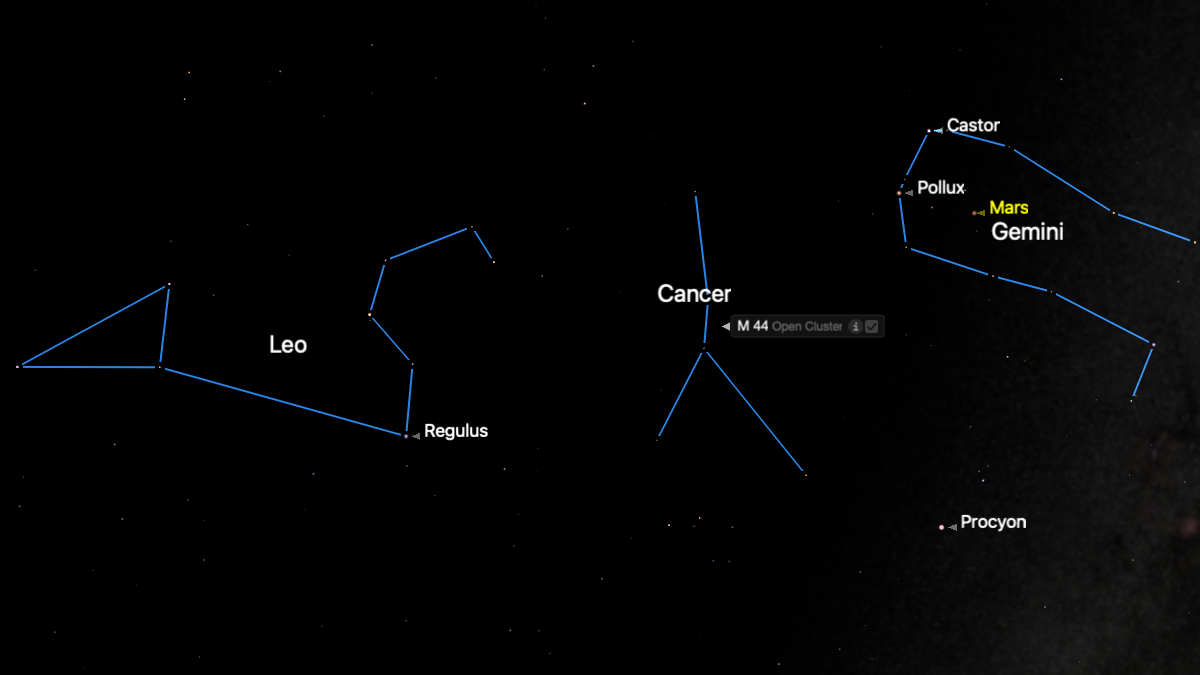
Here's a lovely target to look for, particularly if you have really dark skies. One of the closest and brightest open star clusters visible to the naked eye — but not as easy to see as the Pleiades — the Beehive Cluster (also called M44) is home to hundreds of stars. Greek astronomer Ptolemy described it as the "Little Cloud," which is very much what it looks like. It's in the dim and uninteresting Cancer constellation between Leo and Gemini. — Jamie Carter
Editor's note: Sign up for our NEW skywatching newsletter "Night Sky This Week" to discover this week's must-see night sky events, moon phases, and stunning astrophotos.
Tuesday, March 25 — Corona Borealis (late at night)
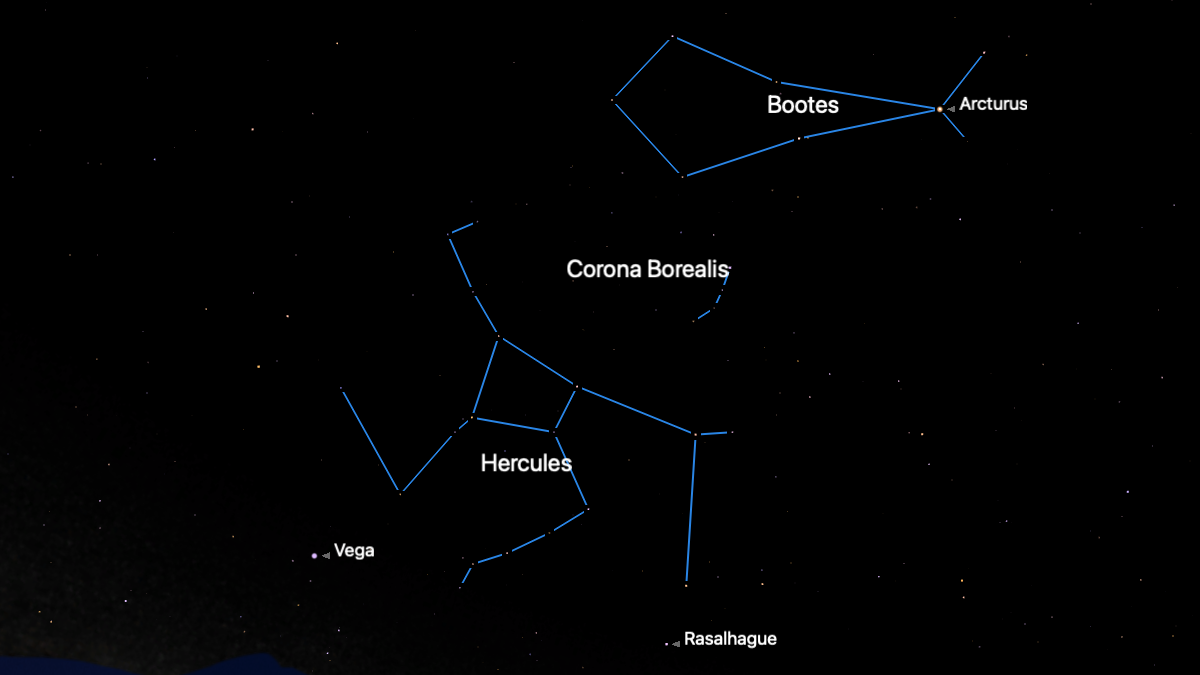
Corona Borealis (Northern Crown) is a slight but beautiful curve of seven stars that’s currently famous as the home of T Coronae Borealis (also called T CrB and the "Blaze Star"), a nova that explodes every 80 years or so. T CrB was expected to explode between April and September 2024 and will likely explode during 2025. To find it between the Boötes and Hercules constellations, look for the Big Dipper in the northern sky and follow its handle to go "“arc to Arcturus," a common star-hop for stargazers. Arcturus is in the east. Now find bright Vega, low in the northeast. Corona Borealis is about halfway between the two. — Jamie Carter
Read more: Is the 'Blaze Star' about to explode? If it does, here's where to look in March
Wednesday, March 26 — winter sky (after dark)
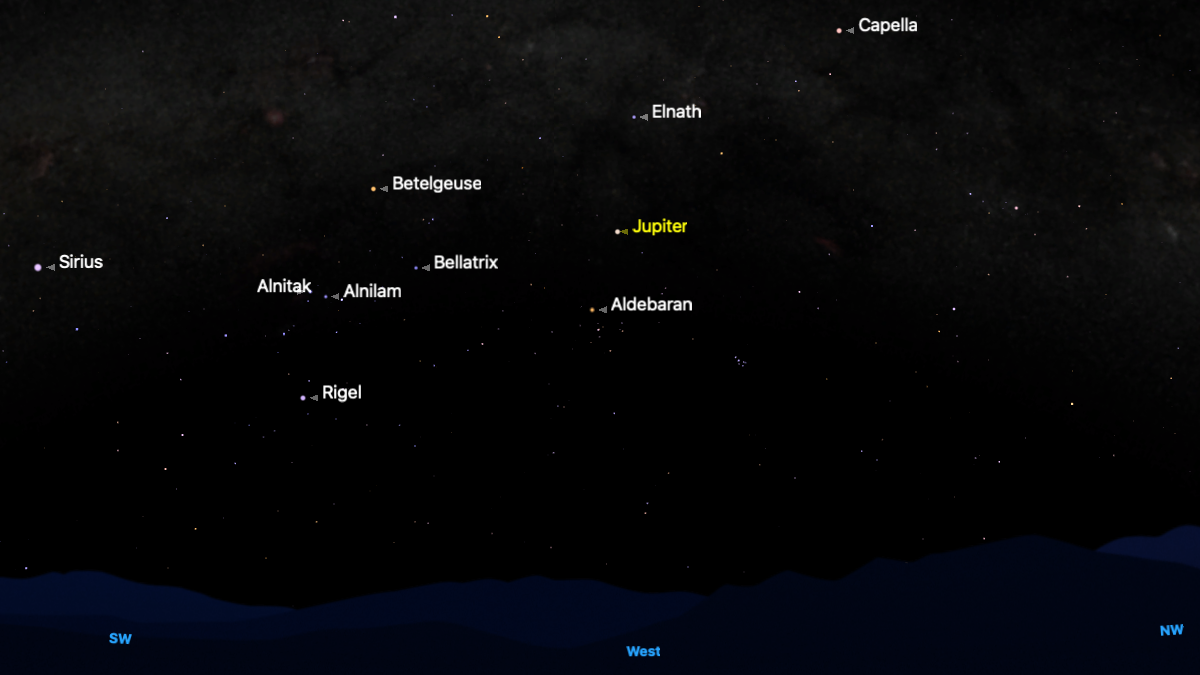
Look west as the sky darkens, and there, laid out in front of you, will be the last vestiges of the winter night sky.
Face west and cast your eyes from the Monoceros constellation in the southwest to the Cassiopeia constellation in the northwest. You’ll see some of the most famous constellations and, as luck would have it, a couple of bright planets laid over a glowing star field — the winter Milky Way. Due west will be Jupiter, with the bright star Aldebaran and the Pleiades star cluster just below it. Above it, to the right, will be Capella in Auriga, and to the left, Mars. To Jupiter’s left will be the bright stars of Orion and, beyond it, Sirius, the brightest star in the night sky. Find somewhere without light pollution and savor a final view before these gems soon sink into the western horizon. — Jamie Carter
Thursday, March 27 — ‘Arc to Arcturus, spike to Spica’ (after sunset)
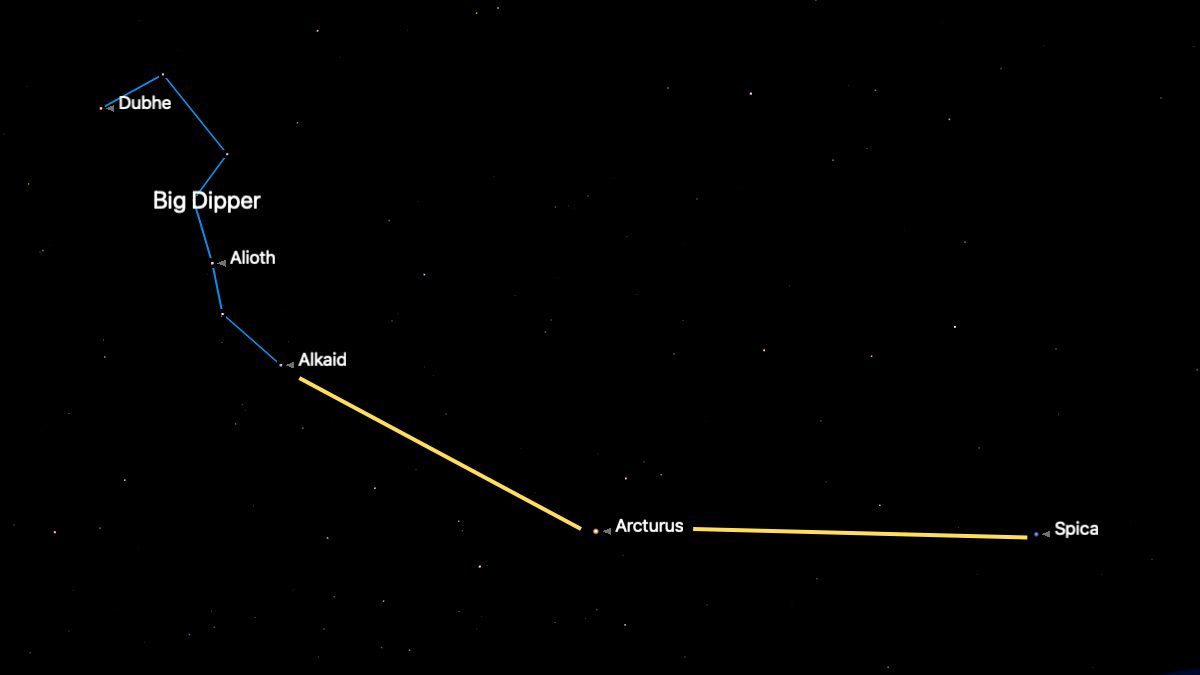
Here’s a good night to spot two very bright stars in the night sky by indulging in one of the most famous star hops. Start with Arcturus, the brightest star in the constellation Boötes, which is now rising in the east as the sun sets in the west — a sure sign that spring has arrived. Find the curve of stars that make up the handle of the Big Dipper/Plough above the northeast, and travel in an arc until you come to a very bright reddish, bright star. That’s Arcturus, the fourth brightest in the night sky, whose name means “Guardian of the Bear” since it follows Ursa Major (location of the big Dipper/the Plough) across the sky. Now go across the horizon to Spica, a bright blueish star in Virgo, another springtime star in the Northern Hemisphere. — Jamie Carter
Night sky for tonight and the weekend
Friday, March 28 — the Winter Triangle

Here's another final hurrah for a staple of the winter night sky in the Northern Hemisphere — catch it while you can! Look to the south after dark, and you’ll easily spot Sirius, the brightest star in the night sky, pointed at by the three stars of Orion's Belt nearby. To the upper-left of Sirius is Procyon in Canis Minor, and to its upper-right is Betelgeuse in Orion. As luck would have it, you can go equidistant beyond Procyon to Mars and from Betelgeuse to Jupiter. — Jamie Carter
Saturday, March 29 — Partial solar eclipse (sunrise through mid-morning)
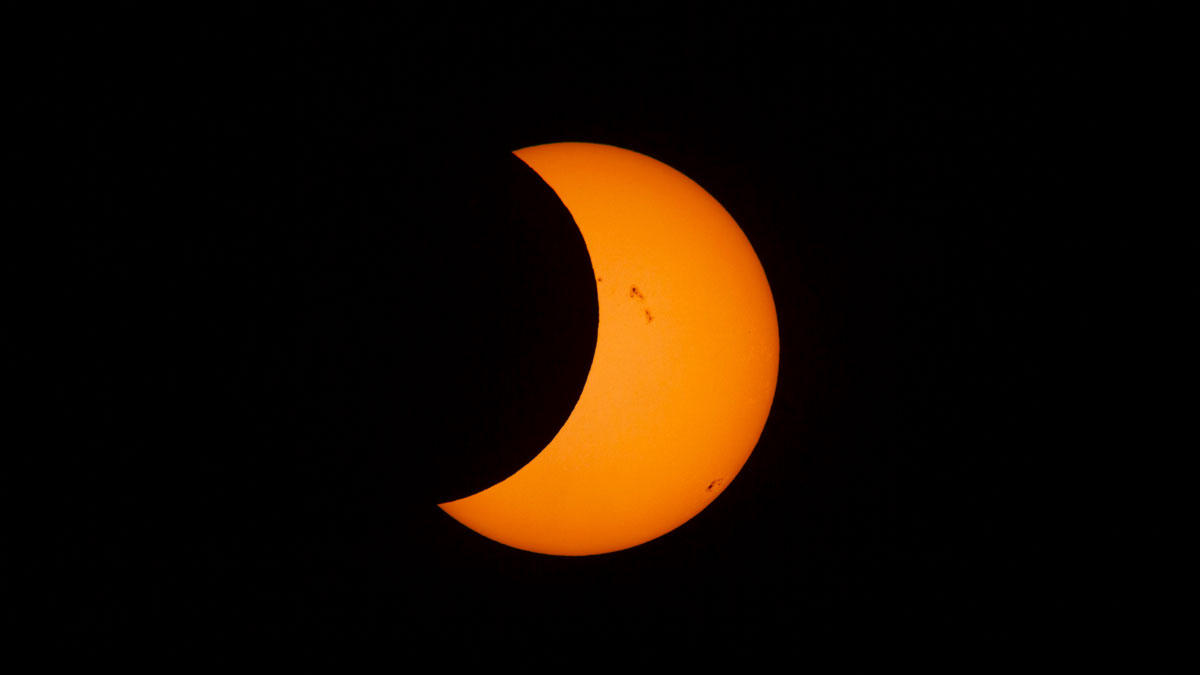
Here comes a partial solar eclipse for the entire western hemisphere north of the equator. It will be visible at sunrise from eastern North America and in mid-morning across Western Europe, with the former seeing as much as 94% of the sun blocked by the moon and the latter a lot less.
Those along the eastern coast of North America, specifically northeastern U.S. states (such as New England and Maine) and eastern and southeastern Canada (Quebec and New Brunswick) are on the sunrise line. It's taking place exactly one lunar year (12 orbits of the moon around Earth) since a total solar eclipse across North America on April 8, 2024. Everyone will need proper eye protection — eclipse glasses and solar filters for all cameras and binoculars — at all times. — Jamie Carter
Editor's You can also keep up with the latest solar eclipse news and events with our solar eclipse live blog.
Related:
— What time is the partial solar eclipse on Monday?
— Partial solar eclipse 2025 livestreams: Watch online for free
Sunday, March 30 — Slimmest crescent moon (after sunset)
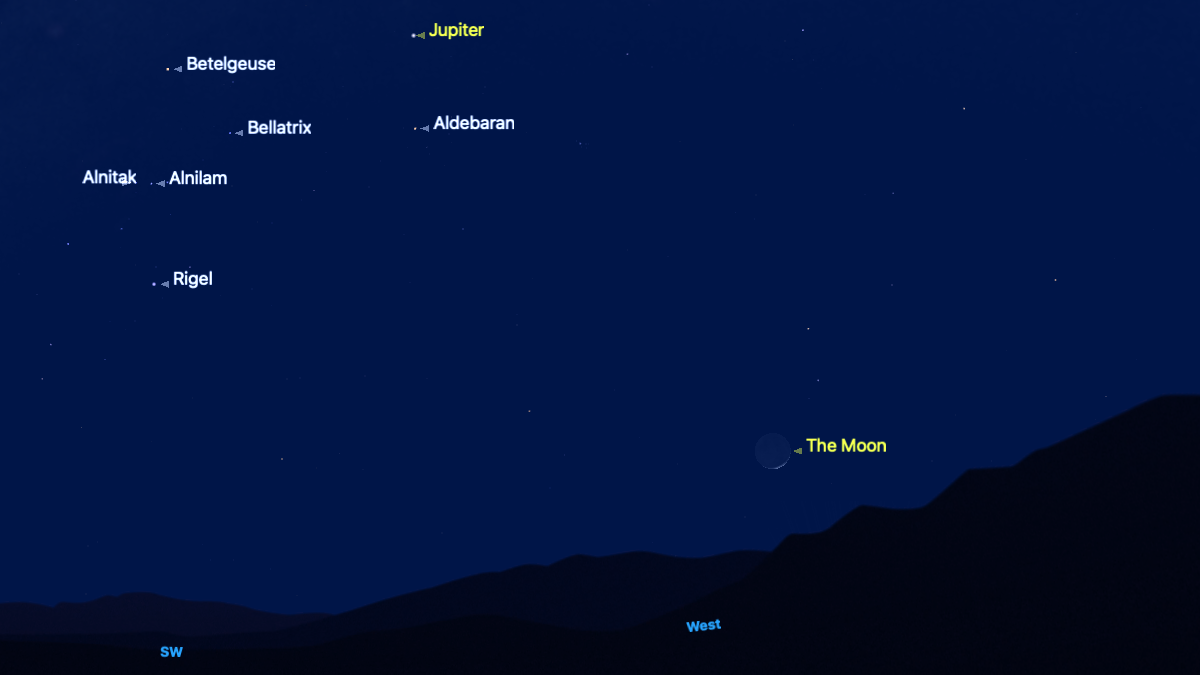
Here’s a challenge for every stargazer who likes to see something almost nobody else ever does. Be outside looking west immediately after sunset, and you’ll have a chance to glimpse a 3%-illuminated waxing crescent moon, just a day past it crossing the sun to cause a solar eclipse. It will be close to the western horizon — almost directly below bright Jupiter—but it will be dim, so you may need a pair of binoculars. British stargazers wanting to remain punctual should also know that in the U.K., the clocks go forward by an hour. — Jamie Carter
Monday, March 31 — Waxing crescent moon (after sunset)
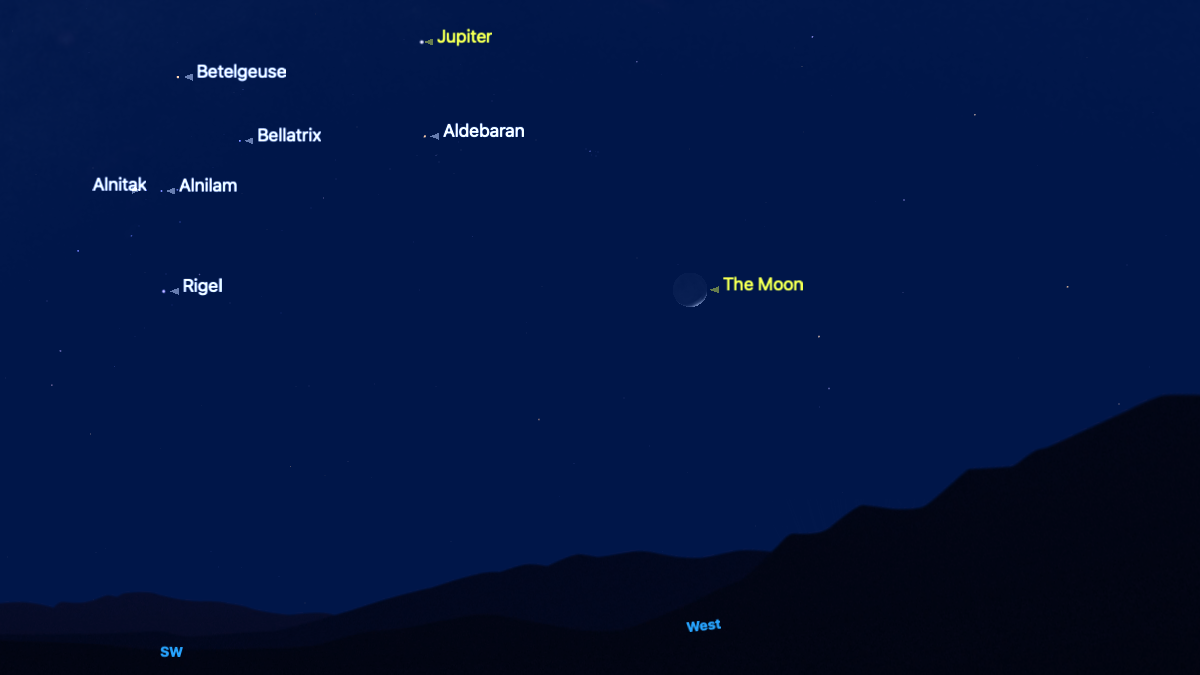
If yesterday’s attempt at seeing the slimmest possible waxing crescent moon failed, try again tonight when it will now be 9%-illuminated and a little easier to see. If you can see Orion's Belt—three horizontal stars sting above the southwest—follow them in a straight line to the right. Look slightly below that imaginary line when you get to due west. — Jamie Carter
Tuesday, April 1 — Waxing crescent moon in the Pleiades (after sunset)
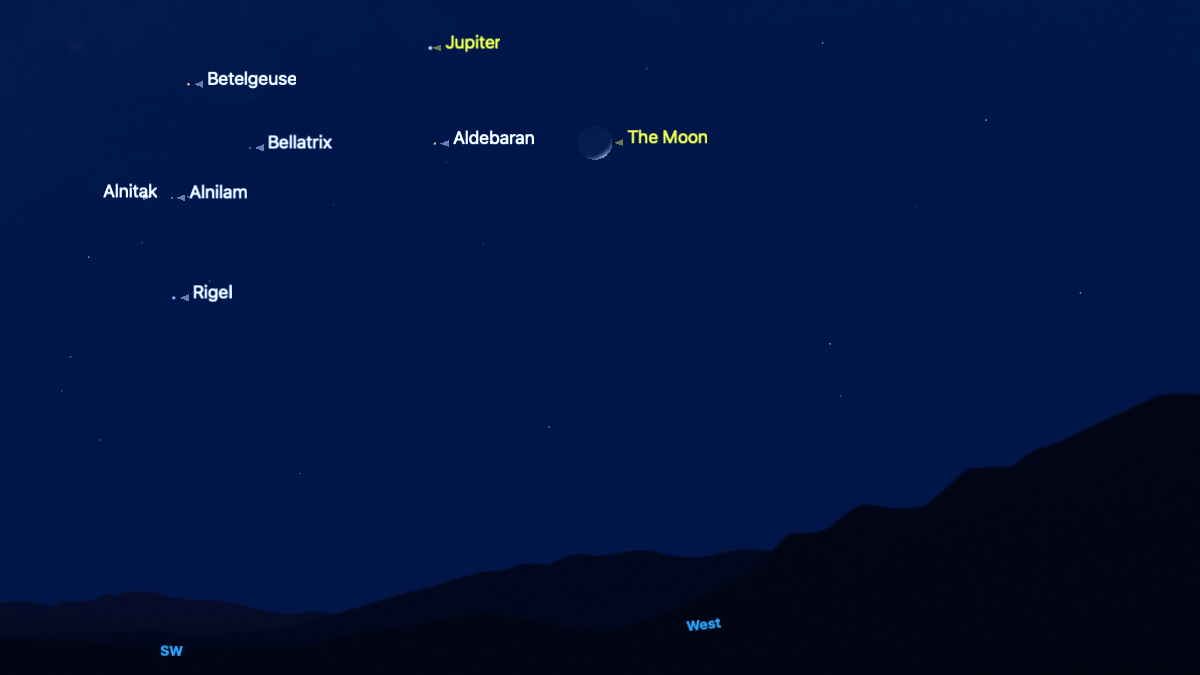
It may be April Fools’ Day, but believe us when we say that tonight’s passage of a slim waxing crescent moon through one of the most beautiful objects in the night sky will have astrophotographers out in full force. High in the west after sunset, a 17%-illuminated waxing crescent moon will be about half a degree above the Pleiades, an open cluster of stars around 440 light-years distant. Close by, Jupiter will be easily visible, shining at mag. -2.1. — Jamie Carter
Wednesday, April 2 — Waxing crescent moon and Jupiter (after sunset)
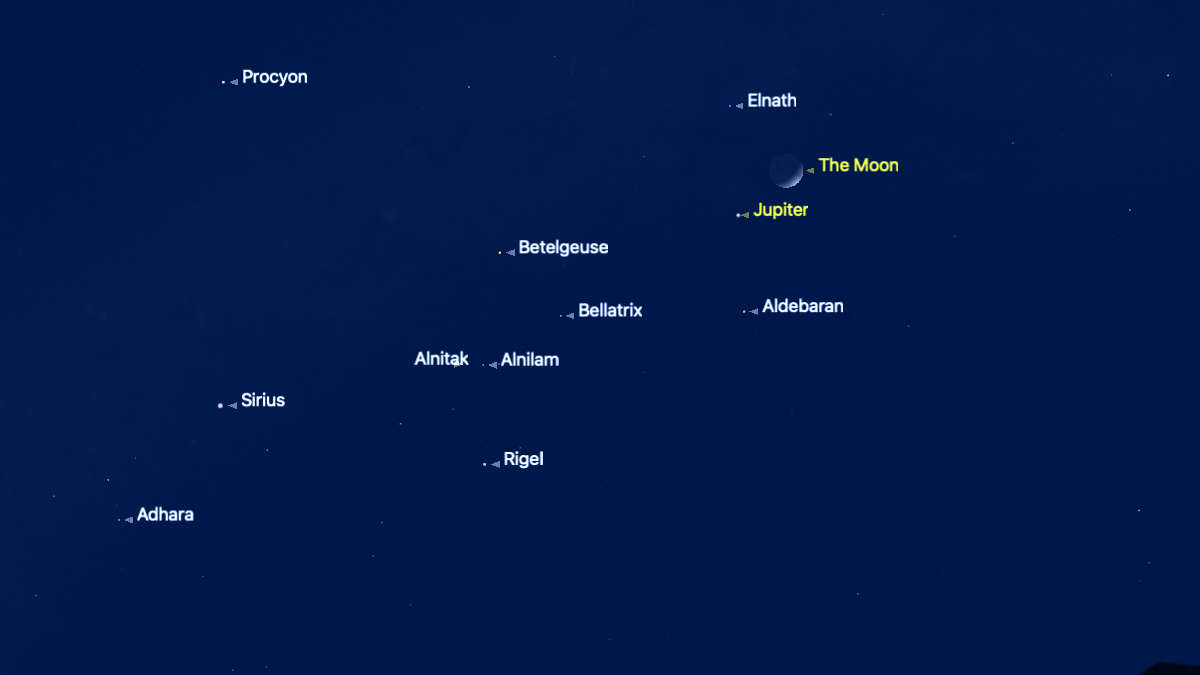
Yesterday, the Pleiades were visited by a delicate waxing crescent moon in one of the most spectacular stargazing sights of the year so far (see photo below). Tonight, it’s the turn of Jupiter, shining at mag -2.1, with the giant planet and a now 27%-illuminated crescent moon to appear together in the constellation Taurus in the post-sunset western sky. They’ll be separated by about five degrees, so this isn’t a super-close conjunction, but it will be a beautiful sight. — Jamie Carter
Andy Moran captured this stunning view of the waxing crescent moon shining below the Pleiades on April 1. The moon's darker portion is beautifully illuminated by earthshine, a soft glow created by sunlight reflecting off Earth's surface.
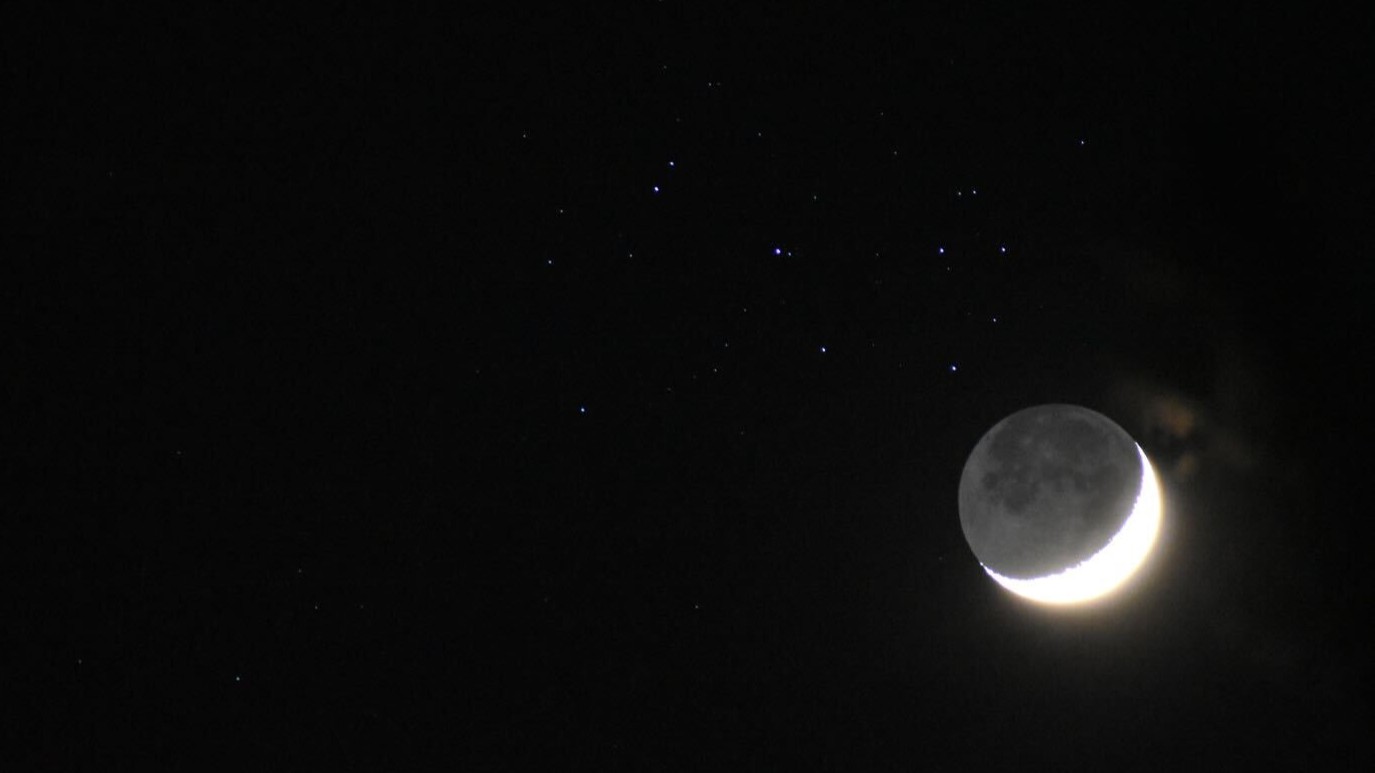
Editor's note: If you capture an astronomy photo and would like to share it with Space.com's readers, send your photo(s), comments, and your name and location to spacephotos@space.com.
Thursday, April 3 — Waxing crescent moon between Jupiter and Mars (after sunset)
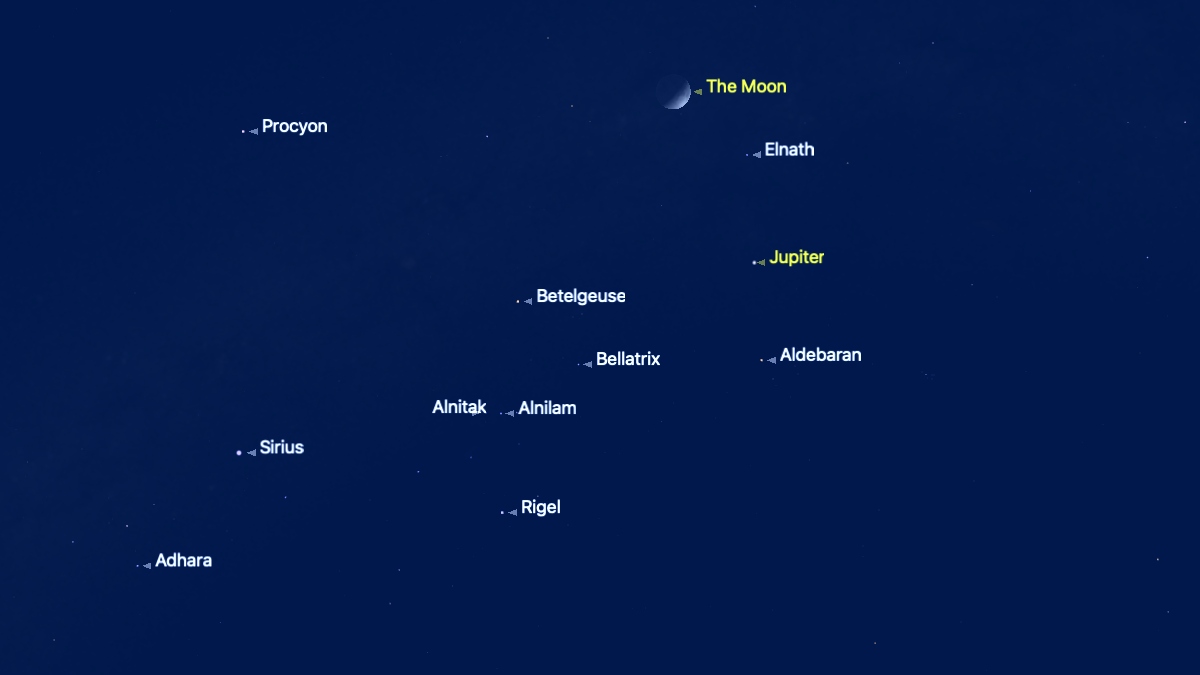
Tonight is another chance for a mini “planet parade,” with a now 38%-illuminated waxing crescent moon shining roughly equidistant between Jupiter and Mars. The red planet, shining at mag. 0.5, will be above the moon, with mag. -2 Jupiter below it. Look southwest anytime after sunset. — Jamie
Night sky for tonight and the weekend
Friday, April 4 — First Quarter Moon (midday-midnight)
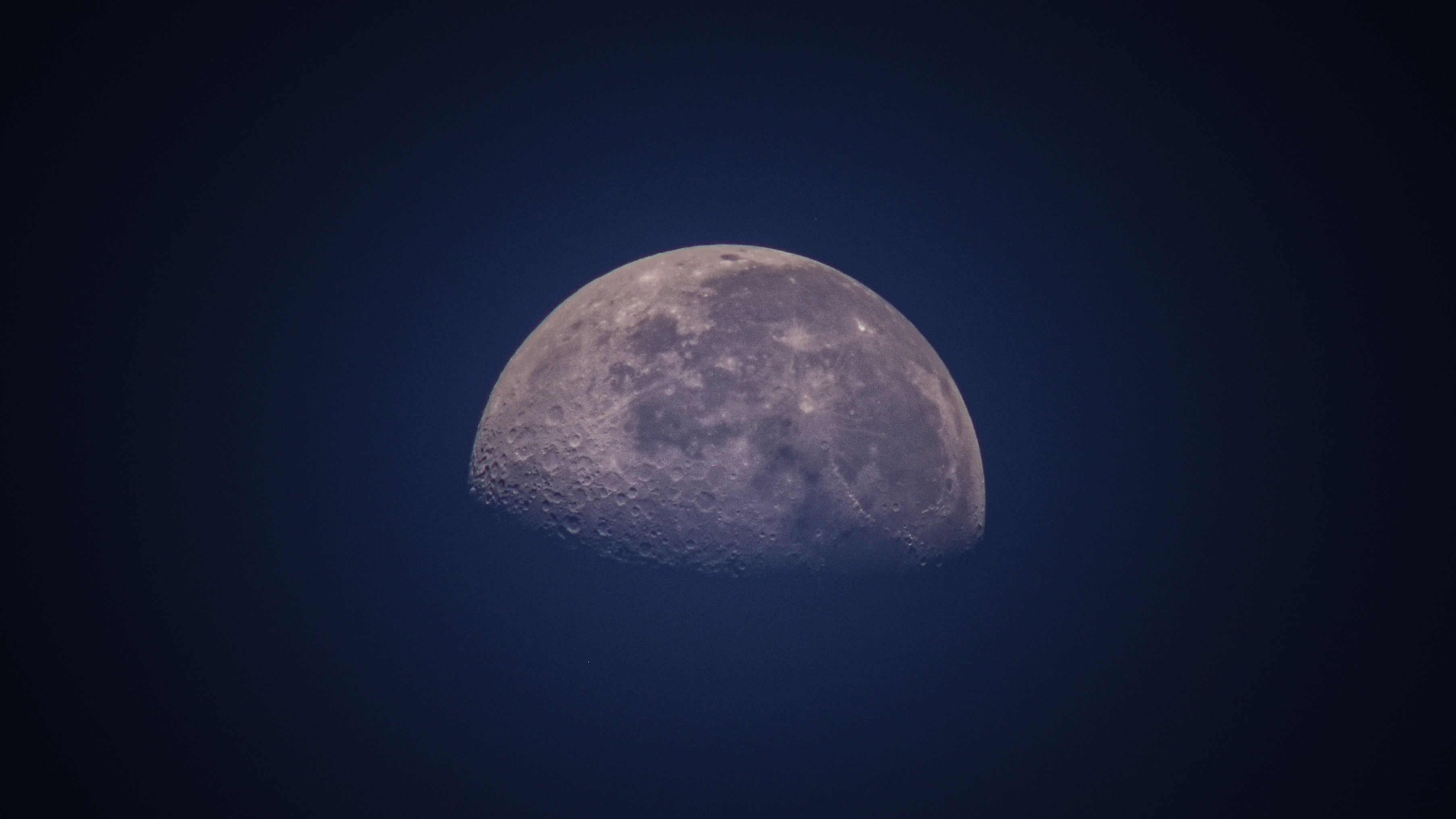
Tonight, the moon reaches its first quarter phase, which is seen as half-lit from our point of view. It’s now rising around midday, setting around midnight, and beginning to bleach the night sky, making faint objects harder to see. Its position tonight at the feet of the constellation Gemini — about two-thirds of the way between Jupiter and Mars (closest to it) — makes it ideal for use as an aid to finding the bright stars Capella (to the right of the moon) and Betelgeuse (below the moon). — Jamie Carter
Saturday, April 5 — Moon, Mars and 'The Twins' of Gemini (after dark)
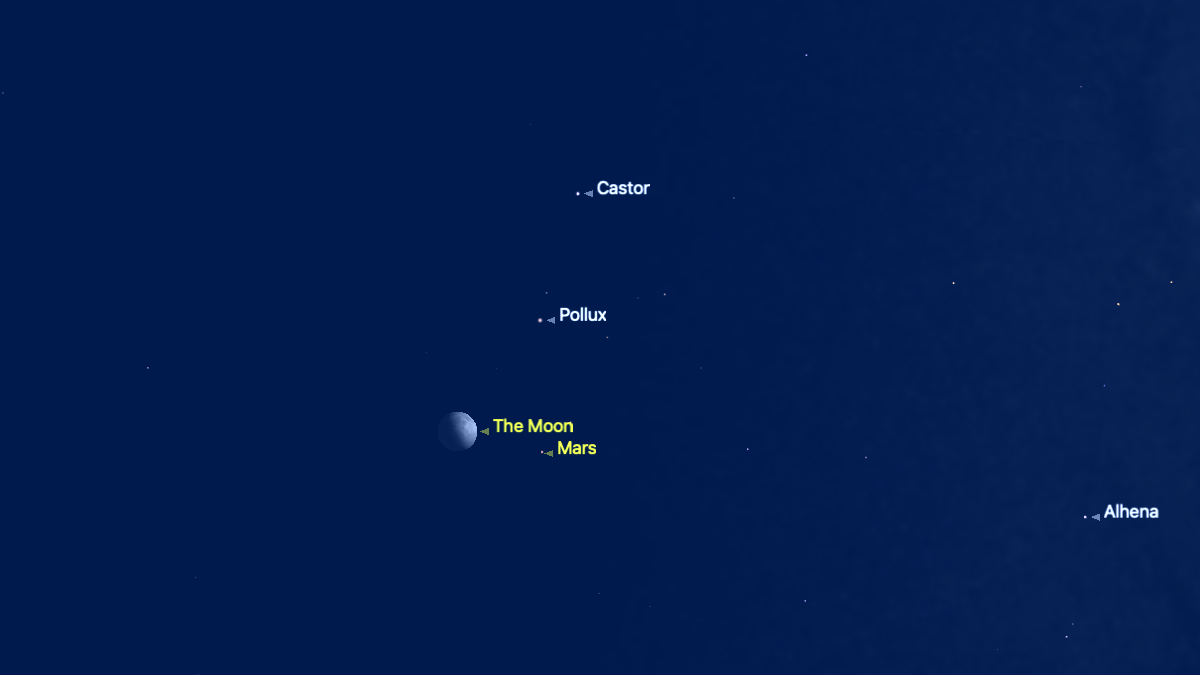
Tonight, there's the pretty sight of a reasonably bright Mars (mag. 0.5) — noticeably still emitting a rosy, reddish or golden light — shining next to a now 60%-illuminated waxing gibbous moon. The two solar system objects will be about two degrees from each other. Look directly above the pair, and you'll see bright stars. That's Pollux (closest to the moon and Mars) and Castor (farthest), the so-called "twins" of the constellation Gemini. Pollux, 34 light-years distant, will look distinctly yellowish and will form a triangle with the moon and Mars tonight. Add Castor, which is 51 light-years distant and makes an upside-down Y-shape.
Sunday, April 6 — Orion (after dark)
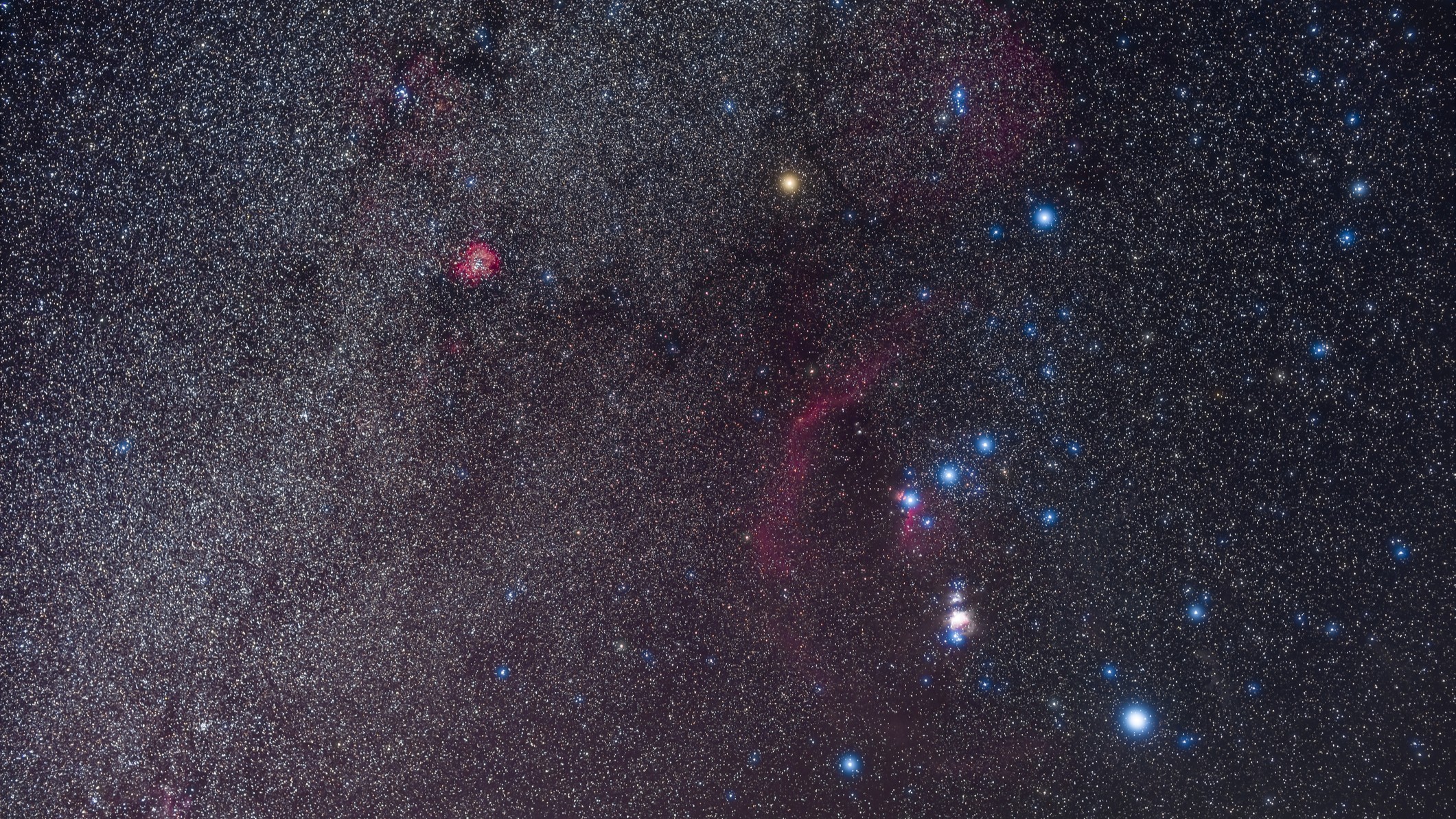
The moon may be getting bright in the post-sunset night sky, but there's something you should look at before it’s gone for six months. Containing — and close to — some of the very brightest stars and most impressive stars in the night sky, Orion is perhaps the most famous constellation of all. Tonight in the west, the iconic Orion's Belt will appear horizontal, with Alnitak, Alnilam and Mintaka — the "Three Kings" — prominent. Below them will be bright blue Rigel, with ruddy Betelgeuse above. Follow Orion's Belt to the south, and you'll come to Sirius, the brightest star in the night sky. — Jamie Carter
Monday, April 7: Waning crescent moon and Regulus (after dark)
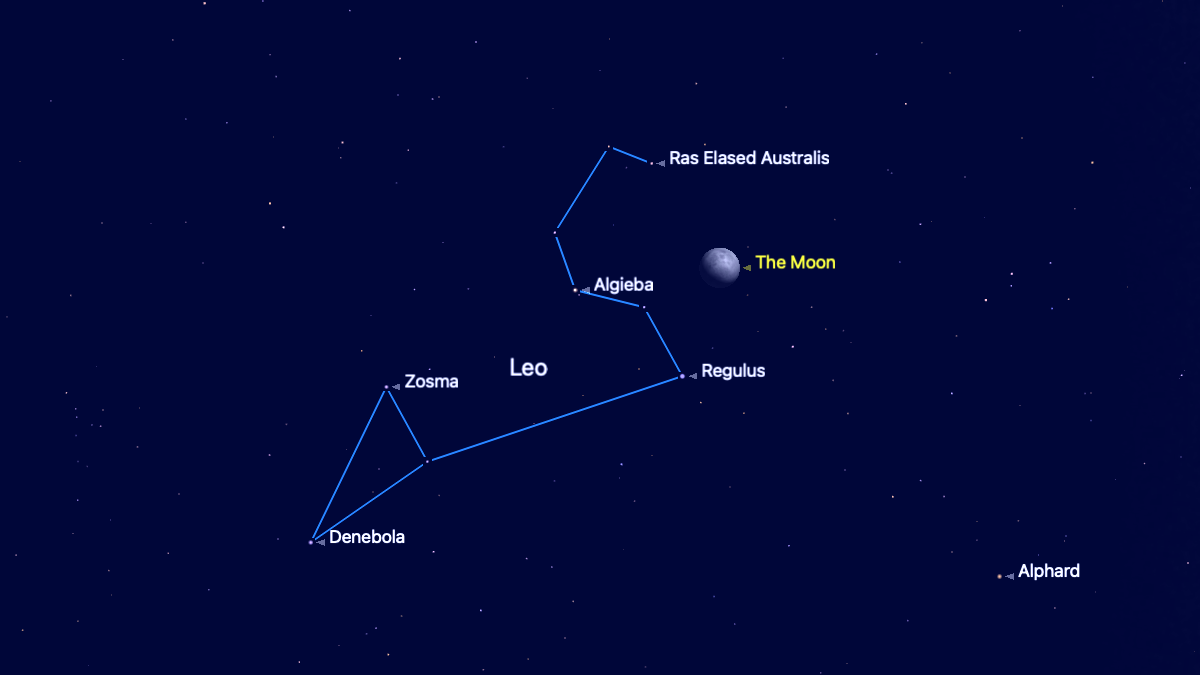
Tonight, a 79%-illuminated waning crescent moon will shine in the constellation Leo, a famous spring shape of stars now clearly visible after dark. The moon will be close to Regulus, one of the brightest stars in the night sky and about 77 light-years from the solar system. Its nicknames include "Heart of the Lion" and "Little King." Look high in the southeast anytime after dark. — Jamie Carter
Tuesday, April 8: See the universe beyond (after sunset)
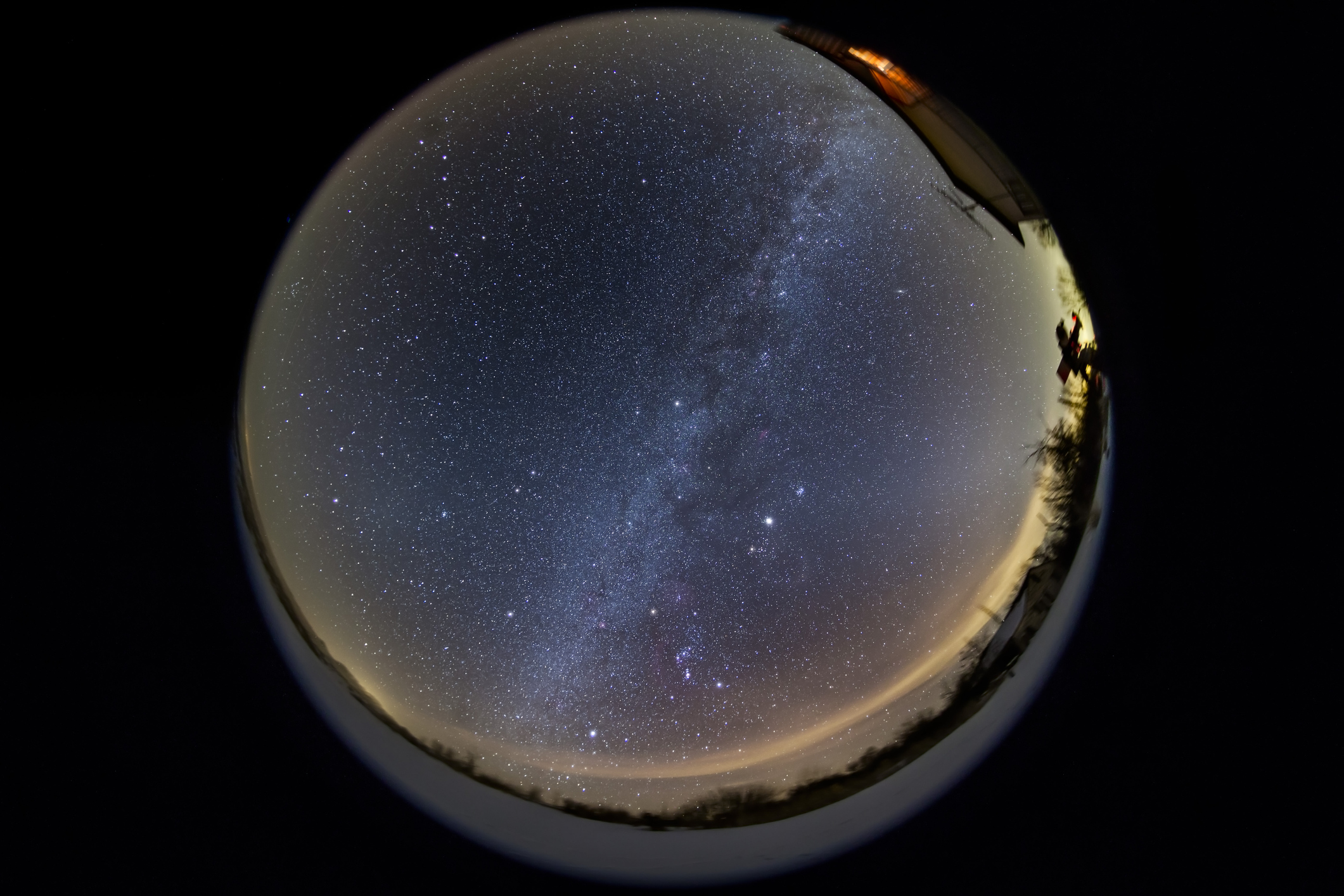
Where you look in the night sky is instructive. Tonight, look towards the western horizon after dark and see the constellation of Orion and the other winter stars sinking into the haze. The stars you see are part of the Orion Arm, a spiral arm of our Milky Way galaxy. Now look to the south for Leo, which covers the "realm of the galaxies." You've just turned your gaze from looking into our galaxy to looking away from it and into deep space. Stargazing is geography on the grandest scale. — Jamie Carter
Wednesday, April 9: The Diamond of Virgo (after sunset)
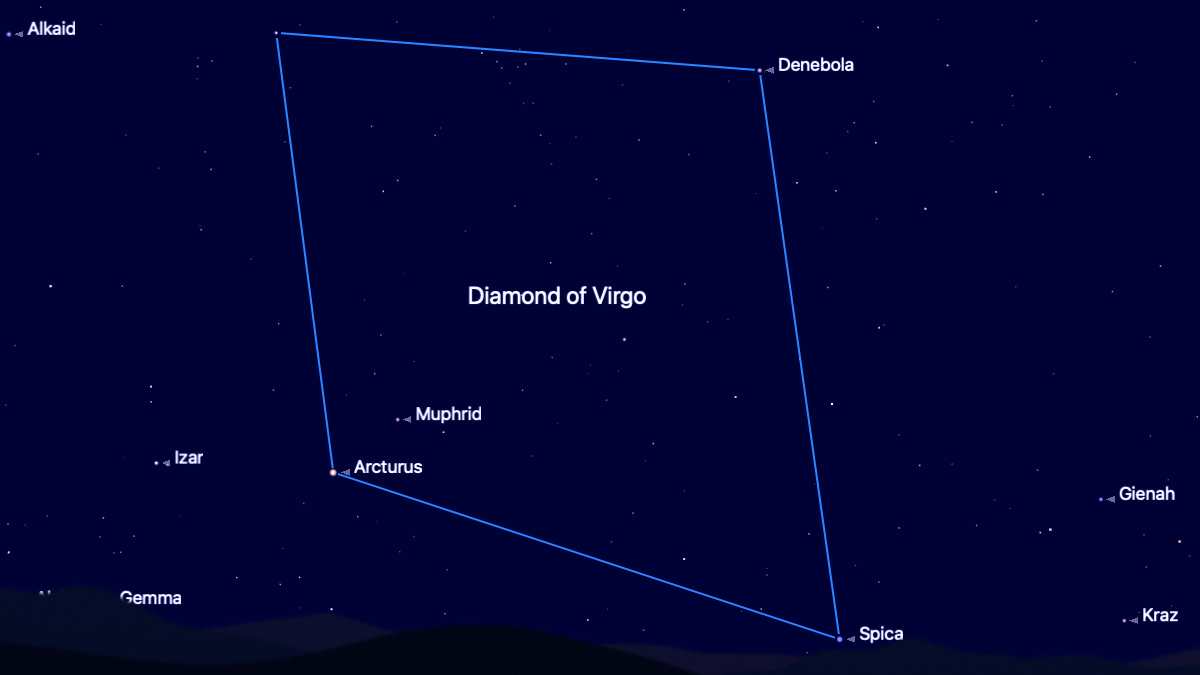
Here's a nice asterism (the shape of stars, not an official constellation) that can only be seen in spring and summer. The Diamond of Virgo is formed by Arcturus in the constellation Boötes, Spica in Virgo, Denebola in Leo and Cor Caroli in Canes Venatici. This region of the sky includes a wealth of galaxies. — Jamie Carter
Thursday, April 10: Mars aligns with the 'twins' (after sunset)
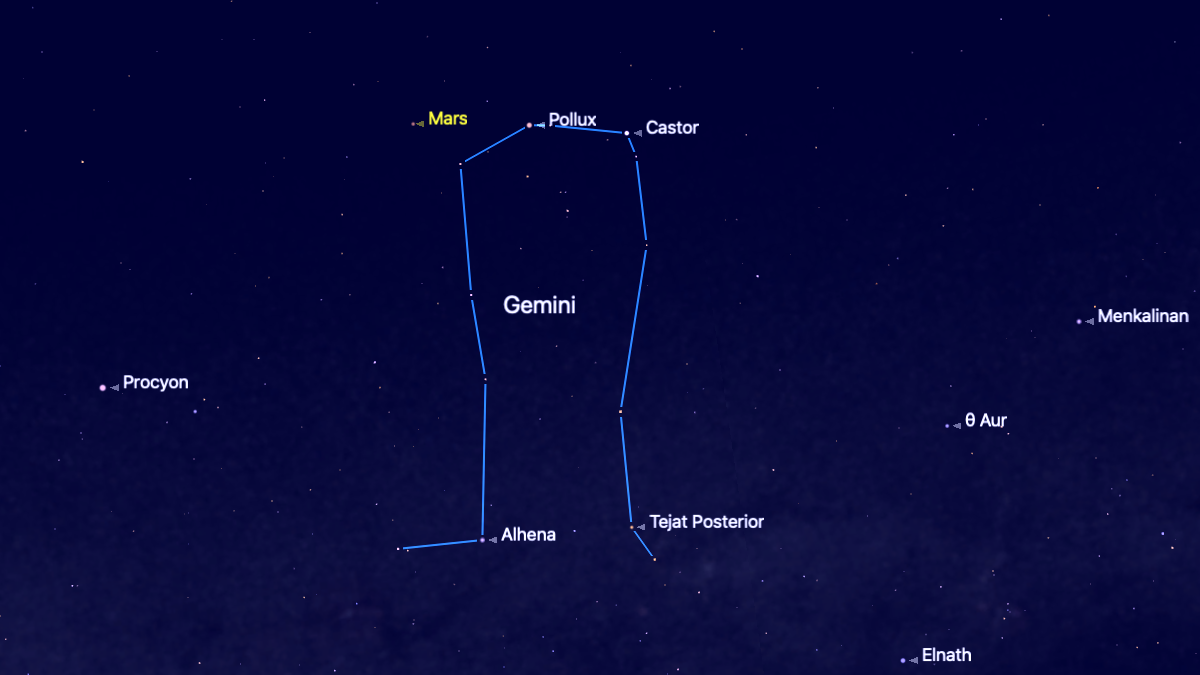
Mars has been in the constellation of Gemini for many months, appearing to move one way, then the other, thanks to our point of view of the red planet from Earth. It will appear to form a straight line tonight with "the twins" of Gemini, Castor and Pollux, after dark. Although it's an optical alignment that has been apparent for at least a few nights and will continue for a few more, it's tonight when it's at its most perfect. — Jamie Carter
The Night Sky for Tonight and the weekend
Friday, April 11: Leo (after sunset)
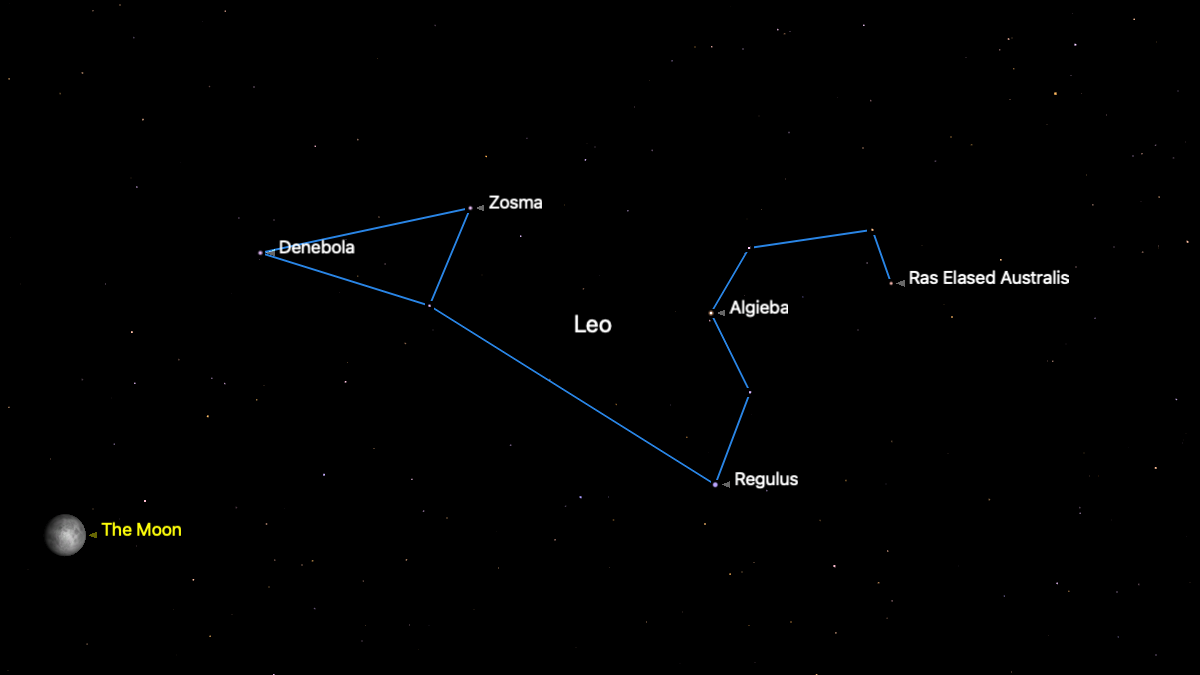
With the moon now behind it — literally — it's a good time to find and familiarise yourself with the constellation Leo. The most obvious shape to look for is the "sickle" of Leo, resembling a backward question mark that uses the constellation's brightest star, Regulus, as the period. Denebola marks the tip of the lion's tail. — Jamie Carter
Saturday, April 12: The full 'Pink Moon' rises with Spica in North America (dusk)
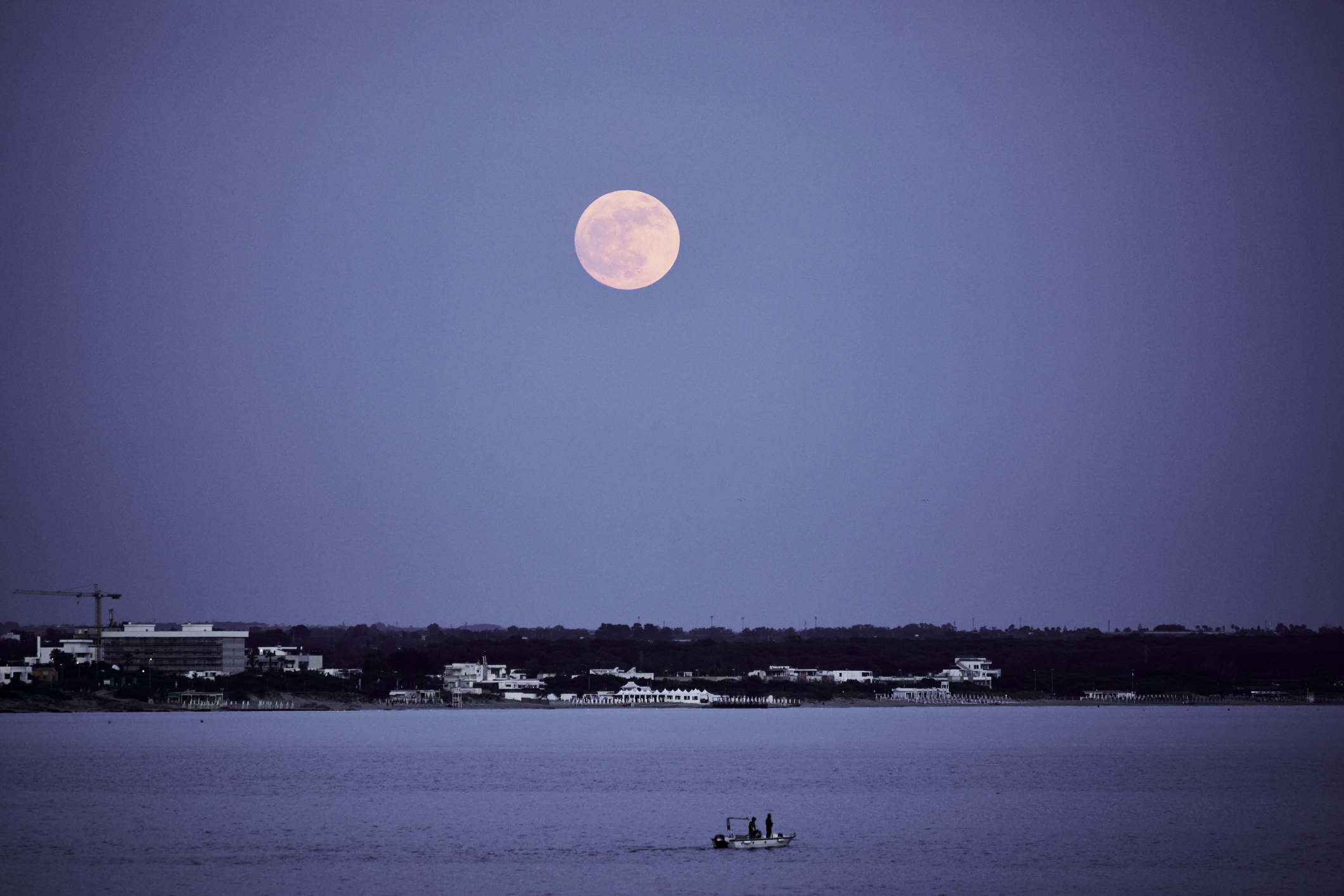
A full moon is best viewed when it rises in the east about 20-30 minutes after the sun has set in the west. That way, its delicate, orangey light can be seen appearing above a landscape that still has some residual twilight illuminating it. However, it doesn't always work out that way. Tonight, for North America, the full moon rises almost exactly at sunset, meaning it will look rather pale and lack the drama of appearing in a twilight sky. As recompense, it will appear very close to one of the most famous stars in the night sky, Spica in Virgo. Watch it at 8:23 p.m. EDT and you'll catch the exact moment of the full moon. From most of South America, the full moon will occult (cover up) Spica for a short time, according to In-The-Sky.org. — Jamie Carter
Sunday, April 13: The full 'Pink Moon' rises in Europe (dusk)
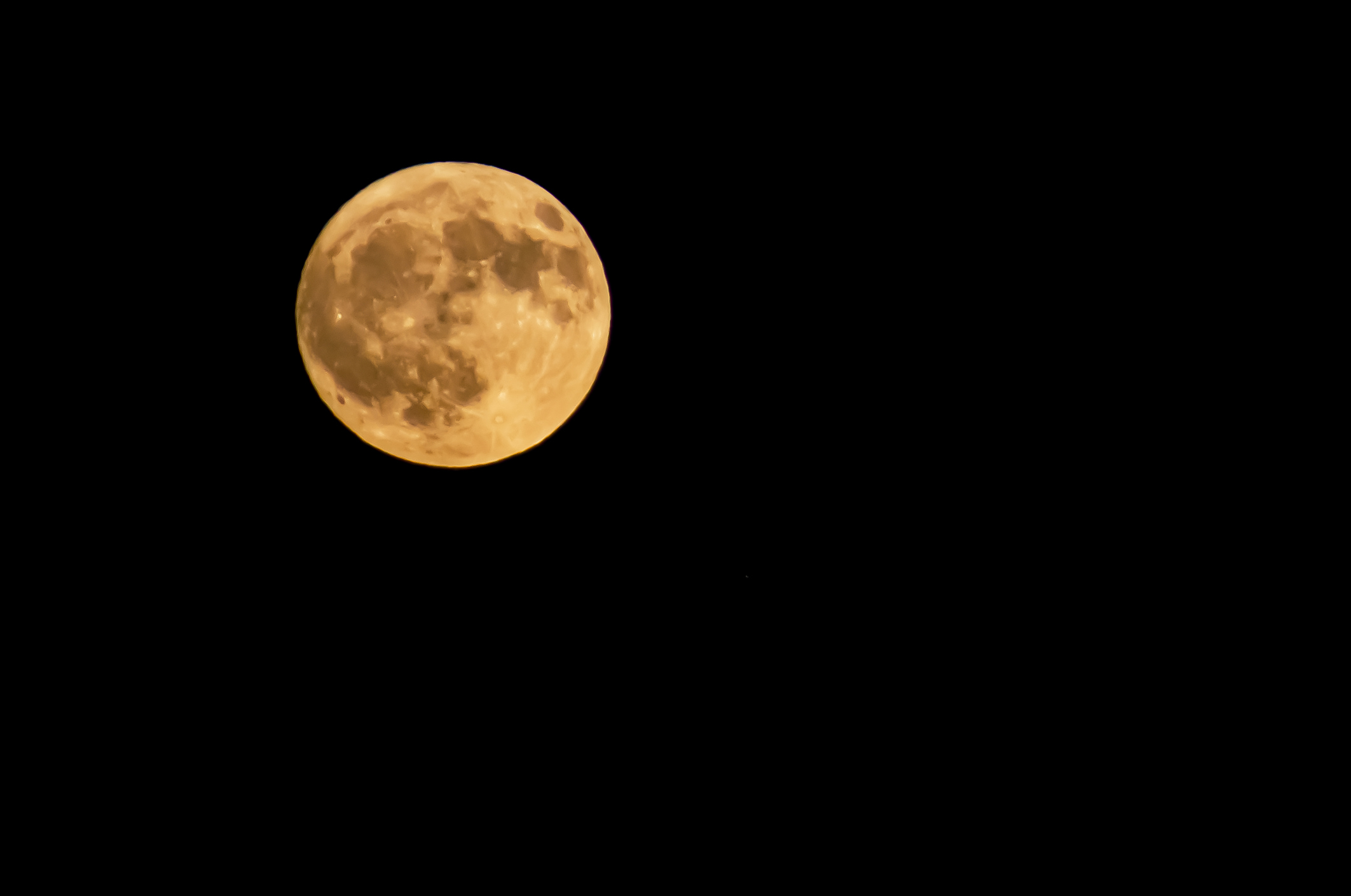
There isn't a good night to see the full moon rise this month for Europe, but tonight is the next best thing. Although it will no longer be close to Spica, the just-past-full moon will appear in the east about an hour after sunset. Incidentally, the 'Pink Moon' is also called the 'Pascal Moon' this month because it helps determine the date of Easter Sunday. According to the Western Christian church, Easter falls on the first Sunday after the first full moon on or after the spring equinox. — Jamie Carter
Monday, April 14: The constellation Boötes (after sunset)
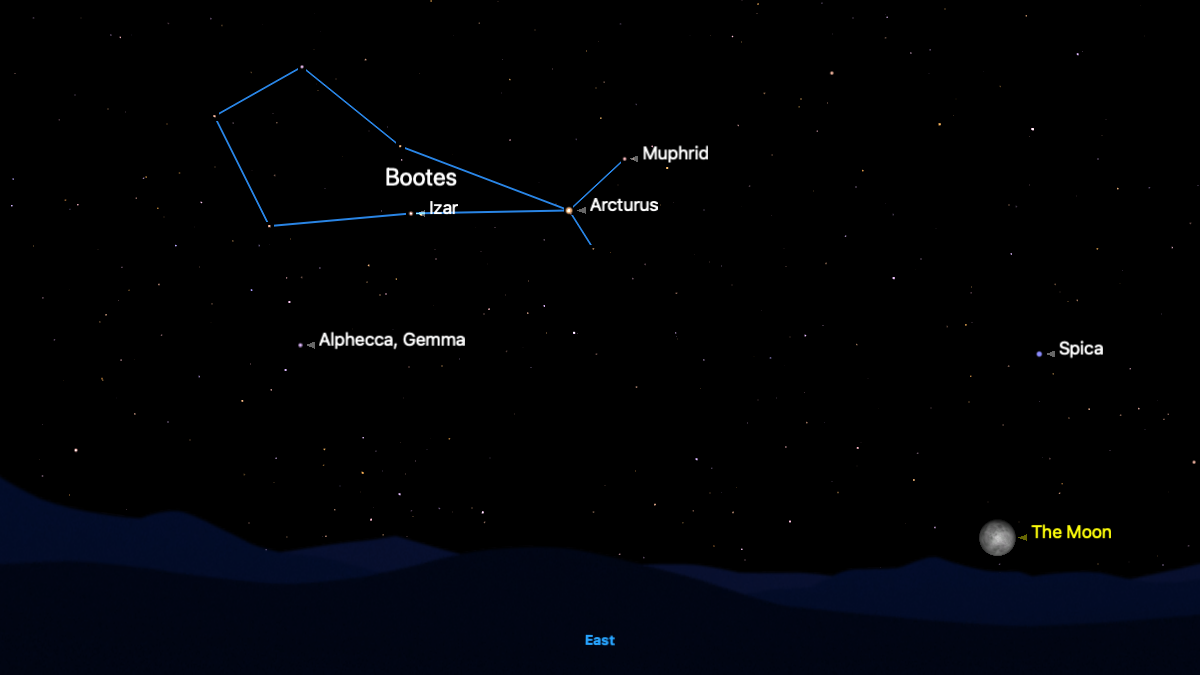
Look due east for perhaps the definitive constellation of spring in the Northern Hemisphere. Boötes — which means "the herdsman" — is centered on a bright star called Arcturus, a red supergiant star only about 37 light-years distant. It's above the east shortly after dark. Look to its left and make a rough "Y" shape. The constellation has other faint stars, but the "Y" — which also looks like a champagne glass — is the easiest way to see and remember it. — Jamie Carter
Tuesday, April 15: The Big Dipper/Plough and Polaris (after dark)
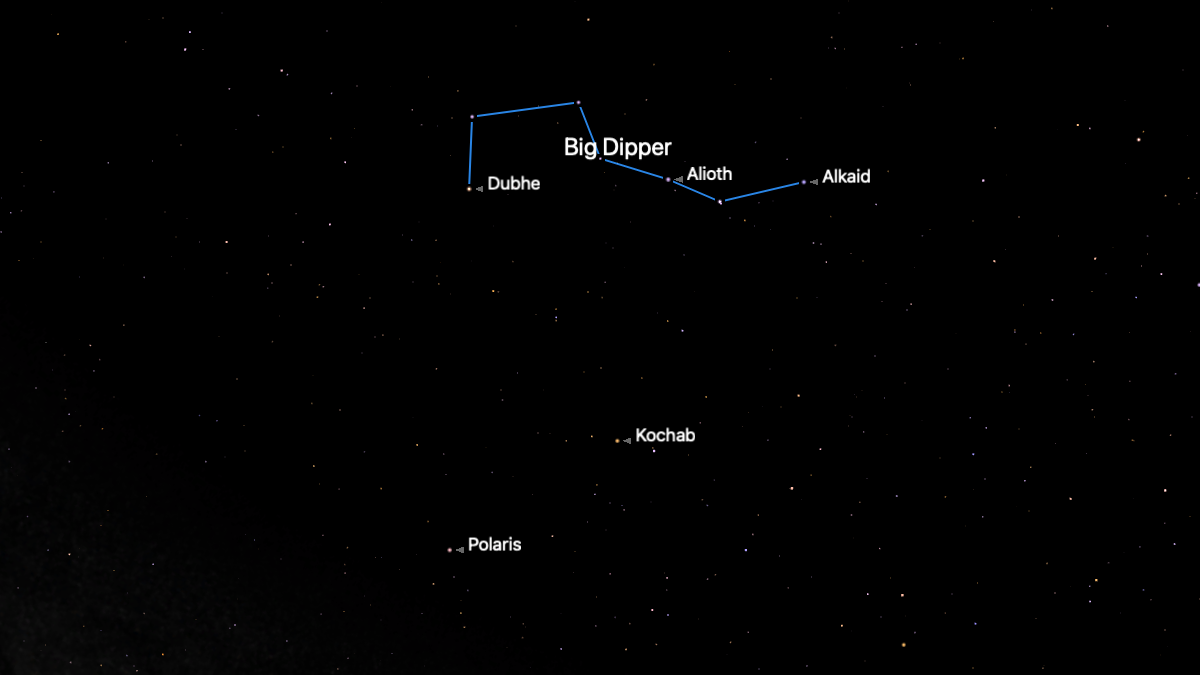
Here are some stars visible year-round, which is why they're known to almost everyone. Riding particularly high this month are the seven bright stars of the Big Dipper/Plough, circumpolar stars that appear to revolve around Polaris, the North Star, every 24 hours. You can use the two stars on the left of the bowl of the Big Dipper/Plough to easily find Polaris. Trace a line from Dubhe through Alkaid and keep going down to the horizon until you come to the only bright star you can see in the region of the sky. That's Polaris — that's due north. — Jamie Carter
Wednesday, April 16: Calculate your latitude using Polaris (after sunset)
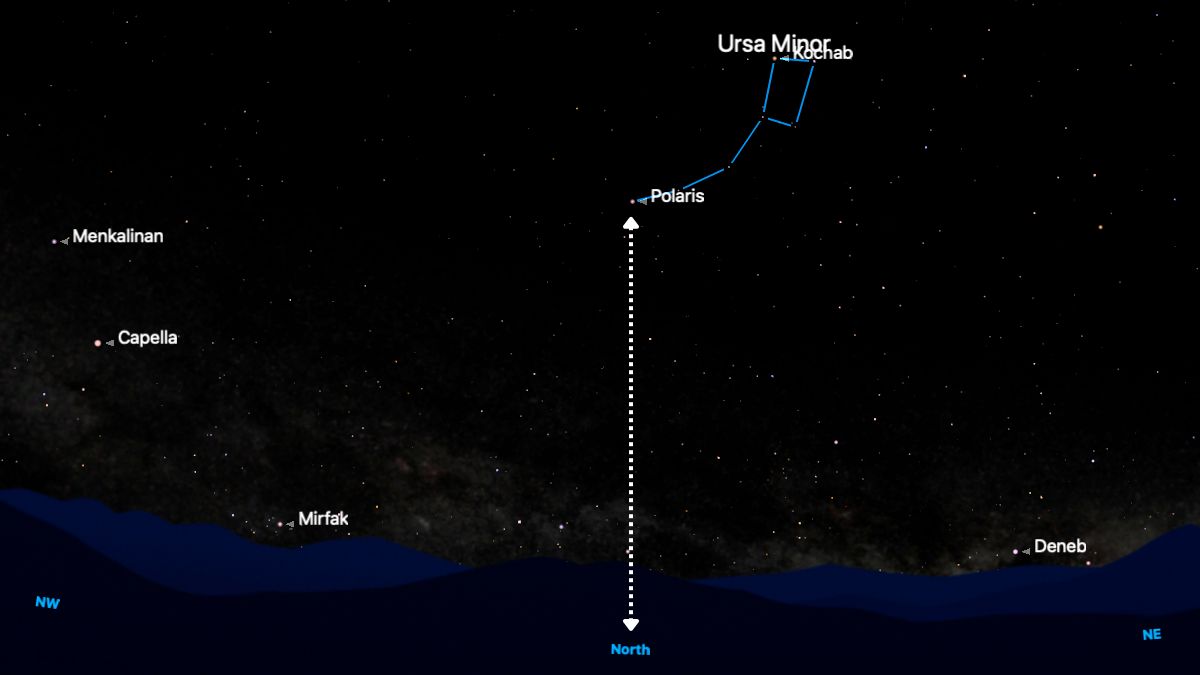
What latitude do you live at? You can easily tell by using Polaris. Go outside after dark and look north, locating Polaris. Now, measure how high Polaris is above the horizon using your fists on outstretched arms held up to the sky. Three fists? You're 30 degrees north of the equator. Four fists? 40 degrees. You get the idea. Three outstretched fingers span about five degrees, and an outstretched little finger spans a single degree. This basic system works because humans are all built to scale. That means anyone can measure apparent distance in the night sky using their fists and fingers. — Jamie Carter
Thursday, April 17: Look out for the Lyrid meteor shower (after dark)
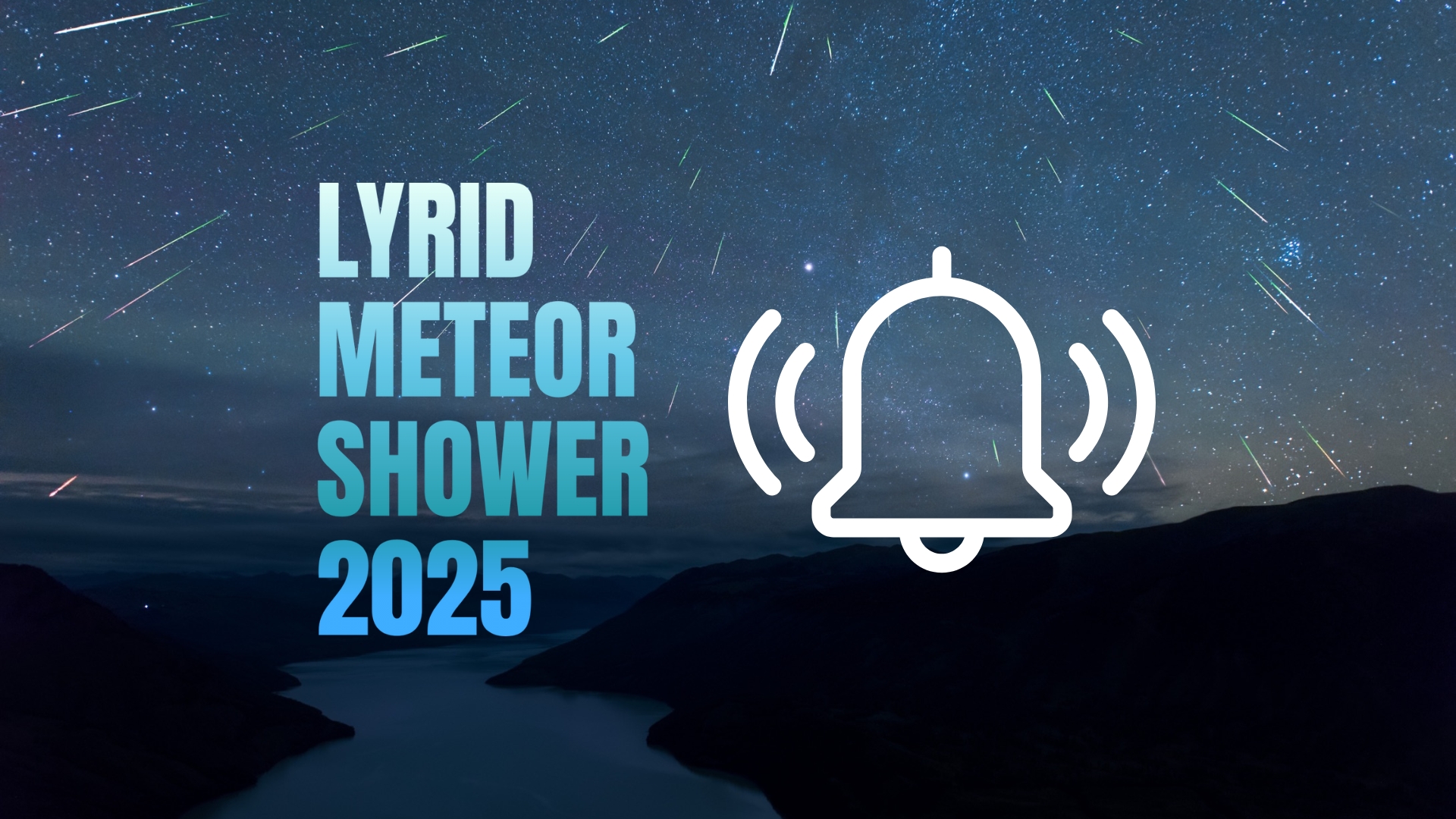
The Lyrid meteor shower season has begun. Although the night skies are always buzzing with sporadic shooting stars, the Lyrid meteor shower is the first dense concentration of them since January's Quadrantids. Although it won't peak until Tuesday, April 22, through Wednesday, April 23, the Lyrid meteor shower is active from April 16 through April 26. Expect a handful of "shooting stars" per hour, with a good chance of bright fireballs. — Jamie Carter
Read more: The Lyrids are back: How to catch this year's spring meteor shower
Night sky for tonight and the weekend
Friday, April 18: The Northern Cross on Good Friday (after midnight)
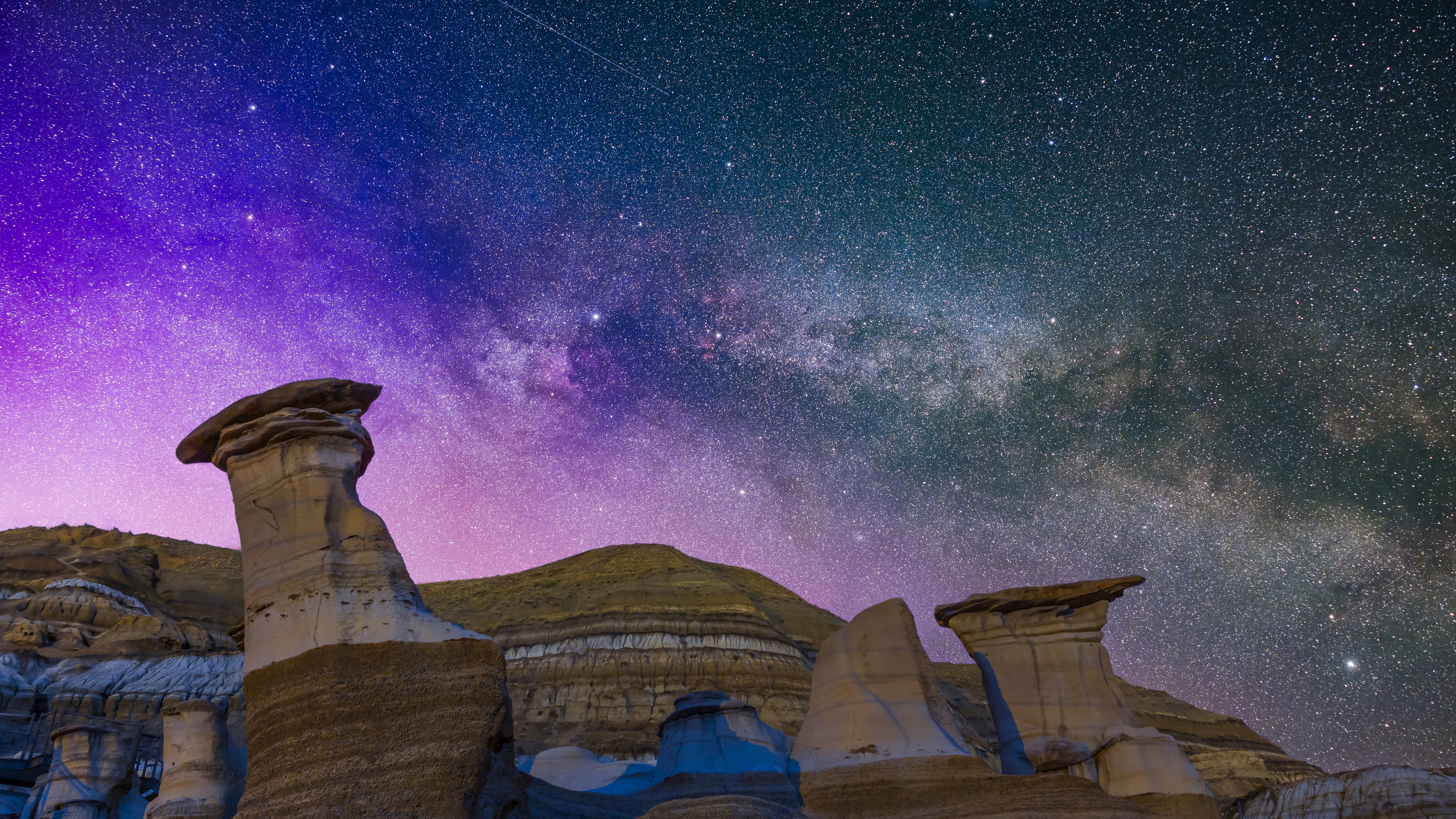
If you're stargazing into the wee hours tonight, in the northeast you'll see some familiar summer stars rise — Vega, Deneb and Altair, which make up the popular Summer Triangle asterism. Deneb, beneath Vega, is in the constellation Cygnus, which depicts a figure resembling a flying swan. However, turn it on its head, it's known as something else entirely — the Northern Cross. Deneb acts at the top of the cross, which appears on its side tonight. — Jamie Carter
Saturday, April 19: Mercury rising (before sunrise)
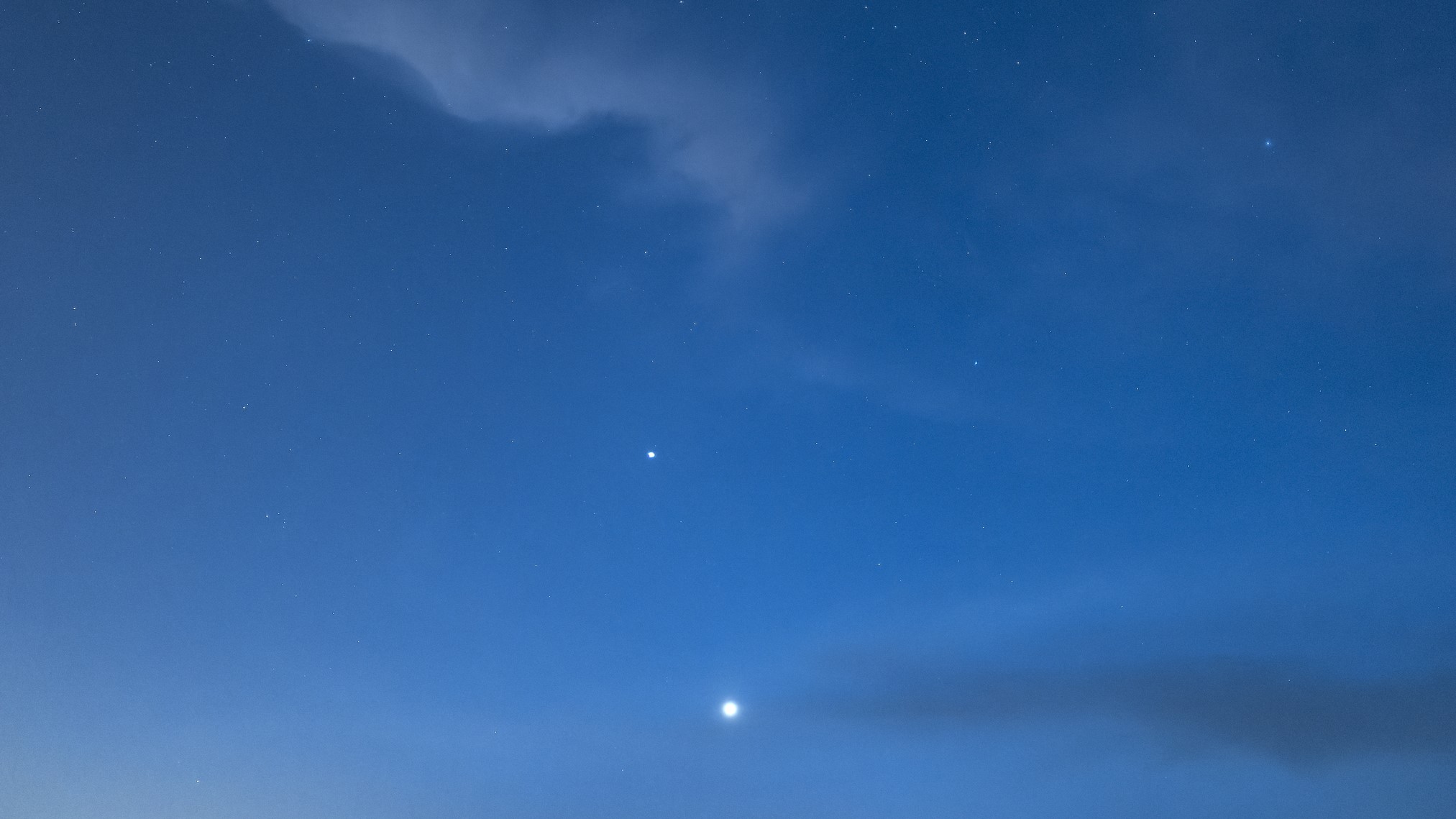
If you missed Mercury as an easy post-sunset target in early March, here's another chance to catch the "Swift Planet." Although it will shine at only mag. 0.3, it should be possible to see Mercury in twilight by looking east about 45 minutes before sunrise. Today, it reaches its highest altitude in the morning sky, so it is farthest from the sun as seen from Earth. — Jamie Carter
Sunday, April 20: Eta Aquariids on Easter Sunday
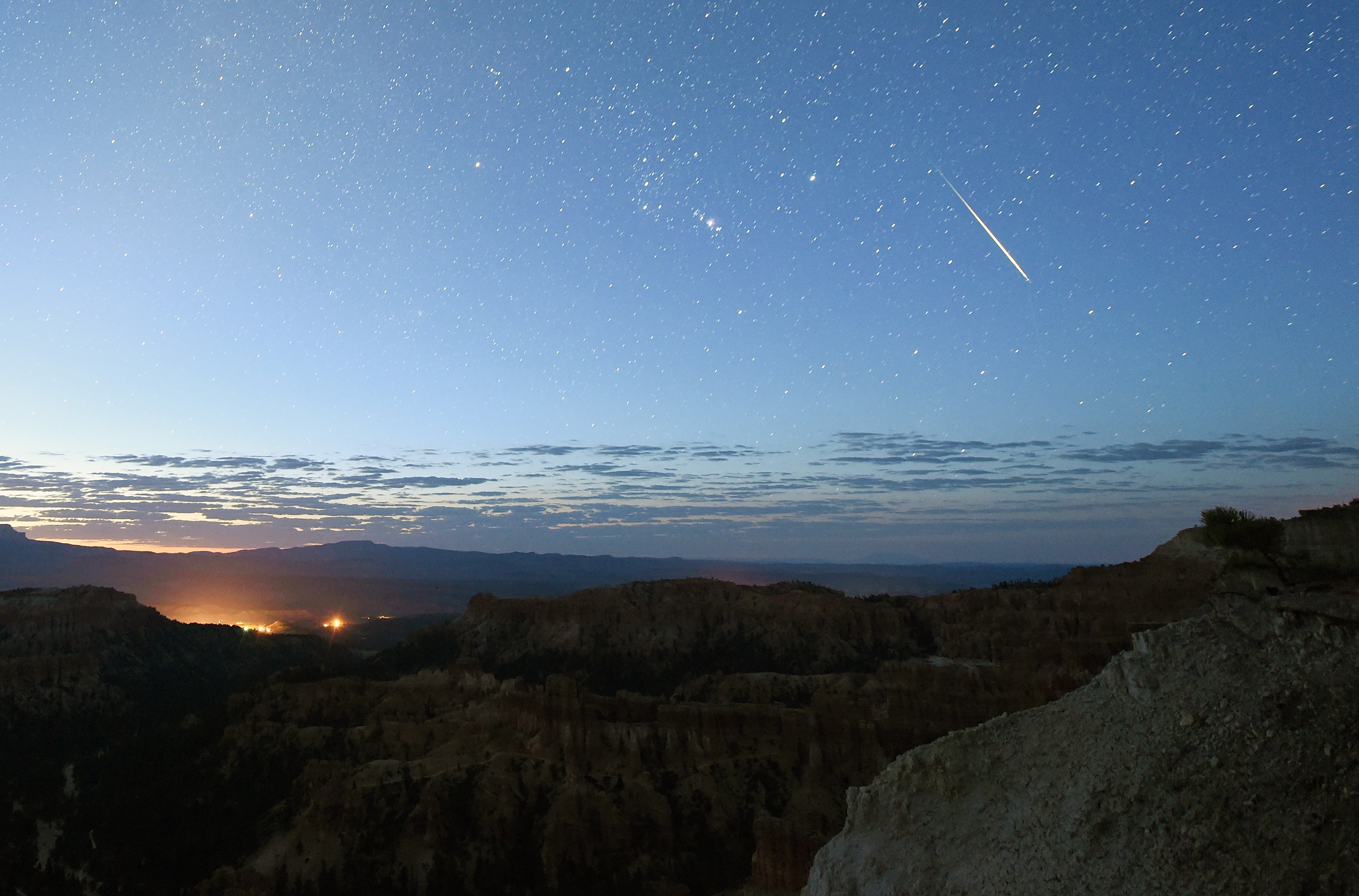
If you need any more proof that the meteor shower season has arrived, tonight, Earth will bust through a cloud of dust and debris left in the inner solar system by none other than Halley's Comet. Although the peak night, when an impressive 50 "shooting stars" per hour can be expected, won't occur until Saturday, May 3 through Sunday, May 4, the Eta Aquariids meteor shower begins tonight. Primarily a Southern Hemisphere shower, expect to see a few swift meteors emanating from the constellation Aquarius, which rises in the east just before dawn in the Northern Hemisphere. — Jamie Carter
Monday, April 21: Lyrid meteor shower ramps up (after dark)

Although the peak of the annual Lyrid meteor shower isn't until tomorrow night, according to the American Meteor Society, this medium-strength shower typically produces good rates of "shooting stars" for three nights centered on the maximum.
So tonight is a good night for a stargazing session, clear skies allowing, as is Tuesday, April 22 and Wednesday, April 23. — Jamie Carter
Read more: The Lyrids are back: How to catch this year's spring meteor shower
Tuesday, April 22: Lyrid meteor shower peaks (late at night)
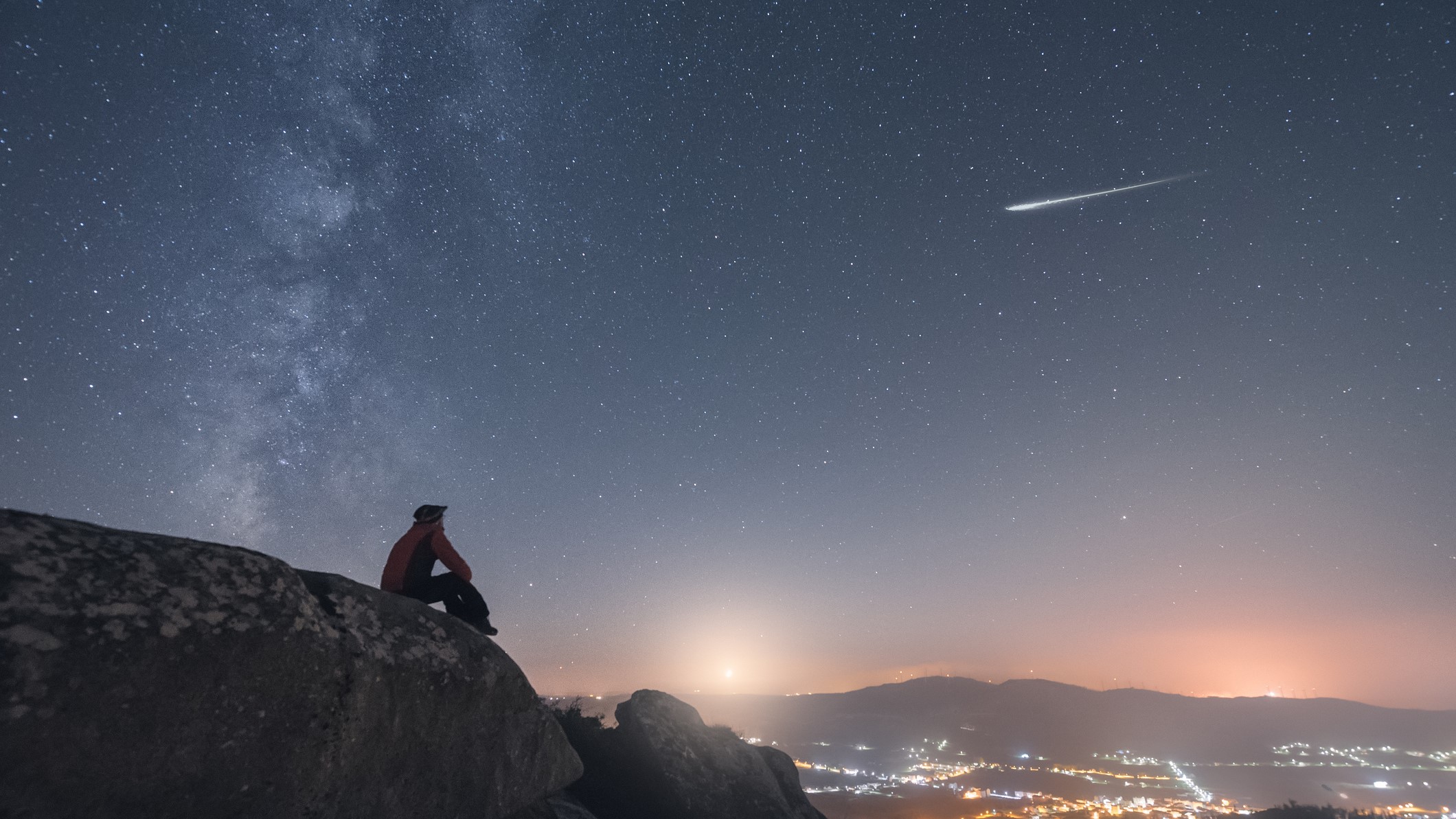
Long after the sun has risen, then sunk, get outside to see the peak of the Lyrids, a medium-strength meteor shower caused by dust and debris left in the inner solar system by comet Thatcher (C/1861). According to the American Meteor Society, expect about 18 "shooting stars" per hour at the peak, which will occur in daylight — so get outside as soon as it gets dark. A bright waning crescent moon, now 40%-illuminated, won't rise until well after midnight. — Jamie Carter
Wednesday, April 23: Crescent moon, Venus and Saturn (before sunrise)
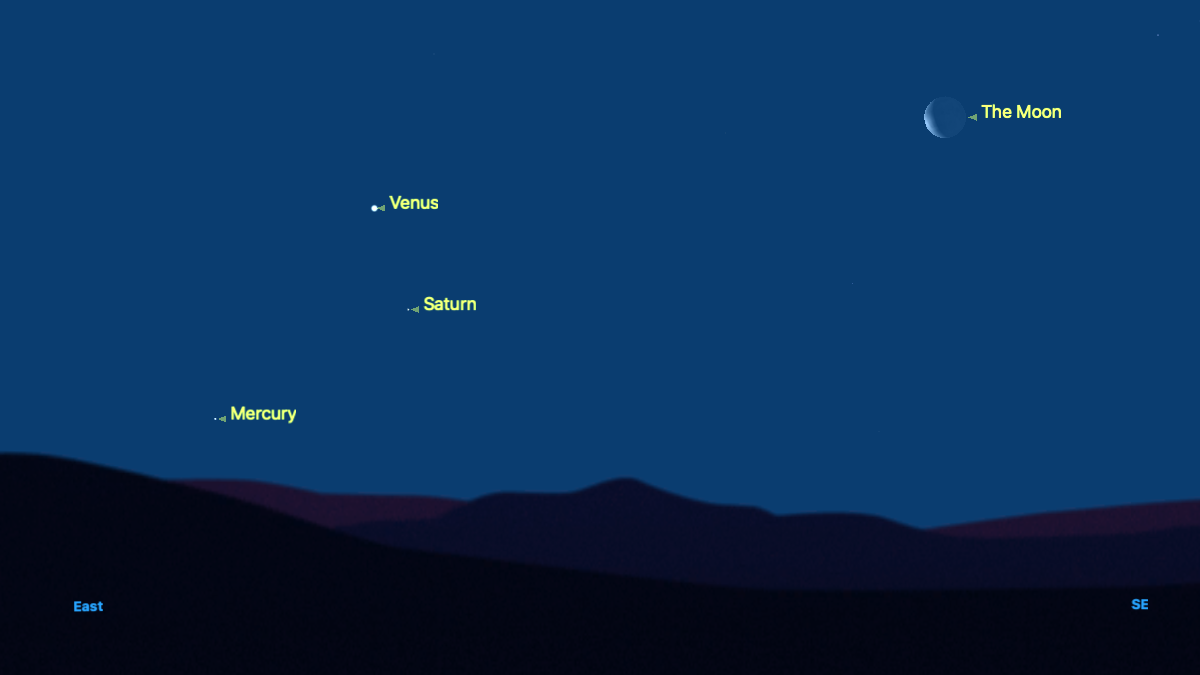
Celestial mechanics this month means that beautiful planetary views require some dedication. While for much of the year the planets have been post-sunset events, Venus and Saturn have now moved to the pre-dawn morning sky. This morning, about 45 minutes before sunrise, look to the east-southeast, and you'll see a 26% illuminated waning crescent moon to the right side of Venus, which will be shining at mag. -4.4 above the far dimmer Saturn, at mag. 1.2 — Jamie Carter
Thursday, April 24: Crescent moon, Venus and Saturn (before sunrise)
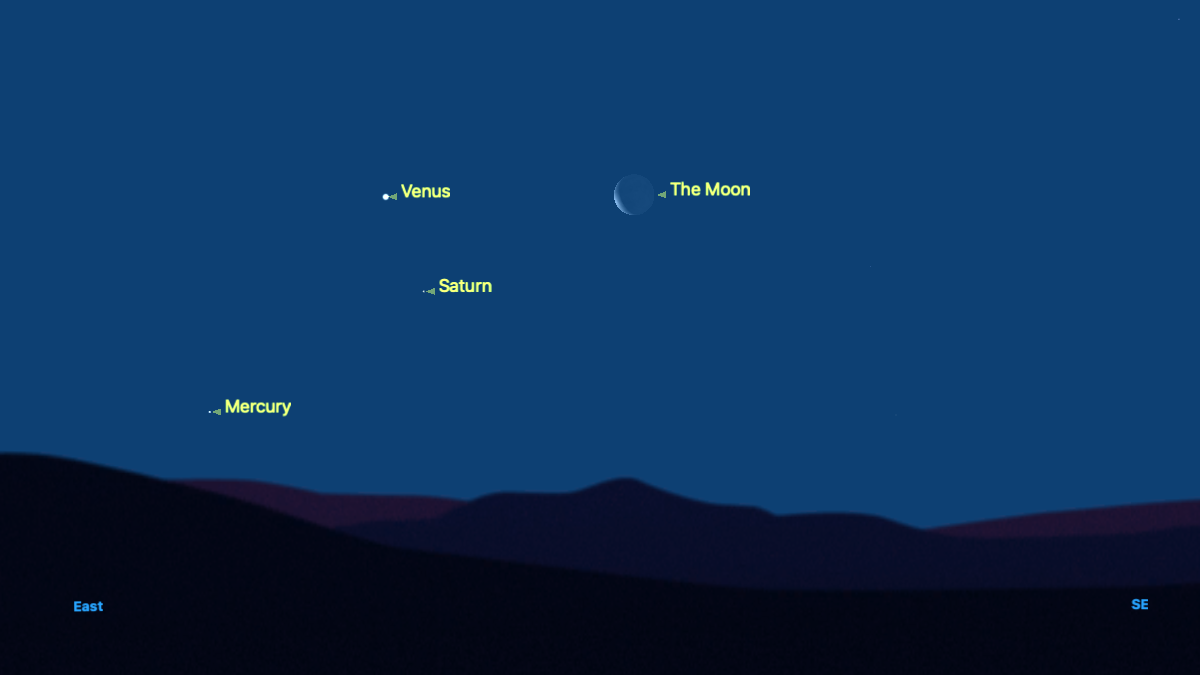
Here's another chance to see a fine conjunction of Venus and an even slimmer crescent moon. Look at the east about 45 minutes before sunrise and you'll see a 16%-illuminated waning crescent moon approaching Venus, shining at -4.4 mag. above Saturn at mag. 1.2. The three solar system bodies will form an elongated triangle on its side. — Jamie Carter
Friday, April 25: Crescent moon, Venus and Saturn (before sunrise)

If you've only got the time, energy or inclination to get up before sunrise just once this month to do astronomy, make it this morning. About 45 minutes before sunrise in the east an 8% illuminated waning crescent moon will form a tight equilateral triangle with Venus and Saturn, with no more than a couple of degrees between all three solar system bodies. It's undoubtedly the observing and astrophotography highlight of the week and, arguably, the month. Look carefully; you may see Mercury below the crescent moon, shining at mag. 0.4. — Jamie Carter
Saturday, April 26: Sirius to Jupiter (after sunset)
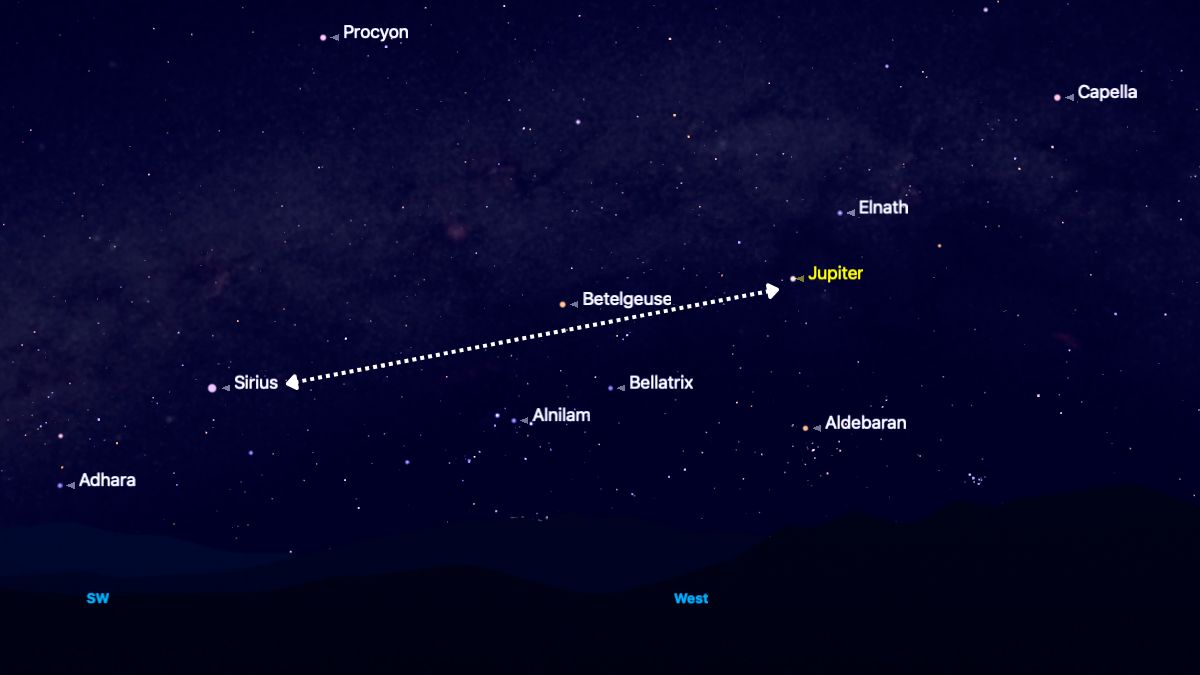
Here's an interesting bright star to bright planet hop that won't be possible in the evening sky for much longer. Be outside shortly after sunset, looking west, and you should easily be able to pick out the planet Jupiter, shining at mag. -1.9 in the constellation Taurus. To its lower left will be Betelgeuse, a mag. -0.5 reddish star directly above the unmistakable three stars of Orion's Belt. Go the same distance again toward the southwest, and you'll come to Sirius, the brightest star in the night sky at mag. -1. Its name means "lit" in Latin, but it's referred to as the "Dog Star" since it's the brightest in the constellation Canis Major, the "big dog." — Jamie Carter
Sunday, April 27: Venus at greatest brilliancy and a new 'supermoon' (before sunrise)
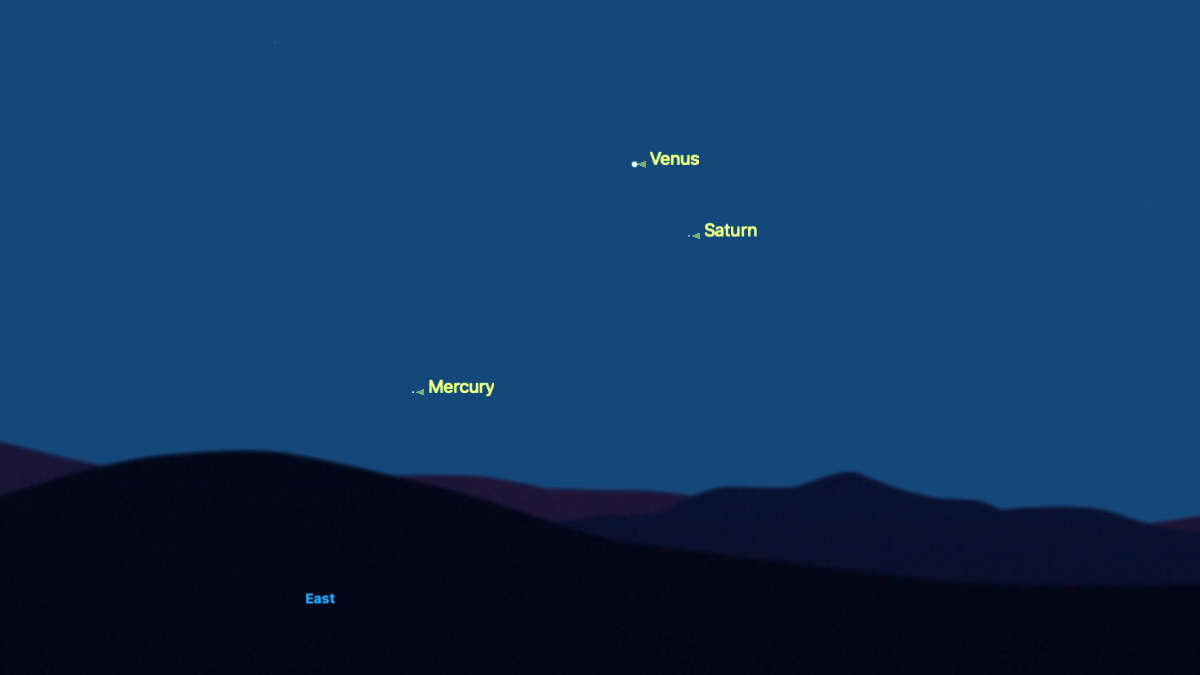
If you were wowed by Venus in the post-sunset night sky for much of the first half of 2025, prepare to be dazzled once again — but only if you get up very early. Looking east 45 minutes before sunrise will allow you to see Venus shining at a brilliant mag. -4.5, the brightest it will get its new apparition as the "Morning Star." If you have a small telescope, train it on Venus, and you'll be treated to the intriguing view of the cloudy planet as a 26%-illuminated crescent, a consequence of its position between Earth and the sun and its current closeness to Earth.
Today, we also have a new moon — when our natural satellite is roughly between Earth and the sun. A new moon is completely invisible to us unless there is a solar eclipse, as there was last month. However, there is something special about this new moon, which happens to be the closest of the year, effectively making it a "supermoon," though that colloquial name is usually more commonly used to refer only to the closest full moons of the year. — Jamie Carter
Monday, April 28: Venus and Saturn in conjunction (before sunrise) and a crescent moon and the Pleiades (after sunset)
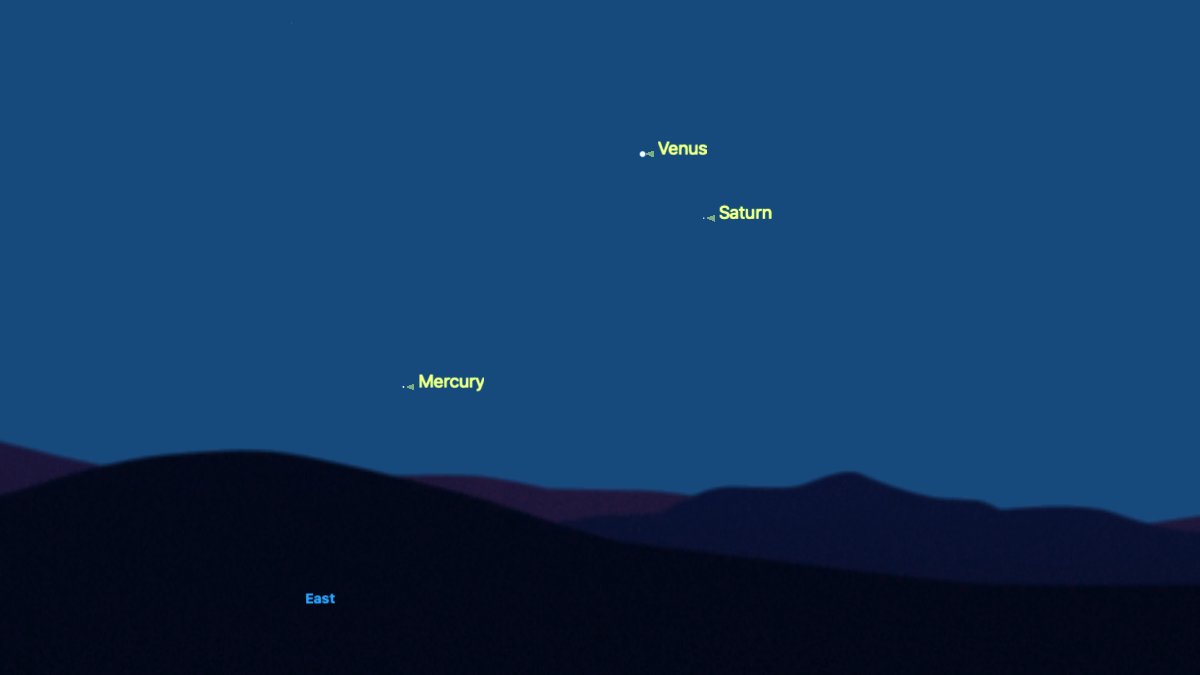
Look to your east this morning about 45 minutes before sunrise, and you'll see a beautiful planetary view. The most obvious world will be Venus, which will shine at mag. -4.4, though barely two degrees below it will be Saturn shining at mag. 1.2. That makes Venus 174 times brighter than Saturn tonight. If you're lucky, you may also see Mercury much closer to the horizon, due east.
For a bonus sight, be outside shortly after sunset, and you will stand a slim chance of seeing a very slender crescent moon just above the western horizon. Since it will be 2%-illuminated, this is going to be a challenging observation, but it is possible to see such a slim moon. Although you may be able to see it with the naked eye, a pair of binoculars will help hugely, particularly because the beautiful Pleiades open cluster of stars will be positioned just above the crescent moon. — Jamie Carter
Tuesday, April 29: Waxing crescent moon and Jupiter (after sunset)
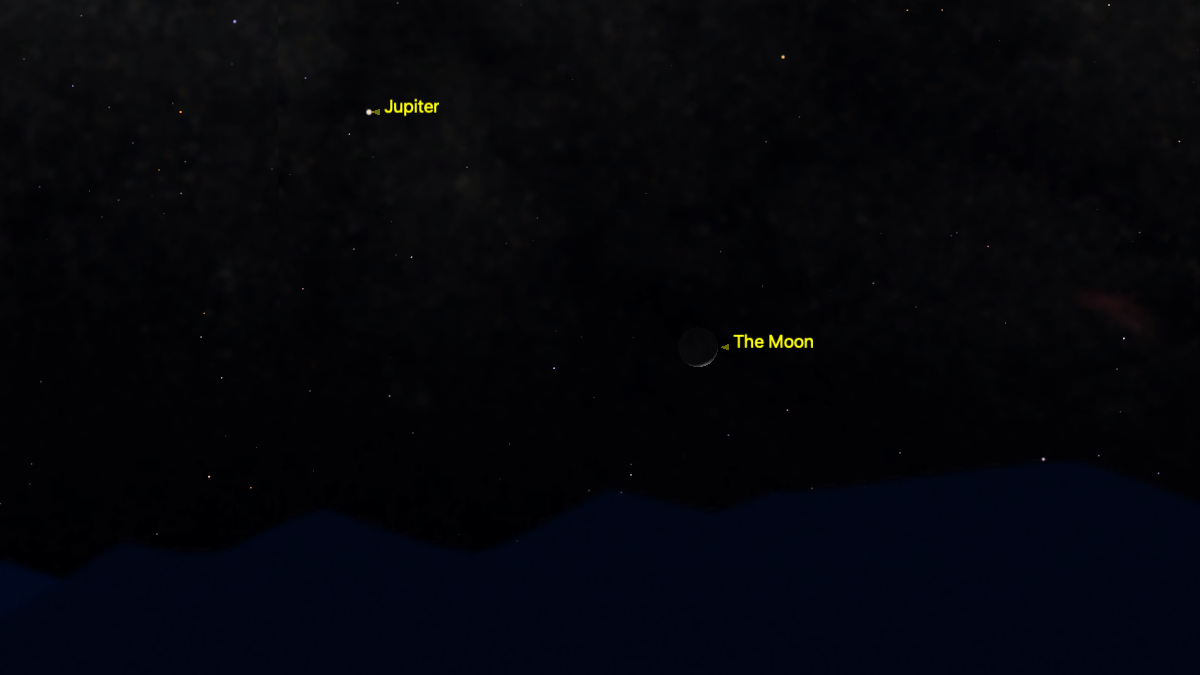
Here's the first of two successive opportunities to see the beautiful crescent moon visit the biggest planet in the solar system. Look to the western sky about 45 minutes after sunset, and you'll see a 7%-illuminated waxing crescent moon approaching Jupiter, shining at mag. 2. The two will form a triangle with red supergiant star Aldebaran below, the brightest star in the constellation Taurus, which Jupiter is currently residing within. — Jamie Carter
Wednesday, April 30: Waxing crescent moon and Jupiter (after sunset)
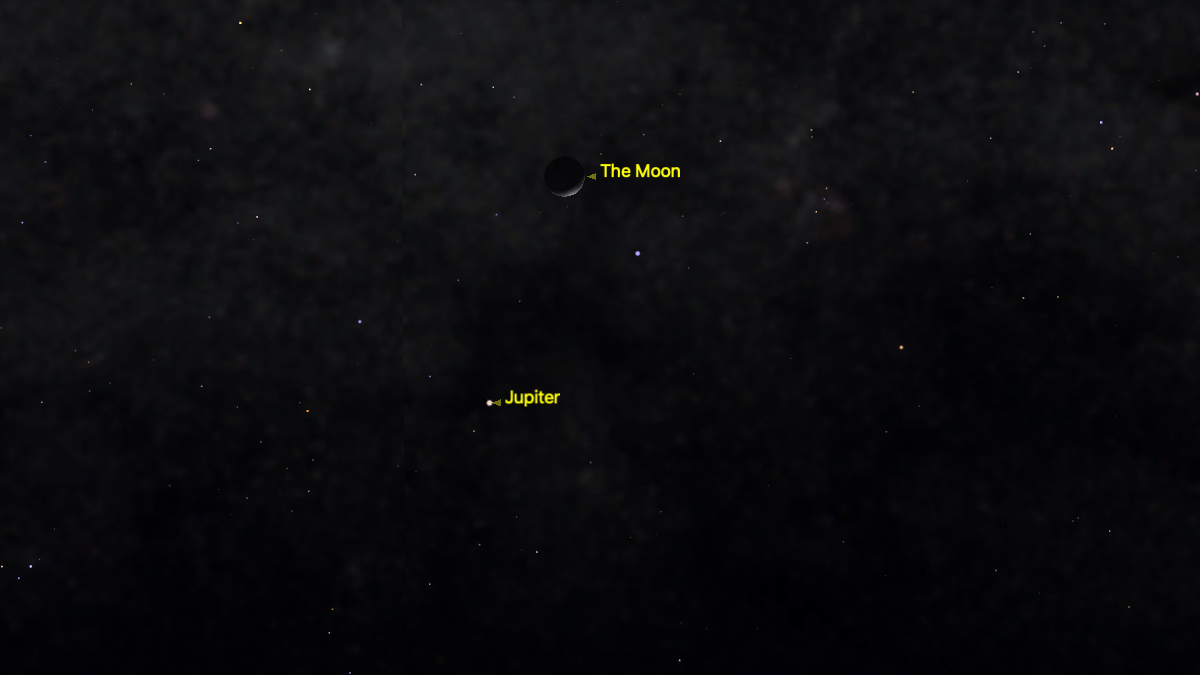
Tonight is your second chance in a row to see a waxing crescent moon shining close to bright Jupiter. This time, the moon will be 14%-illuminated and appear just above Jupiter. They'll be roughly equidistant between two bright stars, Betelgeuse in Orion to the lower left and bright Capella in Auriga to the upper right. — Jamie Carter
Thursday, May 1: Waxing crescent moon between Jupiter and Mars (after sunset)
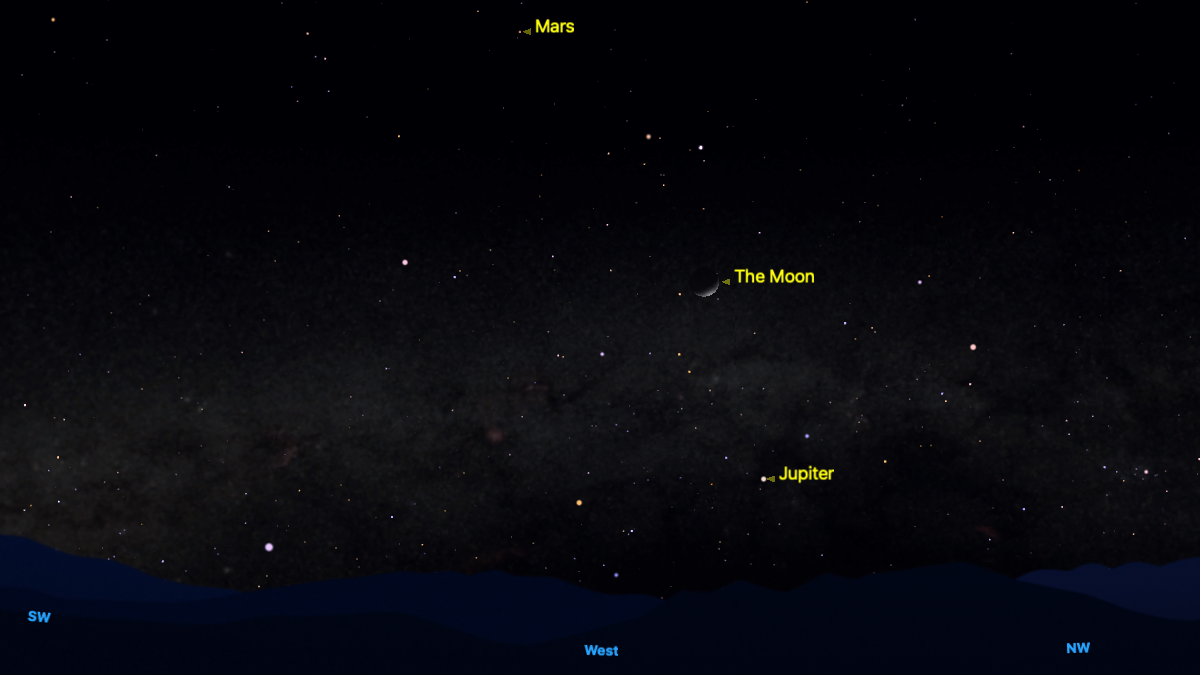
Now 24%-illuminated, the waxing crescent moon will tonight hang roughly halfway between Mars, to its upper left and Jupiter, to its lower right. Look to the western sky from about 45 minutes after sunset. — Jamie Carter
Night sky for tonight and the weekend
Friday, May 2: Waxing crescent moon, Mars and Procyon (after sunset)
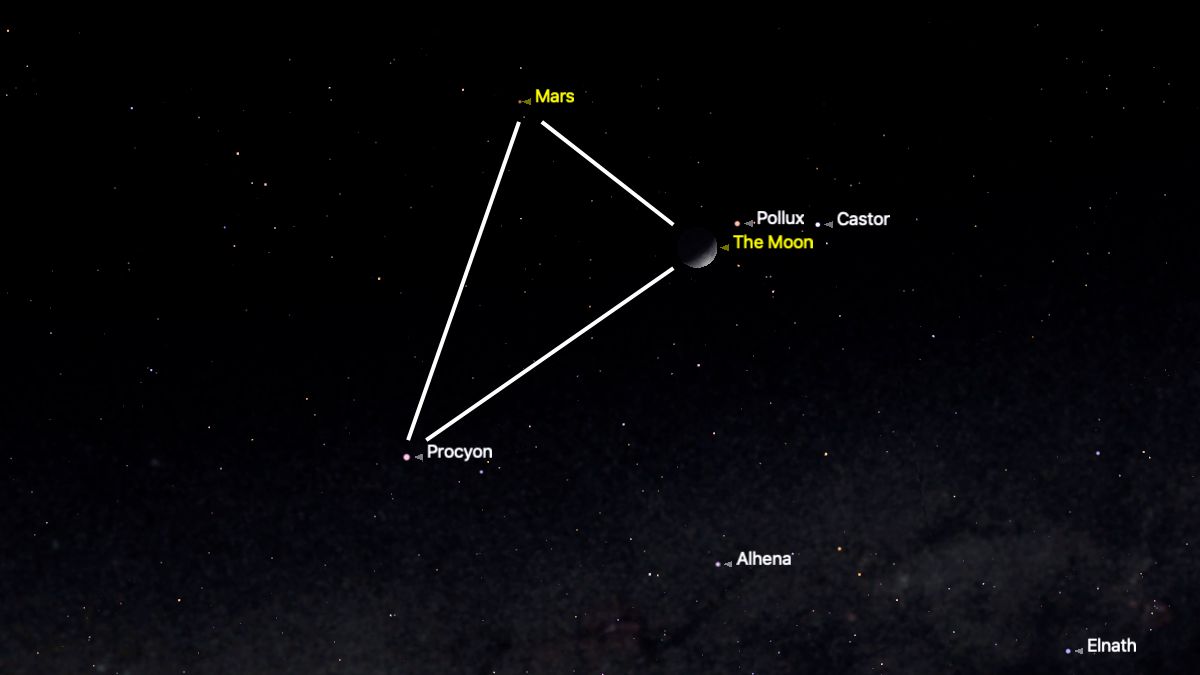
Once the moon has reached about a third-lit, it begins to become bright and less interesting to see with the naked eye. However, it's worth looking for tonight because it will form a nice triangle with a planet and a star. Now 34%-illuminated and visible from sunset until midnight, it will hang below Mars and to the upper-right of Procyon, the eighth-brightest star in the night sky and the brightest (and only notable) star in the constellation Canis Minor. — Jamie Carter
Saturday, May 3: Waxing crescent moon in conjunction with Mars (after sunset)
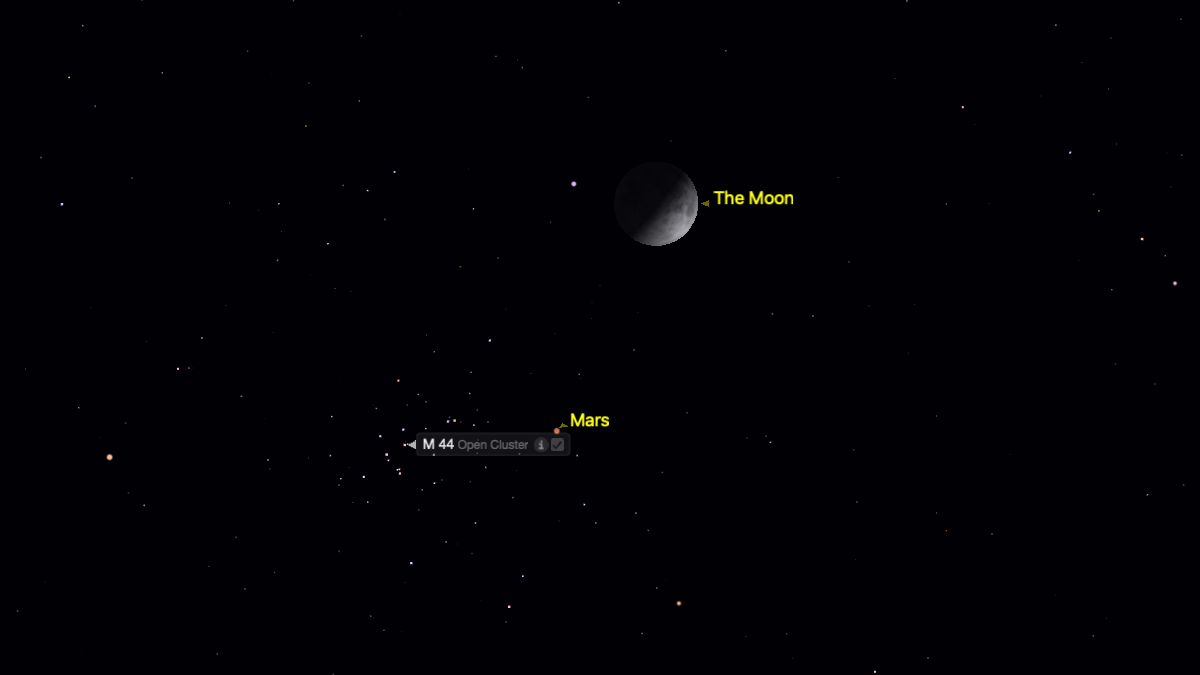
At 45%-illuminated, the moon is tonight perilously close to reaching its First Quarter phase, where its brightness begins to bleach the light sky. However, tonight, it should be a target for skywatchers as it is very close to Mars. Its exact position will depend on where you are and when you look, but from many locations, the moon will be perched just above Mars — a stunning sight! If you have a pair of binoculars, it will get even better, because Mars will be beside the stunning Beehive Cluster open cluster of stars. — Jamie Carter
Sunday, May 4: See a cosmic curve and a First Quarter Moon (after sunset)
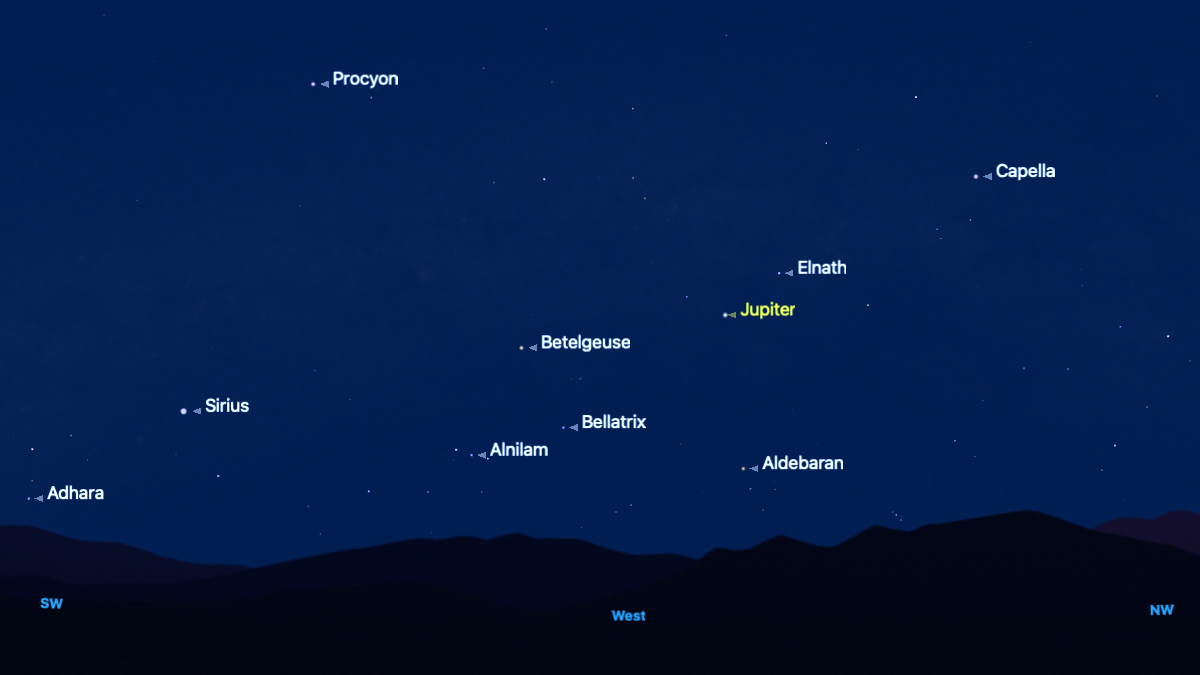
Tonight, the moon reaches its first quarter phase, which makes all but the brightest stars harder to see. So why not focus on those brightest stars? Look to the west about 45 minutes after sunset, and you'll see bright Jupiter due west. High to its right side will be bright Capella in Auriga, the "Goat Star," while to its lower left will be Betelgeuse in Orion and, closer to the horizon, Sirius in Canis Major. The four will together form a cosmic curve above the western horizon. — Jamie Carter
Tuesday, May 6: Cor Caroli (after dark)
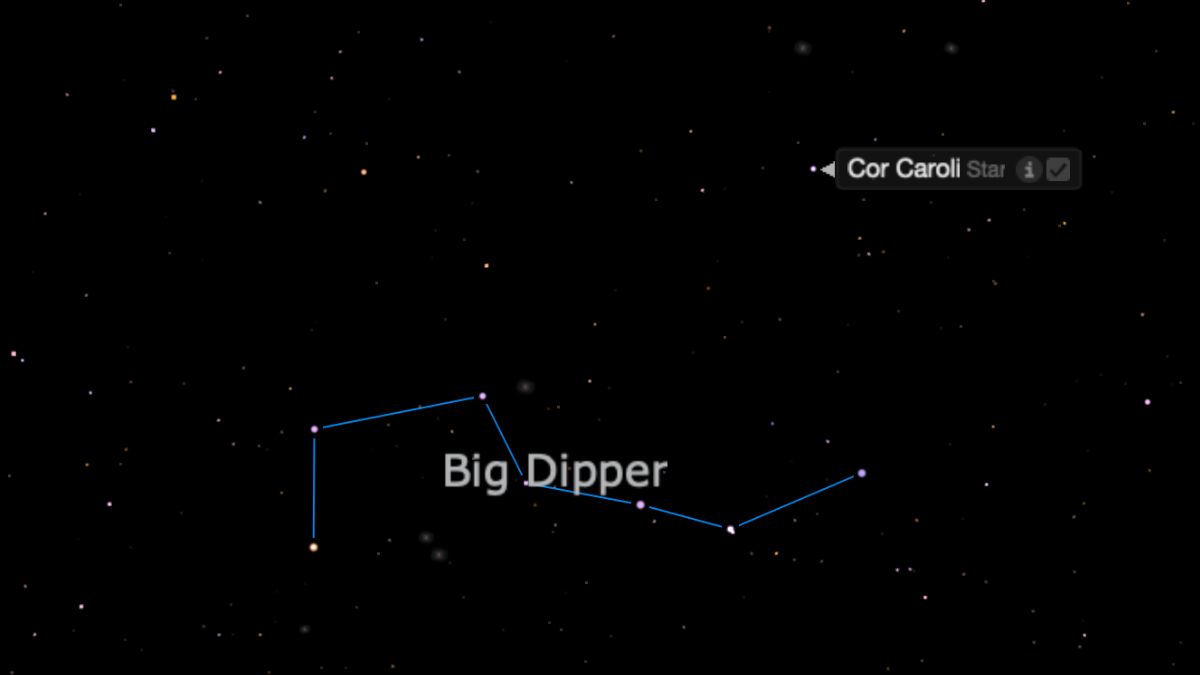
Today, it’s exactly two years since King Charles III was coronated. So why not find a star (kinda) named after him, Cor Caroli? Meaning “Charles’s Heart,” Cor Caroli is actually named after King Charles I or II — nobody is quite sure which one. Anytime after dark, look north for the Big Dipper. Find the star at the end of its handle, Alkaid, then go directly above about the same length as the handle. Part of the two-star constellation Canes Venatici, Cor Caroli is a binary star system about 110 light-years from the solar system. Tonight, it’s around a third of the way between Alkaid and the 74%-illuminated waxing gibbous moon in the east. — Jamie Carter
Wednesday, May 7: Corvus constellation (after dark)
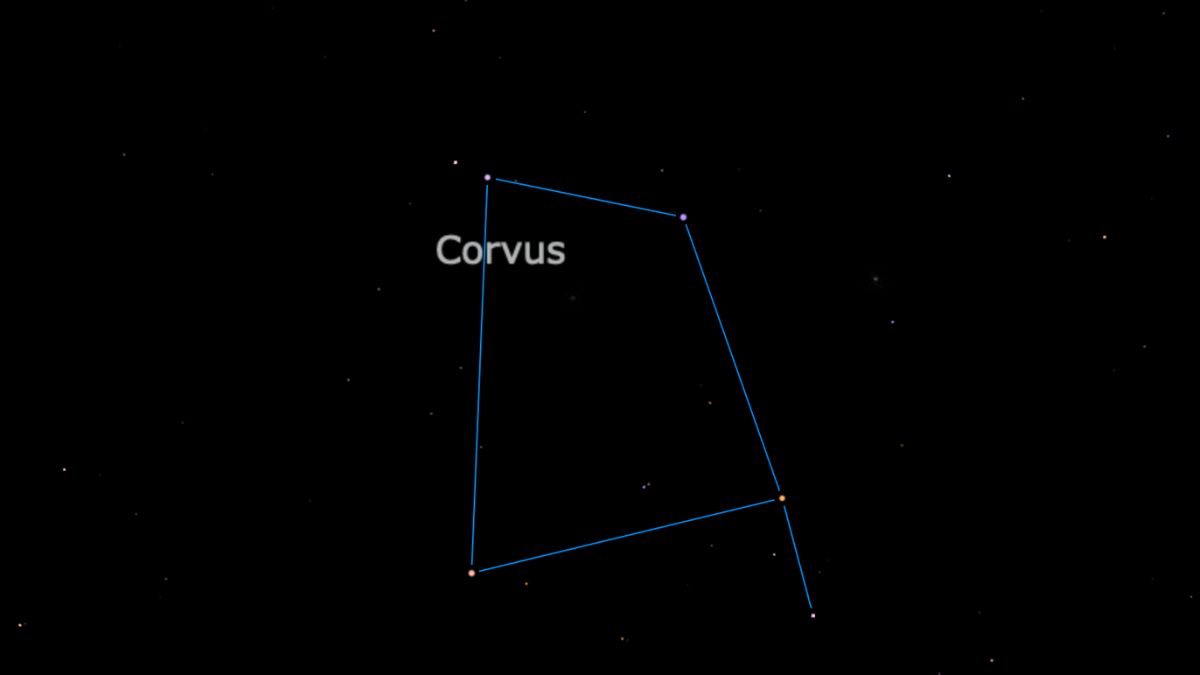
It’s one of the official 88 constellations, and it’s easy to see in the night sky, so why is the kite-shaped constellation Corvus “The Crow” so little known? In the southern sky immediately after dark and below the 82%-illuminated waxing gibbous moon, its five main constituent stars — Gienah, Kraz, Algorab, Minkar and Alchiba — should be relatively easy to find just to the right of bright star Spica. If not, come back in a week when the moon will be out of the sky. — Jamie Carter
Thursday, May 8: Arcturus and Boötes constellation (after dark)
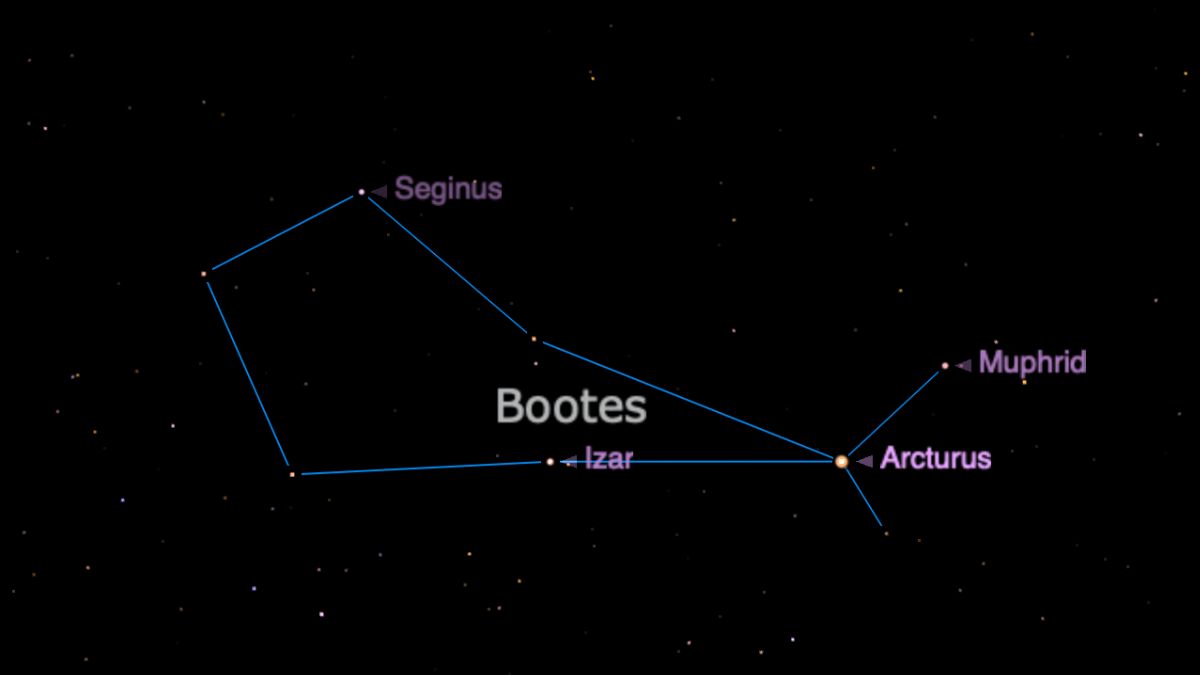
If you're going to be a stargazer and navigate the night sky, you need to know about Arcturus. A red giant star 37 light-years from the solar system is easy to find — and not just because it's the fourth-brightest star in the night sky. Just follow the stars of the Big Dipper's handle to go in an "arc to Arcturus" in the east, towards — but not as far as — the 89%-illuminated waxing gibbous moon in the southeast. The constellation that Arcturus is part of, Boötes "The Herdsman," is to the left of the star. Given that the Big Dipper is part of the constellation Ursa Major, "The Great Bear," it's perhaps not surprising that Arcturus means "Guardian of the Bear." — Jamie Carter
Night sky for tonight and the weekend.
Friday, May 9: Waxing gibbous moon and Spica (after sunset)
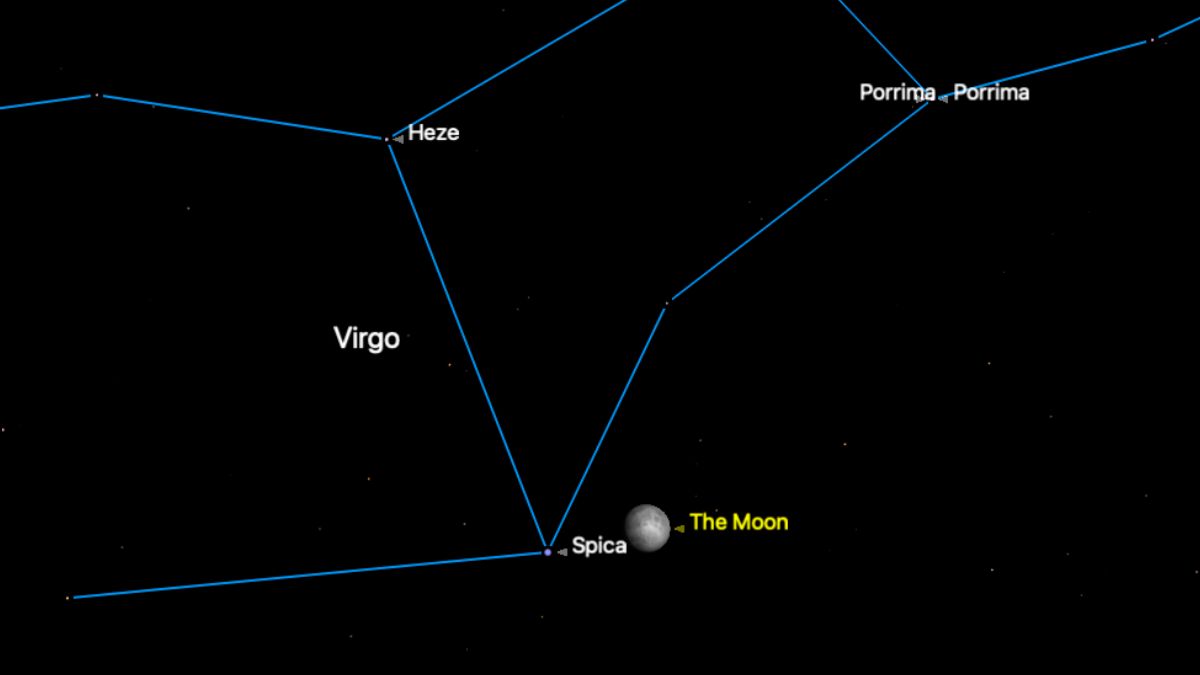
A full moon is coming, but before it arrives, our natural satellite will pass closely to another key bright star of the spring night sky in the Northern Hemisphere. About 94%-illuminated, the waxing gibbous moon will sit about half a degree (less than the width of your little finger held at arm's length) from Spica, which may appear as one point of light but is actually the combined light of two blue giant stars in a binary star system. It's about 250 light-years from the solar system. The moon will be easy to see in the southeast even before sunset, with Spica appearing on its lower left during twilight. — Jamie Carter
Saturday, May 10: Moon in the day (before sunset)
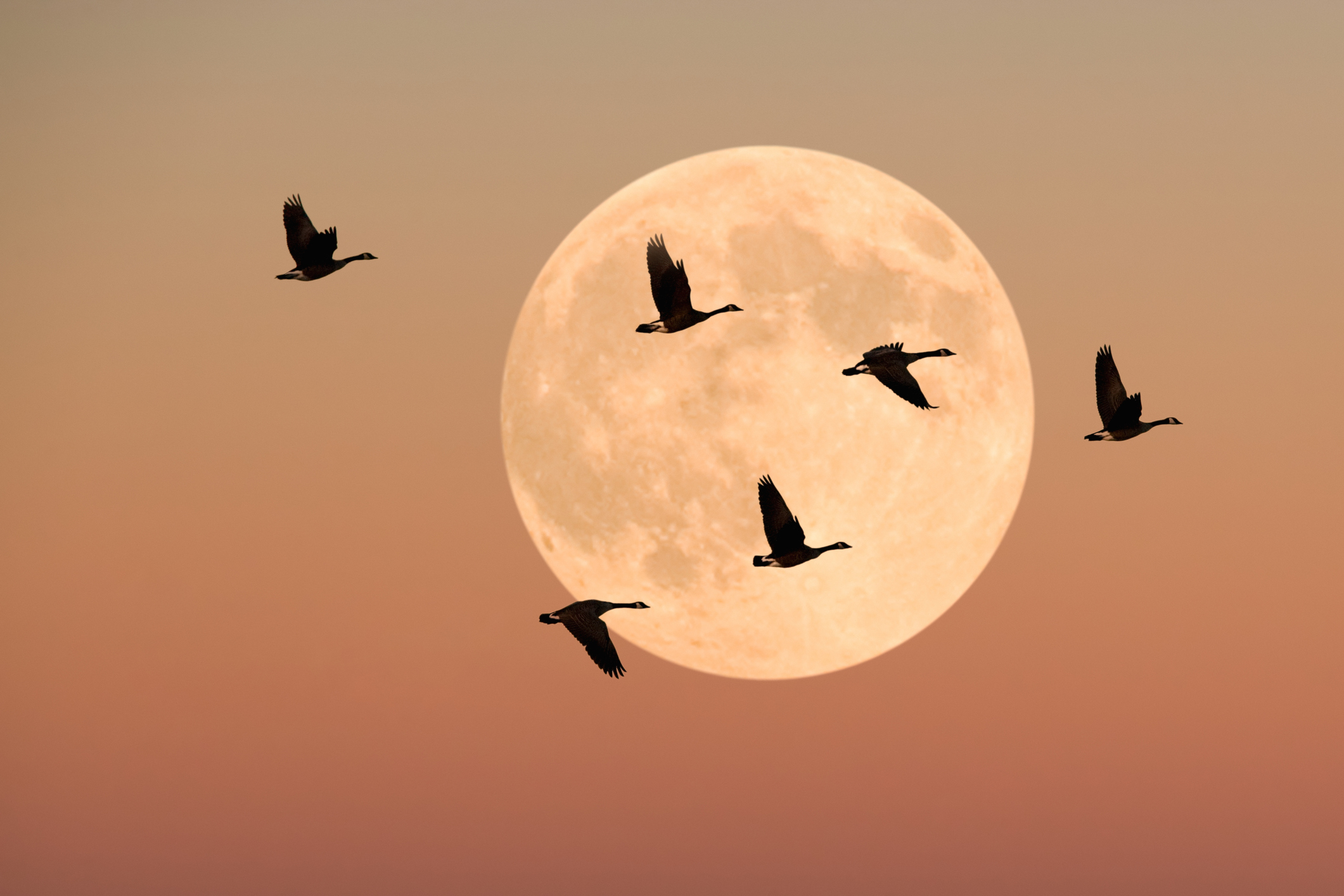
It may be 400,000 times less bright than the sun, but it's often very easy to see the moon during the day. At first quarter, it rises at noon and sets at midnight, while at full moon a week later it rises at sunset and sets at sunrise. In between, it's big, bright, and high in the southeast all afternoon. Today, it will become very obvious in the east about an hour before sunset in the west, and dominate the dusk. — Jamie Carter
Sunday, May 11: The moon's seas (dusk onwards)
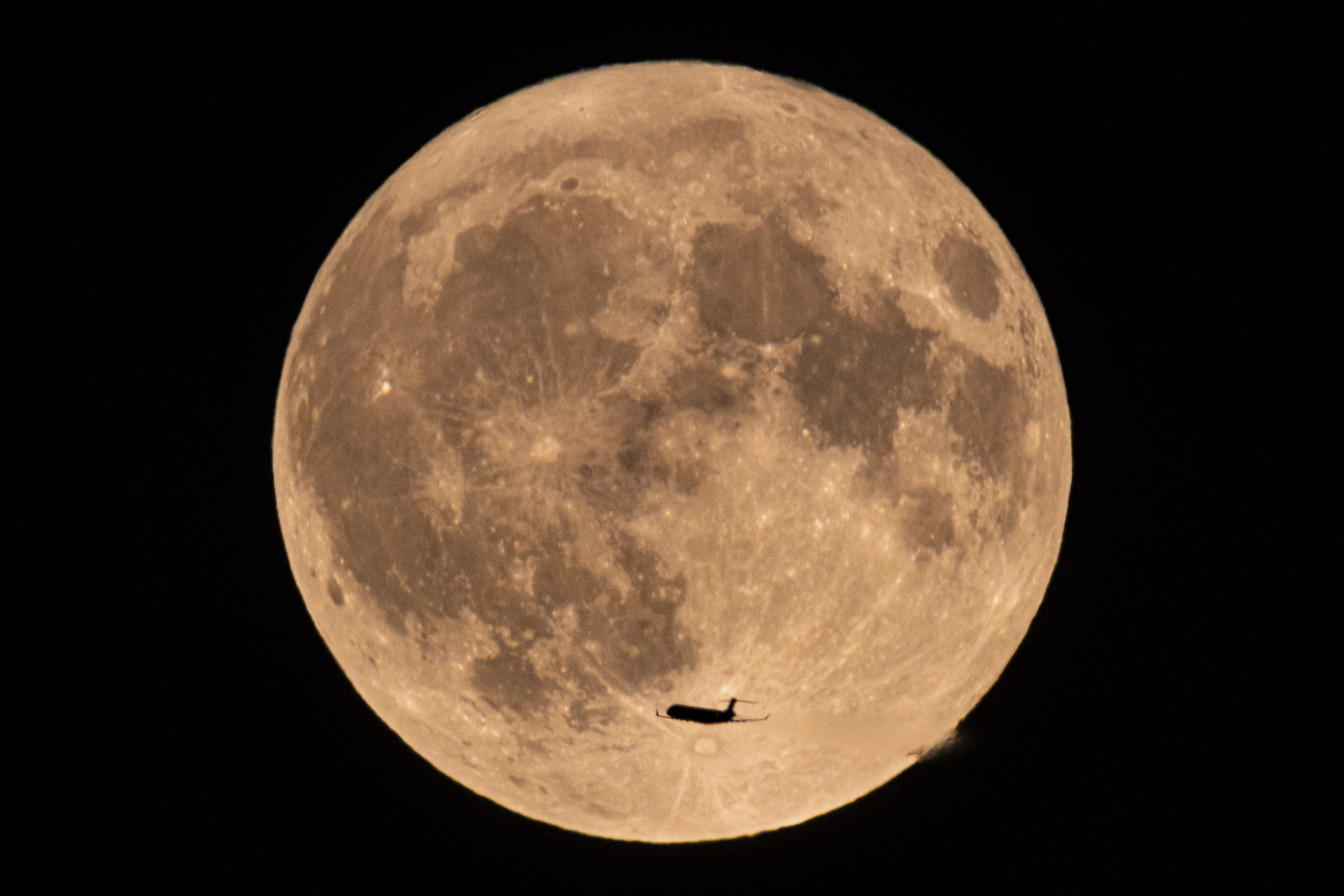
Expert moon watchers will tell you not to look at the moon only when it's full or near-full, as it is tonight at 99.5% illuminated. That's true — studying features along the terminator, the dividing line between light and shadow, is the way to go — but looking at the entire Earth-facing side does give you a sense of lunar geography. The most prominent feature is its many maria — seas of ancient lava. Lava flows formed these darker areas on the lunar surface during its formation. It's also worth considering that the moon looks "upside down" when viewed from the Southern Hemisphere, where the moon — which roughly follows the sun's path through the sky — appears in the northern sky. — Jamie Carter
Monday, May 12: Full 'Flower Moon' rising (dusk)
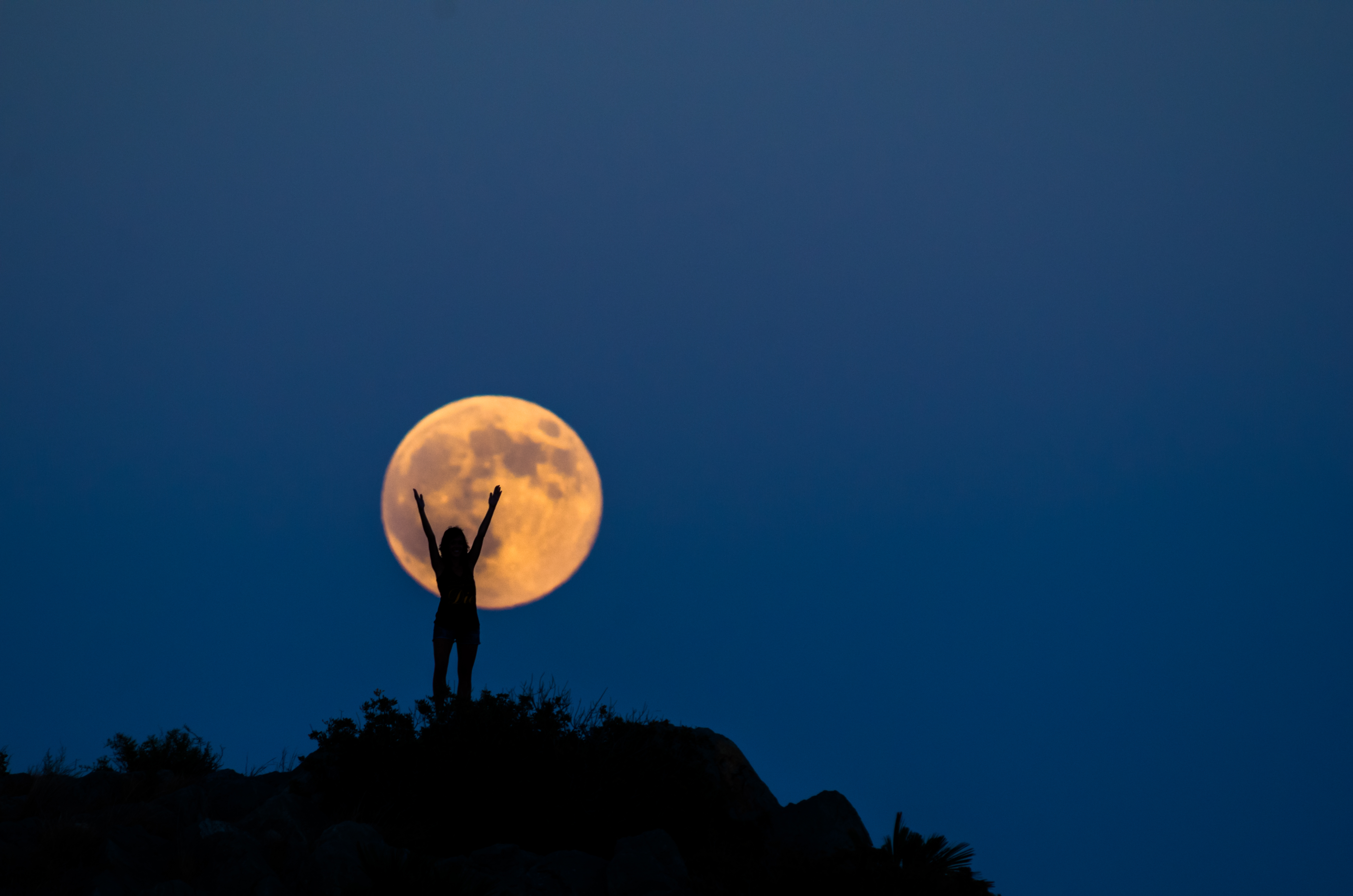
At 11:56 a.m. EDT today, 100% of the moon will be illuminated by the sun — a full moon. The best time to watch May's "Flower Moon" will be moonrise where you are (which is specific to your location), where you can watch it come up from beneath the southeastern horizon. Thanks to Raleigh scattering, there's a short period of about 15 minutes where a full moon is a muted orange, then pale yellow. It's a great time to look at the moon with your naked eyes or a pair of binoculars. Once it's risen high into the sky, it will quickly become too bright to look at comfortably. — Jamie Carter
Tuesday, May 13: Waning gibbous moon and Antares (after dark)

Tonight, the moon meets the "rival of Mars." The now 94%-illuminated waning gibbous moon will rise a couple of hours after sunset, again appearing in the south just a third of a degree (less than the width of your little finger held at arm's length) from red supergiant star Antares in the constellation Scorpius, "the Scorpion." Look for Antares to the left of the moon. Its name translates to "rival of Ares" (Ares means Mars), not only because of its reddish color but also because it sits close to the ecliptic, so the red planet passes close to it every few years. About 550 light-years from the solar system, Antares has another nickname — the "Scorpion's Heart." — Jamie Carter
Wednesday, May 14: Mare Crisium on the moon (after dark)
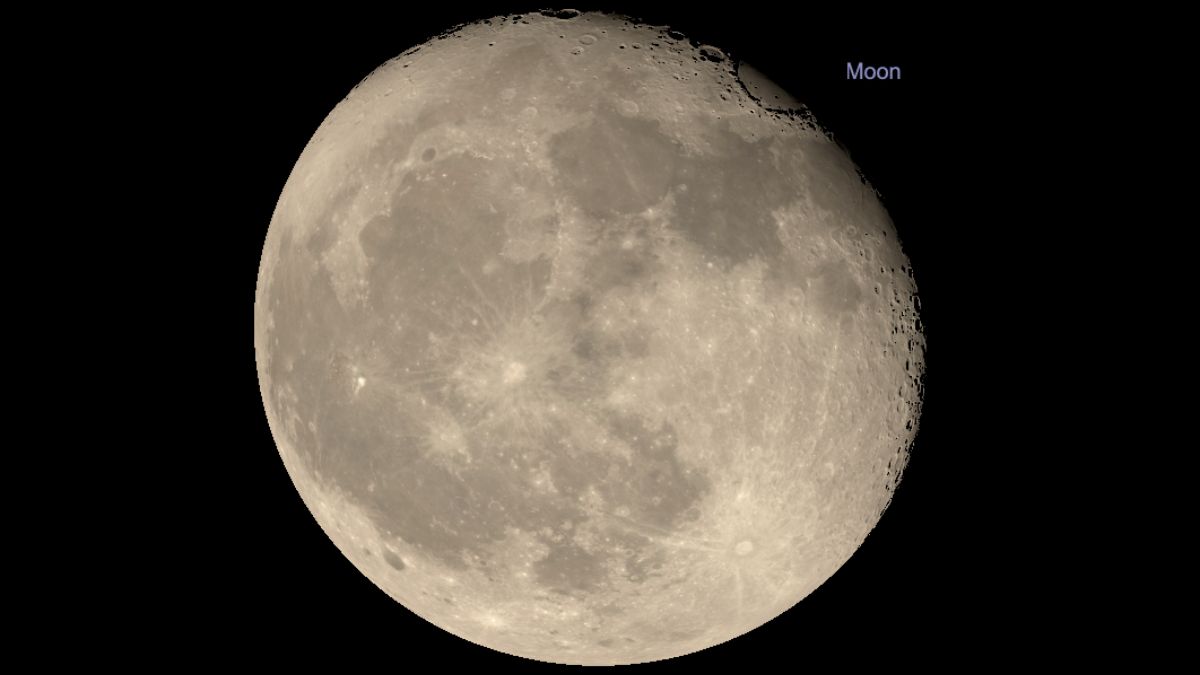
Tonight, a 94% waning gibbous moon will rise in the east a couple of hours after sunset, which is a great time to get outside and watch a moonrise. Once it's up, you'll see that the top-right of the moon, as we look at it from the Northern Hemisphere, is in darkness, with the terminator — which separates day and night on the moon — slicing through some interesting terrain. The shadows will make it relatively easy to see Mare Crisium, the "sea of crises," as well as some obvious craters along the top of the moon. Binoculars will give you a tremendous view.
Related: Moon viewing guide: What to look for on the lunar surface
Thursday, May 15: Spring Triangle and Mars (after dark)
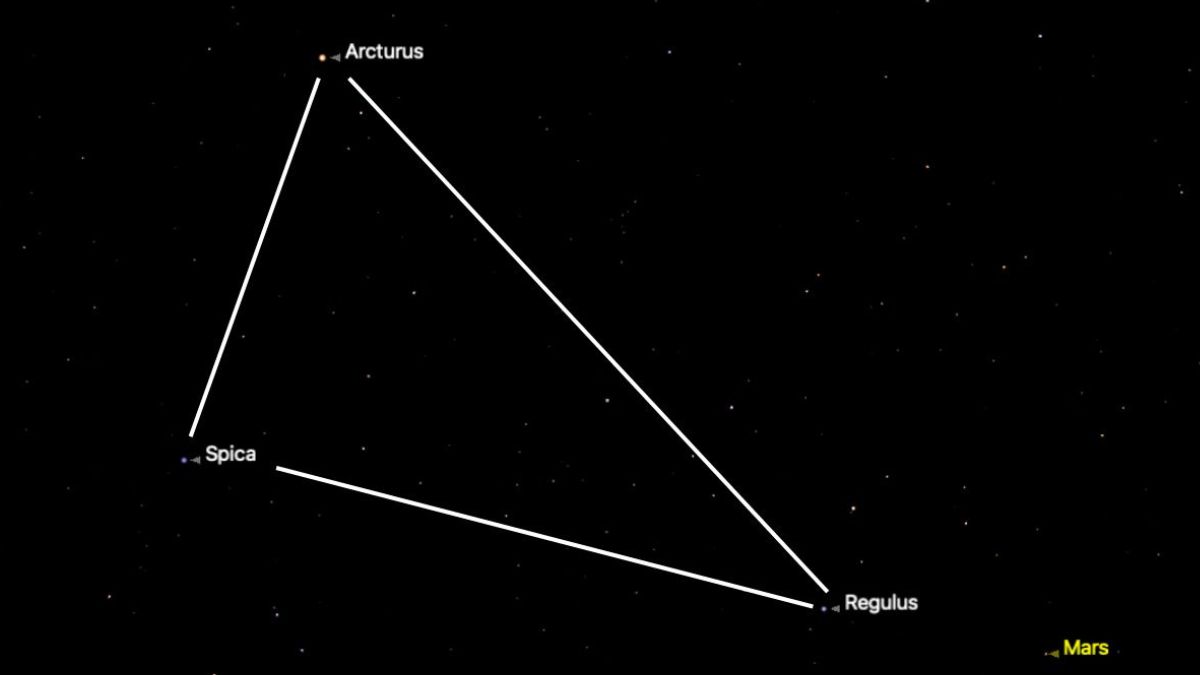
With the waning gibbous moon now 89%-illuminated and rising about three hours after sunset, it's a good time to find a seasonal shape of stars now prominent in the southwest right after dark. The three constituent stars are Arcturus, Spica and Regulus in the constellations Boötes, Virgo and Leo, respectively. Arcturus will be on the left, with Spica below, and Regulus off to the right. Just beyond Regulus will be Mars. — Jamie Carter
Night sky for tonight and the weekend.
Friday, May 16: The Little Dipper (after dark)
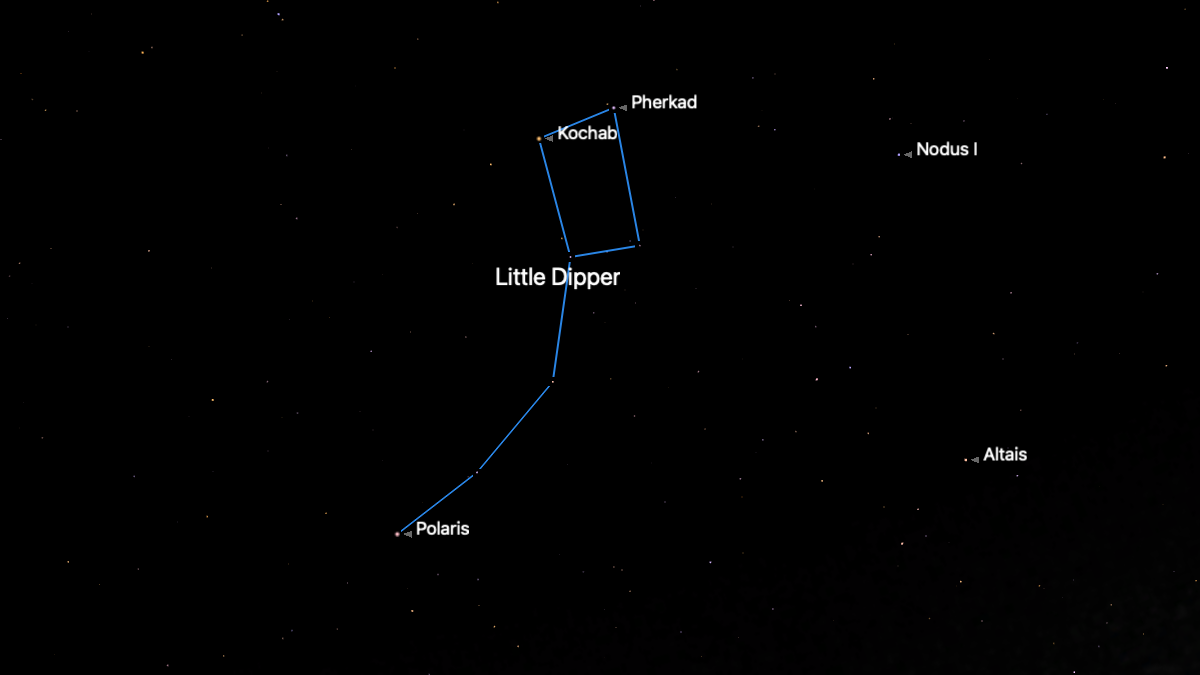
It's faint and requires dark skies and patience to find, but Ursa Minor, "The Little Bear" — also known as the Little Dipper — contains one of the most famous stars in the Northern Hemisphere's night sky. Ursa Minor is a circumpolar constellation, appearing to go round and round all night. There's a reason for that. At the tip of its handle is Polaris, the North Star, which Earth's northern axis points at. At the end of its bowl are Kochab and Pherkad, two stars known as the "Guardians of the Pole." The precession of Earth means that Kochab used to be close to the North Celestial Pole around 1800-1200 BCE, and will be again around 24,000 CE. — Jamie Carter
Saturday, May 17: The Summer Triangle returns (after sunset)
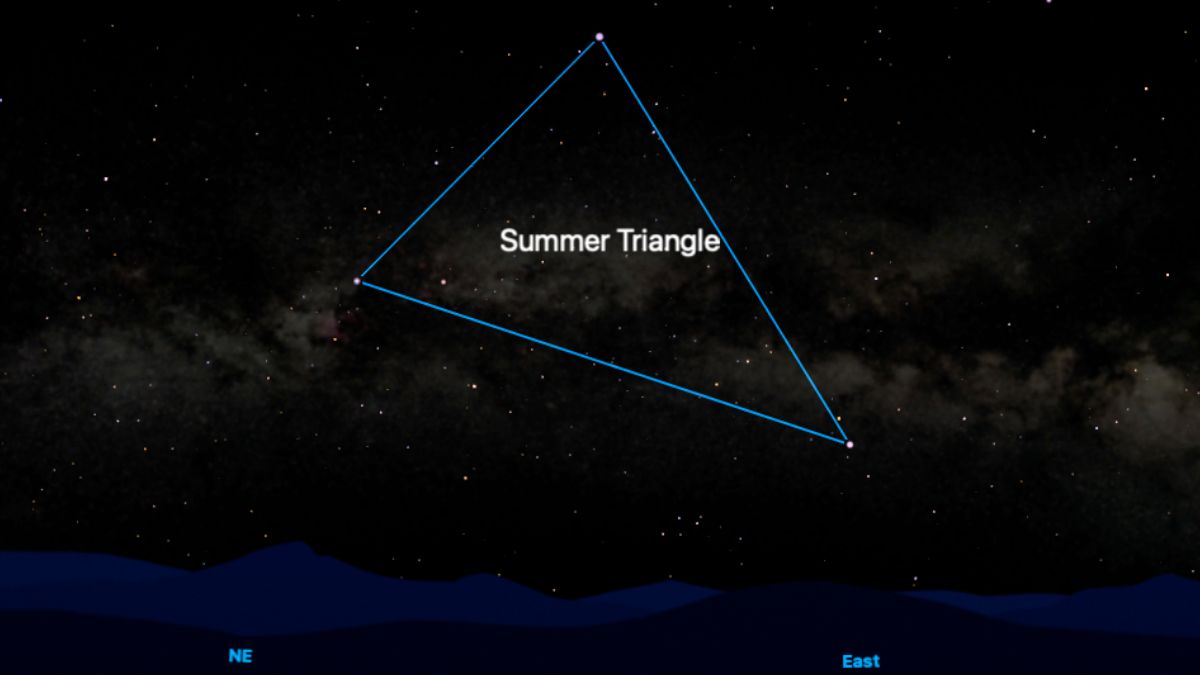
Here comes perhaps the ultimate celestial signpost for stargazers each summer in the Northern Hemisphere. Look to the east a couple of hours after sunset, and you'll see, rising on its side, the glorious sight of the Summer Triangle stars. Why glorious? The Milky Way flows through this asterism (informal shape of stars) tonight as a horizontal band streaming from Deneb on the left to Altair on the right. Above is Vega. This asterism is also a study of how the brightness of stars isn't always indicative of how close they are. For example, Altair and Vega are 17 and 27 light-years distant, respectively, while Deneb is a mighty 1,500 light-years away. It's the farthest bright star. A blue-white supergiant about 200 times larger than the sun, Deneb is one of the biggest stars we know of. — Jamie Carter
Sunday, May 18: Hercules constellation (after dark)
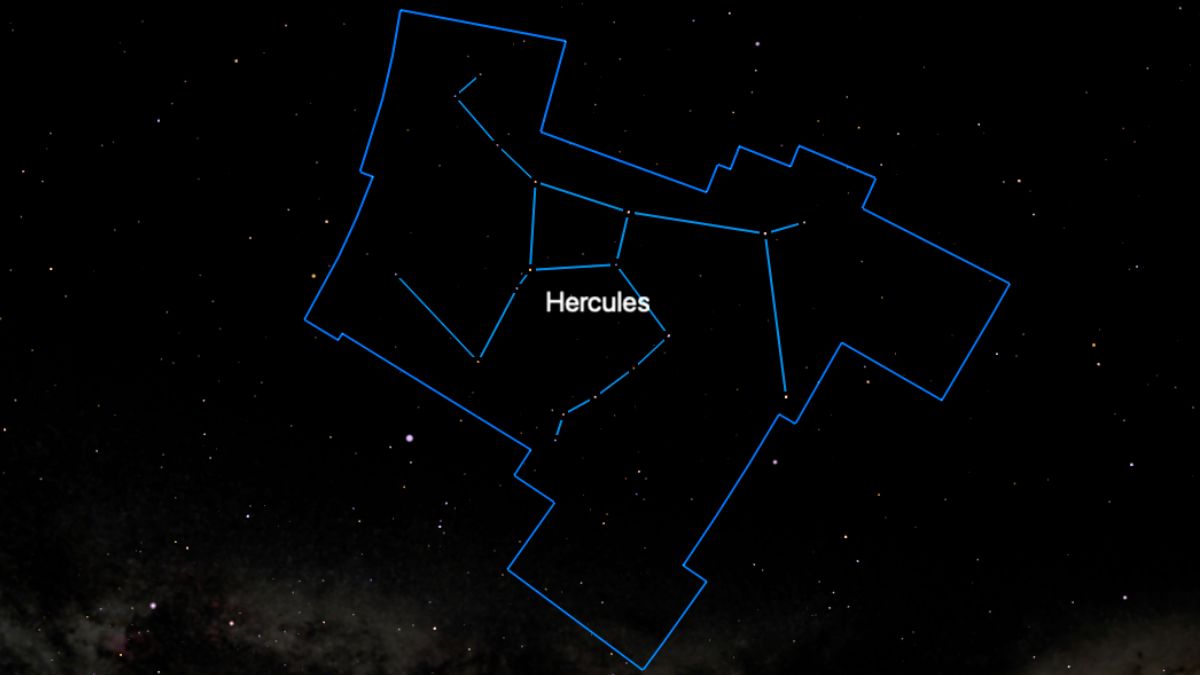
Go outside a couple of hours after dark, armed with some patience, and you'll have a chance to see one of the most famous constellations. However, the Hercules constellation is fainter than you might think. The core of the spider-like figure is a lopsided square of four stars known as the keystone. You'll find it by first locating bright star Vega above the east (the highest star in the Summer Triangle) and Arcturus high in the south, which you can do by going "arc to Arcturus" using the curve of stars in the handle of the Big Dipper. The keystone stars are about a third of the way along that line, closest to Vega. Within the square is M13, the "Great Globular Cluster" in Hercules — over 100,000 ancient stars orbiting in the Milky Way's halo. — Jamie Carter
Monday, May 19: Crown of the Scorpion (after dark)
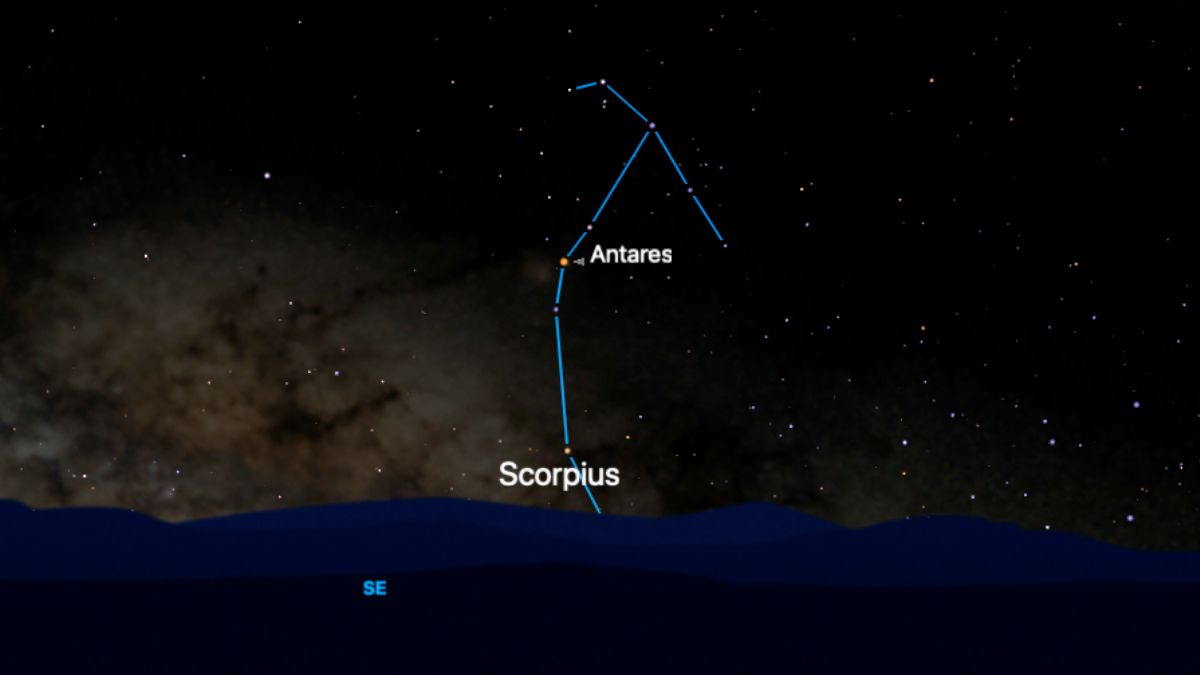
With the waning gibbous moon rising just before midnight, you'll have most of the evening to find the summer constellation Scorpius, which the moon visited last week. Wait for Antares to appear in the southeast about two hours after sunset, then look above the red supergiant star for three bluish stars that trace the claws of the scorpion — Jaabbah (top), Acrab and Dschubba. These three stars are also known as the "Crown of the Scorpion." — Jamie Carter
Tuesday, May 20: Last quarter moon (midnight)
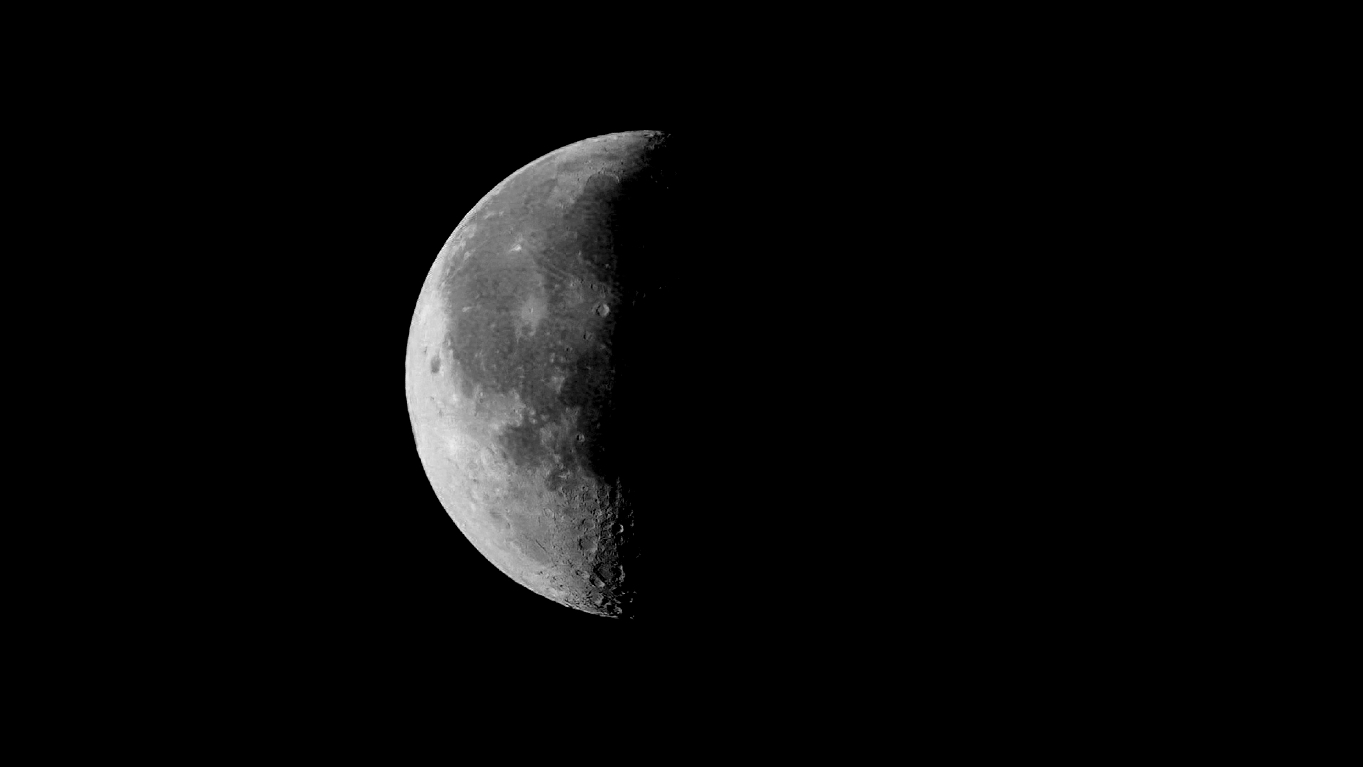
You'll see thousands of images of the full moon and the half-lit first-quarter moon, but what about the "other" side? Images of the last quarter moon are rarer because it rises at midnight and sets at noon, as opposed to the first quarter moon, which rises at midday — and is already 'up' during twilight — and sets at midnight. Look for features on the westward face of the moon along the terminator (the line between light and shadow) including the Mare Imbrium (Sea of Rains) at the top, the large Ptolemaic crater in the center and the Montes Apenninus mountain range, the latter looking like a line of 'bubbles' at the bottom. — Jamie Carter







